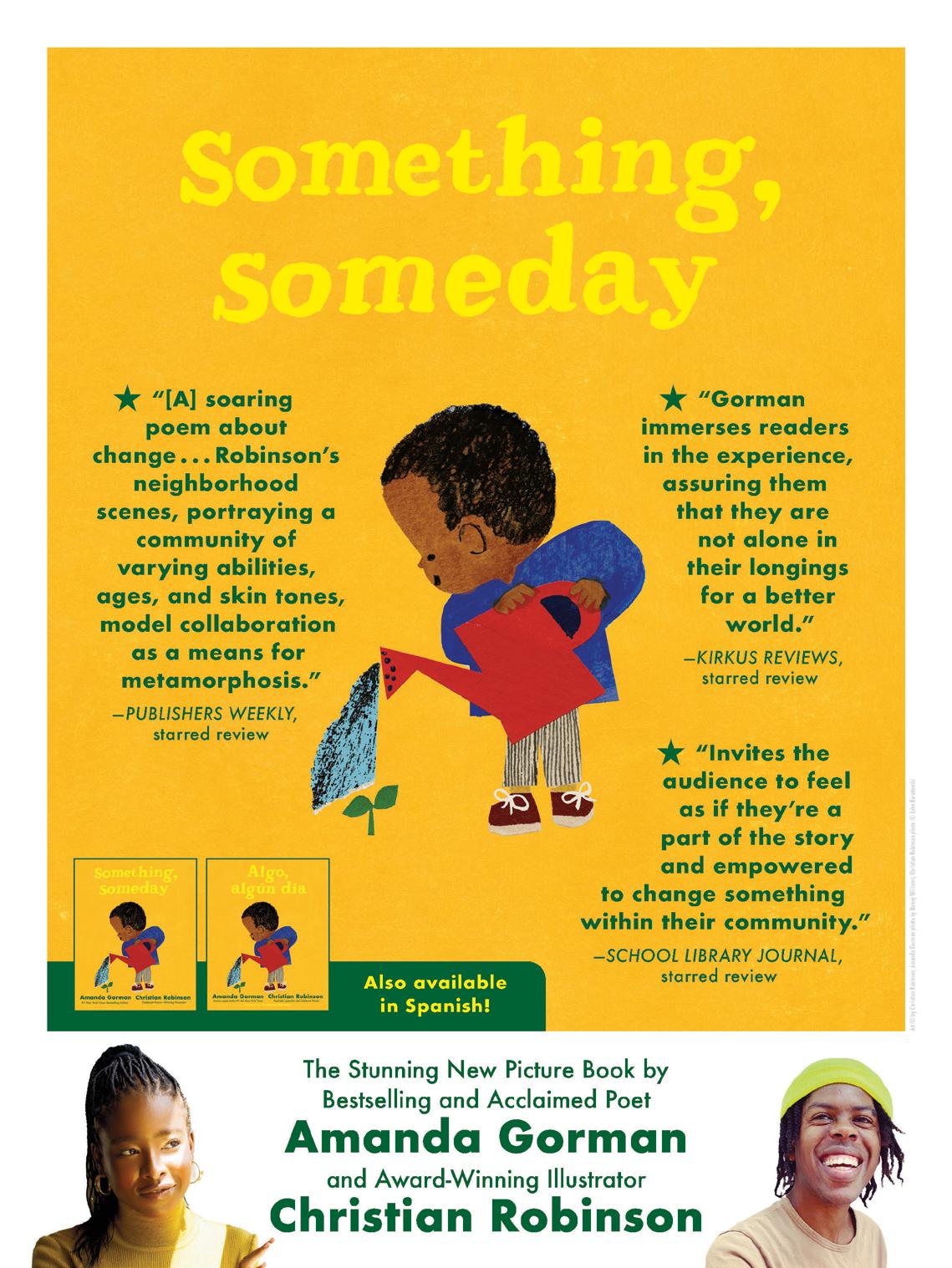








WITH ALL THE new releases that descend on bookstores like a tsunami each fall, it’s easy to forget just how many worthy older books never see the light of day. Some are works from abroad that don’t find a U.S. publisher; others are works by established authors that, for various reasons, haven’t ended up in print. When and if they finally do, it feels like an unexpected gift from the literary gods, sparking the same sense of discovery that comes with a promising debut. As novelist/bookseller Anne Patchett says in a popular video series highlighting backlist titles for the Parnassus Books TikTok account, “If you haven’t read this book, it’s new to you.”
I’m thinking, for example, of A Manual for Cleaning Women by Lucia Berlin. Berlin’s piercing
autobiographical stories were published by small presses in the 1970s, ’80s, and ’90s but later fell out of print; their second life in this 2018 volume was a revelation for contemporary readers. (Our starred review called it a “testament to a writer whose explorations of society’s rougher corners deserve wider attention.”) Books by Kathleen Collins, Rachel Ingalls, and Uwe Johnson published in recent years offered similar epiphanies. The fall season brings more such works; here are three we’re especially excited to dive into:
Sing a Black Girl’s Song: The Unpublished Work of Ntozake Shange , edited by Imani Perry (Legacy Lit/ Hachette, Sept. 12): Shange, who died in 2018, is best known for her 1976 stage play (or, as she called it,

Frequently Asked Questions: www.kirkusreviews.com/about/faq
Fully Booked Podcast: www.kirkusreviews.com/podcast/
Advertising Opportunities: www.kirkusreviews.com/book-marketing

Submission Guidelines: www.kirkusreviews.com/about/publisher-submission-guidelines
Subscriptions: www.kirkusreviews.com/magazine/subscription
Newsletters: www.kirkusreviews.com

For customer service or subscription questions, please call 1-800-316-9361
“choreopoem”), for colored girls who have considered suicide/ when the rainbow is enuf, which is regularly performed by local theaters and schools throughout the U.S. and recently had an inspiring revival on Broadway. For this volume, the National Book Award–winning author of South to America scoured the archives to bring us essays, poems, short stories, and plays from this vital writer whose work deserves a wider readership. “The literary value of these works extends far beyond the insight they offer into Shange’s life and artistic career,” says our starred review.
The Children’s Bach by Helen Garner (Pantheon, Oct. 10): This 1984 novel is considered by many critics to be the crowning achievement of an 80-year-old Australian writer too little known in this country (but revered by its writers). The release of a new U.S. edition, with an introduction by Rumaan Alam (Leave the World Behind), could reintroduce American readers
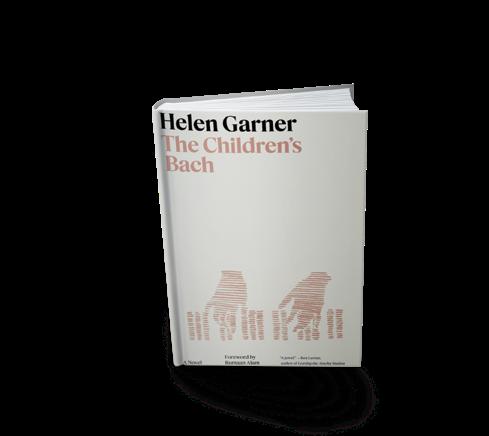
to this brutally honest and elusive observer. Our starred review calls it “[b]rilliantly constructed and puzzling in a good way, the way that even our own lives can be puzzling to us.” (Garner’s 2014 nonfiction book, This House of Grief: The Story of a Murder Trial, is also being published here next month.)
So Many People, Mariana by Maria Judite de Carvalho, trans. by Margaret Jull Costa (Two Lines Press, Oct. 10): De Carvalho (1921-1998) is now recognized as one of the most important Portuguese writers of the 20th century (it’s no coincidence that so many of these rediscoveries are women and people of color, whose work was too readily discounted). In a starred review, our critic praises these “[e]legant stories full of a dry and subtle wit, intricately observed scenes, and a full range of emotion.”



Co-Chairman
HERBERT SIMON
Publisher & CEO
MEG LABORDE KUEHN mkuehn@kirkus.com
Chief Marketing Officer
SARAH KALINA skalina@kirkus.com
Publisher Advertising & Promotions
RACHEL WEASE rwease@kirkus.com
Indie Advertising & Promotions
AMY BAIRD abaird@kirkus.com
Author Consultant RY PICKARD rpickard@kirkus.com
Lead Designer
KY NOVAK knovak@kirkus.com
Social Media Coordinator
SEYANNA BARRETT
Kirkus Editorial Senior Production Editor ROBIN O’DELL rodell@kirkus.com
Kirkus Editorial Senior Production Editor
MARINNA CASTILLEJA mcastilleja@kirkus.com
Kirkus Editorial Production Editor ASHLEY LITTLE alittle@kirkus.com
Copy Editors
LOIS HEYMAN BILL SIEVER
Magazine Compositor ALEX HEAD
Co-Chairman MARC WINKELMAN
Editor-in-Chief TOM BEER tbeer@kirkus.com
President of Kirkus Indie KAREN SCHECHNER kschechner@kirkus.com
Managing/Nonfiction Editor ERIC LIEBETRAU eliebetrau@kirkus.com
Fiction Editor LAURIE MUCHNICK lmuchnick@kirkus.com
Young Readers’ Editor LAURA SIMEON lsimeon@kirkus.com
Young Readers’ Editor MAHNAZ DAR mdar@kirkus.com
Editor at Large MEGAN LABRISE mlabrise@kirkus.com
Senior Indie Editor DAVID RAPP drapp@kirkus.com
Indie Editor
ARTHUR SMITH asmith@kirkus.com
Editorial Assistant
NINA PALATTELLA npalattella@kirkus.com
Indie Editorial Assistant
DAN NOLAN dnolan@kirkus.com
Mysteries Editor
THOMAS LEITCH
Contributing Writers
GREGORY MCNAMEE
MICHAEL SCHAUB
Alana Abbott, Nada Abdelrahim, Colleen Abel, Mahasin Aleem, Autumn Allen, Paul Allen, Kent Armstrong, Ryan Asmussen, Mark Athitakis, Robert Beauregard, Elizabeth Bird, Sarah Blackman, Amy Boaz, Rhea Borja, Melissa Brinn, Jessica Hoptay Brown, Abby Bussen, Timothy Capehart, Catherine Cardno, Darren Carlaw, Tobias Carroll, Charles Cassady, Ann Childs, Alec B. Chunn, Amanda Chuong, Tamar Cimenian, K.W. Colyard, Emma Corngold, Jeannie Coutant, Morgan Davies, Sara Davis, Michael Deagler, Cathy DeCampli, Dave DeChristopher, Elise DeGuiseppi, Amanda Diehl, Steve Donoghue, Melanie Dragger, Gina Elbert, Lisa Elliott, Ilana Bensussen Epstein, Gillian Esquivia-Cohen, Rosalind Faires, Joshua Farrington, Brooke Faulkner, Angela Firkus, Katie Flanagan, Cynthia Fox, Mia Franz, Jenna Friebel, Robbin Friedman, Roberto Friedman, Nivair H. Gabriel, Laurel Gardner, Carol Goldman, Amy Goldschlager, Melinda Greenblatt, Michael Griffith, Ana Grilo, Christine Gross-Loh, Vicky Gudelot, Tobi Haberstroh, Geoff Hamilton, Peter Heck, Bridey Heing, Mara Henderson, Zoe Holland, Katrina Niidas Holm, Natalia Holtzman, Yung Hsin, Abigail Hsu, Kathleen T. Isaacs, Darlene Ivy, Kristen Jacobson, Wesley Jacques, Kerri Jarema, Betsy Judkins, Marcelle Karp, Maya Kassutto, Ivan Kenneally, Colleen King, Stephanie Klose, Megan Dowd Lambert, Judith Leitch, Maya Lekach, Elsbeth Lindner, Coeur de Lion, Barbara London, Patricia Lothrop, Georgia Lowe, Wendy Lukehart, Isabella Luongo, Kirk MacLeod, Thomas Maluck, Gabriela Martins, J. Alejandro Mazariegos, Breanna McDaniel, Jeanne McDermott, Dale McGarrigle, Sierra McKenzie, Zoe McLaughlin, Don McLeese, Gregory McNamee, Kathie Meizner, Carol Memmott, J. Elizabeth Mills, Tara Mokhtari, Clayton Moore, Karen Montgomery Moore, Andrea Moran, Molly Muldoon, Ari Mulgay, Jennifer Nabers, Liza Nelson, Therese Purcell Nielsen, Sarah Norris, Katrina Nye, Erin O’Brien, Mike Oppenheim, Emilia Packard, Andrea Page, Derek Parker, Hal Patnott, John Edward Peters, Justin Pham, Jim Piechota, Vicki Pietrus, Carolyn Quimby, Judy Quinn, Kristy Raffensberger, Matt Rauscher, Darryn Reams, Arianna Rebolini, Amy B. Reyes, Jasmine Riel, Amy Robinson, Bella Rodrigues, Lloyd Sachs, Bob Sanchez, Caitlin Savage, Jerome Shea, Sadaf Siddique, Maia Siegel, Karyn N. Silverman, Linda Simon, Jennifer Smith, Kirby Sokolow, Margot E. Spangenberg, Mo Springer, Sharon Strock, Deborah D. Taylor, Desiree Thomas, Bill Thompson, Caroline Tien, Renee Ting, Valeria Tsygankova, Jenna Varden, Katie Vermilyea, Laura Villareal, Christina Vortia, Francesca Vultaggio, Elliott Walcroft, Barbara Ward, Erica Weidner, Audrey Weinbrecht, Lydia Weintraub, Grace L. Williams, Vanessa Willoughby, Kerry Winfrey, Marion Winik

THIS MONTH , Emily Wilson’s translation of The Iliad will be released by Norton, following the success of her Odyssey in 2017. In a 15-page Translator’s Note, she recalls the difficulty of rendering Homer into English—and by extension, the problem of all translation: “No translator, including me, can fully replicate all the poetic, dramatic, and emotional effects of the Greek. No translation can be simply ‘the same’ as the original.” Our starred review suggests that Wilson succeeded, saying that “a


bloody tale of ancient war and grief comes to vibrant life in modern-day English.” Here’s a look at several other books in translation being published this month.
What You Are Looking for Is in the Library by Michiko Aoyama; translated by Alison Watts (Hanover Square, Sept. 5): This volume is a book lover’s delight featuring a Tokyo librarian, Sayuri Komachi, who helps her diverse patrons find their paths with kind words and book recommendations. “A delightful,

gentle unfolding of stories that offer hope and joy to those who find themselves in a pivotal moment in life,” according to our review.
Reykjavík by Ragnar Jónasson and Katrín Jakobsdóttir; translated by Victoria Cribb (Minotaur, Sept. 5): In 1986, as Reagan and Gorbachev are about to meet in Iceland’s capital, a reporter investigates the decades-old disappearance of a teenage girl. Our starred review calls this novel “a slow-burning, spellbinding whodunit. Agatha Christie, to whom it’s dedicated, would be proud.”
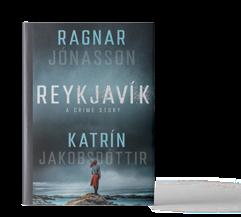
The Future by Catherine Leroux; translated by Susan Ouriou (Biblioasis, Sept. 5): Canadian writer Leroux conjures an alternative, dystopian Detroit that’s still under the control of the French, where a group of kids has taken over a local park and a woman is searching for her two missing granddaughters. “This atmospheric novel elevates disparate voices, drawing a complex picture of community-focused life beyond the family unit,” according to our starred review.
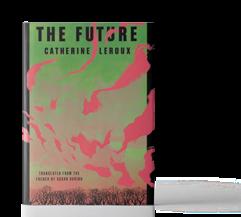
The Devil of the Provinces by Juan Cárdenas; translated by Lizzie Davis (Coffee House, Sept. 12): The unnamed protagonist of Cárdenas’ novel has returned to his hometown in Colombia after

15 years away and is swept up in an investigation into the murder of his brother. “Briskly paced, thoughtful, and truly weird: a whodunit that takes on the very idea of blame,” according to our starred review.
Self-Portrait in Green by Marie NDiaye; translated by Jordan Stump (Two Lines, Sept. 12): This is a 10th-anniversary edition of French writer NDiaye’s book chronicling the unnamed narrator’s experiences with various “women in green”; our starred review says it “may be a novel or fable; it may be memoir, autofiction, or photo essay. One certainty? This small story is too big for one genre box.” Knopf will be publishing another of NDiaye’s books, Vengeance Is Mine, also translated by Stump, on Oct. 17.

A Dictator Calls by Ismail Kadare; translated by John Hodgson (Counterpoint, Sept. 19): Albanian poet and novelist Kadare explores the story of Boris Pasternak, a writer who battled the Soviet leadership and received a phone call from Josef Stalin in 1934. What was the call about? Kadare comes up with 13 different possibilities. “An interior, prismatic tale of writerly defiance,” according to our review.

When a man accused of rape turns up dead, an Early American town seeks justice amid rumors and controversy.
Lawhon’s fifth work of historical fiction is inspired by the true story and diaries of midwife Martha Ballard of Hallowell, Maine, a character she brings to life brilliantly here. As Martha tells her patient in an opening chapter set in 1789, “You need not fear….In all my years attending women in childbirth, I have never lost a mother.” This track record grows in numerous compelling scenes of labor and delivery, particularly one in which Martha has to clean up after the mistakes of a pompous doctor educated at Harvard, one of her nemeses in a town that roils with gossip and disrespect
for women’s abilities. Supposedly, the only time a midwife can testify in court is regarding paternity when a woman gives birth out of wedlock—but Martha also takes the witness stand in the rape case against a dead man named Joshua Burgess and his living friend Col. Joseph North, whose role as judge in local court proceedings has made the victim, Rebecca Foster, reluctant to make her complaint public. Further complications are numerous: North has control over the Ballard family’s lease on their property; Rebecca is carrying the child of one of her rapists; Martha’s son was seen fighting with Joshua Burgess on the day of his death. Lawhon weaves all this into a richly satisfying drama that moves suspensefully
between childbed, courtroom, and the banks of the Kennebec River. The undimmed romance between 40-something Martha and her husband, Ephraim, adds a racy flair to the proceedings. Knowing how rare the quality of their relationship is sharpens the intensity of Martha’s gaze as she watches the romantic lives of her
grown children unfold. As she did with Nancy Wake in Code Name Hélène (2020), Lawhon creates a stirring portrait of a real-life heroine and, as in all her books, includes an endnote with detailed background. A vivid, exciting page-turner from one of our most interesting authors of historical fiction.
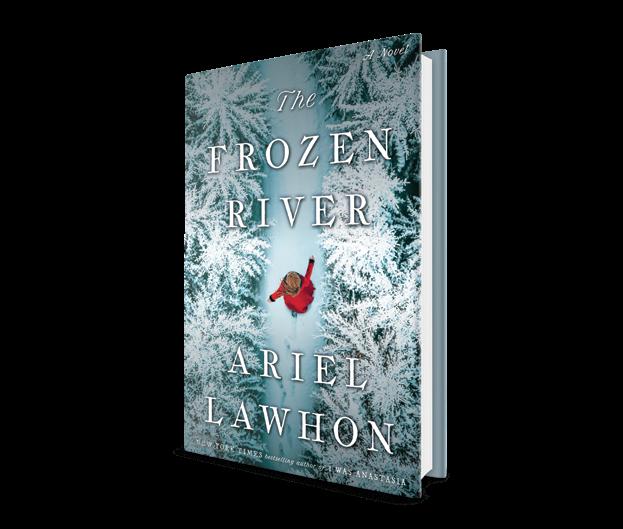

Abdoh, Salar | Viking (256 pp.) | $28.00
Nov. 7, 2023 | 9780593653906
A Tehran resident navigates his friends’ personal entanglements— and his own.
“Tehran is like a bad marriage one gets trapped in.” Those words, spoken to Issa, the protagonist of Abdoh’s novel, encapsulate the challenges facing many of this book’s characters. For his part, Issa is haunted by memories of his father and brother, both dead. His father was a martial arts instructor; his brother, Hashem, a queer playwright whose sexuality put him at odds with their father. This fraught family background isn’t all that Issa must contend with. When he returned to Tehran after attending graduate school in New York, he lost a teaching job over an accusation of “godlessness.” Much of the novel focuses on his complicated friendship with a firefighter named Nasser. As Abdoh writes, “a guy like Nasser cultivated the notion that protecting the weak was not a fairy tale, but rather an occupation, a religion.”
That friendship is tested when Nasser meets Mehran, a colleague of Issa’s late brother. Nasser’s growing attraction to Mehran eventually curdles into something bleaker, leaving Issa increasingly frustrated by his friend’s abusive side. Nasser and Mehran aren’t the only people whose presence causes Issa to rethink his assumptions about society; old friends from his childhood and his time in New York also re-enter his life to further complicate matters. As Mehran tells Issa, “The people you thought were your friends, they can turn on you in a moment.” Issa struggles to find the right thing to do in a series of ethical challenges, even as he tries to navigate his own ambitions and desires.
An emotionally complex narrative anchored by a protagonist who’s deeper than he seems.
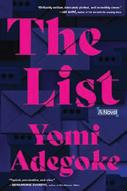
Adegoke, Yomi | Morrow/HarperCollins (336 pp.) | $30.00 | Oct. 3, 2023 9780063274877
Ola Olajide, a feminist journalist in London, is preparing for her wedding to Michael Koranteng, a podcaster who’s just landed his dream job, when his name appears on a list of abusers in the media industry.
Deeply in love, Ola and Michael find their lives turned upside down when a document known as The List is released on Twitter. Michael has been accused of “harassment and threatening behavior/Physical assault at office Christmas party,” followed by “ ‘Restraining order’ in brackets,” alongside a football legend accused of homophobia and a musician accused of rape. Ola is torn between her instinct to believe women and her disbelief that Michael could be guilty. Michael, who professes his innocence, obsessively combs through his romantic and sexual past trying to understand who his accuser could be, resulting in his rapidly declining mental health. With a relentless pace, the countdown to the wedding urges the reader onto the next chapter, then the next. As the story alternates between Ola’s and Michael’s perspectives, the release of The List prompts a series of events that quickly evade either character’s control. The insidious misogyny of the media world Ola and Michael orbit will be instantly recognizable to readers following the revelations of the #MeToo movement, and Adegoke also skewers the corporate Insta-feminism represented by Ola’s boss with ferocious accuracy. At the same time, she explores the real-world ramifications of an internet culture that lets people freely and anonymously accuse others. The List haunts Ola, forcing her to consider whether she’ll ever be able to trust Michael again, whether her career—built on calling out injustice—can survive her affiliation with an accused man.
This is a book that forces the reader to consider the lengths to which they’d go to salvage their reputation—and protect their loved ones.
A well-crafted, timely response to the myriad anxieties of navigating life in 2023.

Barrera, Jazmina | Trans. by Christina MacSweeney | Two Lines Press (224 pp.) $22.95 | Nov. 7, 2023 | 9781949641530
Writer and mother Mila, one of a trio of middle-school classmates who became close friends, reflects on their once-interwoven lives after a member of the trio dies unexpectedly. As the book opens, Mila hears her cell phone buzz. It’s Citlali’s aunt, writing to tell Mila that Citlali has drowned in the sea in Senegal and her ashes will be brought back to Mexico. Dalia, too, has been informed. Mila, Dalia, and Citlali first met as preteens in Mexico City and stayed friends even as their personal and professional paths diverged: Dalia moved to Spain; Citlali settled in Brazil but moved around while working for an environmental NGO; Mila remained in Mexico. Stricken with shock and grief at the news, Mila agrees to help organize a sort of memorial service—she calls it a “leave-taking ceremony”—for Citlali. More information about the trio is revealed as Mila contemplates their individual and communal bonds, tracing the history of their friendship from its inception in junior high to the present. Two defining events soon emerge: an adult literacy campaign for which Mila, Dalia, and Citlali volunteered around the beginning of high school, and a trip to Europe to visit Citlali about six months after Mila and Dalia started college. Hindered by a low score on the entrance exam for her chosen academic track, Citlali had instead elected to take a job picking grapes in France, one in a series of offbeat
decisions. Her private struggles are seen through Mila’s eyes, referenced but never belabored; this limited context for her death feels true to life rather than unsatisfying. Translated from the Spanish by MacSweeney, the novel evokes the awkward process of growing up, chronicling adolescence and the transition into adulthood vividly and frankly. While their personalities and interests vary—differences that cause more than a few tiffs—the women share the love for embroidery implied by the title. Passages about embroidery and other forms of stitching divide sections of the novel, though any symbolic link to the events of the plot is not obvious. A somber book about the formative, irreplicable experiences shared between friends and the agony and bewilderment of loss.
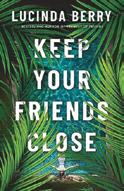
Berry, Lucinda | Thomas & Mercer (287 pp.) | $16.99 paper | Nov. 7, 2023 9781662512605

A self-celebratory party for the West Hollywood Moms’ Club leads swiftly to “a real-life game of Clue that nobody said they wanted to play.”
Although two of their pampered number, Natasha and Colleen, are distinctly minor players, four members of “the six”—Brooke Lyons, Kiersten McCann, Whitney Gilmore, and Jade Porter—are about as tight as friends can be. They’ve lived in close proximity, confided in each other about their husbands (along with Brooke’s wife, attorney Abby Blackman),
and gone through pregnancy and childbirth in such lockstep fashion that Kiersten decides it’s high time for them to enjoy a girl’s night in at her place. The festivities end abruptly when Natasha finds Kiersten floating in her pool, bashed to death, as an autopsy will show, before she hit the water. Most of her surviving friends don’t spend long wondering whodunit before telling Det. Perez of the Beverly Hills P.D. that it was probably Brooke, whose recent history of instability is promptly amped up when Abby, who’s found another woman, decides that she’s too dangerous to have custody of their son, Julian, and snatches the 6-month-old away. As Whitney, Kiersten’s best friend since kindergarten, struggles to hide her husband Colin’s gambling addiction, and Jade hides the news that her own husband, Ryan, has been laid off by DreamWorks, Berry digs deeper and deeper into this dysfunctional quasi-family until it becomes clear that these women are lying about everything—absolutely everything—to each other and themselves. Perfect reading for those who wonder: “If you couldn’t trust your best friend, could you really trust anyone?”
Blakley-Cartwright, Sarah | Simon & Schuster (272 pp.) | $26.99 | Nov. 28, 2023 9781668021590
What happens when a celebrated feminist carries on a highly charged affair with her only daughter’s closest friend?
Despite very different temperaments, Alice
and Sadie have been inseparable since adolescence. They remain so in their early 20s, though easygoing Alice is halfheartedly pursuing an acting career in Los Angeles while hardworking Sadie remains in the Bay Area doggedly working her way up in a design firm.
Celine is Sadie’s mother, a professor of lesbian-feminist theory at Berkeley who works hard to remain unconventional. When Alice gets a part in a play and Sadie can’t attend, she asks Celine to go in her place. A comic romantic nightmare ensues. Forty-four-year-old Celine is gobsmacked by her sudden attraction to Alice, whom she’s never before found particularly interesting, and Alice, who has enjoyed sex with a lot of men, surprises herself by responding to Celine’s attraction in kind. Caught up in their mutual desires and unable to acknowledge that Sadie may see their behavior as betrayal, the lovers tacitly agree not to mention their affair to her, even as weeks pass by. Meanwhile, Sadie is involved in her own sexual crisis: still being a virgin at age 23. Thanks to her unorthodox childhood with Celine, she’s developed inhibitions she’s trying to overcome, so far unsuccessfully, with her conveniently adoring, nerdy boyfriend—who, like Alice’s and Sadie’s fathers, remains so palely sketched he barely registers. The novel flits among the three women without going deep. Readers learn about Alice’s emotionally chilly mother and sympathize with Sadie’s trials as Celine’s daughter. Ultimately, though, the novel belongs to Celine, a larger-than-life personality full of contradictions. Her boundless love can be smothering, her ideas smart but half-baked, her boundary-breaking playful and cruel. She’s a would-be feminist goddess, monstrous yet hard to dislike. A lighthearted romp, tinged with melancholy, that gently pokes fun at sexual mores and those who defy them.

ALICEFor another campus novel, visit Kirkus online.
Brown, Karma | Dutton (320 pp.) | $23.99
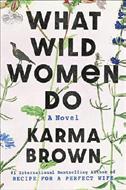
Oct. 24, 2023 | 9780593186350
Lives interweave as two women in very different circumstances go on journeys of self-discovery.
In 2021, Rowan Fairfax is at a crossroads. She’s running out of money, her dreams of being a screenwriter feel hopelessly out of reach, and she has growing doubts about her boyfriend, Seth, who has put his novel on the back burner in order to focus on a YouTube channel documenting their life. So when the two plan to spend a month in the Adirondacks as a creative refresh, she’s hopeful this will get both their lives back on track. But what awaits in the wilderness is more than she bargained for: Rowan stumbles upon the mystery of Eddie Callaway, a former socialite, who left the world of high society after her 18-year-old son died and returned to the campground owned by her parents to seek out a new, freer, life for herself, and to empower other women to do the same. Then, just a few years later, she disappeared. Alternating between Rowan’s and Eddie’s stories, Brown paints a picture of two women with very different lives animated by a similar desire to find themselves, have fulfilling relationships, and do good for the world. As Eddie works toward new meaning in her life, Rowan struggles to do the same. Brown does a nice job of fleshing out Eddie’s character, but falls short with both Rowan and Seth; readers will rush through their chapters in order to get back to Eddie’s more engaging experiences. Nonetheless, Eddie’s story has just enough intrigue and pathos to keep a reader’s attention, despite a somewhat heavy-handed moral.
Middling story about women’s empowerment with a few touching moments.
Bump, Gabriel | Algonquin (272 pp.) | $27.00 Nov. 14, 2023 | 9781616208806

A Black couple launches an ambitious plan to reinvent society in this potent allegory.
Bump’s second novel—following Everywhere
You Don’t Belong (2020)—centers on a pair of young academics, Rio and Gibraltar, whose plans as writers, thinkers, and influencers are suddenly disrupted when their infant daughter dies. Taking a cue from her grandfather’s stories of his upbringing in an idyllic, remote Florida town, Rio imagines creating a similar utopia in an unlikely locale: under a restaurant near their western Massachusetts home. In short order she finds a wealthy benefactor to fund what they’ve dubbed the New Naturals. As she and Gibraltar get to work, the narrative alternates among various characters who find themselves headed toward the commune, including Sojourner, a journalist; Bounce, a one-time star college soccer player who’s hit the skids; and Buchanan and Elting, two homeless men. “All she wanted was a place for people to live and love and hide,” Rio thinks. “Was that too much? Was that impossible?” Maybe so, Bump suggests. Bump’s study of race and marginalization is built more on brief character sketches than deep-grain realism, which makes for some gorgeous and lyrical writing, especially around grief; dialogue-heavy scenes with Buchanan and Elting have a darkly comic tinge that recalls Waiting for Godot. (There are echoes throughout of Zora Neale Hurston’s Their Eyes Were Watching God and Paul Beatty’s The Sellout as well.) Inevitably, the best-laid plans of the New Naturals come under attack, which opens up questions of what structures make for an equitable society, and whether our divisions are hard-wired. But Bump doesn’t speak over his characters, letting their own struggles
and ambiguous destinies speak to the depth of the challenge. An effecting, experimental tale of race and reinvention.

Cantor, Jillian | Park Row Books (292 pp.) $17.99 paper | Nov. 28, 2023 9780778334187
The author of a Daphne du Maurier knockoff is asked to ghostwrite another du Maurier–adjacent story.
As Cantor, author of the Gatsby-inspired Beautiful Little Fools (2022), notes in her acknowledgments, “In many ways this novel is extremely meta, but what is more so than a fiction writer who just wrote a retelling, writing a novel about a fiction writer…who just wrote a retelling?” Actually, it’s quite a bit more complicated than that. Olivia Fitzgerald, struggling author of an unsuccessful book called Becky based on du Maurier’s classic Rebecca (“The death knell was the Kirkus review… calling Becky ‘a shoddy, ridiculous knockoff’ ”), is hired to write yet another version of the gothic romance by a hot, reclusive mega-billionaire who claims du Maurier stole his late grandmother’s life story. The chapters that unfold Olivia’s trip to California to meet with Henry Asherwood are interspersed with excerpts from what seems to be yet another version of the story, titled The Wife; by whom it was written is unclear. There are also echoes of the Rebecca story arc in Ash’s own life. Everywhere you look, it seems, there are dead wives, unfriendly housekeepers, fires, and the sentence “Last night I dreamt I went to Malibu again,” which is clever but five repetitions seem like a lot. Our path through this house of mirrors is the burgeoning, quasi-forbidden romance between Ash (twice named People’s Sexiest Man Alive) and Olivia (“average-looking, curly-haired Jewish
SO MANY PEOPLE, MARIANA
girl from suburban Connecticut”), unfurled in such a perfunctory and silly way that it’s possibly supposed to be funny. “Then I tried the scone— simultaneously spicy and sweet and unlike anything I’d tasted before. Unusual but intoxicating. Almost like Ash himself.” LOL. The clear point of the exercise is that literary retellings are not thievery—Rebecca itself can be seen as a retelling of Jane Eyre—but at a certain point one wonders if there’s any reason to tell this story so many times.
An overwrought scaffolding draped with undercooked prose. Maybe if you really love du Maurier...
Carvalho, Maria Judite de | Trans. by Margaret Jull Costa | Two Lines Press
(450 pp.) | $19.95 paper | Oct. 10, 2023
9781949641516

A definitive collection of stories by a Portuguese master of the form. The stories that make up this remarkable volume are united by their quiet intensity, their commitment to internal turmoil, and their enduring interest in the lives, hopes, and miseries that are unique to women. They were originally published between 1959 and 1967 but for the most part, and except for a few small details, feel as fresh as if they’d been written just now. “He could have been a traveling salesman, a train conductor, or a
sailor,” Carvalho writes at the beginning of “Life and Dream.” “However, he was none of those things because we do not make ourselves; we are shaped by circumstances.” In “A Love Story,” the narrator asks, “Did anyone admire or envy them; could anyone look at them without smirking?” An especially pathetic—and especially badly dressed—couple is being discussed, and while the story comprises fewer than 10 pages, Carvalho manages to pack it with pathos, humor, bitterness, wit, and a surprise ending as well. In many stories, Carvalho takes on heavier topics— murder, adultery—but no topic is too light or too small for her attention. In “Miss Arminda,” for example, the narrator takes the time to distinguish between the “people who knew her” and those “who thought they knew her only because they saw her pass by every morning.” This insistence on the apparently mundane is further proof of Carvalho’s masterful eye— and her abiding faith, whether stated or unstated, in the inherent dignity of women’s experiences. That’s not to say that she focuses only on women, but her gaze does tend to land on subjects that likely would have been labeled frivolous at the time she was writing.
Elegant stories full of a dry and subtle wit, intricately observed scenes, and a full range of emotion.
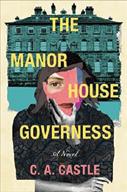
Castle, C.A. | Alcove Press (336 pp.) $28.99 | Nov. 7, 2023 | 9781639105601

A genderfluid governess becomes embroiled in a family’s troubled past in this debut novel.
Bron, who uses he/him pronouns and experiments with his gender representation by dressing in romantic vintage fashions, is fixated on Victorian literature, particularly the works of Jane Austen and the Brontës, taking as his name Brontë Ellis in a nod to sister Emily. When he’s offered a position as governess to a 9-year-old girl, Ada, in Cambridgeshire at the aristocratic-sounding Greenwood Manor, he jumps at the chance to make his fantasies of living in the stories he loves a reality. While the manor itself is as grand as he could imagine and his boss, Mr. Edwards, is welcoming and accepting of Bron’s identity, a sense of unease prevails. Ada is oddly precocious and her standoffish older brother, Darcy, at times seems to enjoy needling Bron about the way he dresses. Despite this, Bron finds himself drawn to Darcy, who seems to reciprocate the feelings, particularly after he tells Bron that he’s gay. When a fire breaks out unexpectedly in the manor’s library, family secrets begin to come to the surface, including Mr. Edwards’ difficulties accepting his son’s sexuality with the grace and open-mindedness he has shown Bron. As Bron learns more about the family he lives with and works for, it becomes clear that not everyone is who they claim. Castle is clearly a scholar of English literature, borrowing themes and motifs from campus novels, aristocratic satires, romantic novels like Pride and Prejudice, and gothic works like Jane Eyre. But the novel is too intent on making those connections clear; Castle telegraphs them with prolonged conversations
>>>
Elegant stories full of wit, intricately observed scenes, and a full range of emotion.
With her ecstatically received second novel, the author is set to become a household name.
BY MARION WINIKANGIE KIM WAS on her fourth career— lawyer, consultant, entrepreneur, and then stay-at-home mom—when she took up writing in her 40s. Number five was the charm, it seems. Kim’s 2019 debut novel, Miracle Creek—about a murder trial following the explosion of a hyperbaric oxygen therapy unit with parents and children inside—was translated into 20 languages, became a national and international bestseller, and won the Edgar Award for best first novel.

Based on the tone of early reviews and the avalanche of prepublication anointments— IndieNext, Book of the Month, Library Reads, and more—her second book, Happiness Falls (Hogarth, Aug. 29), could make Kim a household name. It revolves around a family with a Korean immigrant mom, a white dad, and three biracial kids: hyperintelligent, hyperverbal 20-yearold Mia; her twin brother, John, who is what the kids would call normcore; and her younger brother, Eugene, who has both autism and a rare genetic condition called Angelman Syndrome, which makes him unable to speak.
On the day the story opens, their father, Alan, disappears while on an outing with Eugene, who returns alone, unable to recount what happened. The story of the ensuing search is narrated by Mia, described by our besotted critic as “a brilliant, acerbic chatterbox whose relentless analysis spills from long, ropy sentences into parentheticals and footnotes that lasso the reader into turning the pages.” The book earned Kim a second Kirkus star.
There are many common elements in Happiness Falls and Miracle Creek Both combine an exploration of neurodiversity and its effects on family dynamics with a mystery, both are set in the Northern Virginia suburbs, and both feature a
therapy center called Henry’s House and a brilliant lawyer named Shannon Haug.
We knew Kim was a lawyer, that she lives in Northern Virginia, that her biracial kids have a white dad—but these are just the most superficial of the book’s autobiographical connections. The day we joined her for a conversation on Zoom, she had come directly from Motormorphosis, the flagship conference for the nonspeaking community. She was excited to have participated on panels with nonspeaking authors who were using systems for communication involving letterboards and iPads, much like the method described in her novel. And that is
Kim has explored neurodiversity in both her novels.
My husband and kids tell me, ‘You’re the most insecure person we know!’
where our conversation began, delving into the profound connection between Kim and her characters. Our exchange has been edited for length and clarity.
How did you become so fascinated by the situation of nonspeakers?
When I came to this country as an 11-year-old [from Korea], I had a really good sense of myself. I felt competent and intelligent and articulate. Then I came here, and, overnight, I couldn’t speak. Though I know I didn’t become stupid overnight, that’s how I felt and how I was treated. That was the beginning of my understanding that our society equates oral fluency with intelligence. Even though it only affected me temporarily—I now speak English without an accent—the insecurity stayed with me. Forty years later, my husband and kids tell me, “You’re the most insecure person we know!”
If that experience is behind the character of Eugene, his sister, Mia, is the polar opposite. As she explains herself, she’s hyperlexic—obsessed with reading since early childhood— and she never shuts up. Some of that also comes from my life. Growing up in Korea, we were so poor, my parents and I lived in one tiny room—so small we didn’t really have room for furniture or anything. We didn’t even have beds, so we just rolled out these mats every night for sleep. I was obsessed with reading from an early age, so would borrow books from my friends and read them over and over. Then, when I was 10, my parents gave me a beautiful set of classic mystery stories like Poe’s “The Black Cat,” illustrated hardbacks that they found at a flea market that I was allowed to take with me when we moved to America. I read these books so many times that I think mystery became part of my DNA. I still have them right here!
When my aunt gave me her favorite Sidney Sheldon novel, Rage of Angels, I read it to learn English, using a dictionary and writing down lists of words. One of my first published pieces—this
Kim, Angie Hogarth | 400 pp. | $28.00
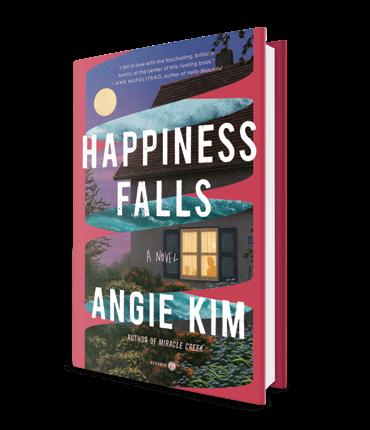
Aug. 29, 2023 | 9780593448205
was in my 40s—was a humor essay about that experience, which won a Glamour magazine contest judged by Erin Morgenstern, Jane Smiley, and Jesmyn Ward.
That is so cool. Before you took up writing, you were a lawyer, right? That background comes into play in both books through the character of Shannon Haug. In Miracle Creek, she’s a central player in the courtroom drama; in Happiness Falls, she helps the family protect Eugene from accusations regarding his father’s disappearance. Do you see the books as a series? More as two sides of a coin. While Miracle Creek explored the issue of having a child with disabilities from the parenting perspective, Happiness Falls looks at the situation through the child’s lens, and the sibling’s lens. Also, Miracle Creek had seven different POV characters written in close third-person perspective, and this one is very decidedly first person. No matter how tough it was to stay with Mia throughout—it would have been so easy at times to move the plot forward with somebody else’s perspective—I stuck with her. In the end, I felt that staying in Mia’s head
reinforces the mystery element, not being able to access anything except what you yourself are thinking. I see the mystery as a Trojan horse that gets the reader pulled in and then gives me the container to hold all the ideas I want the book to explore.
And one of those ideas is the part of philosophy called happiness theory. Right. Mia finds her father’s notebooks, where he is working on the question: What is happiness? He’s particularly interested in the theory of the relativity of happiness, which proposes that our happiness level is dependent on both our expectations and our baseline.
Mia learns that he’s been secretly running experiments to test this on his family, trying to formulate equations that explain the result. Happiness theory is the heart of the book—the aspect that has caused multiple readers and reviewers to describe the novel as life-changing. And it occurs to me that the notebooks are where we do hear a voice other than Mia’s—her father, Alan’s.
You’re right! You know, they just cast the audiobook, and in addition to the person who plays Mia, there’s an actor who reads the notebooks, and—I’m so excited about this!—a real-life nonspeaker named Tom Pruyn does Eugene.
How is that going to work? In the book you use all caps when we get access to Eugene’s thoughts, or when he communicates by using a letterboard. Tom is actually what’s called an unreliable speaker: He can’t always predict what will come out of his mouth, and uses a letterboard to communicate. Fortunately, he was able to read the script out loud. At 25, it’s always been his dream to be a performer. This was his first paying gig, and he did amazingly well. At the conference today, the whole nonspeaking community was celebrating for him.
Marion Winik is the host of the NPR podcast The Weekly Reader. Happiness Falls received a starred review in the July 1, 2023, issue.
on literature and Bron’s own realizations of connections both large and small to fictional works, failing to meet the seeming goal of creating a queer addition to any of the genres the book focuses on. The modern timeframe is also a stumbling point; the Brideshead-esque setting and the eccentricities of the Edwards family are anachronistic and sudden mentions of Facebook are jarring. Doesn’t quite rise to the legacy it aspires to.
Child, Lee & Andrew Child | Delacorte (304 pp.) | $28.99 | Oct. 24, 2023

9781984818584

Trouble could be Jack Reacher’s middle name in this 28th adventure in the series.
In Chicago in 1992, Roberta and Veronica Sanson throw a recovering heart-attack patient out a hospital window. Thus begins a series of murders the women commit as they try to get someone to answer an important question about an event that happened in December 1969. On the team investigating the murders is Capt. Jack Reacher of the military police. Previously, he had been demoted from the rank of major, but that is literally another story. Reacher is a strange man, “naturally suited to two states of existence. Instant, explosive action. And near-catatonic stasis. It was the in-between he struggled with.” Faster and smarter than any four bad guys, he’s a superhero who deserves to have an action figure in his likeness if one doesn’t exist already. But he and his team have their hands full with the Sanson sisters, who are killers on a mission. Back in 1969, there had been a team of scientists working on a secret project, and the sisters demand to know the name of the eighth team member, who all the victims insist to their death does not
exist. The investigative team is puzzled as they realize someone is picking off retired scientists one by one, and “former CIA assets start dropping like flies.” There are some interesting lines: When a high-ranking government official comes under suspicion, Reacher says, “This is America. The law applies to him the same as everyone else.” Readers who follow current events may find the statement pointed. And Roberta chastises a victim: “There you go. Underestimating a woman, again. Will you never learn?” The plot gets a bit complicated, and readers will find a few nice twists. But mainly, Reacher provides the entertainment with his not quite believable fighting skills. An enjoyable, fast-moving yarn.
The General and Julia Clinch, Jon | Atria (272 pp.) | $26.99 Nov. 14, 2023 | 9781668009789
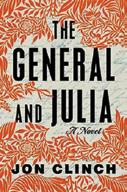
A renowned leader lays bare his heart.
In 1885, Ulysses S. Grant, dying of throat cancer—he had smoked 25 cigars a day—sequestered himself in the Adirondacks to write his memoirs, a book, he hoped, that would serve as a legacy to history and a source of financial security for his wife and children: “He cannot let them go impoverished into their long days.” His friend Samuel Clemens—sly, big-hearted, and loyal— has secured him a generous advance, certain that Grant will “admit the reader into his
own mind.” In a graceful, moving narrative, Clinch recounts the pathos of Grant’s last days, as the Civil War general and former president, weakened by pain, inhabits his past: marriage to the wise, loving Julia; the grim reality of a bloody war; entanglement in a devastating Ponzi scheme. In chapters that move back and forth in time, Clinch portrays a man both stalwart and tender, who “as son, brother, student, soldier, husband, father, grandfather, general, and president... accepted all burdens as personal acts of service.” He conveys Grant’s gravity, “an unmistakable and overwhelming power,” and his complexity. As general, he bore the burden of uniting the country, nothing more; slavery seems to him “a puzzle at best and an error in management at worst.” His wife’s family, after all, owned slaves. When Robert E. Lee surrenders, Grant imposes no penalties on the Confederacy. Some see that decision as naive; as a young Black man remarks, Grant seems to be a man of faith and forgiveness: faith “‘[i]n the possibility of man’s improving, given opportunity and encouragement. I ask you: Who else could have led an army to such a victory and come away with the admiration of both sides?’” He has come away with Clinch’s admiration, as well, and, no doubt, by the end of this affecting novel, the reader’s. An empathetic portrait of a towering figure.
In a moving narrative, Clinch recounts the pathos of General Grant’s last days.
THE GENERAL AND JULIAFor more books by Jon Clinch, visit Kirkus online.

Corobca, Liliana | Trans. by Monica Cure Seven Stories (208 pp.) | $10.99 paper Nov. 14, 2023 | 9781644213278
In a semi-abandoned Moldovan village, a 12-yearold girl must take care of her two younger brothers.
“Every village in Moldova is a village of children, the entire country,” confides Cristina Dumitrache, who’s been left in charge of her brothers, 6-year-old Dan and the even-younger Marcel, while her mother is working in Italy and her father in Russia. Apparently a large proportion of the adult population has gone to work abroad, leaving houses empty, crops unplanted, and children without parents. Cristina’s mother phones and sends money for food, and the siblings have some relatives nearby, but essentially they live alone and unsupervised in a rural village alongside chickens, dogs, cats, and a pig. Cristina is expected to tend to the entire household, cleaning, washing, sweeping, feeding, while inevitably neglecting her own schoolwork. Moldova-born author Corobca depicts a national phenomenon through the specific experiences of this one small family, her anecdotal narrative sketching a larger picture of a community hollowed out by financial pressures. The village is a place of casual cruelty, the children purposely destroying nice things owned by their peers and causing animals to suffer, the remaining adults beating and abusing each other. Violence abounds, as do hunger and theft, but there’s also friendship, play, and the sharing of resources. Meanwhile, “scrappy” Cristina is beginning to experience sexual stirrings and flickers of empathetic adulthood while doing her best to protect the boys. This short, uneven work traces the children’s troubles and struggles while hinting at the psychological effects of their situation: Marcel, for example, has created a puppet version of his
father out of old clothes. Episodes can be grim, yet Corobca infuses a peculiar buoyancy, too, with Cristina’s perspective giving glimpses of flora, fauna, ritual, and happiness.
A disturbing portrait of social chaos leavened with charm and hope.
Cumming, Charles | Mysterious Press (336 pp.) | $27.95 | Nov. 7, 2023 | 9781613164556

A veteran secret agent tracks Rwandan war criminals.
A preliminary “Note on the Rwandan Genocide,” chilling in its dispassionate description of horrifying events, summarizes the ghastly events of 1994. The novel proper opens a year later, as veteran CIA officer Michael Strawson and French war reporter Philippe Vauban discuss the tragic aftermath and the outrageous fact that the engineer of the carnage, Augustin Bagaza, “the butcher of Kigali,” is living in Dakar in comfort at 35 Rue Kennedy with “his Congolese whore.” Flash forward to Paris, 2022: MI6 is on the trail of this woman, whom they call “Lady Macbeth.” In the succeeding chapter, “The present day,” Senegalese businessman Eric Appiah is tracking down his old friend, veteran spy Lachlan Kite, who worked under Strawson. Hearing Appiah use the diminutive “Lockie” convinces gallery owner Robin Whitaker to contact his secretive friend on Appiah’s behalf. Appiah’s contact with Kite, who has now married Isobel, a doctor who’s borne him a young daughter, takes Kite and the reader back to the mid-1990s and his initial pursuit of Bagaza and Lady Macbeth with his then-girlfriend, Martha Raine, in tow. As the plot moves again into the present, the search to find and protect Martha provides an engine. Steeped in recent history, Cumming’s third Box 88 novel depicts the international complexities of modern
espionage as well as the inseparable intertwining of the political and the personal. Like le Carré and Lawton before him, Cumming is building a modern history through an espionage lens, book by methodical book. An intricate espionage thriller that’s both timely and convincing.
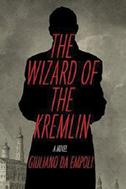
da Empoli, Giuliano | Trans. by Willard Wood Other Press (304 pp.) | $16.99 paper Oct. 31, 2023 | 9781635423952
Part fiction and part freewheeling analysis, an insider’s look at the world of Vladimir Putin.
The book’s narrator is Vadim Baranov, a fictional stand-in for Vladislav Surkov, the young ideologue and spin doctor known as “Putin’s Rasputin.” Baranov becomes attached to Putin in the late 1990s, when Putin is the largely unknown head of the FSB. With his background in theater and television, Baranov becomes part of media-savvy billionaire Boris Berezovsky’s campaign to promote Putin as a strong, decisive, fear-inspiring replacement for the boozing, ideologically soft Boris Yeltsin. The Russian people, Putin’s supporters say, crave a return to the time when the Kremlin “set the tone” and “had a certain moral superiority over the private sector.” And also when cell phones didn’t ring during performances of the Bolshoi Ballet. Culturally hip with references to Sex and the City, Johnny Depp, and Putin’s appearance on Larry King Live, the cooly detached Baranov is less interested in exposing the sins of the president, to whom he refers as tsar, than tossing off pithy observations, opinions, and hard insights in what amounts to an epic monologue. With elements of Baranov’s personal life mixed into the narrative, the book can be quite entertaining—though not for those unhappy with Baranov’s essentially
admiring portrait of Putin, which da Empoli, who was an advisor to former Italian Prime Minister Matteo Renzi, does little to diffuse. First published in 2022 in France and then Italy, this bestselling, prize-winning quasi-novel was viewed by some as dangerous propaganda at a time when Putin was waging war in Ukraine. “Power is like the sun, like death: you can’t look at it head-on,” the author writes, highlighting one of his own shortcomings. An authoritative but skewed look at recent Russian history.
Evison, Jonathan | Dutton (336 pp.)
$14.99 paper | Nov. 7, 2023
9780593184158
An elderly man looks back on his life—or is it lives?
Eugene Miles, the narrator of Evison’s eighth novel, is about to turn either 106 years old or a thousand and change. Living in an eldercare facility, he regales one of its housekeepers, Angel, with tales of his past lives as Euric, a petty thief in 11th-century Seville; an Incan princess; an assistant to Lewis and Clark during their expedition; Oscar Wilde’s housecat, and more. (“I’d lived a full life—seven full lives!”) The facility’s mental-health staff is skeptical, naturally, but Eugene’s storytelling skills are top-notch, and Angel is particularly enchanted with Eugene’s long-ago romance with Gaya, who saved him from the Moors’ clutches and may have been reincarnated as a woman he knew in 1940s Los Angeles. As Eugene’s stories pile up—and as he assists Angel with his own romantic struggles—some cracks in the unreliable narrator’s facade begin to emerge. But Evison is concerned less with the factual accuracy of Eugene’s experience than he is with how stories (even far-fetched ones) inspire empathy, and that togetherness, driven “purely by
the desire to connect, is more meaningful than just about anything else.” It’s a sweet, borderline saccharine notion, and the novel is often nakedly sentimental when it isn’t organizationally ungainly; Euric’s tale dominates the past lives, with the others adding relatively little to the narrative. In prior novels like The Revised Fundamentals of Caregiving (2012) and This Is Your Life, Harriet Chance! (2015), Evison demonstrated deep compassion toward hard-luck cases, the elderly, and the unwell. That’s just as true here; true or not, Eugene’s efforts to slay his past demons is affecting. But that plotline is subsumed by some cloying prose. Emotionally robust but structurally cumbersome.
Frasier, Anne | Thomas & Mercer (287 pp.) | $16.99 paper | Oct. 24, 2023

9781542036429
Returning to her hometown to investigate a mother suspected of killing her three children, a private investigator is plunged back into memories of her childhood and her unresolved feelings about the past.

No stranger to hard times, Olivia Welles has survived five near-deaths in her lifetime, from an almost fatal car wreck to some fraught times on operating tables. Olivia, a private eye who now lives in Venice, California, is a survivor in an inhospitable world. Maybe that’s the reason she
can’t help but answer a call pleading for assistance all the way from the jail in Finney County, Kansas. Bonnie Ray-Murphy, who’s widely assumed to be a monster because three of her children died in her care, is stuck in a cell waiting to see whether she’ll be held accountable for the most recent, who passed last week. Bonnie begs Olivia to come to Finney, promising that she only wants Olivia to find out if her baby, Calliope, is alive. While the phone call isn’t something Olivia expects, it’s also not as out-of-the-blue as she might have wished. Bonnie and Olivia have always been connected by the fact that Bonnie and her mother survived the car crash that killed Olivia temporarily and her mother permanently. Though she’s never wanted to return to Finney, now she feels as if she can’t escape the summons. For her own sake, Olivia needs to know if Bonnie is every bit the monster the town thinks she is or if there’s some grander mystery afoot. Best when the characters flow beyond darkness for the sake of darkness.
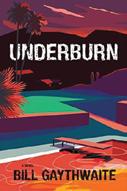
Gaythwaite, Bill | Delphinium (288 pp.)
$27.00 | Nov. 14, 2023 | 9781953002266
California wildfires send a prodigal son and his young housemate home to mother.
At the center of Gaythwaite’s fine debut is Iris Flynn, a 73-yearold former beauty queen who aged out of a middling acting career to
Evison demonstrates deep compassion toward the elderly and the unwell.
AGAIN AND AGAIN
become a realtor years back. She’s not close with her 42-year-old son, Frank, but on the other hand, she’s not close with anyone. She cut ties with her family in Maine when she moved to Hollywood, her husband has been dead for three years, and Iris is far too stiff and judgmental to have anything remotely like a friend. So when the home he shares with his 25-yearold boyfriend, Logan (“so startlingly handsome” that his appearance can cause “temporary amnesia”), burns to the ground, Frank knows the welcome they’ll find at his mother’s will be far from effusive. Though he also knows she’ll certainly take them in. Logan, who has a continuing role as a featured extra in a television series called Windsor Valley High, is as friendly and outgoing as Iris is cold and reserved, and after many uncomfortable conversations and icy rebuffs, they find their rhythm screening old movies in what Frank dubs the Iris Flynn Film Society and Lecture Series. This static situation has gone on for several weeks when Iris receives an email from her estranged sister in Maine that opens the door for a lively second act, bustling in new characters, locations, and backstories. Gaythwaite does a fine job with his central trio— keeping Iris just this side of hate-able, making Logan less stupid than stereotype would suggest, and, in particular, fleshing out Frank’s recovering-addict history and persona in a moving and believable way. The Hollywood ending he bestows upon them doesn’t hurt a bit.
A quirky family story told with wit and wisdom, with shades of Anne Tyler or Elizabeth Strout.

Grodstein, Lauren | Algonquin (304 pp.) $29.00 | Nov. 28, 2023 | 9781643752341
An English teacher documents life in the Warsaw ghetto.
Before the Nazis invaded, 42-year-old Adam Paskow was a secular Jew. He lived in Warsaw with his cat, taught at a Polish school, and mourned his late wife, a wealthy Pole who died too young. After the Nazis invade, he is forced out of his home and into the Jewish ghetto where he shares a small apartment with two families (though the kids often sleep on the roof or in the sewers or hallways). He works in a soup kitchen and gives English lessons to children in the basement of a bombed-out movie theater, teaching them poems he has memorized, due to the lack of books. Early on, Adam is given a notebook from a real, historical organization called Oneg Shabbat to write everything he can about life under the Nazis for posterity. His account—this book—is moving and tender. “The truth is,” Adam writes, “it was hard to know what to think or how to behave, and I spent an awful lot of time either staring into space or digging myself into the deep hole of memory.” But Adam’s memories of his fairly average life before the war provide a contrast to the intentional, increasing
meagerness of the life allowed in the ghetto. His interviews with his students and housemates offer a wealth of distinct histories, subtle but potent rebukes to the cruel and useless labeling perpetuated by the Nazi regime. Adam has the poetic optimism of a person for whom the worst has already happened, who is content for a while to count small blessings, but he is neither foolish nor passive. When risking death by missing curfew in order to walk a wayward student home, he notes, “there were corpses on the street, covered with newspapers that fluttered in the wind. We pretended not to see them.”
Delicate, warm account of a brutal, cold time, grounded in humanity, small details, and unwavering clarity.
Gornick, Lisa | Keylight Books (256 pp.)
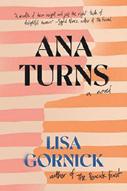
$29.99 | Nov. 7, 2023 | 9781684421398
The day of a woman’s 60th birthday becomes a kaleidoscope of encounters with the significant people in her life.
WE MUST NOT THINK OF OURSELVES
Ana Koehl has put her degree in social work and her master’s in literature to marketable use as a “manuscript therapist” who whips her clients’ texts into shape. On April 28, 2017, her birthday, she has arranged her day to see all her favorite people in New York City before a large family dinner: There’s her best friend, Fiona, whom she’s known since grad school; her husband, Henry, an anesthesiologist who manages his chronic pain with medical marijuana, which has caused distance between the two spouses; her lover, Lance, with whom she’s been having an affair for seven years; and her adult child, Simon, who is rapidly changing before her eyes. Yet scattered into Ana’s day are other appointments she feels obligated to keep: calling her abrasive mother, who has sent a birthday email noting the financial costs of raising
>>>
A delicate, warm account of a brutal, cold time, grounded in humanity.


Tana French is returning to bookstore shelves with a sequel to her most recent novel, according to Today.com.

Viking will publish the Irish mystery author’s The Hunter next winter. The Penguin Random House imprint describes the book as “a spellbinding new novel set in the Irish countryside.”
The novel is a follow-up

to French’s The Searcher, which Viking published in 2020. That book followed Cal Hooper, a retired Chicago police officer who moves to the west of Ireland, and agrees to help Trey, a local teenager, investigate the disappearance of her brother. A critic for Kirkus said the novel offered “plenty of twists, shocking revelations, and truly chilling moments,” and called it “slow moving and richly layered.”

In The Hunter, Hooper has built an ad-hoc family with his new girlfriend and Trey. When Trey’s long-lost father reappears, she insists on exacting revenge on him. Viking says the novel is “a nuanced, atmospheric tale that explores what we’ll do for our loved ones, what we’ll do for revenge, and
what we sacrifice when the two collide.”
French told Today.com that she hadn’t planned to write a sequel to The Searcher. “At the end of Searcher, I left Cal and Trey at a point where their relationship, and Cal’s relationship with the village, were just starting to find some kind of shape and solidity—but they were still fragile; there were still plenty of loose ends and shaky places,” she said. “I wanted to see what would
happen if something came along to rock their balance, down the line.”
The Hunter is slated for publication on March 5, 2024.—MICHAEL SCHAUB
French did not plan to write a sequel.
Ana; seeing her brother, George, who is both distant and dismissive; and meeting with one of her clients, a writer struggling with how to bring her book manuscript into final form. Ana’s account of her day is interspersed with third-person sections told by other people in her life. Gornick has written a novel in the vein of Mrs. Dalloway (which Ana reads throughout the day), structured on the progression of one significant day while also moving through time in the alternating sections to show how some of Ana’s complex relationships coalesced into their current forms. Ana is a richly developed main character surrounded by an intriguing supporting cast (though there might be slightly too many sub-storylines) in this thoughtful meditation on how time affects the bonds of family, friendship, and romance.
Engaging and introspective.
Grover, Linda LeGarde | Univ. of Minnesota (128 pp.) | $21.95 | Nov. 7, 2023
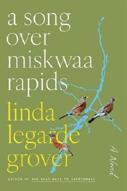
9781517914622
Past and present collide and conspire in the northern Midwest.
In her third novel, Grover elaborates a narrative world involving multiple families rooted in Mozhay Point, a fictive Ojibwe reservation in northern Minnesota. The protagonists include Margie Robineau, who struggles to defend Sweetgrass, her family’s land allotment, from developers; Michael Washington, a tribal council member whose political fortunes are imperiled by the chance discovery of a moldy corpse; Dale Ann Dionne Minogeezhik, who has lived for decades with the burden of losing a child and failing to prevent her former lover’s death; and a group of mindimooyenyag-iban, the spirits of female elders
who watch and occasionally intervene in the unfolding action. The book shifts between the present and decisive events a half-century earlier, revealing communities haunted by trauma yet sustained by ancestral connections. The past’s definitive power in the lives of individuals is skillfully rendered here, and the plot moves briskly and suspensefully toward its climax. Like many of the novels of Louise Erdrich, an obvious influence, this work generates much of its aesthetic force from the gradual revelation of its characters’ complex relations. Particularly effective are the interplay between the spirit elders and the living and the ultimate disclosure of the circumstances behind a young man’s ill-fated attempt to escape the misery he has created for himself and others. An elegant circularity in the storytelling reinforces a sense of historical spirals and the inevitable imbrication of all personal and communal fates. We encounter here, finally, a rich sketch of the endurance and achievements of the Aandakii Anishinaabeg, “the original, good people who had been created by the Great Spirit and gently lowered to the Earth. And then displaced to live elsewhere.”
A sprawling, poignant chronicle of struggle and survivance.
Hanover, Rebecca | Lake Union Publishing (317 pp.) | $28.99 | Oct. 24, 2023

9781662513626
The parents at a Manhattan prep school put a new spin on dark academia.
Audrey Singer relishes the power she wields as admissions director at the beautiful, highly selective Easton in Manhattan. She knows her own son’s place in the kindergarten class is guaranteed, even if her teen daughter is struggling a bit with the academic pressure. So it’s a bit out of character when she receives an email pleading with her
to consider a late application—and she does. Maybe it’s the writer’s charming, self-deprecating tone; maybe she’s just feeling generous as she reads the note in front of a cozy fire, glass of wine in hand while her handsome photographer husband makes dinner; or maybe it’s the fact that she herself didn’t grow up with the proverbial silver spoon. Whatever the reason, she soon finds herself on the receiving end of Sarah Price’s grateful generosity in the form of flowers, manicures, and one very strange set of nesting dolls. Besides the fact that Audrey can’t ethically accept any of these gifts, she begins to get some weird vibes about Sarah, who starts turning up everywhere—including her house. Is she being stalked? This is a thriller, so the answer might seem to be an obvious yes…but it’s so much more complicated, and bonkers, and satisfying than that. There’s a refreshing frankness about sex and attraction that drives the personal side of the drama, as well as a thoughtful recognition of how grief and loss break people down in different ways. The ending dials it all up to 11, and it’s pretty absurd, but why hold back? In a novel invoking the world of the 1%, there’s no point in being stingy!
Deliciously thrilling—and thrillingly extra.
Hunter, Lindsay | Roxane Gay Books/ Grove (320 pp.) | $27.00 | Nov. 7, 2023 9780802161451
Two young mothers meet in the hospital and a collision course is set. Their friendship is pure, uncomplicated; in the swirling chaos of motherhood, it offers them each an anchor. Jackie Stinson’s family even moves in next door to Theresa Linden’s. But there is a darkness in Jackie; overwhelmed by the constant needs of her four sons and
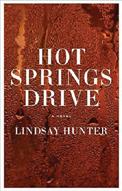
her car-salesman husband, her secret solace becomes eating. It’s Theresa who suggests they join a weight-loss group, and soon the measuring of calories, of meals, of single bites replaces Jackie’s previous addiction to food. People begin to notice her, especially men, and this newfound power leads Jackie to make a choice that destroys a friendship, leads to a brutal murder, and tragically alters forever the lives of her sons and Theresa’s daughter as they struggle into adulthood themselves. While Jackie is the only narrator who speaks in the first person, there are chapters from almost every character’s point of view, and the novel spans several decades. The murder is revealed almost at once, the identity of the killer much later, but this isn’t really a crime novel. It’s a novel about a woman who doesn’t know who she is and how her emptiness devastates not only her own life, but the lives of all those she loves. It’s about how her love is complicated because there is, at the heart of it, a fist of resentment, and how this love becomes a trap. Hunter’s lyrical writing performs the miracles here; while Jackie herself is hard to sympathize with, Hunter captures her complex humanity in stirring and gorgeous prose: “There once was a woman named Jackie, and sometimes she let life happen to her, and sometimes she didn’t. At the end she stood around and thought, What have I done? What have I done? What have I done?”
Tragic to the core—and yet, there is beauty in the telling.
Kirkus StarKeegan, Claire | Grove (128 pp.) | $20.00
Nov. 14, 2023 | 9780802160850
A collection of stories that explore relationships through a series of fraught encounters.
The three stories in this slim book from
Keegan, one of Ireland’s most celebrated writers, examine the power dynamics between men and women through relationships, chance encounters, and sex. These stories, which span Keegan’s career, have been collected and repackaged in the wake of her Booker Prize–shortlisted novel, Small Things Like These, and the American publication of her novella Foster. The final story, “Antarctica,” in which a married woman seeks out sex while away from her family, was originally published in 1999, while the title story first appeared only last year. The stories have been carefully selected, however, to be read together; all three powerfully probe the problem of gender relations in modern Ireland and England. “Antarctica,” the darkest story, shows what lengths a man might go to in pursuit of a woman, while “So Late in the Day” explores more unconscious expressions of misogyny. Its central character, Cathal, is an unremarkable office worker whose resentment and even hatred of his fiancee, Sabine, is also depressingly unremarkable and leads to the collapse of their relationship. In the strongest story, “The Long and Painful Death,” a female writer on a retreat in Heinrich Böll’s seaside house must fend off the intrusions of a judgmental male scholar. Unlike the other two pieces in the collection, this one ends on a high note, with the writer sloughing off the man’s unwanted attentions and transforming them into art. In all three stories, however, Keegan precisely observes the subtle dynamics between men and women, be they strangers or romantic partners, and how those dynamics can shift and curdle with little warning. Compact but deep explorations of human vulnerability from a master of the form.
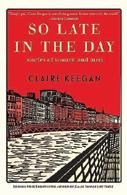
 Ferrante
Ferrante
Ferrante’s now-classic saga of an enduring yet complex female friendship shape-shifts once again, this time into a graphic novel.
In Lagani’s streamlined adaptation of the first of four Neapolitan novels, Ferrante’s original narrator, Lenù, does double duty as the (fictional) illustrator of the early years in her complicated lifelong friendship with Lila. “Her” drawings, maps, and illustrations trace the girls’ relationship from childhood through Lila’s marriage. Cerri, the actual illustrator, captures the girls’ environments and moods in gestural, atmospheric drawings that convey the menacing atmosphere of postwar Naples as well as the girls’ determination to move beyond the boundaries imposed on them by family, culture, and economic circumstance. This re-envisioned account necessarily telescopes some backstory and motivation but remains faithful to the broad outlines of the character development and Byzantine plot points found in the original. Readers unfamiliar with the works underlying this iteration of the story—Ferrante’s original books and the hit HBO miniseries from which Cerri drew visual inspiration— may find some incidents puzzling
SO LATE IN THE DAYLagani, Chiara | Illus. by Mara Cerri | Trans. by Ann Goldstein | Europa Editions (256 pp.) $26.00 | Oct. 10, 2023 | 9781609459468
to parse, such as schoolgirl Lila’s apparent fall from an apartment window. (Ferrante’s legion of devoted fans will connect the dots between her father’s anger and Lila’s ejection from the window.) Aspects of the narrative that benefit from Cerri’s visual storytelling include the first episode of “dissolving boundaries” that will plague Lila throughout her life and Lenù’s competitive concerns about the differences between the girls’ maturing adolescent bodies. (Cerri previously illustrated Ferrante’s earlier “picture book,” the mordant The Beach at Night, but delivers less nightmarish visions here.) Goldstein, responsible for translating Ferrante’s prior works from Italian into English, continues that heroic undertaking with a sensitive translation of Lagani’s text consistent with the original. Classics often pale in their retelling, but this homage to Ferrante’s epic shines with its own light.
Lancaster, Jen | Little A (268 pp.) | $28.99 Nov. 1, 2023 | 9781662512001
Three women who find themselves working in the same college town in the Midwest try to succeed at building new lives.
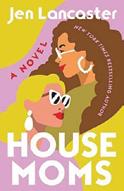
Gina Marie Ferragamo left high school before graduation to begin working when her mother died. Low on education but highly organized and motivated, she’s made a living as a housemother for a no-full-nudity strip club in New Jersey—until she witnesses a mob execution and is whisked away into witness protection, where she becomes Janelle Smith, housemom for a sorority at Eli Whitney University. Cecelia Elspeth Bondurant Barclay is an extremely wealthy, extremely pragmatic woman who dedicates herself to her charity, helping the homeless and turning a blind eye to her husband’s indiscretions because he’s such a good father
to their daughter. That life comes crashing down when he absconds with $50 million from CeCe’s charity— funded by her own inheritance—and disappears. CeCe meets Janelle at a coffee shop and finds herself with a job as a housemom to another sorority. Her daughter, Hayden Elspeth Bondurant Barclay, lives in the same town and has made a stand against her parents’ money; she’s supporting herself through working at that same coffee shop and more risqué pursuits. Author Lancaster has written a bouncy book that follows her characters’ thoughts, dreams, hopes, and despairs as they set up new versions of their lives. However, the novel feels more like three fragmented stories—it’s an intriguing and compelling tale with complex characters, but the storylines don’t overlap much and peter out much more quickly than readers might expect.
A look at the sisterhood formed in sororities that extends to those who work in, and around, them.

La Salle, Eriq | Poisoned Pen (432 pp.) | $16.99 paper | Oct. 24, 2023 9781728261065
A white supremacist group seeks to stoke an all-out war between Jews and Blacks on the streets of New York after a Black teenager is fatally run over after
being chased by Hasidic Jews for defiling their synagogue.
The only hopes of preventing a possible Armageddon reside in the skills of Jewish FBI agent Janet Maclin, who is up against her own ticking time bomb in the form of Stage IV cancer, and a pair of police detectives known as the best closers on the force: Phee Freeman, a Black former New York Giant who is led by his emotions, and the cooler family man Quincy Cavanaugh. Plans to infiltrate the hate group fail tragically when a Black cop posing as a Harlem radical has his cover blown. At immediate risk are the lives of Spider Harris, the Jew-hating uncle of the dead teenager, and Ezra Pearl, the Black-hating grandson of a Holocaust survivor, who is blamed for the teen’s death. Both are abducted by the plotters and tossed within yards of each other in a former slaughterhouse, with plans of using their tortured bodies to push tensions between Blacks and Jews over the top. La Salle does a good job of handling all the moving parts, which include Maclin’s sense of personal doom (she participates in S&M sex to fight through her physical and emotional pain). But the depiction of the white supremacists never rises above stereotype. And in this, the concluding thriller in La Salle’s Martyr Maker trilogy, there are long stretches of preachiness about the power of love and understanding (and babies). “What if he and Spider were in fact not that different, at least on the things that mattered most?” Ezra is finally led to think. Tony Curtis and Sidney Poitier did it much better in The Defiant Ones. A timely and engaging but ultimately predictable thriller.
A look at the sisterhood formed in and around college sororities.
HOUSEMOMS

Lefler, Robin | Kensington (304 pp.)
$16.95 paper | Oct. 24, 2023
9781496741325
A floundering Toronto PR professional takes a job at an artists’ colony in remote Muskoka.
Thirty-one-yearold Kate Rigsby may not be passionate about her job in PR, but that doesn’t mean she wants to be fired. That’s exactly what happens, though, after she drunkenly posts an Instagram tirade against the terrible ex-boyfriend who cheated on her—and who also happens to be one of her firm’s clients. Kate is desperate for work, so when a job opportunity as the business development director at Treetops Creative Retreat presents itself, Kate applies. Treetops is a “luxury resort for artists” and if she works there from November through January, she can make a “borderline obscene” amount of money. When Kate arrives on site, however, she realizes that “remote” doesn’t really begin to cover it. There’s no cell reception, limited Wi-Fi, and during the worst weather, it can only be accessed by a combination of ATV, snowmobile, skis, or helicopter. Treetops has sparse attendance during the winter, but it’s staffed by a lovably quirky group of employees who become Kate’s friends and frenemies—and one very cute visual arts mentor, Matt Reid. Kate is determined to do her job, increase bookings, and avoid the kind of public flameout she had at her last firm, so she doesn’t have time for romance. But as she gets to know Matt and the rest of the Treetops crew, she starts to realize she may have finally found a place that feels like home. In her debut, Lefler provides beautiful descriptions of the nature that surrounds Treetops, making it feel like a truly idyllic place. The team of eccentric employees are warm and inviting. Kate’s romance with Matt, though, never quite takes
off—the chemistry between them isn’t as strong as it could be. There’s also an attempted sexual assault from a tertiary character that feels out of place and a bit too dark for what is otherwise a lighthearted read. A cozy story of self-discovery.

Ledwidge, Michael | Hanover Square Press (400 pp.) $27.99 | Nov. 7, 2023
9781335455086
When an unpaid Wall Street intern at a Manhattan investment bank discovers there is $10 million in cash ready to pay kidnappers stored in a basement vault, she decides to fake a kidnapping.
Faye Walker had a very normal suburban life as a child, complete with a backyard trampoline and two loving parents, until her mother passed away when she was 11. Her father descended into drugs, lost his job and the house, then sent Faye and her sister, Caitlin, to live with their grandmother in her trailer in Kentucky coal country before finally landing in prison. Through sheer hard work, an innate talent for math, and a fortuitous decision to actually listen to advice given to her, Faye turns a personal downward spiral in high school into a full ride for a BA and MBA before finally landing the coveted summer internship in Manhattan. She is positive her hard work will land her one of the two full-time junior investment analyst positions that will be announced when the
internship ends. And with the addition of finding her one true love in NYC, an Irish taxi driver who wants to become a first responder, she feels like the world is finally turning out as it should. But when she discovers that she doesn’t have a chance of getting one of the jobs, she cooks up a fake kidnapping scheme to cheat the company out of the cash it keeps on hand in the event one of its clients needs immediate access to ransom money. But when her partner, a rich son turned drug addict, turns up unexpectedly dead, her careful plans begin to unravel, and she is left trying to survive. An unexpected twist at the end caps this exciting jaunt, which is heavy on specific details of Faye’s chess-move planned heist, though thin on why she decides it is her only option.
A compelling heist-thriller-love story that readers will race through.

Lispector, Clarice | Trans. by Benjamin Moser | New Directions (384 pp.) $19.95 paper | Oct. 3, 2023 9780811226752
An experimental novel about becoming, existing, and being remade. Plot seems secondary to the latest Lispector title to appear in English. Nevertheless, the novel she apparently called her “best one” begins with a man, Martim, running away from a hotel and—more importantly—a crime he may or may not have committed.
>>>
A compelling heist-thrillerlove story that readers will race through.
THE GIRL IN THE VAULT



The royal couple plan to bring Carley Fortune’s novel to Netflix.
Prince Harry and Meghan, Duchess of Sussex, are planning to produce a Netflix film adaptation of Carley Fortune’s Meet Me at the Lake, the British newspaper the Sun reports.

Fortune’s novel, published in May by Berkley, follows a woman who inherits a cottage resort after her mother is killed in a car crash. She learns that a consultant her mother hired to help run the property is the man who
stood her up for a second date a decade before.
The novel was a No. 1 New York Times bestseller. A critic for Kirkus praised the book, writing, “Escape to the lakefront with this entertaining romance.”
Meet Me at the Lake, the Sun notes, contains echoes of Harry and Meghan’s own lives. Like the couple in the novel, they met and started dating in their 30s. And Har ry’s mother, Princess Diana, was famously killed in a car crash in Paris in 1997.

The Daily Mail reports that the rights cost the royal couple $3.8 million. The newspaper notes that Fortune is a fan of Harry and Meghan, having praised
Suits, the television show Meghan Markle starred in from 2011 to 2018. On X, the social media platform then known as Twitter, Fortune posted about the couple’s wedding, writing, “Meghan Markle is pulling up to the chapel and I am feeling very teary! Maybe it’s the 4am start.”—M.S.


EDITORS’ PICKS:

I’ll Tell You No Lies by Amanda McCrina (Farrar, Straus and Giroux)
Ginny Off the Map by Caroline Hickey, illus. by Kelly Murphy (Christy Ottaviano Books)
Tabula Rasa: Volume 1 by John McPhee (Farrar, Straus and Giroux)
Tom Lake by Ann Patchett (Harper/HarperCollins)
ALSO MENTIONED ON THIS EPISODE:

A Spy Among Friends: Kim Philby and the Great Betrayal by Ben Macintyre
The Spy and the Traitor: The Greatest Espionage Story of the Cold War by Ben Macintyre
Half Moon Summer by Elaine Vickers
Draft No. 4: On the Writing Process by John McPhee
Unbecoming by Jenny Downham
THANKS TO OUR SPONSORS: Jolette: A Memoir—Sex Worker, Soldier, Drug Smuggler, Survivor by J. Mitchell
Fully Booked is produced by Cabel Adkins Audio and Megan Labrise.
PEN/Hemingway winner Brando Skyhorse returns with an adept American allegory.
BY MEGAN LABRISE

On this episode of the Fully Booked podcast, Brando Skyhorse discusses My Name Is Iris (Avid Reader Press, Aug. 1), the haunting story of a Latine woman’s attempt at reinvention in a dystopic near-future America. This sharp, satirical sophomore novel is packed with indelible imagery, including a mysterious wall that only Iris and her 9-year-old daughter can see.

Skyhorse is the author of the 2011 PEN/Hemingway Award–winning novel The Madonnas of Echo Park and the memoir Take This Man, a Kirkus best nonfiction book of 2014. He is a co-editor of the anthology We Wear the Mask: 15 True Stories of Passing in America (2017) and an associate professor of English at Indiana University in Bloomington.
Here’s a bit from Kirkus’ review of My Name Is Iris: “The title of Skyhorse’s second novel is a lie: The real name of the narrator, the daughter of Mexican immigrants, is In-S. But ever since a schoolteacher struggled to pronounce that correctly, she’s been Iris, which is just one in a series of microaggressions she’s spent a lifetime shrugging off. She’s led a life that in the early chapters appears to have the makings of a standard-issue novel of American family dysfunction: She’s middle-class, newly separated, and raising a 9-year-old daughter, Mel, in a new home in suburbia. But curious signs around town start promoting a ‘band’ that people are asked to wear on their wrists; one day a stone wall appears in her front yard, which only she and Mel can see. From there, Skyhorse spins an extended allegory not just around how much white America is eager to disenfranchise immigrants… but how immigrants often live in denial about the contempt they face.”

Skyhorse tells host Megan Labrise about the inspiration for My Name Is Iris, which involves his move to an old Indiana farmhouse in the summer of 2016. They discuss the terms dystopian and horror, in an attempt to differentiate the two; the influence of ’80s horror films and the Cold War on Generation X; how horror plots strive to undermine their characters’ safety; protagonist Iris’s worldview; the five primal fears; self-determination and identity; easter eggs for Stephen King fans; and much more.
Then editors Laura Simeon, Mahnaz Dar, Eric Liebetrau, and Laurie Muchnick share their top picks in books for the week.
Megan Labrise in the editor at large and host of the Fully Booked podcast.
He trudges along for about a night and a day before reaching a ranch run by two women. Ermelinda quickly decides to fall in love with Martim; the more imposing Vitória finds task after task for Martim to complete, as well as great pleasure in her own growing power. Yet none of these details hint at the complexity— and occasional impenetrability—of this book. Lispector appears to be vastly more interested in questions of metaphysics than more earthly concerns such as character development or plot. She describes Martim, for example, in this way: “[B]esides trying to clean himself up as a simple matter of decency, the man didn’t seem to have the slightest intention of doing anything with the fact of existing. What he was doing was sitting on the stone. Neither did he plan to have the slightest thought about the sun.” Taken in small doses, these passages can be seductive, even captivating, but because there is so little to fall back on—a comprehensible story line, or dialogue that goes anywhere—there are many more moments when the novel simply feels as if it has ground to a halt. In addition to exploring the idea of what makes a man a man, Lispector appears to be toying with what makes a story a story— and how much can be taken away. She might have got the balance wrong.
Lispector’s favorite of her novels frequently intrigues but even more often is nearly impenetrable.
Margolin, Phillip | Minotaur (336 pp.) $29.00 | Nov. 7, 2023 | 9781250885791


Portland attorney Robin Lockwood butts heads awkwardly with her latest beau, deputy D.A. Tom McKee, in the case of the West Hills Massacre.
A neighbor spots Mandy Kerrigan, a former world champion in Mixed Martial Arts, raising a ruckus outside the Finch family’s
BETRAYAL
door a few minutes past 8 p.m. Half an hour later, when Arthur Proctor, Annie Finch’s English teacher, enters the house to discuss the teenager’s possible transfer to a private school, he finds the whole family shot to death. The police are too satisfied with the likely guilt of Mandy, who’d just beaten up 20-something Ryan Finch in front of witnesses for supplying her with detection-proof performance-enhancing drugs that a post-match screening easily detected, to seek out other suspects. But Robin, who takes a personal interest in the case because Mandy thrashed her in an MMA match 10 years ago, quickly finds a multitude of both suspects and possible primary targets. Margaret Finch has long served as the go-to attorney for Jack Kovalev, the Russian mobster whose repeated car-accident insurance scams have recently been threatened with exposure. Her chemist husband, Nathan, had been fired from King Pharmaceuticals after embezzling funds to cover his gambling debts to importunate bookmaker Mario Messina. Even Annie was a 14-year-old cyberbully whose online taunts had reportedly led her classmate Donna Faber to suicide. Yet another wild card is CPA Alan Chen, a Special Forces veteran who vowed revenge after his wife was killed in the latest accident Kovalev staged. The actual murderer isn’t especially surprising, but it’s still satisfying to see Robin defeat her secret lover in court and come out on top.
Dependable thrills, spills, and courtroom maneuvers.
McElroy, Isle | HarperVia (256 pp.) | $28.99 Sept. 26, 2023 | 9780063283756
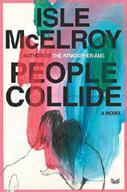
What happens when a man finds himself trapped in his wife’s body?
Eli and his wife, Elizabeth, are in Bulgaria, sharing a cramped studio while Elizabeth completes a prestigious though underpaid fellowship teaching American culture at a nearby school. One day, Eli leaves the apartment to visit Elizabeth in her classroom and discovers that somehow his mind is now inhabiting her body. His body, with Elizabeth presumably inside it, is missing. So begins Eli’s Kafka-meets-Freaky Friday journey to find his wife, all the while figuring out how to live inside her body. Much of the book’s brilliance is found in McElroy’s explorations of Eli learning to inhabit this new body, a body he’d once been familiar with, he’d interacted with and observed but finds uncanny to suddenly be. When Eli crosses his arms, he’s struck by how “unfamiliar it [feels] to hold Elizabeth as Elizabeth.” He misses his wife desperately, but considers how it isn’t necessarily her body he longs for (he now has a very intimate relationship with it, after all), but rather the “peculiar ways Elizabeth carried her body, for the feeling of looking up to see her across the room, knowing she was separate but with me.” Chapters occasionally switch to an omniscient third-person narrator who gives more insight into Elizabeth, showing how different perspectives, different bodies, offer multiple interpretations of shared realities. Occasionally, the novel seems like it falters—plot points and characters feel somewhat random, and high-tension moments are interrupted before reaching catharsis—but McElroy always manages to throw a
new, exciting wrench into the puzzle before the pacing has had time to slow down too much.
A creative, well-written exploration of marriage, gender, and desire.
Morrissey, Hannah | Minotaur (320 pp.) $28.00 | Oct. 31, 2023 | 9781250872340
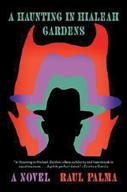
In a sleepy Wisconsin town, one girl is gone, two more brutally murdered.
As medical examiner Rowan Winthorp scrutinizes the corpse of teenager Madison Caldwell, she reflects on her 18 years in the “purgatory” of grim Black Harbor, Wisconsin. Madison, the best friend of Rowan’s daughter, Chloe, has been found strangled to death in a gully. Repeated attempts to contact Chloe fail, and Rowan comes to the slow realization that her daughter is missing. Morrissey’s second Black Harbor thriller drops the gothic trappings of her debut and goes straight for the jugular, with gruesome twists and intimations of menace from every quarter. Libby Lucas, a strange teenager who dabbles in taxidermy, harbors several secrets related to the murder. Ditto neighborhood hottie Reeves Singh, who was Madison’s boyfriend. Chloe’s father, Axel, a veteran homicide detective in Black Harbor’s police department, angrily charges into the probe of his daughter’s disappearance. The investigation takes a deeply unsettling turn when it appears that Chloe was being bullied by Madison and may have had an affair with her drama teacher, Mark Cutler, who’s also gone AWOL. Both parents are left to reflect on the recent changes in Chloe’s personality they’ve mostly ignored. A second teen victim raises the specter of a serial killer. The deeper Rowan and Axel dig, the more creepy characters they unearth on their way to a grisly solution.
While the core crime thriller packs a chilling wallop, the anxiety and soul-searching of the parents lacks both depth and verisimilitude, comporting uneasily with the serial killer’s extreme violence. Familiar tropes folded into a visceral thriller.
Ojeda, Mónica | Trans. by Sarah Booker Coffee House (184 pp.) | $17.95 paper Oct. 24, 2023 | 9781566896894

Six young people living together in Barcelona collaborate on a multimedia experience that messes with everybody’s heads. If one of the points of transgressive fiction is to trespass on the reader’s psyche, often to the point of revulsion, Ojeda’s novel is certainly a memorable example of the genre. This phantasmagoric mélange of technology, psychological distress, and body horror is a linguistic marvel and a perpetual engine for the heebiejeebies. It’s an oral history, of sorts, recounting the strange origins of a legendary game that appeared and disappeared on the dark web so quickly that information about it is nearly vaporous. The author’s interest in the online horror phenomenon known as creepypasta is clearly at play here. Six starving artists are living together in a flat in Barcelona when their disparate obsessions begin to commingle. Kiki Ortega, 23, is easily the moodiest and most confrontational, a student writing a pornographic novel about three adolescents that appears in large excerpts throughout the narrative. Iván Herrera is a writer infusing his art with his own body dysmorphia. El Cuco Martínez is the videogame designer born from Europe’s demoscene who makes the titular game possible. Finally, there are the Terán siblings, Irene, Emilio and Cecilia, who populate
the game—based on the mythology of the Backrooms and their disquieting use of liminal spaces—with their own horrific history of childhood abuse. “It was a space for personal exploration,” explains Iván. “You could think differently while playing. The Teráns designed it so that the player’s experience was a poem.” Intensely intellectual, horrific, and disturbing, this tiny nightmare is one of those peek-between-your-fingers pleasures if you’re into this sort of thing. As El Cuco reflects, “I suppose we’re all attracted to what disgusts us and want to scare ourselves, even though we don’t like to admit that fear is pleasurable.”
A disturbing novel that endorses darkness, suffering, and pain as means to a higher truth.
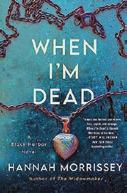 Kirkus Star
Kirkus Star
Palma, Raul | Dutton (288 pp.) | $27.00 Oct. 3, 2023 | 9780593472118
A skeptical spiritualist agrees to rid his enemy’s house of ghosts for a high price in this debut novel. Hugo Contreras is a babaláwo, sent by his boss, Lourdes, to banish spirits and cleanse homes around Miami. He’s never actually believed in any of this nonsense, but it pays and sometimes people seem happy afterward. Struggling with the recent loss of his wife, Meli, and the weight of staggering medical debt, Hugo is haunted by his own past. When debt collection attorney Alexi Ramirez comes calling, asking Hugo to cleanse his house in exchange for clearing Hugo’s debt, Hugo can’t say no. Despite his innate skepticism, however, Hugo finds that this haunting is far too real and holds connections to his past. As Christmas draws near, Hugo is given three days to exorcise the spirits
while making sure he doesn’t become a victim himself. Palma has created a rich and textured world, with the actual Miami that Hugo and Alexi inhabit touching the mystical world while remaining all too real. Metaphors that would be heavy-handed in another writer’s hands, Palma deploys with ease, swirling together ghosts, debt, colonialism, and guilt to create something greater. What happened to Meli is slowly unraveled until everything comes together at the very end in a triumph of pacing. Although Alexi is almost cartoonishly evil at times, he rings true enough to the stereotype of a rich man who is constantly justifying to himself what he’s done. Split into five sections, this novel is a quick read only because it’s so hard to put down; each passage is well written and propels the plot forward just enough to keep readers intrigued.
A masterful tale of demons, trauma, and debt.
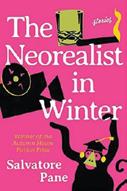
Pane, Salvatore | Autumn House Press (166 pp.) | $18.95 paper | Oct. 23, 2023
9781637680780
Eleven stories that cast different facets of Italian American identity in a neo-noir light.
In the collection’s eponymous opener, an aspiring director must choose between his next film or his family. “Do I Amuse You?” profiles an English professor, stuck in a no-tenure job and unmoored by his parents’ death in a car crash, who latches onto Goodfellas as his emotional safety blanket. In “Zeitgeist Comics,” a comic-book editor fires his whole department to save his job, newly expanded to include writing six monthly issues. A woman goes through a medical operation to “Take It Out of Me,” replacing her working-class memories with upper-class
ones. An about-to-be-canceled children’s TV sitcom goes rogue in “The Complete Oral History of Monkey High School,” spawning a dedicated subculture. Pane’s stories can range from SF to neo-noir, but many start from a similar beginning: an Italian American upbringing in Pennsylvania or New Jersey, “where everything smells like tomatoes and garlic.” A cinematic thread weaves through them, and it can feel as though scenes are written with the camera in mind, what with dramatic last-minute trains to Siena, British hand models riding in shiny cars, and deals made while picking at shrimp cocktails. The most enjoyable stories are formally inventive; “The Complete Oral History of Monkey High School” chronicles the show’s evolution in mock-documentary format, and “The Absolutely True Autobiography of Tony Rinaldi, the Man Who Changed Pro Wrestling Forever” includes angry footnotes from his ghostwriter. It’s in these stories that Pane’s sense of play is most evident, and they buoy the collection. Vivid fiction that asks how you can run from your past when it made you who you are.
Patterson, James & Mike Lupica | Little, Brown (400 pp.) | $21.00 | Sept. 25, 2023
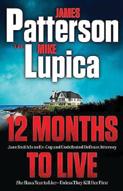
9780316405690
A Long Island attorney locked in the most crucial trial of her career learns that she has—well, you know.
All things considered, things have been going pretty well for Jane Smith. Sure, she’s twice divorced; she’s not all that close to her sister, Brigid, who also has cancer; and Rob Jacobson, the client accused of killing Mitch and Kathy Gates and their teenage daughter, Laurel, is a lying piece of trash. But Jane and her investigator, tavern owner Jimmy Cunniff,
have just been asked to look again into the high-profile Carson case, involving another family of three who were shot dead some years ago. Although she’s far from certain that Jacobson is innocent, Jane’s never yet lost a case, and she doesn’t intend to lose this one. She responds to the mountain of forensic evidence presented by Suffolk County D.A. Kevin Ahearn, who’s also never lost a case, by crowing that there’s no motive, until suddenly she’s confronted with a compelling motive and a whole new collection of lies that bring her up against crooked ex-cop Joe Champi, who may not have killed himself after all, and get Jimmy shot twice and beaten once, as if there were nothing else for him to be doing. Patterson seems entirely absent from this collaboration, which reads a lot more like Lupica, and not top-drawer Lupica. The overstuffed plot never seems any more believable than Jane’s damn-the-torpedoes response to her worsening symptoms. But it’s hard not to sympathize with an overstressed attorney who insists on performing herself daily because “crazy is kind of my thing.”
As fast-moving and forgettable as that fly you keep swatting in vain.
Kirkus StarPeters, Amanda | Catapult (320 pp.) | $27.00 Oct. 31, 2023 | 9781646221950
An Indigenous family is forever changed after one of their own goes missing.
Peters’ debut novel explores the lives of a Mi’kmaq family from Nova Scotia as they grapple with their decades-old trauma. In 1962, Ruthie, the family’s youngest daughter, goes missing from the berry farm in Maine where they work every summer. Told from alternating perspectives, the novel follows Joe, Ruthie’s older brother and the
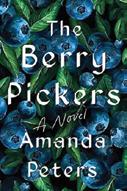
last person to see her before she went missing, and Norma, a young girl living in Maine with an aloof father and overbearing mother. Lying on his deathbed, Joe thinks back on his life, which has been filled with grief, rage, and all-consuming guilt: “People have given me their time, their love, their bodies, their secrets. And I’ve given so little.” After a brutal act of violence, Joe spent the next few decades running from himself and his sins, so as not to inflict more harm onto the ones he loves the most. Meanwhile, Norma recounts her life, which was plagued by a different kind of guilt, one that caused her to always be the dutiful daughter—the daughter who didn’t ask too many questions, ignored the lack of baby pictures, and chose to forget the vivid and painful dreams that plagued her childhood (“Each time I woke, I grieved for the woman cloaked in darkness and I tried to call out to her”). Eventually, Norma goes to college, becomes a teacher, and falls in love—and she spends the next few decades finding a way to live with the unsettling feeling that something isn’t quite right with her life. As Norma’s true identity is barely concealed, the novel is less concerned with maintaining a mystery than with exploring how brutality ripples out, touching everything and everyone in its wake. Peters beautifully explores loss, grief, hope, and the invisible tether that keeps families intact even when they are ripped apart.
Rivero, Melissa | Ecco/HarperCollins (272 pp.) | $29.00 | Dec. 5, 2023
9780063272491

In gentrifying Brooklyn, a mother and daughter grapple with the death of their small family’s patriarch and the ways his death cause them to reconsider their lives and values.
Three years after the death of 33-year-old Mónica Flores’ father, Martín, Mónica finds a small piece of paper tucked under his urn in the Brooklyn home she shares with her 63-year-old mother, Paula. In Paula’s handwriting, the paper reads: “Forgive me if I failed you. Remember that I always loved you.” This discovery—which Mónica keeps secret, despite her shock at its message—sets up the stilted relationship between mother and daughter and their navigation of grief and regret. Mónica (a.k.a. Flores, the name she adopted at work) is overworked and underappreciated at the Bowl, a tech startup selling “aquatic creations” (a refreshing break from the digital media startups that saturate millennial workplace fiction). Flores’ six-figure debt, as well as the impending end of her lease, weighs heavily on her mind, and she experiences a crisis of conscience when her colleague presents a plot to increase share prices at the expense of their boss’
position. Meanwhile, Paula spends her days working at a local discount store; taking walks with Vicente, a married friend with whom she shares a complicated past; and trying to figure out how she wants to spend “la tercera edad” of her life—years she’d imagined would be spent traveling between New York and Lima with Martín. Each judges the other’s decisions, and the disconnect and grudges they’ve carried since Flores was a little girl, once mediated by Martín, are amplified in his absence. Paula’s narration is the more affecting of the two perspectives; her insights about motherhood, marriage, and how both can feel like traps are simple but profound. Precarity—of identity, money, shelter, relationships, health—is the central tension for both women: How do we muster the strength and hope to move forward despite life’s fragility and disappointments? It’s a question rich enough to stand on its own; unfortunately, it’s crowded by side characters and minor plots. Still, Flores and Paula are so vibrant and endearing that they minimize these narrative frustrations.
An abundance of heart makes up for underdeveloped side plots in this story of life after loss.
Sarr, Mohamed Mbougar | Trans. by Lara Vergnaud | Other Press (496 pp.) | $19.99 paper | Sept. 26, 2023 | 9781635423273
A struggling Senegalese novelist falls deeper and deeper into a shadowy maze of literature and history.
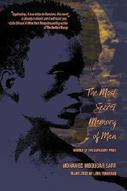
At the heart of this tale of literary identity is the mysterious (and fictional) Senegalese author T.C. Elimane and his 1938 novel, The Labyrinth of Inhumanity, a book that narrator and struggling 21st-century novelist Diégane Latyr Faye believes to be so

In Brooklyn, a mother and daughter grapple with the death of their family’s patriarch.
FLORES AND MISS PAULAA quiet and poignant debut from a writer to watch.


The author took home the science fiction prize for Venomous Lumpsucker.
Ned Beauman won the 2023 Arthur C. Clarke Award, the British literary prize given annually to an outstanding science fiction novel, for his book Venomous Lumpsucker, the Guardian reports.

Beauman’s novel, published last year in the U.S. by Soho, is set in the near future, when “biobanks” preserve DNA samples of extinct species. After a cyberattack wipes out the biobanks, a scientist and a businessman are determined to find a particular fish—for starkly different reasons. A critic for Kirkus called the book “a dire
warning, sick joke, and perceptive critique of a species of very questionable intelligence: humanity.”

Tom Hunter, the director of the award, said the book “takes science fiction’s knack for future extrapolation and aggressively applies it to humanity’s shortsighted self-interest and consumptive urg es in the face of planetary eco-cri sis. The result is a bleakly funny novel where the only hope for our species is working out the final punchline before it’s delivered.”

Beauman beat out five other novels for the award: The Red Scholar’s Wake by Aliette de Bodard; Plutoshine by Lucy Kissick; The Coral Bones by E.J. Swift; Metronome by Tom Watson; and The Anomaly, written by Hervé Le Tellier and translated by Adriana Hunter.
The Arthur C. Clarke Award was established by the legendary science fiction author in 1987. Past winners have included Jeff Noon for Vurt, Lauren Beukes for Zoo City, and Namwali Serpell for The Old Drift.—M.S.
brilliant, so profound that, upon reading it, “violent, pure life would come coursing back through your veins.” In the midst of trying to write his own masterpiece, Faye, also Senegalese and Paris-based, encourages his clique of writers to help him raise the banner for Labyrinth as a lost, liberating work of African literature. Upon researching the novel’s murky history, Faye discovers that it had incited polarizing debate in francophone Africa’s literary coteries. From what he can tell, the work pierced Parisian society like a bullet, made a harrowing mark, then disappeared along with its author. Faye decides he must find out what happened to Elimane while searching for the truth of his own murky identity. In time, he questions whether literature for him is a sort of windowpane, or even a shield, behind which he shelters in avoidance of life’s “battering ram to the gut.” Sarr investigates with keen psychological detail Faye’s and Elimane’s “foreign”-ness, their oft-patronized “exoticism,” their battles with the realities of homeland and the non-being of expatriate life in France. Faye’s and his peers’ tipsiness before the lure of lasting fame, or at least Instagram notoriety, the constant hum of gossip by which they are encircled, the bitter critical dismissals—all the elements of the writer’s consciousness are set out painstakingly. In the end, to whom who can Faye be faithful? How will he define himself, particularly on those nights when the sky, like Elimane’s chef-d’oeuvre, is “a labyrinth too, and it’s no less inhuman than the labyrinth of the earth”? Translated by Vergnaud, Sarr’s novel, though self-conscious and on occasion self-indulgent, nevertheless justifies itself as the winner of the 2021 Prix Goncourt, one of France’s most prestigious literary prizes. Despite its self-fascination, a novel of undoubtable prowess.
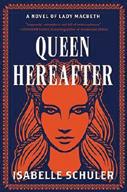
Schuler, Isabelle | Harper Perennial/ HarperCollins (352 pp.) | $18.99 paper Oct. 10, 2023 | 9780063317277
A prequel to Macbeth breathes life into the woman who inspired one of Shakespeare’s most iconic characters.
Like Shakespeare’s play, Schuler’s richly detailed first novel resonates with the ageless themes of betrayal, jealousy, and a lust for power. In 11th-century Scotland, Gruoch, descended from druids, is told by her seeress grandmother that she will one day assume a queen’s throne and be “immortalized.” Her first-person narration recounts a life molded by ambition, prophesies, and the determination to do whatever it takes to become queen. Gruoch is a compelling character who schemes and murders her way toward the throne of Alba (Gaelic for Scotland) by casting her power-seeking net over men, including her gentle husband’s brooding cousin MacBethad. Schuler, an actor and screenwriter, rolls out a cinematic background for this novel that takes us into the fortresses and encampments where royals scheme and conspire. Much of the dialogue is stage-worthy (Schuler has experience as a Shakespearean actor), and the novel unfolds like a film set against the backdrop of the brooding Scottish countryside. You don’t need to have read Macbeth to enjoy this sweeping tale, but you may want to after reading this novel. Fans of the Bard will enjoy spotting the Easter eggs cached in the narrative, such as “Look like the innocent flower, but be the serpent beneath it.” Fans of Natalie Haynes and Madeline Miller will be pleased to discover another author who reframes an ancient narrative to highlight a powerful woman traditionally overshadowed by the men who share her story.
An irresistible historical novel that lets a vilified queen have her say.
Scott, Caroline | Avon/HarperCollins (432 pp.) | $19.99 paper | Nov. 7, 2023 9780063325814

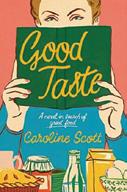
A 1930s author sets out to discover her country, her history, and her future.
Each time Stella Douglas describes what she does for a living, she takes a moment to have a bite-sized existential crisis. Stella is a food writer who has most recently been tasked with writing a history of British food. This undertaking strikes her either as overwhelmingly large—the economic depression, surfeit of imported goods, nearby rise of fascism, poor reputation of British cuisine and boosting of national morale must all be taken into account—or embarrassingly frivolous. “‘I’m realizing that I need to adjust my expectations, to accept that vol-au-vents and fashions in table napkins is as stimulating as my career is going to get,” she laments. It has been a year since Stella lost her mother and returned to Yorkshire to care for her grieving father. Her newest book provides a welcome excuse to tour various British hamlets in search of traditional fare and colorful anecdotes. In Grasmere she attempts to reverseengineer a famous gingerbread recipe, theorizing that the biscuit contains oats, candied ginger peel, and golden syrup, “doggedness and astringency.” In her excavation of culinary history, Stella is looking to uncover not only what makes a dish British but also what it means to be British. If the ginger was imported, she worries it might not belong in her book at all. Though Stella navigates loss, romance, and friendship, her most intricately depicted relationship is with her work. Stella’s first book sold few copies, and she begins to think her historical text might be a bestseller if she tweaks some of the history. As she researches and writes, she struggles with what kind of book this will be and what kind of
LAST TO LEAVE THE ROOM
writer, and person, she will become as a result. Stella’s recurrent concerns grow a bit thin with wear. Still, the sleepy plot has a gentle, provincial charm. Buttery passages are slathered with food imagery, and Scott conjures markets, pantries, and laden tables you won’t want to leave.
A sweet treat of a book.
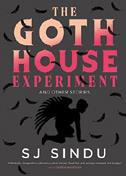
Sindu, SJ | Soho (208 pp.) | $19.95 Oct. 17, 2023 | 9781641295192
A collection of stories by an intriguing young writer.
The stories that comprise Sindu’s latest book are engaging and energetic, written with a charismatic narrative voice that seems capable of leading the reader just about anywhere. In the collection’s first and best story, “Dark Academia and the Lesbian Masterdoc,” a professor makes her TikTok debut as both her marriage and her health seem headed toward implosion. Then she gets an email from a student: “Dr. B! Saw the video! I know you didn’t ask, but if you thought a little more about lighting and composition, you could really be killing it.” In other stories, a boy one day sprouts wings from his shoulders; a woman finds solace from the early days of pandemic lockdown— and her wife—in brewing beer; and a man marches obliviously toward his own death, which is foretold in the first sentence. It’s an intriguing collection, but not an entirely satisfying one. Aside from the opening piece, the stories
seem to skim the surface of emotion while ignoring the depths. Likewise, in story after story, Sindu poses questions about gender, race, sexuality, and colonialism, among other things—but fails to interrogate them deeply. “Wild Ale” and “The Goth House Experiment” both have endings that feel abrupt and unearned, even somewhat cliché in their bombastic violence. “Miracle Boy” has a bit too much overlap with Sindu’s last book (Blue-Skinned Gods, 2021) as it wonders what might happen if the divine were to be made manifest. As a whole, the book feels somewhat skimpy, and taken one by one, the stories feel as though Sindu were taking shortcuts. Here’s hoping that next time, Sindu digs deeper.
An engaging but ultimately unsatisfying collection.

Starling, Caitlin | St. Martin’s (320 pp.) $29.00 | Oct. 10, 2023 | 9781250282613
An ambitious scientist loses herself in her work—literally.
The government and citizens of San Siroco, California, believe Myrica Dynamics privatized the city’s crumbling subway system for the public good. In truth, Myrica did so to conceal Dr. Tamsin Rivers’ quest to develop a new communications protocol involving technological mirrors mounted in subterranean geodesic domes. Success means Tamsin will “revolutionize the world” and be recognized as a genius, but while early
results look promising, there’s a problem. Since testing commenced, the city has been sinking three millimeters each week. More perplexingly, Tamsin’s basement has been sinking three centimeters each week—but unlike the rest of San Siroco, “not in a way that impacts the structural integrity of her home.” Tamsin hasn’t yet told anyone about her basement; nobody can definitively link the city’s subsidence with her research, and she doesn’t want Myrica to draw premature conclusions and shut things down. Tamsin begins working from home, hoping the cellar can provide answers; instead, a door appears from which a Tamsin doppelgänger emerges. At first Tamsin’s double, “Prime,” seems sweet and accommodating, but as Tamsin starts losing both time and memories and Prime becomes more assertive, Tamsin regrets her secretive tendencies. Part existential horror, part speculative fiction, and part paranoia tale, Starling’s latest thrills and chills while exploring the contextual nature of identity and the concept of personhood. Diabolical plotting, relentless pacing, and ascetic worldbuilding function in tandem with Starling’s staccato present-tense narration to maximize tension and drive.
At once visceral and introspective.
Swinson, David | Mulholland Books/Little, Brown (336 pp.) | $29.00 | Nov. 7, 2023 9780316528610
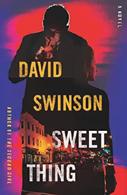
Noir crime in the voice of a deeply flawed cop.
First-person narrator Det. Alexander Blum and his partner, Det. Kelly Ryan, investigate homicides in the Washington, D.C., area. Looking into a murder, Blum finds a photo of a victim arm-in-arm with his confidential informant Arthur Holland. Blum goes looking for Arthur and meets his drug-addicted girlfriend, Celeste. Then Arthur dies soon after telling
Part existential horror, part speculative fiction, Starling’s latest thrills and chills.
Blum that Celeste had shot the victim, who’d been raping her. Now she wonders who’s going to take care of her. An overly sympathetic homicide detective will, as it happens. Blum and Celeste have sex, and he provides her with drugs that he had secretly hidden during a bust. And why not? She’s so beautiful, such a sweet thing. “She was like a fucking drug and only after a couple of hits I was addicted.” He steals evidence or hides and plants it, out of evident desire to help Celeste. But a reader might legitimately wonder if he would do this type of thing anyway. Blum’s lawbreaking on her behalf overcomes her mistrust of him, but he begins to realize “how much I had really fallen.” And speaking of f-bombs: if you removed every page that had one, this book would be a thin tome indeed. Anyway, Blum is a weak man who lacks willpower, and he knows it. He’s a bad cop, but he tells a good story. How far will he go to please Celeste? “I’d gone too far already,” he acknowledges, but “[s]he was worth it. How many times have I said that to myself?” Their lives swirl into a dark abyss that even his partner doesn’t know about. Author Swinson is a retired D.C. detective and a talented writer who brings grit and realism to the story.
This bleak, gripping novel is not for delicate sensibilities.
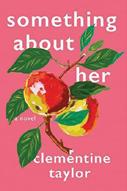
Taylor, Amy | Dial Books (288 pp.) | $27.00 Nov. 7, 2023 | 9780593595572
After a painful breakup, Perth native Ana seeks a fresh start in a new city, only to find that the past dies hard in the age of social media.
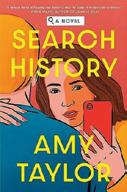
Leaving behind her closest friend and her passive-aggressive mother, Ana hardly looks back as she sprints toward a new job and a musty but cozy one-bedroom
apartment in Melbourne. Slowly, she adapts to living alone, makes friends, and even begins to fall for someone new. Ana enjoys Evan’s sense of humor, his “roguish smile,” and his confident texts, not to mention their sexual chemistry. But with the click of a mouse and scroll of a page, her excitement about their budding connection morphs into anxiety. Even though Ana had resolved not to look him up on social media, she just couldn’t resist peeking behind the digital curtain of Evan’s life. But now she knows that Evan’s last girlfriend, a beautiful, popular yoga instructor named Emily, was tragically killed in a hit-and-run, and the news sends her tumbling down a path of obsession and self-loathing. While anyone who has ever Facebook-stalked a crush will likely relate to the novel, debut author Taylor makes the story about more than just technology. Ana’s first-person narration illuminates the adversity she faced growing up, as well as this past’s impact on her approach to both social media and romantic relationships. Still, sitting with Ana’s thoughts, which are singularly focused on Emily and Evan, is exhausting and distancing. Ana might be slipping into a social media spiral, but readers can only watch her fall. It’s easy to relate to Ana, but harder to inhabit her mindset and become as obsessed as she is, in part because Evan and Emily are not particularly complex characters. Sexy scenes, amusing one-liners, and a playful critique of corporate wellness culture offer only small respites from Ana’s iffy social media analysis, baseless assumptions, and self-flagellation. Taylor’s image of dating in the digital age is up-close and honest, but her protagonist’s obsession is frustrating.
Taylor, Clementine | Putnam (288 pp.)
$28.00 | Nov. 7, 2023 | 9780593544303
Two young women are drawn together into a budding romance and must overcome hurdles to be together. When Maya, a Londoner, and Aisling, from County Clare, meet at a poetry club in Edinburgh, the two students are instantly attracted to one another. While Aisling has known she was a lesbian since a childhood friendship turned into a teenage relationship, Maya has just started dating her longtime crush, Ethan. The two young women grapple with their feelings separately—Maya questioning this sudden attraction to a woman and Aisling unclear of where she stands— as their friendship deepens. But once Maya ends things with Ethan to pursue a relationship, Aisling must confront the abuse she’s endured from her conservative Catholic mother, who caught her with her girlfriend as a teen and continues to torment her emotionally and physically. While Taylor has a keen eye for building intimacy between characters, the plot quickly becomes predictable. What’s more, set in 2013 and 2014, the novel lacks a broader context; Taylor stays focused tightly on Maya and Aisling and their families without interrogating how they fit into Irish and British culture. This is particularly disappointing in the case of Aisling and her mother’s fraught relationship, which could have been the
A woman seeking a fresh start finds the past dies hard in the social-media age.
basis for an examination of Ireland’s changing identity.
Absent broader considerations, this is a standard-issue romance that will give casual readers what they want.
Dartmouth Park
Thomson, Rupert | Other Press (432 pp.)
$18.99 paper | Oct. 17, 2023
9781635421675
A novel that turns a midlife crisis inside out, rewardingly.
Philip Notman is an ordinary academic, a historian returning home to London (and to his wife and a somewhat troubled 19-year-old son) from a conference in Norway, when he endures a psychological break that’s triggered by the simple detail of someone pressing a travel card to a reader on a tram. Feeling staggered, alienated, dislodged from his ordinary life and responsibilities, Notman decides to head to Spain for an indefinite stay...in pursuit, it seems, of a woman he met at the conference and had a couple of erotically charged interactions with. But Philip’s half-conscious attempt to lay off his fugue state on that kind of familiar crisis founders. What he’s suffering, he decides, is something more akin to “civilization sickness,” a collapse and inability to make sense of the expectations and demands of consumerist culture. He leaves Cádiz for a remote village in Crete where— having lost or cast off his phone, internet, language, etc.—he tries to reconnect with nature, simplicity, everyday joys. Eventually things curdle there, and when he’s turned away from an abbey in which he’d hoped to find refuge, Philip limps back to London, where he lodges first in a soulless chain hotel and then in a construction-site caravan where, as things grow ever grimmer and more disturbing, he begins to record a video “Notmanifesto” and plan a
fateful act of sabotage. The book’s form, too, is fragmentary—it’s made up of fleeting, sidewise musings, of phrases and impressions rather than of sentences (there’s not a single period). This may sound unpromisingly inward or familiar, but the result, in Thomson’s expert hands, is fast-paced and headlong; the book ends up rewiring the reader’s sense of what’s banal and what’s not. A work about estrangement and solitude that’s surprisingly rapid, engaging, light-footed.
The Beautiful and the Wild Townsend, Peggy | Berkley (304 pp.) $28.00 | Nov. 7, 2023 | 9780593638088
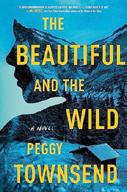
How little can you know about the husband you love? A Sacramento woman is about to find out.
Liv Russo awakens in a storage building in far-distant Alaska to the bitter memory that the husband whose death she’s mourned has imprisoned her and has no plans to let her go. Zigzagging between Then and Now, Liv gradually reveals the circumstances behind Mark Russo’s phony suicide: After Rick, who’d hired him at his motorcycle shop, started smuggling drugs to cover his debts, Mark agreed to help in exchange for a cut of the profits, then lost a truckload of methamphetamine to a thief and decided to fake his death and not tell his wife. Liv, who’s recently been through some unwelcome highs and some devastating
lows, uncovers evidence that sends her and their 7-year-old son, Xander, up north on his trail and finds him shacked up with Angela, a much younger mate whose relations with him clearly aren’t platonic, and 10-year-old Rudy, whose parentage isn’t entirely clear. When Liv says she’s leaving to find a divorce lawyer and tell the authorities where Mark is, Mark swipes her phone, wallet, and car keys; locks her up; and refuses to release her until she accepts her place in what he high-handedly styles his alternative utopian community. Even after Liv toes the party line far enough to earn release from her confinement, her subordination to the man she once loved renders her status not only dangerously marginal but grindingly creepy. The finale is stuffed with so many surprises that it feels like a long-deferred Christmas morning. Still another salvo in the suspense genre’s attack on the sanctities of marriage.
Tuttle, Lisa | NYRB Classics (144 pp.) $15.95 paper | Oct. 10, 2023
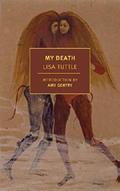

9781681377728
A grieving author, a mysterious painting, and an aging femme fatale of the Modernist set collide in Scotland with uncanny results. This slender but richly evocative novella opens with its main character at a crossroads. Tuttle’s unnamed narrator, a lifelong writer, is
A work about estrangement and solitude that’s surprisingly rapid and engaging.
DARTMOUTH PARK

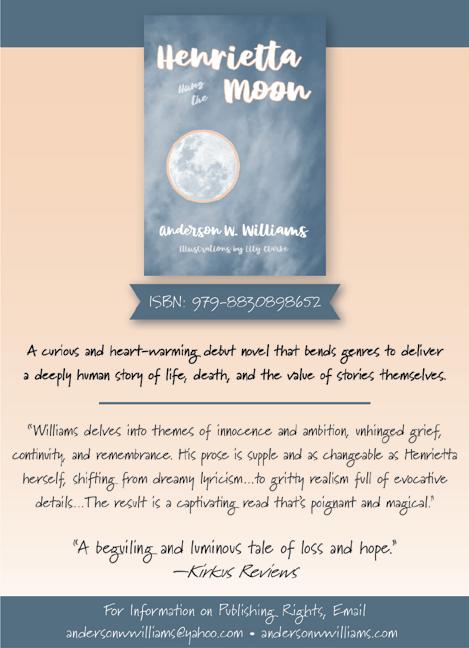

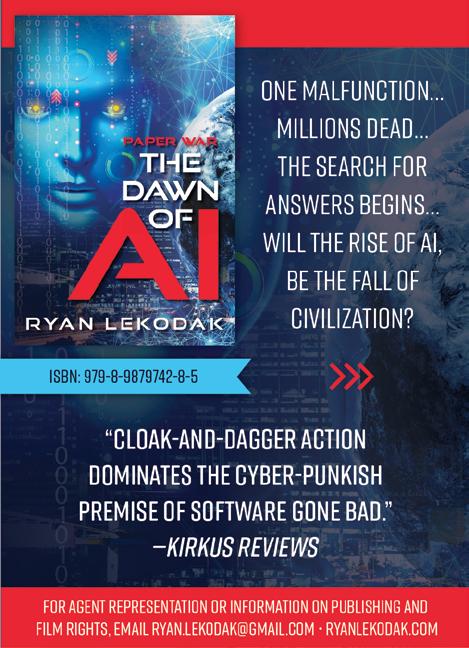
A stunning and evocative portrait of love, pride, and survival.
 By Andrew Michael Hurley
By Dwyer Murphy
By Andrew Michael Hurley
By Dwyer Murphy
A shrewd, offbeat original.

For more bingeworthy books, visit Kirkus online.


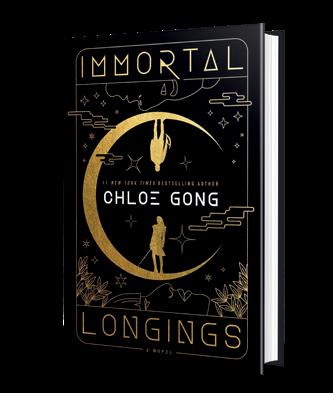

in the throes of a deep grief that has robbed her of her impetus to create. In the year and five months since her husband’s death, she has isolated herself in her coastal Scottish cottage, but now an invitation from her agent, Selwyn, as well as the pressing economic urgency of her dried-up income have brought her to Edinburgh to pitch a new project—if only she knew what it would be. A fortuitous stop at the National Gallery brings the narrator face-to-face with Circe, a favorite painting by fictional early 20th-century master W. E. Logan. The model for Circe was the enigmatic Helen Elizabeth Ralston, whose own novelistic career flashed like a meteor across the Modernist literary landscape and who has deeply influenced the narrator’s work. Still under the spell of Logan’s painting, a rendering of Circe among the swine, the narrator proposes to Selwyn that she will write a biography of Ralston, examining the truth of her tumultuous affair with Logan and the long career that followed the dissolution of their relationship. Selwyn’s connections bring the narrator to the home of Alistair Reid, an elderly collector who has in his possession a lost Ralston painting entitled “My Death,” which hides within it the key to the provocative mystery surrounding the true nature of Ralston and Logan’s relationship and the sudden, unexplained blindness that ended his career. The narrator sets out to interview Ralston, now in her mid-90s in Glasgow, but the answers she finds there threaten to destabilize everything she thought she knew about the literary world and her own life story. Full of twists and turns, the book conjures the rich inner lives
of women working on the fringes of artistic communities that often forget to memorialize or acknowledge them, even as Tuttle keeps taut the thread of suspense that animates the story. Powerful and empoweringly weird.
 Kirkus Star
Kirkus Star
Ulitskaya, Ludmila | Trans. by Richard Pevear & Larissa Volokhonsky | Yale Univ. (168 pp.) | $18.00 paper | Oct. 31, 2023 9780300270938
Centrifugal, pensive, often elusive stories by the one of the greatest living Russian writers (and leading anti-Putinist).
“After breaking up with her latest lover, Martha committed suicide in an indecently literary manner: having gone to the hairdresser and manicurist, she threw herself under a train.” So Ulitskaya, hitherto known in English for her novels, dispenses with the high-living mother of a pensioner who’s determined to take a quieter route out of the mortal world than
her mother took decades earlier; instead, Alisa determines that she’s going to stock up on pills and depart on her own terms. The trouble is, she needs a doctor to write a prescription, something easier said than done, and a proposition packed with tragedy all on its own. In another story, lesbian lovers marry in Amsterdam, “the most tolerant city in the world,” though when their family comes from Azerbaijan and Armenia to find two women at the altar, they intolerantly turn around and fly home, “having thereby refused to participate in the forthcoming blasphemy.” The couple is happy all the same—until, that is, death intervenes, as it so often does in Ulitskaya’s stories. Punctuated with a handful of portentous intervening poems (“I’m entering the final episode, / and whether it’s sweet or sour matters not, / so long as it formulates the ultimate meaning”), the stories have a sometimes surreal edge, as with an evocative ghost story in which a pathologist is visited by the spirit of a young man on whom he has just performed an autopsy. The stories are, beg pardon, haunting, though marked by occasional odd turns of phrase that would seem to be direct renderings of idiomatic expressions that don’t quite travel well in English: “Normal men with appropriate sexual attributes never struck root in this family.” “He’s a student of mathematics, not a dog’s prick!” Even so, the stories are marvels of economy and the unexpected twist, each a memorable tour de force.
A welcome introduction to the short fiction of an essential writer.
A love triangle plays out against the backdrop of history: operatic, sometimes soap operatic, and memorably vivid.
ABOVE THE SALT
A welcome introduction to the short fiction of an essential Russian writer.
THE BODY OF THE SOUL
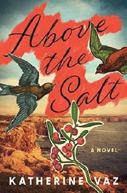
Vaz, Katherine | Flatiron Books (432 pp.)

$29.99 | Nov. 7, 2023 | 9781250873811
Vaz follows star-crossed 19th-century lovers over eight decades and two continents as their personal crises intersect with Portuguese and American history.
Poetic language creates a dreamy, over-the-top atmosphere in which “air sighed like a church organ’s coda” for this sweeping saga of thwarted love overstuffed with characters and events. Over and over, soul mates John Alves and Mary Freitas reunite only to separate. Unlucky timing, world events, and meddling by mean-spirited acquaintances are the main culprits, although the lovers’ impetuous choices also play a role. They first bond as children in 1846 on the Portuguese island of Madeira shortly before local Catholics violently attack Protestant converts; John’s family are converts who must flee, Mary’s father a Catholic whose religious tolerance gets him in trouble. When they next meet in 1860 Illinois, Mary, not yet 21, is engaged to another man. Edward Moore is a wealthy American 10 years Mary’s senior who has employed her to run his greenhouse. While John is the novel’s leading man, a model of rectitude and unwavering passion, Edward is more complicated and therefore more endearing. His sense of privilege and social awkwardness
is offset by self-awareness, sensitivity, broadmindedness, and progressive attitudes—for instance, he pays Mary as much as a man. Mary’s passion for John survives dramatic events—phony letters designed to tear them apart, parental disapproval, the mistaken belief he has died—but is never tested by actual daily life together. Edward and Mary push and pull each other in their professional as well as their emotional partnership. While she always adores and idealizes John, Mary underestimates Edward for years. The love triangle plays out against the backdrop of history. The Civil War and the San Francisco earthquake play disruptive roles, and Lincoln is one of many historic figures with whom the characters interact.
Operatic, sometimes soap operatic, and memorably vivid.
Zhou, Emily | LittlePuss Press (168 pp.)
$19.95 paper | Oct. 17, 2023
9781736716847
Tender, incisive portraits of trans womanhood, the ties that bind women to one another, and the complex relationships of youth.
Simultaneously aligned with queer coming-of-age story collections of previous generations and dexterously subverting and revitalizing the genre, these seven stories offer a glimpse into the future of queer literature. They capture Gen Z’s best
traits: intuitiveness and self-assurance. The characters are candid and more self-aware than previous generations, but focused on the normal concerns of youth: relationships, sex, work, and how to be a person in the world. The dialogue feels natural and brings each character to life. In the first story, “Means to an End,” 20-yearold Leonora has dropped out of NYU and is “the fourth tenant of the lesbian love triangle apartment.” Her roommates’ constant conflict creates a fraught living environment that frames her own low-frequency internal instability as she grows into herself and tries to figure out how to live life on her own terms. Relying on the emotional growth of the characters for propulsion, Zhou scatters her text with poetic gestures that hint at resolution but leave the characters’ preoccupations ultimately unresolved. For example, thinking about a tense conversation the night before with a woman she had feelings for, Leonora describes the apartment in detail and notes that “the light was turning soft and forgiving.” Then she does the dishes that had caused tension among her roommates the night before: “At the end of the dishes, there was an empty sink. I watched the water run down the drain for a moment.” These images suggest that, while the messiness of her life and her relationship with the woman is tidied up for now, a sense of emptiness remains; the character conveys her emotions without directly saying how she feels. The final story, “Gap Year,” documents the narrator’s life in a series of dated fragments that conclude with an insight that feels true to the protagonists of all the other stories: “Maybe what I was trying to capture in these pages was your sense of purpose, the way you seemed to cut a straight, clear path through the world….[Sometimes you] would make me feel like everything extraneous had fallen away and I lived suddenly in a clean, clear reality that seemed navigable.”
Could use more polish, but this bright writer is leading the way into an exciting future for queer literature.
Tender, incisive portraits of trans womanhood and the ties that bind women.
GIRLFRIENDS
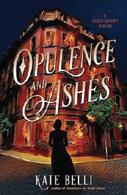
Belli, Kate | Crooked Lane (336 pp.) | $30.99 Oct. 17, 2023 | 9781639105304
Now engaged to be married, reporter Genevieve Stewart and philanthropist Daniel McCaffrey fight for their lives against powerful forces in New York City.
Genevieve grew up in a well-to-do society family with a feminist mother interested in societal problems. Daniel started life in a poor Irish family but by chance became heir to a fortune and was educated at the best schools. In April 1890, both are working to improve life for the poor. At a party for Daniel’s charity, the Society to Aid Social Ills, Genevieve and their friend Rupert Milton notice someone watching her. When they confront the watcher, he claims to be Daniel’s longlost brother, Connor. Daniel wants to believe that Connor really is his brother, but knows he may be a fraud. As he continues to investigate his past, he and Genevieve are drawn into the investigation of a series of arson attacks on progressive institutions. Among the targets is Daniel’s photographer friend Dagmar Hansen, whose studio is burned to the ground while Daniel is examining his images of sweatshops; the two men barely escape with their lives. Genevieve, who has won her editor’s grudging permission to write a story about a fire at the Sunflower Mission House, also is put in danger after she learns that the mission was supplying residents with contraceptives, illegal under the draconian Comstock Act. Seeking information about birth control for herself puts her in a precarious situation. Their investigations make it clear to both that money rules the world and that many of those who have it will do unspeakable things to keep it.
The several mysteries are greatly enhanced by social commentary and the unsettling feeling that the battle continues.
Brook, Allison | Crooked Lane (304 pp.) $29.99 | Oct. 3, 2023
9781639104833
Brown, Rita Mae | Ballantine (272 pp.) $28.00 | Oct. 24, 2023 | 9780593357576
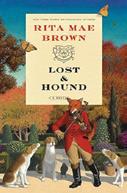
A Connecticut librarian, her fiance, and a ghostly friend solve a series of crimes.

Clover Ridge librarian Carrie Singleton’s beloved GreatAunt Harriet and Great-Uncle Bosco stand in for her distant parents, so she’s anxious when Bosco suffers a heart attack. Her cat, Smoky Joe, and Dylan Avery, her fiance, do their best to cheer her up, but they’re soon overwhelmed by art forgeries, murder, and wedding plans. Dylan, an investigator who recovers stolen art, is off to Chicago to clear out his late great-great-uncle’s apartment and pick up a valuable Terrance Haggerty painting left to him. As the library prepares to open a new wing, Carrie is involved in festivities involving the library board, the staff, council members, and wealthy donors, all of whom often have differing views. The first event in the new wing is interrupted by a septuagenarian named Emily Pierce Fielding, who claims that the building belongs to her. Carrie’s awful night is capped by a call that Dylan’s been attacked and his painting stolen. The evidence leads to a ring of art forgers Dylan and his partner plan to track down. When local businessman Victor Zalinka invites Carrie and Dylan to his magnificent house to pick out artworks from his collection to lend to the library gallery, Dylan immediately recognizes that Victor’s Haggerty is a forgery. The murder of local gallery owner Martha Mallory raises the stakes. Carrie’s friend Evelyn Havers, the ghost who haunts the library, wants Carrie to find the killer of her old friend Martha, who harbored many secrets.
A complex mystery whose many pieces eventually snap into shape.
A weird murder poses a puzzle for an eclectic group of fox-hunting friends.
Jane “Sister” Arnold is Master of Foxhounds for central Virginia’s Jefferson Hunt. Although fox hunting is thought of as an elitist sport, Jefferson has members ranging from the very rich to those that just love horses, dogs and other critters, including the wily foxes whom the hounds never catch. Sister, in her 70s, is a bruising rider and a good friend to club members, some of them people of color and/or members of the LBGTQ community. All this matters not at all to Sister as long as they respect animals and the country they hunt over. An early hunt is so foggy that not until the next day does Sister’s brother-inlaw, Sam, spot a dead body tied to a chair along its route. No one in the club knows the dead man, who’s finally identified as an importer-exporter with no apparent connection to the hunt. After their hunts, the group gathers for food, drink, and often long philosophical discussions on religion, politics, improving the environment and other topical issues. Now they’re struggling to come up with fundraising ideas to support the hunt. When one member is attacked and another’s stamps are stolen, they must consider possible connections between the dead man and the hunt club. Figuring out those connections will be the key to solving the murder. The animals may not be able to voice their concerns, but they try to nudge the humans in the right direction. A meager mystery but a wonderful primer on fox hunting from the varied viewpoints of human and animal participants.
SYRUP TO NO GOOD
Bruns, Catherine | Poisoned Pen (312 pp.) | $8.99 paper | Oct. 31, 2023 9781728253961
Her best friend’s wedding poses multiple challenges for the owner of a maple syrup farm.
Life has had its ups and downs for Leila Khoury since she returned home to Vermont after a teaching stint in Florida. The low point was certainly the murder of her father, Victor, who’d built the family maple syrup farm, Sappy Endings, into a thriving business. But since taking the reins, she’s found that working at the farm and expanding its footprint in the community bring her a sense of independence and accomplishment. Her promising relationship with Noah Rivers, who oversees production at Sappy Endings, is also a high point. So she seems in a good place to join her best bud, Heather Turcot, in navigating the joys and stresses of Heather’s upcoming wedding. But danger always lurks. Mark Salem, her former fiance who’s back in town, lets Leila know that five years after dumping her a month before their wedding, he still loves her and wants her back. Instead of delighting her, his declaration threatens both her newfound self-reliance and her bond with Noah. But the lowest of the lows comes when Heather’s Aunt Monica is stabbed to death at Heather’s bridal shower. Heather’s Uncle Grant, a major financial backer of the wedding, insists that
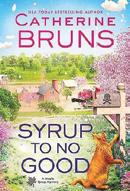
she cancel her nuptials, even though a fairy tale wedding has been the dream of her lifetime. Leila, who unmasked her father’s killer, is ready to retry her hand at detection. But tracking a scoundrel who killed once before puts Leila in greater danger than all her previous challenges.
The heroine’s quest to achieve balance in life should appeal to cozy fans who like a good roller coaster ride.
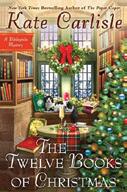
Carlisle, Kate | Berkley (320 pp.) | $27.00 Oct. 24, 2023 | 9780593637685
A married couple with a long history of detecting travel to Scotland for a joyous occasion only to find themselves embroiled in murder and theft.
Former spy Derek Stone and his bookbinder wife, Brooklyn Wainwright, are hosting a big family Christmas dinner in California when their friend Claire phones to say that she and her Scottish beau, Cameron MacKinnon, are getting married and they want Derek, Brooklyn, and Brooklyn’s parents to attend their wedding in Scotland—on New Year’s Eve. Claire seems worried about 12 Christmas-themed books, some of them very valuable, that went missing from the castle library after the couple hired a librarian to organize it. Castle MacKinnon, located on the shores of Loch Ness, features lovely views
and incredible food. But a major fly in the ointment is a local family who seems to think their oldest daughter, Bitsy, should be marrying Cameron and are doing everything in their power to make Claire’s life a misery. Scary noises at night hint at a haunting, but Brooklyn’s more concerned about Olivia, the librarian who left the library door locked and who has an odd taste in books and an interest in Wicca. Bitsy uses the Scottish New Year’s tradition of welcoming neighbors as an excuse to move into the castle, forcing a postponement of the wedding. Soon after Bitsy’s unwelcome arrival, a local lad is found murdered in a castle closet. Brooklyn naturally puts the missing books on the back burner, and the wedding is postponed a few more days to allow her to investigate. Even though another murder follows, all the castle’s problems may be tied together if the sleuths can only untangle the clues.
Pleasing characters and vivid descriptions of glorious Scotland overshadow the mystery in this quirky Christmas tale.
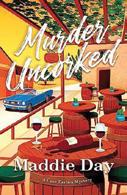
Day, Maddie | Kensington (288 pp.) | $27.00 Oct. 24, 2023 | 9781496742308
Already the author of mysteries set in Cape Cod, Indiana, and a British retirement village, fourthgeneration Californian Day launches a series set in her native Sonoma wine country. Vino y Vida offers tastings of the Alexander Valley’s best wines, curated by Southern California transplant Cece Barton. But when Vincent Sardo puts the arm on her to host a Vineyard Valley Association event, she bristles. His proposal would lose her a day’s worth of business on Saturday, her most profitable day, and he makes it clear he’d expect her to pay for the wine as well. Sardo’s unexpected death ends his
badgering but poses another challenge: Will his murder disrupt the functioning of the little historic complex that houses her wine bar? There are plenty of suspects, including Inez, Sardo’s estranged wife, and Nico Rispoli, owner of the Vino y Vida building. But Detective Sergeant Kelly Daniell of the Colinas police seems too interested in Cece for her comfort. Cece’s twin sister, Allie, reminds her that she’s no stranger to sleuthing, but Cece doesn’t want anything to distract her from reestablishing a positive relationship with her daughter, Zoe, now in her second year at the University of California, Davis. She’s also exploring a relationship with handsome Benjamin Cohen, who’s staying at Allie’s bed-and-breakfast. Daniell’s persistence, along with customers’ speculations about how Vino y Vida may have contributed to Sardo’s demise, make Cece rethink her priorities.
Day’s series debut more than does justice to her West Coast roots.
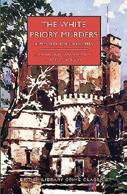
Dickson, Carter | Poisoned Pen (320 pp.)
$14.99 paper | Nov. 7, 2023
9781728278650

Goldberg, Lee | Severn House (320 pp.)

$31.99 | Nov. 7, 2023 | 9781448310135
The unmatched master of the impossible crime returns to the limelight in this second case for Sir Henry Merrivale, originally published in 1934.
James Boynton Bennett, the nephew H.M.’s just met for the first time, has been invited to spend Christmas at the White Priory, the ancestral home of the Bohun
family. The colorless Bennett is outshined in every sense by fellow guest Marcia Tait, a newly crowned Hollywood star who ran out on Cinearts Studios to take a leading role opposite Jervis Willard in The Private Life of Charles the Second, a new play written by Oxford historian Maurice Bohun and produced by his brother, John. But Bennett’s on hand when John Bohun finds Marcia beaten to death in the Queen’s Mirror, an outbuilding ringed by a pristine coating of snow that’s unbroken by any footprints except John’s. As usual in Dickson, the question of whodunit—movie director Carl Rainger? press agent Tim Emery? Louise Carewe, daughter and private secretary to powerful newspaper magnate Lord Canifest, who’s supposed to be backing the show?—is less interesting than the question of how the killer escaped the murder scene without leaving a trace. Though the few hours before H.M. arrives at the White Priory to investigate seem to take forever, Dickson keeps the pot boiling with a poisoning subplot, a false confession, and two ingenious theories of the murder that turn out to be much less compelling than the true explanation. If this all sounds like kitchen-sink plotting, rest assured that the denouement, by far the best thing here, is brilliant in its simplicity and conceptual elegance.
Nothing says Christmas like a pair of corpses from 90 years ago.
Hold onto your hats. A fatal but otherwise routine accident in rural California turns out to be not exactly either one. Fired from the LAPD over an affair with a junior officer, Beth McDade has to settle for working as a detective for the San Bernardino County Sheriff’s Office in Barstow. The town has its share of burglaries and such, but Beth’s latest case is something else entirely. A ghostly figure has appeared screaming out of thin air and run into the path of a mobile home outside Peggy Sue’s in Yermo one stormy night. The dead man has no identifying papers, and the contents of his pockets all date from the 1880s. The weirdness is only intensified by the discovery of a skeleton that seems to be that of missing chef and food writer Owen Slader, even though pregnant coroner Amanda Selby identifies it as a century old despite its Tommy Bahama shirt and state-of-the-art dental and orthopedic implants. So what’s going on here? Beth’s increasingly bewildered inquiries lead her to focus on the history of the Calico silver mine, which flourished more than a century ago, and the possibility that the best place to get answers may be the nearby Marine Corps Logistics Base, whose security chief, Bill Knox, is another of Beth’s ex-flings. The Marines, being Marines, aren’t eager to enlighten her, and she’s left searching for leads while the story follows Owen in the days before his remains are discovered, into worlds that will seriously challenge readers’ suspension of disbelief even as they expand the boundaries of the police procedural in rip-roaring ways. If you have time for only one mystery, one Western, and one SF this year, this will ding all three targets.
Hancock, Anne Mette | Trans. by Melissa Lucas | Crooked Lane (336 pp.) | $29.99

Oct. 10, 2023 | 9781639104895

A dementia patient dying of cancer in a nursing home holds the key to the third case for Copenhagen DS
A model of the police/reporter partnership that’s especially effective in managing the counterpoint between its two leads.
Jones, Stephen Mack | Soho Crime (360 pp.) $27.95 | Nov. 7, 2023 | 9781641294959

books; they’ve listened to the white man’s music; they’ve tried the white man’s recipes; they’ve lived for years under the white man’s thumb; and they earn every drop of the energetic and self-conscious disdain indicated by Snow’s faux-apologetic remark, “I was just the worst as an altar boy.” Series fans will be happy to learn that the cesspool of Detroit politics can’t hold a candle to the Vatican.
Erik
Schäferand Demokratisk Dagblad reporter Heloise
Kaldan.Heloise, who’s been visiting Jan Fischhof repeatedly for an article about a charitable group called Vigil, is spooked when, called to his bedside by a volunteer convinced that he’s at death’s door, she hears him mutter something about “Mads Orek” and his fear that he’ll be held accountable for his wrongdoings. Jan’s feeble attempts at backtracking the next time she sees him convinces Heloise that she needs to dive into the case of smalltime criminal Tom Mázoreck, who drowned when his boat caught fire back in 1998. Confronted by Mogens Bøttner, a former colleague turned supervisor who forbids her to work the story further, she abruptly announces that she’s taking a week off. Schäfer meanwhile is challenged by superstar forensic scientist Jakob Sandahl, who blithely maintains that has-been jazz great Lester Wilkins’ bloody death was due to natural causes. So unlike virtually every other police officer in Denmark, he’s ready to work intermittently with Heloise, who links Mázoreck’s death to the vanishing a year or two earlier of Mia Sark, 19, and Nina Dalsfort, 17. Both disappearances are also connected to gang leader Jes Decker, whose pit bull met a condign fate soon after he attacked Mázoreck. Jes has mostly settled into a managerial role, but his son, René, makes no secret of his desire for Heloise to let sleeping dogs lie. As the investigation moves forward, there seems to be less and less room for surprises, but Hancock saves a whopper for the deceptively quiet climax.
August Octavio Snow, who was fired for daring to lift his head above the corruption swamping the Detroit Police Department, is confronted with his fourth and biggest case yet. Called home from Oslo, where he’s been helping the local cops and nuzzling with his girlfriend, anthropology professor Tatina Stadtmueller, by the hospitalization of his elderly neighbor Sylvia Zychek following a heart attack, Snow breathes easier after his old buddy, Ojibwe cybersecurity expert Lucy Three Rivers, hacks into Sylvia’s bare-bones Medicare supplement provider’s database and arranges top-quality care for her. But more trouble is brewing. Father Mieczyk Grabowski has retired from his pastoral position for reasons that are disturbingly unclear. The arrival of Father Dominioni Petra, from the Vatican Office of Criminal Investigations, and the report of nearby Father Michael O’Shannon’s suicide don’t clear up the mystery, but they definitely raise the stakes. Long story short: Father Grabowski has been marked for execution by Deus X, a network of assassins dedicated to avenging the Catholic clergy’s decades of sexual abuse, one abuser at a time. There’s much, much more, since Jones is more notable for fertile invention than discipline. The real treat here, though, is the distinctively celebratory way Jones—who has a Mexican American mother and a Black father—and his old friends and allies of convenience speak truth to power. They’re read the white man’s
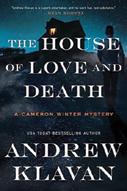
Klavan, Andrew | Mysterious Press (312 pp.) $26.95 | Oct. 31, 2023 | 9781613164464
A former proxy assassin seems determined to work off his guilt by immersing himself in unrelated mysteries.
The job Cameron Winter did for a shadowy federal agency wasn’t to kill people but to arrange for them to be killed by someone else. After a confrontation with someone he had to shoot directly, he goes into retirement as a teacher of Romantic poetry at a university in the Chicago suburbs, where he catches a news story about the Wasserman family— psychologist Norman, community volunteer Marion, their teenage daughter, Lila, and Agnes Wilde, the live-in nanny for their 7-year-old son, Robert—all but the boy shot to death in their home in upscale Maidenvale, which was then set afire. There’s much to baffle Inspector Roland Strange and his colleagues, but the mystery that Winter finds irresistible is why the nanny, who lowered her


The novelist wrote about her experiences with the syndrome in a Washington Post op-ed column

In an op-ed for the Washington Post, author Madeline Miller wrote about her experiences battling long Covid.


Miller, known for her novels The Song of Achilles and Circe, wrote that she contracted Covid-19 in February of 2020, the
month before the disease shut down the U.S. for several months.
“In the weeks after infection, my body went haywire,” she wrote. “My ears rang. My heart would start galloping at random times. I developed violent new food allergies overnight. When I walked upstairs, I gasped alarmingly.… Looking at old photos, I was overwhelmed with grief and bitterness. I didn’t recognize myself. On my best days, I was 30 percent of that person.”
Miller wrote that she
soon learned she had long Covid, the name given to a syndrome that affects those who have been infected with Covid-19. Long Covid is poorly understood, but tends to cause symptoms of fatigue, memory loss, and muscle weakness.
“There is no cure for long covid,” she wrote. “Two of my friends went on to have strokes. A third developed diabetes, a fourth dementia. One died.”

Miller wrote that she still suffers from fatigue, but that she’s writing
again, and that she still wears masks.
“So how long am I going to do this? Until indoor air is safe for all, until vaccines prevent transmission, until there’s a cure for long covid,” she wrote. “Until I’m not risking my family’s future on a grocery run. Because the truth is that however immortal we feel, we are all just one infection away from a new life.”—M.S.

MURDER UNDER THE MISTLETOE
charge from a second-story window and urged him to run away, didn’t follow him herself. Interspersed with the story of Winter’s investigation is a series of counseling sessions with therapist Margaret Whitaker in which he recounts his involvement in his last and most disturbing case, which climaxes with his memorable confession: “For the sake of the mission, I drew her into my arms.” Klavan, who’s more interested in multiplying suspenseful plotlines than in tying them neatly together, provides an incidental high point: his hero’s monologues during what must be the most revealing therapy sessions ever. A compelling demonstration of why a self-tormenting killer makes the perfect detective.
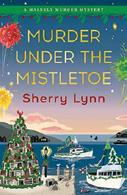
Lynn, Sherry | Berkley (288 pp.) | $17.00 paper | Nov. 7, 2023 | 9780593546673
A real-life Grinch meets a mysterious end, leaving his latest adversary to find out who could have wanted him dead.
Kinsley Clark, the proprietor of SeaScapes landscaping, is in the mood to bring some holiday cheer to Harborside, Maine. She’s gathered a crew of friends, including her bestie, Becca, to make kissing balls to decorate the town just in time for the holidays. Maybe the good tidings these 17th-century clusters of greenery symbolize will brush off on Kinsley, who’d like a little good luck with her crush on Pete O’Rourke. Pete’s
perpetual workload as the owner of the Blue Lobstah bar may have stalled their romance even before their first kiss, but Kinsley’s no quitter, and she’s determined to find out if she and Pete have a future together. While Kinsley, Becca, and the kissing ball company all have Christmas spirits in mind, not everyone is in a holiday mood. Grouchy town alderman Chris Chesterfield, whose wife, Mallory, has generously donated holly branches to the cause, yells at Kinsley for charging the town for the kissing balls. Though Chris is certainly a sourpuss, Kinsley worries that she may have taken advantage of Mallory. But nothing can dampen her spirits for the annual boat parade, where Chris is fittingly dressed up as a holiday Grinch—the perfect outfit for someone who’s about to be killed under mysterious circumstances. Kinsley turns from one of Chris’ enemies to the investigator of his possible murder, helped by the always-willing Becca and the ever-reluctant Pete. A solid series that would need something more special to stand out in a crowd.
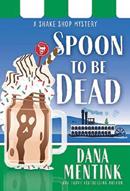
Mentink, Dana | Poisoned Pen (336 pp.) $8.99 paper | Oct. 31, 2023 | 9781728231617
The owner of an ice cream shop faces down winter in Upper Sprocket, Oregon. Unlike coastal parts of the state, Eastern Oregon has cold winters, and Trinidad Jones isn’t at all sure that residents will flock to her Shimmy and Shake Shop as December rolls around—so
she decides to dip her toe in the hectic world of catering. Hoping to land a gig at the posh private party scheduled aboard Leonard Pinkerton’s Sprocket Steamboat, she and her grandad, Papa Luis, work frantically to develop a menu of frozen treats, including the dairy-free option demanded by the exacting party hosts. Trinidad’s mission is complicated by the reappearance of her ex-husband, Gabe Bigley, a convicted fraudster out on parole who hopes to settle back in Upper Sprocket. She’s made her peace with the split from Gabe, whose other two exes, Juliette and Bonnie, are her best friends. But she’s unsettled by the news that Bonnie, mother of Gabe’s only child, Felice, plans to remarry the dirtbag. Unease turns to panic when Gabe reels into Shimmy and Shake, says he may have just killed someone, and passes out. That someone turns out to be birdwatcher Oscar Fuentes; Gabe, hospitalized with a concussion, doesn’t remember hitting him with a borrowed car. Not only does Trinidad find herself with temporary custody of Oscar’s parrot, Scooter, but since police chief Cynthia Bigley, Gabe’s sister, is sidelined from the case, the confection creator decides it’s her job to investigate. Whipping up a hundred hot chocolate bombs, it turns out, is nothing compared to uncovering the dark doings that led to the bird browser’s demise. Standard small-town shopkeeper hijinks.

Penney, Elizabeth | Minotaur (320 pp.) $8.99 paper | Oct. 24, 2023 9781250787743
A librarian’s move to England is a refreshing change, except for the murders.
Molly Kimball and her mother have answered her great-aunt’s call for help with
her family’s Cambridge bookshop, Thomas Marlowe—Manuscripts and Folios, and Molly has developed a romantic relationship with Kieran Scott, bike shop owner and member of an aristocratic family. Kieran’s mother, Lady Asha, is paying Molly to catalogue the library at Hazelhurst House, with a bonus side job investigating the authorship of The Fatal Folio, a gothic novel published under the byline Selwyn Scott. Since the family has no Selwyn on record, Molly is commissioned to ferret out the real author, who might be a Scott ancestor hiding behind a pseudonym. Kieran’s cousin, Oliver, a professor at Cambridge University’s St. Aelred College, would be more than happy to connect the modern gothic he’s writing with publicity on The Fatal Folio. On Guy Fawkes Night, Molly, Kieran, and their friends Daisy and Tim are set to meet Oliver at the Master’s Lodge Gate when they find a young man bleeding to death, stabbed with a knife stolen from St. Aelred. Thad Devine was one of Oliver’s postgraduate students, and his complaint that he had been graded unfairly could have stymied Oliver’s promotion to full professor. That puts Kieran’s cousin high on the list of suspects, but after meeting some of Thad’s friends, Molly realizes he was not universally beloved. The friendship she forged with the investigating officer in earlier cases gives Molly an edge in this one, as stolen books, campus politics, and her surprising discovery of another Selwyn Scott manuscript make solving the murder difficult and dangerous.
Plenty of suspects combined with interesting background on gothic novels enliven this Cambridge Bookshop mystery.

Riley, Vanessa | Kensington (320 pp.)
$27.00 | Oct. 24, 2023 | 9781496738677

A resourceful baroness solves a theatrical murder while battling societal prejudice.
As the satiric comedy A Bold Stroke for a Wife unfolds on the stage of London’s Drury Lane Theatre in 1806, an even more compelling drama is playing out behind the scenes. Following a heated argument with actor Alexander Hildebrand, playwright Anthony Danielson is stabbed in the back with a spear by an unseen killer. In the audience, Abigail Carrington Monroe, aka Lady Worthing, waits patiently with her godfather, Neil Vaughn, for the final act of the play to begin. As she elaborates on her justifiable distress over her disreputable husband, currently “exploring the world,” and more immediately on the burglary of her home just hours ago, it becomes clear that Vaughn’s plan to use entertainment to distract her from her recent troubles has gone terribly awry. The murder proves to be a more successful distraction, since Abigail, who’s already acquired a taste for detection, can’t help but investigate. Riley’s Regency Era thriller diverges from most period mysteries in two respects: The heroine’s first-person narrative is brisk and economical, and the whodunit plot is woven into Abigail’s story of survival in a judgmental society. As if her abandonment by her husband were not challenge enough, Abigail faces bigotry and sexism as a Black woman as well. It’s her empathy for Danielson’s widow that compels her to solve the crime, though the revelation of the killer might endanger the pending abolition bill in parliament. An Author’s Note provides much interesting background information on people, places, and history.
Not your grandma’s period mystery.
Yew, Samara | Crooked Lane (256 pp.) $29.99 | Oct. 17, 2023 9781639104932
Good fortune and misfortune become a tangled web for the owner of a seaside bookstore in Southern California.

Palm Trees and Page Turners is a source of great pride for Scarlett Gardner. It’s a lot of work for a 20-something to run a bookshop on her own, even with the help of cheerful, devoted Evelyn Maxwell, her sole employee. But the person Scarlett had hoped would share her toil and her accomplishments was her ex-boyfriend Connor, who lit out shortly after Palm and Page opened. Still, Scarlett isn’t sorry she decided to stay on in Oceanside after Connor’s defection, since she finds the salt air soothing and the pace of life congenial. Her new roommate, Lucia Armenta, is simpatico, and the women spend quality time lounging on the sand and enjoying pizza and movie nights. Their domestic bliss is interrupted when Scarlett comes across a dead woman under the local pier but suffers no serious damage until the corpse is identified as Lorelai Knight, who, it turns out, has left a great deal of money to Scarlett. Scarlett can’t figure out why a total stranger would have left her a small fortune, but the windfall has definite downsides. It brings Connor scuttling back, hoping his ex will share some of her newfound wealth. And it puts Scarlett high up the list of suspects compiled by Det. Steve Maxwell of the Oceanside police, who’s Evelyn’s husband. Scarlett’s response to the good, the bad, and the ugly will appeal to readers who just may be in search of a good beach read themselves.
A quirky take on life, love, and murder.
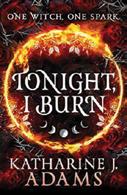
Adams, Katharine J. | Orbit (480 pp.) | $18.99 paper | Nov. 7, 2023 | 9780316551816
When everything a young witch was taught about Death turn out to be false, she starts questioning everything she knows about Life.
Thorn witchPenelope
Albright’s upcoming 21st birthday means she’ll finally be of age to cross into Death and fulfill the duties of her coven—protecting the veil between Life and Death and guiding souls through Death to the horizon. Imprisoned within the walls of the Colligerate, thorn witches have two paths: They can serve the High Warden as death-walkers by periodically being burned on a pyre, or they can release their identities and become part of his soulless Gilded army. When Penny’s sister Ella walks in death and doesn’t return on schedule the next morning, Penny decides to go against the first rule of crossing: “always walk alone.” She burns in secret to retrieve her sister. The sandy plains of Death are cold and vast, and as Penny follows Ella’s lifeline, she finds a manor that shouldn’t exist. What’s more, the occupant, who shouldn’t be there, is the bewitching Lord Malin. To free her sister and cross the veil before it’s too late, Penny agrees to a deal with Malin that will have her crossing into Death for 30 nights with information on the High Warden—breaking yet another rule, because the more you walk, the more you risk losing yourself entirely. The result is a story that struggles to balance a family drama, a complex magic system, and multiple romances between characters, though there are dark and twisted delights like book sprites—haunting library creatures that will consume a person if they feel like it—to keep it from getting too bogged down in lore. Nevertheless, a hard-fought ending sets the stage for a sequel that impatient readers will crave.
Readers will find themselves at the center of a magical rebellion and delight in the power of many kinds of love.
Jacobs, Bethany | Orbit (464 pp.) | $19.99 paper | Oct. 17, 2023 | 9780316463324

An intricate plot for revenge drives this far-future SF political thriller, a debut novel that is also the first of a trilogy. The planets of the Treble are ruled by the Kindom, a religious order, and the wealthy First Families. Esek Nightfoot, a cruel, vicious, and sociopathically self-interested Cleric and First Family scion, cut off all career opportunities for a brilliant student called Six, challenging them to do something “extraordinary” to impress her into taking them as a novitiate. Six’s “extraordinary” act was to leave school before graduation and begin collecting evidence that exposes the Nightfoots’ complicity in a genocide. Esek has pursued Six for years, often with the uneasy assistance of Cleric Chono, a far more pious person who feels loyalty both to Six, a former schoolmate, and to Esek, who once pulled Chono out of a sexually abusive situation. Their quest eventually leads to Jun Ironway, a gifted hacker who holds a piece of the data implicating the Nightfoots and also has her own dark history with both Esek and Six. Does Esek want to kill Six, as her family’s matriarch demands, or make good on her promise to make them one of her novitiates? Or does she have something else entirely in mind? As the political situation of the Treble becomes more unstable, the chase careens toward a violent and shocking endgame. The narrative jumps around in time, fully filling in past events that are initially referenced in the present-day story.
At first this seems unnecessary and confusing, but as several staggering twists emerge, it becomes clear that the choice is utterly necessary and the confusion might actually be the author’s method of obscuring a key revelation. The reader may figure out that revelation before it explodes in the text but will likely be surprised by a good part of what follows. The author also does an excellent job of applying what are typically high fantasy or historical fiction tropes (the tension between religious and secular entities, the unrest over the hereditary passage of power, and the fraught relationship between mentor and student) to high-tech science fiction (perhaps Dune was an influence?). An exciting start from a fresh talent, offering emotional and political complexity plus plenty of interplanetary action.
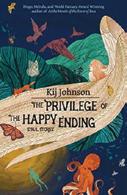
Johnson, Kij | Small Beer Press (304 pp.) $18.00 paper | Oct. 24, 2023 9781618732118
Johnson plumbs great depths in her third short story collection, full of bittersweet tales of the fantastic.
This pleasingly varied anthology of fantasy and homage collects 14 works, many of which were previously published elsewhere, including the Nebula and Hugo Award finalist and World Fantasy Award–winning “The DreamQuest of Vellitt Boe.” Johnson plays expansively with form, style, and subject matter, moving seamlessly from the dreamy second-person “Butterflies of Eastern Texas,” about a ticket-taker aboard an ever-shifting, never-ceasing train, to a charming and pitch-perfect addition to The Wind in the Willows canon, “The Ghastly Spectre of Toad Hall,” and the strange and
informative “The Apartment Dweller’s Bestiary,” which uses a series of vignettes to catalogue over 20 fantastical pets and pests that renters may come across. Throughout, she addresses the reader directly about perception, mortality, and storytelling. (After the protagonist of “The Privilege of the Happy Ending” tells someone that her chicken can talk: “Did you think that Ada had lied to the boy to save Blanche? She is a very honest girl. Because no chicken has spoken within your hearing, do you assume none ever has?”) While the entries are uniformly excellent in pacing and prose, the standouts may be the collection’s opener and closer. “Tool-Using Mimics” spins out a half-dozen explanations for a vintage photo of a young girl with tentacles that lead to piercing questions about how much we can know about the past, other species, and each other. The titular novella, which also won a World Fantasy Award, is a compelling fairy tale about a little orphan girl and her talking hen that poignantly interrogates the ways we determine which stories take center stage. A strange and glimmering jewel for any genre fiction collection.
Okorafor, Nnedi | DAW (336 pp.) | $27.00 Nov. 28, 2023 | 9780756418793
A supernaturally gifted teenager haunted by lost memories shares what he remembers of his story in this Africanfuturist tale.
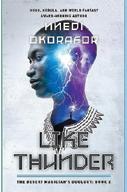
Decades ago, a nuclear catastrophe known as the Great Change destroyed society as we know it and split apart the boundaries between worlds. The disaster gave birth to the Changed Ones: people who can control the elements, wield light as a weapon, or see into another creature’s very spirit. As a storm-wielding rainmaker, Dikéogu Obidimkpa is a
Changed teenager who takes refuge in Timia—where fierce anti-Change sentiments thrive—following his escape from a cocoa plantation. There, he meets Tumaki, a prominent imam’s electrician daughter, and the two soon find themselves in the throes of a heady—and largely off-page— romance. All is not well in Timia, however, and genocidal sentiments against the Changed Ones ramp up, culminating in a monstrous attack on Dikéogu and Tumaki’s hiding place. Dikéogu wakes up half-delirious in the desert a year later, with little memory of what transpired in the interim. Left with a strange puzzle to solve, he seeks out his old allies—including his first love, Ejii, whose story was told in The Shadow Speaker (2007)—and begins to piece together not only what happened to his girlfriend, but also the mystery of a reticent Ejii’s shocking experiences. Okorafor pulls no punches here, openly drawing connections between the public’s mistreatment and distrust of the Changed Ones to genocidal campaigns around the world. Many bigoted characters use the term “cockroach” to refer to Changed people, a direct reference to the Rwandan genocide. Eagle-eyed readers will also spot quiet criticisms of contemporary internet celebrities in general, and family influencers in particular. An emotional near-future novel that will keep readers turning pages even as their mountain of questions grows larger.
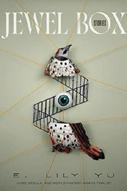
Yu, E. Lily | Erewhon (400 pp.) | $26.95 Oct. 24, 2023 | 9781645660484
Twenty-two speculative stories that range from futuristic SF to fairytale remakes. Each tale in Yu’s stellar collection could be boiled down to a startling “what
if” premise: What if a magician arrived into a wintry village selling eyeballs made of ice (“Ilse, Who Saw Clearly”)? What if a witch was a little too helpful in joining a knight on his quest to slay dragons (“The Witch of Orion Waste and the Boy Knight”)? What if there were a unicorn in Central Park (“Braid of Days and Wake of Nights”)? But even the most imaginative premises would fail to come to life without complexity, style, and heart—and Yu has all three. In the charming opener, the angel Gabriel offers to help a Cairo man complete the hajj, but winds up in Miami instead (“The Pilgrim and the Angel”). Very often, the stories wield sharp social critique in ways that update, or invert, traditional fables or fairy tales. In “The Cartographer Wasps and the Anarchist Bees”—an “Ant and the Grasshopper”-esque story nominated for Hugo, Nebula, and World Fantasy Awards—wasps who make accurate maps on the insides of their paper nests colonize—politically—the bees in a Chinese village. In “The Wretched and the Beautiful,” an alien craft descends onto a beach and the resulting crisis is an allegory for global refugeeism. Stories like this could be didactic and obvious, but Yu deftly evades predictability. Best of all, her sentences shine with unexpected images and turns of phrase—a “goat-slender” man looking in a mirror; spectacles for the soul that allow its wearer to walk “long in clarity and loneliness thereafter.” While a title like “Jewel Box,” especially without a titular story attached, could seem aspirational, Yu’s book lives up to it: Each story here is a gem.
A trove of fantastical treasures.
A trove of fantastical treasures, each story a gem.
JEWEL BOX
Danan, Rosie | Berkley (352 pp.) | $17.00 paper | Nov. 14, 2023 | 9780593437148
An archaeologist and an expert on the occult are hired to work at an old Scottish castle—that’s infamously cursed—in this enemies-to-lovers romance.
American Riley Rhodes is trying to turn her inherited supernatural knack for identifying and ending curses into a profitable business, and this job at old, crumbling Arden Castle is just what she needs to make a name for herself and leave bartending behind. Clark Edgeware, an English archaeologist just like his famous father, also has a lot riding on this assignment—a recent scandal ruined his professional reputation, which he’d like to rebuild. When Clark discovers Riley’s line of work—after kissing her at the pub—he’s maddened that some charlatan is going to jeopardize his comeback and tries to get her fired. The two find themselves constantly at odds, and the curse seems to keep throwing them into dangerous situations that bring them closer together and make them even more aware of their attraction. As Riley researches the curse’s origins, she starts to notice parallels between the historical figures and her relationship with Clark. This lightly paranormal contemporary love story is filled with delicious tropes, spicy chemistry, and truly humorous situations. Over-the-top in all the right ways, it will most appeal to readers who like their romances a little ridiculous and a whole lot of fun. It’s not all absurdity, though; there are realistic and grounded emotions and conflicts as the leads grapple with family legacies and expectations and try to rationalize their growing feelings toward each other.
A perfect blend of zany and authentic.
Firkins, Jacqueline | St. Martin’s Griffin (352 pp.) | $18.00 paper | Oct. 31, 2023 9781250836526
Cursed with being forever second best, a 28-year-old woman risks everything to win the heart of her high school crush.

Imogen Finch is unlucky. Clinically unlucky, according to her clairvoyant mother, who prophesied Imogen’s silver-medal existence when she was only 6. No matter how hard Imogen tried to win student offices and ace math exams, she was forever destined to be runner-up in life—and in love. Every one of her 17 exes not only dumped her but left her for other people. Resigned to mediocrity, Imogen works six jobs in Pitt’s Corner, her small coastal town, caring for her mother and avoiding the pitying stares of her now happily married ex-boyfriends. Despite the blows to her ego, Imogen was never certain she was even in love with her past flames—all except heartbreak No. 1, Eliot Swift. Even though they were never a couple, Eliot was Imogen’s first and only love, the one who didn’t believe in her mother’s miserable prophecy, the one who ghosted her (and the whole town of Pitt’s Corner) 10 years ago. Still nursing her wounds a decade later, Imogen finds her world turned upside down when Eliot’s father dies, forcing him to return to the friends and family he left behind. Seeing Eliot again only confirms Imogen’s feelings for him, but will she be able to separate herself from a fate she spent years believing was irreversible? Firkins’ novel is a special blend of humor, passion, and friendship, with a hint of a sixth sense that sets it apart from other contemporary romances. Every so often, a chapter outlines one of Imogen’s 17 breakups, each more outrageous and humiliating
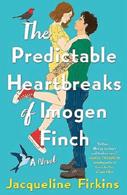
than the last, and it’s impossible to root for anything other than a well-deserved happily-ever-after. Don’t expect Imogen to find her HEA too easily, though; Firkins takes her time with her characters, patiently weaving moments of grief, healing, and understanding to make this friends-to-lovers tale gratifyingly worthwhile.
A quirky romance about second chances for those who come in second place.
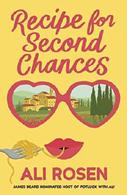
Rosen, Ali | Montlake Romance (271 pp.) $13.10 paper | Nov. 1, 2023 | 9781662513701
At a friend’s wedding in Italy, a woman reunites with a love interest from her past, sparking memories of what went wrong between them a decade earlier.
When Stella Park arrives in the picturesque Italian countryside for her friend Subrata’s wedding to longtime partner Luca, she’s thrilled not only to witness their union, but to get away from life in New York, where she’s just lost out on a big promotion at the food magazine where she works. The trip gets off to a not-so-relaxing start, however, when Stella’s luggage is lost. Then, while wearing nothing more than a bathrobe, she runs into fellow wedding guest Samuel Gordon at their hotel. Stella hasn’t seen Samuel in almost a decade, since they spent one whirlwind summer together before Stella—who had sworn off serious relationships after watching her sister go through a divorce—rejected Samuel’s declaration of love. When they’re thrown together for a week of wedding activities, it’s obvious neither has forgotten their feelings for one another. But can Stella overcome her anxieties for a second chance at love?
Author Rosen has had a successful career as a cookbook author, and it’s clear that she’s as deeply passionate
DO YOUR WORST
as she is knowledgeable about food; she includes decadent descriptions of savory pesto dishes and creamy pistachio gelato, among other Italian delicacies. Unfortunately, though, the minimally developed characters, questionable motivations, and sometimes stilted dialogue make it hard to get grounded in the story, while Stella’s repetitive inner monologue becomes tedious to read. Flashbacks to Stella and Samuel’s first summer together reveal undeniable moments of romance, but also uncomfortable depictions of “nice guy syndrome” and relationship pressure that may make readers hesitant to root for the book’s central couple.
Amateurish writing clouds an otherwise promising rom-com concept.
Sands, Lynsay | Avon/HarperCollins
(384 pp.) | $9.99 paper | Sept. 26, 2023
9780063292109
A strange series of events brings a human woman to the attention of a centuries-old vampire.

Sophie Ferguson is tired of gambling on love. When she was a child, her parents died in a house fire and she was adopted by the family of a friend. As an adult, Sophie had not one but two fiances die in freak accidents before the weddings could take place. When a blind date goes terribly wrong, she’s saved by a pair of handsome, mysterious men who are actually vampires. One of them, Tyberius Verde, asks her to be his plus-one at a large, exclusive wedding where he’s the best man, and Sophie can’t help but say yes. Sophie is shuffled off to a table while Tybo
takes care of wedding duties, and she’s seated next to Alasdair MacKenzie. All the vampires at the wedding immediately realize that Alasdair and Sophie are fated to be life-mates, part of Sands’ vampire mythology. Sophie’s not sure why she has more chemistry with Alasdair than Tybo, while Alasdair is worried about the particulars of being mated to a human. The wedding functions as plot, with Alasdair’s twin brother and four Scottish uncles comically volunteering to help Alasdair woo Sophie, and also as fan service, with beloved couples from the previous 35 books in the Argeneau series making appearances. Sophie and Alasdair allow themselves to be pushed together, but when Alasdair survives several incidents—poisoning and a hit-andrun accident—that would have killed a mortal man, the couple realizes that Sophie isn’t suffering from bad luck, but is instead the victim of a stalker. The romance between Sophie and Alasdair feels a bit perfunctory, as everything falls neatly into place with only external forces threatening to keep them apart.
There’s nothing revolutionary here, but Argeneau fans will enjoy the fastpaced and competent romance.
Tieu, Julie | Avon/HarperCollins (304 pp.) | $18.99 paper | Nov. 7, 2023
9780063245198

A florist and a caterer juggle a high-profile California wedding, their varied and complex connections to the wedding party, and a strong, unexpected romantic attraction.
Elise Ngo has been selected to be a bridesmaid and the florist for three of her close friends’ weddings. The business opportunities presented by one are especially important; Rebecca Yu has let her assemblywoman mother hijack the guest list to include some big names in politics. Impressing this crowd could mean bigger and wealthier clients for Elise’s floral business and jobs that don’t include a friends and family discount. Joining her in the list of wedding vendors as caterer is Rebecca’s younger brother, Ben. Quiet and a little prickly, Ben doesn’t take kindly to Elise barging into his kitchen to refresh some flowers. Bristling at his rude demand to see her ID, Elise wipes a wet hand across her white tank top and realizes with chagrin that she’s inadvertently giving Ben the impression she “was trying to win a spring break wet T-shirt contest.” Their banter cracks and stings, exacerbated by the growing stressors of the impending wedding day. Elise desperately needs the word-of-mouth recommendations and networking Rebecca’s wedding and family connections can provide. Ben appears rudderless, trying to find his passion and direction while sidestepping the spotlight as much as possible. The author’s decision to use political background material, however, muffles the impact of their developing romance. With nosy reporters and rumors of campaign scandals hanging like a cloud over the wedding, Elise and Ben’s chemistry doesn’t get a chance to reach anything higher than a simmer. There’s little conflict to keep them apart, save for wedding day emergencies, and while those amp up the comedy, they also hamper any sort of will-they-won’t-they tension. Two relatable and funny main characters in desperate need of a more compelling and exciting romance.

A perfect blend of zany and authentic.For more romance reviews, visit Kirkus online.

OUR FALL PREVIEW is in the books, and the Kirkus Prize is right around the corner. September is packed with must-read books for readers of any persuasion. Here are six of my favorites.
Let’s begin with delight. Award-winning poet and essayist Ross Gay returns with The Book of (More) Delights (Algonquin, Sept. 19), the charming follow-up to The Book of Delights

In his latest, the author delivers more than 80 heart-gladdening vignettes to soothe and nourish readers in rough times. In a starred review, our critic notes, “Keenly observed and delivered with deftness, these essays are a testament to the artfulness of attention and everyday joy.”
Readers fascinated by far-flung adventures will love Adam Goodheart’s latest book, The Last Island: Discovery, Defiance, and the Most Elusive Tribe on Earth (Godine, Sept. 12). Goodheart, the author of 1861, takes us to North Sentinel Island in the Bay of Bengal, home to the Sentinelese people, likely the most isolated tribe on the planet. It’s “a thrilling book that

will leave you contemplating the concept of civilization,” according to our review.
Turning to memoir, Omega Farm: A Memoir (Scribner, Sept. 12), by Martha McPhee, recounts the author’s move from New York City to her family’s New Jersey farm, where she sheltered-in-place during the pandemic with her aging mother, who was suffering from dementia. “One of the book’s many strengths,” writes our reviewer, “is the author’s ability to see herself clearly: The passages in which she narrates her own bad behavior are
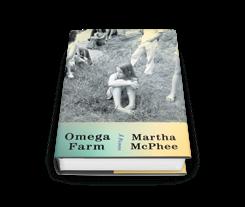
fascinating, which is rare in the memoir genre.”
For all foodies, I highly recommend The Lost Supper: Searching for the Future of Food in the Lost Flavors of the Past (Greystone Books, Sept. 19), by Taras Grescoe, a kind of anthropological journey into foods from the past. From the study of olive oil, to intriguing elements of the Aztec diet, to bread-making methods taken from a Neolithic site, Grescoe seeks to understand our current shrinking biodiversity in food production and consumption. Throughout, the author “writes with color, energy, and humor,” says our review, “and the result is a fascinating book that leaves you hungry for more.”

“Many nondisabled people think that disabled
people just want to be ‘normal.’ As this brief, outstanding text shows, that’s not only wrong, but cruel.” So writes our critic in their starred review of Against Technoableism: Rethinking Who Needs Improvement (Norton, Sept. 19), Ashley Shew’s potent manifesto against ableism. Ripping apart stereotypes of the disabled community, the author deftly interweaves personal experiences, research into high-tech prosthetics and other technology, and dashes of acidic humor, creating a book that is “essential reading for the disabled and nondisabled alike.”

In a time of unprecedented gun violence, Cameron McWhirter and Zusha Elinson’s American Gun: The True Story of the AR-15 (Farrar, Straus and Giroux, Sept. 26) offers “a superb history of an innovative weapon,” a lethal firearm that has been embraced by the NRA and right-wing activists across the country. This is not dry history; our review calls it “a meticulously researched and impressively informed book; despite careful explanations of technical details, the narrative moves along briskly and engagingly.”

An oral history of the 1989 picnic that became “the first great breach of the Iron Curtain.”
In the late 1980s, the Soviet Union was weakening, reformers had risen to power in Hungary, and people were fleeing East Germany. Longo, a professor of political science at Leiden University (Netherlands) and author of The Politics of Borders: Sovereignty, Security, and the Citizen After 9/11, draws on interviews with those involved—as well as insights from relevant political philosophers such as Hannah Arendt and Isaiah Berlin—to tell the story of the Pan-European Picnic held on Aug. 19, 1989.
Orchestrated by a group of Hungarian activists, the goal was to create “a giant open-air party celebrating Europe togetherness and freedom,” and the event was
to include the symbolic— and temporary—opening of a gate between Hungary and Austria. At the time, Hungary was filled with ref ugees from East Germany, and when they arrived at the picnic site that morning, the gate seemed to be the only barrier between them and liberty. They burst through and, with the Hungarian border guards hesitant to act, between 600 and 1,000 people fled. The picnic came to symbolize the possibility of evading the oppression of Soviet-style communism and achieving a better life. Citizens of Warsaw Pact countries under Soviet control had been denied personal autonomy and deprived of communal solidarity. They aspired to a sense of collective belonging, Longo argues, rather than the individualism and consumerism of the West.
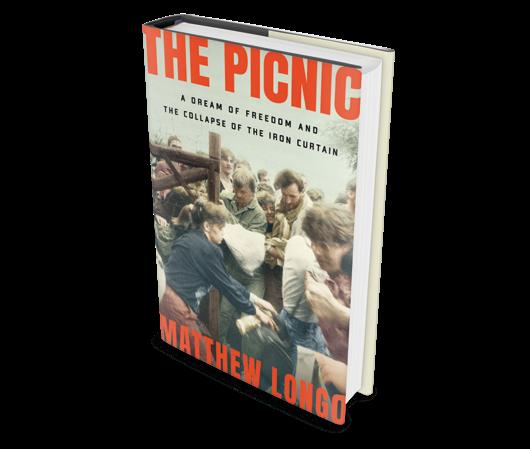
Longo, Matthew | Norton | 320 pp. $28.95 | Nov. 7, 2023 | 9780393540772
Deftly weaving together the geopolitical and the personal, Longo offers a counter-narrative to the current fixation on the global rise and spread of xenophobic and authoritarian regimes, including that of Viktor Orbán in Hungary. Extensively documented,
well written, and thoughtful in its consideration of what freedom means, this book is an informative and engaging history of the event, its origins, and the aftermath. A much-needed reminder of the inexhaustibility of the human quest for personal and collective freedom.
By Kim McLarin By Rebecca Renner By Witold Szabłowski; trans. by Antonia LloydJones Arena, Joaquim | Trans. by Jethro Soutar
Unnamed Press | $18.00 paper
Nov. 21, 2023 | 9781951213527
Arena, Joaquim | Trans. by Jethro Soutar
Unnamed Press | $18.00 paper
Nov. 21, 2023 | 9781951213527
A personal story bound up in six centuries of Black European history.
After his stepfather’s death, Arena returned from his birthplace and home in Cape Verde, off the coast of West Africa, to Portugal, the country where he grew up. Chronicling his explorations of Lisbon and the surrounding landscape, the author weaves among the arcs of his personal history and the histories of Black lives at the heart of European empire. Arena, a journalist by trade, is particularly interested in people whose “life stories were rescued from oblivion by the miracles of literature—eventually by biographers, but initially through works of family fiction.” He pursues the family history of his friend Leopoldina, whose enslaved ancestors rebelled against their oppression in Portugal. Alongside such intimate sagas are brief biographies of Black people who, despite rigid and racist social structures, rose to great prominence in the white Western world. These stories often draw on the unlikely immortality of literary success; their subjects include Thomas-Alexandre Dumas, father of the great French novelist; and Abraham Petrovitch Gannibal, confidante of Peter the Great and Alexander Pushkin’s great-grandfather. Arena also has a gift for lyrical object history. The book opens with a close reading of a technically “mediocre” but informationally rich 16th-century painting of a fountain where Lisbon’s African population—enslaved and free alike—gathered. Later, visiting the site of the fountain, Arena reflects on the continuities of history and place, the relation of the scene around him to the one depicted in paint: “My ancestral trajectory was both personal and typical—one more family of Cape Verdean immigrants—and how, in
some abstract way, perhaps through that sense of melancholy we Portuguese speakers call saudade, my own journey was connected to that first voyage, in 1444, when 235 Africans were brought to Portugal with shackles on their feet.”
A well-written, deeply personal saga that acknowledges the resonance of historical identity, art, and literature in our present lives.
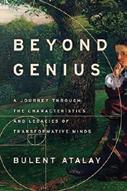
Atalay, Bulent | Pegasus (400 pp.) | $35.00 Nov. 7, 2023 | 9781639364893
Biographies of five of history’s greatest minds.
Atalay, an artist and former member of the Institute for Advanced Study, Princeton, explores the lives of Shakespeare, Leonardo, Beethoven, Newton, and Einstein. Readers will enjoy his account of their accomplishments, accompanied by portraits of rival immortals who didn’t make the cut. To justify his choices, Atalay muses about genius itself, emphasizing that prodigies tend to be eccentric, difficult, and even mentally ill. He divides geniuses into three categories. Ordinary geniuses “follow the rugged topography of logic…to reach the summit of their remarkable achievements.”
They are surpassed by the magicians, who study on their own and “gain the erudition that will shake the intellectual world.” Transcending even them are transformative geniuses, who “appear to leap from one summit to another, their creative efforts altogether redefining existing disciplines.” Atalay has no doubt that his five transformers represent the peak of human achievement. His biographies of the chosen five (and many competing geniuses)
are only the tips of the iceberg. Delving deeply into each man’s work, he investigates the science behind the art and the art behind the science. Art-supply stores did not exist until the 19th century, so artists mixed pigments from scratch and often made their own tools. All were well versed in mathematics, which shaped their use of perspective, the proportions of their figures, and, for composers, the structure of their compositions. The basics of Newton’s and Einstein’s laws are not difficult to explain, as Dennis Overbye and Abraham Pais have proven with books on Einstein, and Michael White and James Gleick with equally fine assessments of Newton. Ataley’s detailed descriptions, by contrast, may overwhelm readers not familiar with college physics, although his digressions into phrenology, Einstein’s brain, geniuses’ physical maladies, and rankings of various sorts of greatness throughout history are entertaining and modestly enlightening.
A well-informed deep dive into genius.
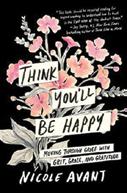
Avant, Nicole | HarperOne (288 pp.) | $28.99 Oct. 17, 2023 | 9780063304413
Memories and life lessons inspired by the author’s mother, who was murdered in 2021.
“Neither my mother nor I knew that her last text to me would be the words ‘Think you’ll be happy,’ ” Avant writes, “but it is fitting that she left me with a mantra for resiliency.” The author, a filmmaker and former U.S. Ambassador to the Bahamas, begins her first book on the night she learned her mother, Jacqueline Avant, had been fatally shot during a home invasion. “One of my first thoughts,” she writes, “was, ‘Oh God, please don’t let me hate
this man. Give me the strength not to hate him.’ ” Daughter of Clarence Avant, known as the “Black Godfather” due to his work as a pioneering music executive, the author describes growing up “in a house that had a revolving door of famous people,” from Ella Fitzgerald to Muhammad Ali. “I don’t take for granted anything I have achieved in my life as a Black American woman,” writes Avant. “And I recognize my unique upbringing…..I was taught to honor our past and pay forward our fruits.” The book, which is occasionally repetitive, includes tributes to her mother from figures like Oprah Winfrey and Bill Clinton, but the narrative core is the author’s direct, faith-based, unwaveringly positive messages to readers—e.g., “I don’t want to carry the sadness and anger I have toward the man who did this to my mother… so I’m worshiping God amid the worst storm imaginable”; “Success and feeling good are contagious. I’m all about positive contagious vibrations!” Avant frequently quotes Bible verses, and the bulk of the text reflects the spirit of her daily prayer “that everything is in divine order.” Imploring readers to practice proactive behavior, she writes, “We have to always find the blessing, to be the blessing.”
Some of Avant’s mantras are overstated, but her book is magnanimous, inspiring, and relentlessly optimistic.
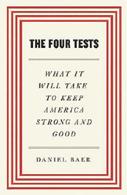
Baer, Daniel | Avid Reader Press (272 pp.) $28.00 | Sept. 19, 2023 | 9781668006580
A diplomacy expert examines four large areas the U.S. must negotiate if the nation is to endure as a democracy.
Baer posits that the U.S. faces a “polycrisis” made worse by the fact that so many in the polity have given up faith that anything can be done about such things as political polarization and climate change. The author proposes four multipronged approaches. The areas include the problem of scale, which effectively asks, in a world of population decline and bars to immigration, whether the America of today will remain large enough to hold a leading position in the current global pecking order. Neither alarmist nor complacent, he suggests that “the U.S. must adapt to a future in which it has less coercive power over other states,” sensible enough given that many of the existential threats we face are not exactly political, but instead demand international coordination and cooperation. Building scale means having the people to do it, which means an immigration policy that encourages a continued flow of new Americans to contribute. That in turn opens up onto the question of how to fund the education necessary for innovation in a time when education is both defunded and scant resources are
directed to wealthier white districts— and this when “the majority of people under age sixteen in the United States identify as nonwhite.” Against a confluence of negative megatrends, Baer’s tests of what he calls scale, investment, fairness, and identity don’t defy solution, but they resist easy ones: “There is no single policy, no awakening, no cultural shift that can address any one of them.” Yet we must “take a leap of faith” because, he concludes, “In the end, really, what choice do we have?” Policy wonks and activists will find much to ponder in Baer’s lucidly argued platform.

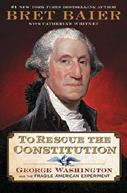
Baier, Bret with Catherine Whitney Mariner Books (384 pp.) | $32.50 Oct. 10, 2023 | 9780063039582
Fox News chief political correspondent Baier adds to the groaning bookshelves of Washington biographies.
Baier has already written multiple books recounting significant events in American political history, including Three Days in Moscow, Three Days in January, and To Rescue the Republic, so a volume on Washington was inevitable. Born a member of the minor Virginia gentry, he attained a modest reputation as an officer in the French and Indian War, and he married a wealthy widow to become a leading figure in the Virginia establishment and the opposition to British policies. As commander of the Continental Army, his combination of persistence, political skills, and French support led it to victory and made him a national idol, a position he still holds. As president of the 1787 Continental Convention, he worked hard to avoid the
Policy wonks and activists will find much to ponder in Baer’s lucidly argued platform.
THE FOUR TESTS
appearance of bias. Taking office, he not only oversaw the creation of a national government from scratch (he was “painfully aware that every organizational choice he made set a precedent”); he also showed vision and good sense in leading the nation through difficult times. Thanks to Washington, the nation was stronger during the even more troubled subsequent administrations of Adams, Jefferson, and Madison. Readers uneasy about the author’s Fox News connection can be reassured that he adopts the traditional admiration of the Constitution and deplores today’s vicious political divide without assessing blame, adding that politics was no less nasty during Washington’s time. Perhaps the book’s most original feature is the concluding chapter: a 2020 experiment in which three teams of constitutional scholars (conservative, progressive, libertarian) were assigned to rewrite the Constitution. Surprisingly, they found common ground for many reforms, including term limits for Supreme Court justices (18 years), and “conservatives and progressives agreed that the president should be elected by popular vote through a ranked-choice system, dissolving the Electoral College.” Although it will not displace the biographers topping the list (Chernow, Ellis, Ferling), Baier touches all the bases.

Bailey, Richard D. | Bancroft Press (252 pp.) $27.95 | Nov. 7, 2023 | 9781610886123
How the author helped bring a major financial scandal to light.
Bailey, a veteran certified fraud examiner, built his career on tackling corporate problems “no one else would touch” and working with companies “no one would risk time and money on.” Though his life was comfortable, it always seemed that the companies he fixed would never make good on any of their promises of profit-sharing or ownership. During a period of unemployment in 2013, Bailey received an offer from a business associate to assist Alex Chatfield Burns, a 26-year-old financial “prodigy” who had $1 billion under management at his own private equity firm. The author reluctantly agreed to the project because he needed the work, but he could not escape his misgivings about Burns and the source of his wealth. Bailey’s apprehensions only increased when his business associate could not give him any details about what executives at Southport Lane actually did and when he realized that Burns was a “stone-cold liar.” When Bailey took financial oversight of a New York winery Southport had invested in, he discovered irregularities in how money was moved in and out of accounts. As a seasoned businessman, he knew that sometimes
money-laundering could be a useful business survival tactic if “your best lawyer and accountant [could] create an unassailable paper trail.” The more Bailey dug, the more he realized that both Burns and Southport stood on the wrong side of the law. “The vineyard deal was just ugly,” writes the author. “Hugely over-priced. Shitty documentation. Terrible execution. Little or no due diligence. Accounting that was not only wrong but, in many places, non-existent.” Colorful characters and intrigue involving covert FBI investigations make the narrative feel like a hardboiled detective story by a man who would “rather be right than rich.” The book will appeal mostly to those interested in corporate investment who will appreciate the detailed insights Bailey offers. General readers may find themselves skimming some sections. An intriguing story of corporate malfeasance.
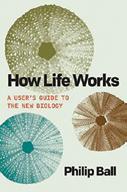
Ball, Philip | Univ. of Chicago (520 pp.) $29.00 | Nov. 6, 2023 | 9780226826684

Generating a new language for the book of life.
Life is not all about tidy genetic blueprints; it is influenced by “messy and capricious” elements so many levels that genes are “just ingredients for creating a palette of...possibilities,” writes Ball, a former longtime editor at Nature and author of many books about science and nature. He first examines old biological tenets gone wrong, such as the notion that one gene is equal to one protein, or that correcting single gene mutations can “cure” most diseases. Language, writes the author, is the only “human technology” that bears any resemblance to the “mechanism of life...undoubtedly because it is a kind of ‘organic
An intriguing story of corporate malfeasance.
PIRATE COVEFor more books by Philip Ball, visit Kirkus online.
technology’ as much a part of our biological nature as is our flesh and blood, our minds, our cultures.” Like life, when “you reduce it to its component parts, you lose its meaning.” Later, the author continues, “meaning carries a lot of baggage in biology, and you’ll rarely see it used in an academic text on the topic. But it’s a crucial concept, because it conveys a large part of what distinguishes life from other states of matter.” Many DNA sequences linked to complex traits and diseases are outside the “coding” genome,” and genes that generate fins can be “readily redirected to make an arm…Rapid phenotypic change is possible precisely because so little is demanded of the genes themselves.” In showing that complex life is more “emergent” than “programmed,” Ball takes on many conventional notions about biology. “We are at the beginning of a profound rethinking of how life works,” he writes. Evolution has consistently invented new ways of creating living beings, and it will continue to do so. “The challenge,” writes the author, “is to find a good way of talking about these vital stratagems,” and his latest book offers plenty of food for thought for scientists in disciplines from medicine to engineering. A bold effort to create a new language that forces a “rethinking” of “thinking itself.”
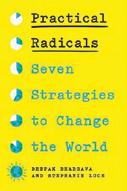
Bhargava,
Deepak & Stephanie LuceThe New Press (480 pp.) | $30.99
Nov. 7, 2023 | 9781620978214
Two community organizers suggest strategies for advancing progressive agendas. It’s long been observed that the American left fights battles, while the right fights wars. Wars are won by strategy, and “strategy can be
taught, and strategists can get better with practice,” write Bhargava and Luce, who teach at the CUNY School of Labor and Urban Studies. One way to get better is to drop assumptions about the moral superiority of one’s cause, abandoning purity of method along the way. It’s hard to forge a united front when there’s a tendency to splinter over the tiniest points of doctrine; when that happens, the “overdogs” win. The civil rights movement is remembered for marches and sit-ins, seemingly impromptu actions, but these were carefully coordinated even as the strategists behind them lobbied legislators, recruited allies, and propagandized to score moral victories. Disruption has its place, the authors write, but so does electoral change, as well as the “momentum model,” which blends action with organization building as organizers “seek out polarizing fights that attract a passionate minority of intense supporters and build a majority of passive support for the cause among the mass public.” Such movements are easily built, relatively speaking, thanks to social media, as was seen with Occupy Wall Street, but more useful still are movements based on mutual care, as with the network that formed around the AIDS epidemic. As the authors argue convincingly, a successful labor movement should step beyond questions of pay and hours and instead examine matters such as structural racism, educating while agitating. The authors close with many pages of workbook-like exercises—e.g., how to build a tenants’ rights network, strategies for reducing homelessness, and how to create a “coalition… between labor, community, faith, and student organizations to fight for a living wage.”
Progressive activists will want to dog-ear, underline, and pore over this well-conceived handbook.
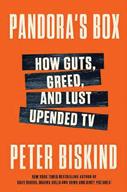
Biskind, Peter | Morrow/HarperCollins (384 pp.) | $32.50 | Nov. 7, 2023
9780062991669

A film critic’s detailed history of the writers and executives driving the era of “Peak TV.”
In his latest examination of the entertainment industry, Biskind begins with the creation of HBO in the early 1970s and its gradual journey from showing premier sports events, comedy specials, and racy documentaries to the world of scripted original programming. HBO’s shift was neither obvious nor guaranteed, but the company’s ability to construct a daring and creative home for writers and showrunners fleeing the constraints of network TV changed the course of broadcast cable, set the bar for the emerging streaming business, and even blinded HBO to its own vulnerabilities. Biskind follows this impact with an audit of inflection points like the rise of sleeper cable networks like AMC and the creation of Netflix and Disney+, and he explores many of the most significant shows of the last two decades, including The Sopranos, Breaking Bad, House of Cards, Oz, and Justified. As the story moves on from HBO’s early days, the narrative devolves, as the author sacrifices linear organization and meaningful commentary in favor of gossip about corporate acquisitions, executive egos, and creative cross-pollination.
As in his 1998 bestseller, Easy Riders, Raging Bulls, Biskind builds his text from first-person quotes gleaned from countless conversations he has had over decades with key players in the field, and his amusing barbs pepper the text. Rather than a synthesized assessment of the “upending” of TV, this is primarily the story of the obsessions and idiosyncrasies of the industry’s higher-ups and their
>>>


The comedian brings her quirky sensibility—and mental health issues—to a new memoir.
BY LISA KENNEDYMARIA BAMFORD IS thoughtfully answering questions by video chat in the staccato rhythms of her standup shows and her semi-autobiographical Netflix series, Lady Dynamite. She self-edits and refines her thoughts as she goes, in a diminutive voice that seems to mask a great deal of earned wisdom about 12-step programs, psychiatric hospitals, and the right dose of meds to make it to a four-show gig in Chicago. (She got ever so close before having a breakdown.) Our starred review calls Bamford’s Sure, I’ll Join Your Cult: A Memoir of Mental Illness and the Quest To Belong Anywhere (Gallery Books/ Simon & Schuster, Sept. 5) “laugh-out-loud funny, weird, and touching.” Which it is, in surprising ways that honor Bamford’s emotional generosity, her self-deprecating gravity, and those early years when the Suzuki violin method helped her learn “that if you put effort into something, you get better at it.” Our conversation has been edited for length and clarity.
How are you feeling about the book—it’s getting some love?
I’m so grateful that it’s done, so relieved. The one thing that I missed was that I perform for laughs. So then when I’m by myself writing, if there’s not someone there cheering me on like a crowd, well, it can feel a little bit odd, a little bit lonely. But I’m insanely grateful that I got an opportunity to write something. Clearly, I’m a comedian more than [she interrupts herself]…Also, you don’t want to be disrespectful to the art form by going, They just told me I could get money if I did this. Sorry.
Is there nowhere in the world where people don’t suffer from imposter syndrome?
I have this great book by Aparna Nancherla [she holds up Unreliable Narrator: Me, Myself, and Impostor Syndrome], which is coming out at the same time. It’s so great. She’s hilarious.
Writing doesn’t always go by chronology. Did yours?
Yes, I began at the beginning with the mental health stuff. That stuff didn’t really start for me until I was around 8 or 9, when I started to have a darker view of the world.
Bamford writes truthfully—and humorously—about mental health struggles.
Just a kid. You seemed so alone with those intrusive and violent thoughts. The good thing about the internet is that we have access to all this information where people can get support online in places that there wasn’t any support. The bad thing about the internet is the isolation and all the comparing and despairing and weirdness.
Isn’t it funny that the isolation appears to be in almost in direct proportion to connectivity? We live in interesting times.
Yes. I have the highest of hopes. I’m trying to have
more connectivity. The reason I did stand-up was because it was so isolating. It was very safe. I didn’t have to have much connection with people. It’s weird, stand-up, because it’s a very controlled environment if you want it to be.
The book is funny, yet it also has this beautiful gravitas that feels helpful, too. One thing that they cut out of the book entirely was, I wanted to do like a financial reckoning. In every chapter, I’d say where I was at financially.
Uh, why?
Partly it’s like a type of OCD where I go, I got to tell everybody everything. But also, I loved the idea of it. I read about open-book accounting—where everybody in the company knows what everybody’s making—and I just think that’s wonderful. Also sort of educational, in that I didn’t read my own contract.
Sorry, what?
That is another thing I don’t do. I get a contract and I go, Oh my God, I’m so excited. And then I don’t read it. I thought when I said I was done with the book, they would say I was done with the book. That is not what the legal writing says. The legal writing is very clear: We will decide when we think you are done with the book. It would have been great had I read that to music or underwater or something that made it really hit.
What were some of the harder things to write about?
My sister, Sarah. I felt worried: not wanting to be dishonest by saying oh, our relationship was perfect, but also not wanting to do anything for a laugh. My sister is trained to be a life coach but is also a shaman. And that, for many people, could be a laugh line. But one of the things that I really admire about my sister is her ability to be sincere. To be sincere about anything is…well, kudos.
Yeah, knock yourself out. Yeah. That’s amazing. My sister has written at least five books now. And she has this hilarious essay out about how she did her own memoir, Swimming With Elephants. It’s about stuff that is not really in my wheelhouse. But she’s hilarious. I love her. She could be a comedian. Anyways, it
has a specific point of view, right? And I could understand why people wouldn’t be down with it. But she got invited by a local book club in Duluth [Minnesota, where they grew up] to read from her book and chitchat with people. Well, it turned out, it was a total—what’s that called?—ambush. They said, “Well, we didn’t like the book,” and asked her all sorts of personal stuff. Hey, man, if you’re going to bitch-slap somebody, give them a choice whether to come or not—or troll them online. That’s what trolling is for.
The affection you have for your sis and your parents is apparent, but it’s complicated being written about in a book or talked about in comedy routines. It’s how our relationship is. When I first started doing impersonations of my sister, she was like, umm, OK. At the time, though, I wasn’t
getting any airtime. I was a weirdo. She was a physician, she had four kids. But I think once I started having more people watching videos or whatever, and her character was in a video, then that became more of a concern. About 10 years in, she said, “Please leave me out of you doing your characters.” I have not done that—but she has asked. The reason I haven’t stopped is that she’s written about me in her memoirs. It’s an ongoing dispute. But she still talks to me. We talk every day.
Memoirists write about this a lot: How do we tell our story when it’s entangled in other people’s stories? My husband has asked me to word something differently because he was like, “I’m not like that about that.” And I was like, “Oh, yeah, you’re right, you’re not.” So, I’ve been wondering: Is there a way to tell a joke where I don’t have to be a victim and I also don’t have to be a perpetrator? Is there something in storytelling where I just lay down the facts and they still arc at some point?
What do you hope for this book?
Well, I hope that we can just have some nice parties, you know? Right? And my full circle hope is that it will at some point be in the Little Free Library in my neighborhood.
Lisa Kennedy writes for the New York Times , Variety, the Denver Post , and other publications. Sure, I’ll Join Your Cult received a starred review in the Aug. 1, 2023, issue.

Is there a way to tell a joke where I don’t have to be a victim and I also don’t have to be a perpetrator?
relationships and tensions with each other. While these personalities have had an outsized and still-relevant influence on changes to both the small screen and the entertainment industry as a whole, their professional sagas are neither compelling nor surprising. The book becomes repetitive, confusing, and tiresome, a missed opportunity to combine Biskind’s obviously thorough knowledge, distinct vantage point, and droll wit with coherent analysis and insight. An intermittently interesting look behind the scenes of prestige TV that falls short.
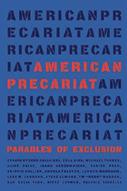
Ed. by Caligiuri, Zeke & Minnesota Prison Writing Workshops. | Coffee House (320 pp.) | $19.95 paper | Nov. 14, 2023
9781566896955
A collection of essays and conversations about living in America without a safety net.
There is a growing class, especially in the U.S., not characterized by politics, race, or religion, but by economic uncertainty and lack of stability. Defined by the British economist Guy Standing as “the precariat,” this class cuts across broad swaths of the population: immigrants, prisoners, and gig workers, but also college graduates, homeowners, and artists. “We build community,” writes Caligiuri, “because we can’t expect, demand, or control the machinations of the captivity business.” Featuring contributions from Kiese Laymon, Valeria Luiselli, Steve Almond, Lacy M. Johnson, and other prominent writers, this book, edited by a collective of incarcerated writers in Minnesota, demonstrates what it means to live a life dominated by uncertainty. Among the subjects are a teacher struggling to free herself from a $386,000 debt from loans her
gambling-addicted mother took out in her name without her knowledge; people living at a rest stop in Oregon; a gig worker delivering food to the Manhattan wealthy during the worst days of the Covid-19 pandemic; and a group of U.S. Forest Service scientists working to save trees in Oregon and California as climate change decimates forests and other natural habitats. Almost all of the essays are enlightening, speaking to the resilience with which these people address their despair. Trees share this determination, notes Lauren Markham. “The living will do whatever they need to survive,” she writes. “I had seen one desiccated former tree whose branches were covered in hundreds of cones…. Sensing it will die, the tree bursts forth into cones in a frantic final act of hope: not so much for itself, but for its species.” A thoughtful conversation among the editors caps each moving essay, and the book features an introduction by Eula Biss. Important stories of the unseen and unspoken that illuminate a growing class in America.
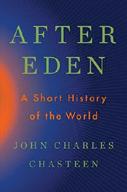
Chasteen, John Charles | Norton (496 pp.) $35.00 | Nov. 14, 2023 | 9781324036920
First came the Garden of Eden. It’s been all downhill ever since.
In his latest book, Chasteen, the author of Americanos and Born in Blood and Fire, examines the consequences of the human transition from small bands of hunters and gatherers to large villages of agriculturalists—and now, megalopolises fueled by industry and commerce. While interpersonal violence isn’t unknown in those smaller societies, and while “Paleolithic life was really no paradise, even if it suited human beings, in some ways, more than the life we lead now,” when you put people into
permanent houses and high population densities, the situation often gets worse: Farming begets warfare, in Chasteen’s schema, and war begets patriarchy and control. It took less than 1,000 years for farming societies to develop a class or caste hierarchy “dominated most often by a warrior nobility and a hereditary kingship.” From there, the author proceeds to examine the evolution of ever more powerful polities. Chasteen ventures some interesting observations—e.g., that Buddhism traveled east and not west from India because while China was receptive to new beliefs, lacking any formal state religion, Zoroastrian and Muslim Persia proved a powerful barrier. The author does not hesitate to suggest that the ongoing post–Cold War spread of consumer culture hasn’t done the planet much good. On that note, he considers Russia’s war on Ukraine against the context of an ever more apparent global climate crisis: “We can’t lift two fingers as a world community when it comes to saving the planet, it seems, but an international war with tanks and rockets? Now that is something we can relate to!” Given the track record of humankind since our metaphorical fall from grace, readers can be forgiven if they are pessimistic about the possibility of the world’s nations banding together to avert catastrophe.
Can we save ourselves from ourselves?
To judge by this well-researched book, it might be best not to put money on it.
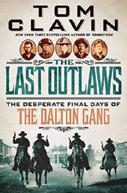
Clavin, Tom | St. Martin’s (288 pp.) | $30.00 Nov. 7, 2023 | 9781250282385
The prolific Western historian turns in a sometimes rip-snorting, sometimes turgid account of a notorious gang of outlaws.
The Dalton Gang, made up of brothers and
assorted lieutenants, committed various acts of outlawry as far afield as California before heading home to concentrate on the southern Great Plains. It was in an apparent effort to outdo a kindred gang, by robbing two neighboring banks in the same raid that the boys got into serious trouble, with four dead men stretched out on a board in Coffeyville, Kansas. Clavin, who’s been writing about the Wild West for years, does a good job of portraying the attendant mayhem, with all its gore: “The bullet found the cashier’s face, entering right below the left eye and exiting at the base of his skull.” The author draws on the larger context of Wild West ruffians to tell his story, since by the time the Daltons came along and went, it was 1892, when the frontier was said to be closed. Some of that context seems like padding: The story of the James Gang is both well known and goes on longer than necessary, and the bits of breezy telescoping (“Not to worry: Deputy Marshal Madsen would have another crack at the Dalton brothers”) don’t add much, either. Still, Clavin ably stitches the yarn together, and he does well to bookend his story with the sole surviving Dalton, who, after serving time, tried to make it in Hollywood. Readers familiar with the 1973 Eagles album Desperado and other bits of pop Western lore will be pleased to find Bill Doolin and Bitter Creek Newcomb in the cast, as well as Cattle Annie, and, among the good guys, Bill Tilghman. Fans of outlaw tales won’t find much new, but they’ll likely enjoy the book all the same.
Kirkus Star
Conway, Ed | Knopf (512 pp.) | $35.00 Nov. 7, 2023 | 9780593534342
A spirited tour of six material things on which our lives depend.
Sky News economics editor Conway, an inhabitant of the “ethereal world” in which ideas and services are bought and sold, opens his account with an eye-opening visit to a Utah gold mine where an entire mountain range is being removed in the quest for earthly riches. That hugely destructive pit is a comparative scratch in the ground, though, compared to a vast Chilean copper mine that “can produce comfortably more copper each year… as the amount of gold produced by every mine on the planet since the beginning of time.” Gold is somewhat inconsequential, while copper is essential to electronics. So is sand, one of the six commodities Conway examines in rich detail without his prose ever sliding into the miasmas of the dismal science. Sand contains silicon, which yields computer chips and “the fiber optics from which the internet is woven.” Silicon combines with cement and asphalt to make buildings and roads; iron provides the infrastructure of the built material world; salt yields hydrogen chloride, another component of computer chips and even solar
panels; and oil is implicated in just about everything, including greenhouse-grown vegetables that feed the world. Even in an energy and material regime weaned from fossil fuels, Conway argues, fossil fuels will play a part—and getting that weaning accomplished, he adds, “will mean building untold new energy capacity across the world: solar panels, wind turbines and nuclear plants, a rate humankind has never before achieved.” Yet, he adds at the conclusion of this erudite exploration, which ably describes how his chosen commodities interact, it’s not an impossibility, thanks to his sixth element: lithium, the basis for the batteries that may lead the way to a renewable energy future. Of course, copper and glass will be involved, too. Lively and impeccably written—a welcome addition to the way-theworld-works literature.
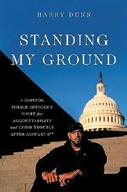
Dunn, Harry with Ron Harris | Hachette (288 pp.) | $28.00 | Oct. 24, 2023 9780306831133
A decorated law enforcement officer shares his experiences on the day of the Capitol insurrection. Dunn was at the Capitol on January 6, 2021, when rioters stormed the building while Congress was in session. He and dozens of other officers were injured, several fatally. The author lucidly dissects the elements of the Capitol Police and how they work, and he briefly discusses his youth in Maryland and his desire to play professional football. When physical limitations sidelined those aspirations, Dunn found his way to the Capitol Police in 2008, where he observed how impassioned protests demonstrated the
A spirited tour of six material things on which our lives depend.
MATERIAL WORLD
power of democracy and freedom of expression. These experiences helped him grow into his political thinking, which he shares throughout the book. Dunn dramatically recounts the hours leading up to the attack as he questioned the need to wear riot gear in anticipation of a possible attack. His intimate first-person chronicling of the crowd’s violent surge is as riveting as his account of retreating to his post, covered in pepper spray and bruises, to take a video call from his young daughter. He candidly addresses his mounting frustration and disbelief weeks later as the event’s violent intensity became diluted, told that it was just “random wingnuts who got a little too carried away.” Disillusioned, he fought for justice, starting with an interview with a Buzzfeed reporter and continuing with an impact statement to the Justice Department during an Oath Keepers trial. For appearing publicly, Dunn admits, he has been both praised and viciously vilified for openly rebuking the insurrectionists who “tried to destroy the very lifeblood of this nation.” Throughout this forcefully delivered book, Dunn’s passion for true patriotism and the tenets of constitutional democracy resonate, despite his emotional pain and PTSD.
A sobering, heroic testimonial about an infamous day in American history.

Evangelista, Patricia | Random House (368 pp.) | $30.00 | Oct. 17, 2023
9780593133132

A Filipino reporter’s powerful chronicle of the brutal anti-drug crusade and violent toll of President Rodrigo Duterte.
From his first day in office, Duterte, whose term lasted from 2016 to 2022, promised death to those
involved in the drug trade. As field correspondent for the digital news company Rappler in Manila, Evangelista found her job morphing into a chronicle of the extrajudicial killings that occurred over the seven months after Duterte was elected president on May 30, 2016. The killings were carried out in secrecy by pro-Duterte hit squads and vigilantes acting on the president’s vigorous public calls to target any suspected drug dealers and pushers. Since he declared his “war on drugs” upon taking office, the death toll has topped 12,000, according to the Human Rights Watch. The author focuses on a few of the most horrific cases, detailed in interviews with witnesses and survivors. She also shows how Duterte contributed to the killing culture with statements that dehumanized the victims: “Frankly, are they human? What is your definition of a human being?” Many of the deaths occurred as collateral violence, as innocents, especially children, were caught amid the gunfire. To provide context for the madness, Evangelista reviews the Philippines’ colonial history, first under Spain and then the U.S., describing how dictators like Ferdinand Marcos were blatantly supported by the U.S. before true democracy emerged in the 1980s after the “Edsa Revolution,” led by Corazon Aquino. The author also chronicles the turbulent story of her grandfather, Mario Chanco, an early Filipino journalist, and offers her recollections of growing up in a country where democracy was teetering on the brink, ultimately pushed over by Duterte, “the punisher” from Mindanao. Evangelista also includes the voices of Duterte’s supporters, who explain that “to be Duterte was to belong.”
Heartbreaking personal stories underscore the consequences of a government-incited extrajudicial rampage.

Foer, Franklin | Penguin Press (432 pp.) $30.00 | Sept. 5, 2023 | 9781101981146
A chronicle of two fateful years in the White House.
Based on interviews with nearly 300 people in the inner circle of the Biden administration, as well as abundant published sources and government records, Atlantic staff writer Foer offers a brisk, detailed history of the president’s first two years in office, a crucial period that saw blunders and triumphs, deft maneuvering and lucky breaks. As the author sees it, Biden, whose “expertise was nose counting, horse trading, and spreading a thick layer of flattery over his audiences,” succeeded in his own heartfelt goal of proving “the eternal relevance of politics.”
Among the president’s successes were the passage of the Inflation Reduction Act, with a focus on climate change; the distribution of Covid-19 vaccines throughout the country; the confirmation of Ketanji Brown Jackson to the Supreme Court; and decisive leadership among the West over Ukraine. Foer examines Biden’s relationship with his vice president, Kamala Harris; and his protracted negotiations with Joe Manchin and Kyrsten Sinema, who mounted strong opposition to Biden’s Build Back Better plan, and with Pramila Jayapal, a leader of the Congressional Progressive Caucus, who did not want the plan watered down. While domestic challenges focused on Build Back Better, combatting the pandemic, and dealing with inflation, Biden faced critical foreign challenges. From longtime service as the top Democrat on the Foreign Relations Committee and eight years as vice president, Biden developed a “swaggering sense
of his own wisdom about the world beyond America’s borders.” He was intent on withdrawing from Afghanistan, generating much debate about the consequences of leaving that nation to the Taliban. What Biden hoped would be an “orderly departure” resulted in chaos and a blight on the presidency. Acknowledging that Biden’s “great strength is his empathy,” Foer also sees that his verbal missteps and volubility have remained as shortcomings for the “Irish raconteur.” Overall, the author creates a respectful portrait of a savvy, dedicated politician.
A deeply researched political history and biography.

Frank, Adam | Harper/HarperCollins (256 pp.) | $27.99 | Nov. 21, 2023
9780063279735
A jocular title does not even hint at the real wonders of this cook’s tour of alien life.
Astrophysicist
Frank, author of Light of the Stars and The Constant Fire, has been obsessed with the idea of extraterrestrial life since childhood. After years of dreaming about exploring the cosmos for signs of intelligent life, he and other scientists are on the threshold of a new era of unprecedented discovery in the field of astrobiology. He details not only recent revelations in the detection of exoplanets, but also the search
for technosignatures, indicators of technologically advanced species on worlds light years distant. These are not merely elements of science fiction. They are realities now within human reach thanks to the continuing development of ultra-powerful telescopes and to the sea change in a scientific culture that once scoffed at the Search for Extraterrestrial Intelligence (SETI). Frank’s enthusiasm is contagious, occasionally over-exuberant, and there is plenty of hard science in this survey, which the author presents with economy and accessibility. The book brims with fascinating facts and speculations, from the particulars of astrobiology to Dyson spheres. Frank’s cosmic tour makes stops at such milestones as the Fermi Paradox and the Drake Equation, showing how these 1950s advances continue to inform our thinking about the possibility of technological civilizations. The author also recounts the origins and current manifestations of the UFO craze and how the advancement of actual science has been impeded by 70 years of pop culture images that haunt our collective expectations. Frank advises we look for alien life where it most likely exists: deep space. He also stresses the key point that we have only begun to peer into the universe with instruments capable of breakthrough discoveries, a useful riposte to critics of the effort. Throughout, Frank champions the importance of demanding standards of evidence: “They are, literally, why science works.”
Solid data and reasoned conjecture strike a harmonious balance in a new SETI.
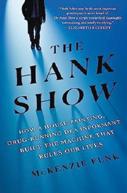
Funk, McKenzie | St. Martin’s (304 pp.) $30.00 | Oct. 3, 2023 | 9781250209276
A biography of the influential yet largely unknown “father of data fusion.”
Journalist Funk, author of Windfall, diligently exposes the legacy of Hank Asher (1951-2013), an entrepreneur who built an advanced data-processing empire from the ground up. Drawing on extensive research and interviews with colleagues, friends, and family members, the author reveals Asher’s origin story. Funk describes his “profane but charming” demeanor as similar to that of Donald Trump, and he chronicles Asher’s drug-running operation in the Caribbean. For the people who interacted with him, there was “little middle ground”—he was either loved or hated. Funk ably tracks the inception and rise of Asher’s “identity machines” from the 1980s, as he built military-grade supercomputers from consumer PCs. In the 1990s, one of Asher’s companies, Database Technologies, was involved in the creation of an exclusionary database that purged voter registration rolls and skewed the 2000 presidential election. Asher capitalized on the exploding amounts of digital data during the great internet boom; after 9/11, he retooled his company, Seisint, to identify possible violent extremists living in the U.S. From his massive mansion in Boca Raton, Florida, he promoted his database, known as the Multistate Anti-Terrorism Information Exchange (MATRIX), which represented the beginning of an ominous new era of analytics targeting a citizen’s propensity for criminality. Federal and state agencies, newly invigorated by the war on terrorism, latched on to the potential of the MATRIX technology, regardless of its real-world likelihood to be exploited as
Solid data and reasoned conjecture strike a harmonious balance in a new SETI.
THE LITTLE BOOK OF ALIENS
The former football player says he was never legally adopted by the family that took him in.
Michael Oher, the former football player whose story was told in Michael Lewis’ The Blind Side, says he was tricked by the family that supposedly adopted him, ESPN reports.
Oher, a Tennessee native, was an offensive lineman
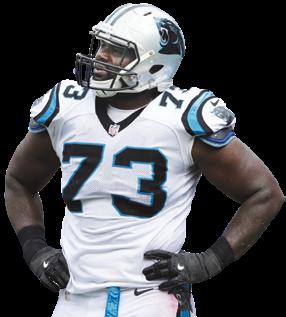
for Briarcrest Christian School before playing for the University of Mississippi and, later, the Baltimore Ravens, Tennessee Titans, and Carolina Panthers. He is the author of two books, both co-written with Don Yaeger: I Beat the Odds and When Your Back’s Against the Wall ; the latter was published in August.
His early football career was recounted in Lewis’ 2006 book, which formed the basis for a hit 2009 film directed by John Lee Hancock and starring Quinton Aaron, Sandra Bullock, and Tim McGraw. The film depicted how a married couple, Sean and Leigh Ann Tuohy, purportedly adopted Oher, saving him from poverty.
In a petition filed with

a Tennessee court, Oher claims that the Tuohys never actually adopted him but got him to sign papers that entered him into a conservatorship. Oher claims that the family then enriched themselves at his expense, earning significant amounts of money from the Blind Side film, while he received no money from the movie.
Oher’s petition seeks financial compensation from the Tuohys, as well as an end to the conservatorship.
CBS News reports that the Tuohys say they didn’t earn much money from the film and that they are “devastated” by Oher’s claims.
“It’s upsetting to think we would make money off any of our children,” Sean Tuohy said. “But we’re going to love Michael at 37 just like we loved him at 16.”—M.S.
Oher wrote two books.

EDITORS’ PICKS: Unnecessary

Drama by Nina Kenwood (Flatiron Books)
Spanish Is the Language of My Family by Michael Genhart, illus. by John Parra (Neal Porter/ Holiday House)
bell hooks: The Last Interview and Other Conversations by Melville House (Melville House)
The Heaven & Earth Grocery Store by James McBride (Riverhead)
ALSO MENTIONED ON THIS EPISODE:

Roomies by Sara Zarr & Tara Alterbrando
When We Were Alone by David A. Robertson, illus. by Julie Flett
The Last Interviews series from Melville House
Sing a Black Girl’s Song: The Unpublished Work of Ntozake Shange by Ntozake Shange, ed. by Imani Perry
The Color of Water: A Black Man’s Tribute to His White Mother by James McBride
Kill ’Em and Leave: Searching for the Real James Brown by James McBride
THANKS TO OUR SPONSORS:
Karl’s Diary: It’s a Dog’s Life by Sharon Winters
Fever of Unknown Origin: A True Tale of Modern Medicine, Mystery, and Magic by Judith M. Ford
Philosopher Arianne Shahvisi shares the tools you can use to sharpen social justice arguments.
 BY MEGAN LABRISE
BY MEGAN LABRISE

On this episode of the Fully Booked podcast, Arianne Shahvisi joins us to discuss Arguing for a Better World: How Philosophy Can Help Us Fight for Social Justice (Penguin, July 18), a brilliant response to the question, “How might we talk to one another about divisive political issues in a more productive way?” Using philosophical tools, Shahvisi, a senior lecturer in ethics at the Brighton and Sussex Medical School in the U.K., shows readers how to contemplate, comprehend, and substantiate their moral positions, with the express purpose of fostering understanding and imagining alternative futures.
Here’s a bit from Kirkus’ review of Arguing for a Better World: “In chapters with intriguing titles like ‘Can You Be Racist to a White Person?’ ‘Is It Sexist To Say Men Are Trash?’ and ‘Has Political Correctness Gone Too Far?’ Shahvisi attempts not ‘to be “objective” or “apolitical,” if such a thing were even possible,’ but to ‘make my reasoning clear enough that those who disagree with me will at least see where we part ways.’ For example, the cases she examines to explore the possibility of reverse racism include Abigail Fisher, aka ‘Becky With the Bad Grades,’ who felt that her rejection by the University of Texas was racist because ‘less qualified’ students of color were admitted.…In this case, as in just about all, Shahvisi finds that the real problem is capitalism. ‘While power and material resources continue to be distributed as they are, there can be no such thing as “reverse-oppression.”’ If steam is pouring from your ears right now, you probably aren’t going to like her answer to the question, ‘Do All Lives Matter?’ but the path to it is instructive.…Though
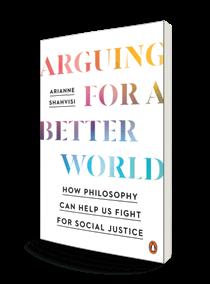
Arguing for a Better World Shavisi, Arianne Penguin | 304 pp. $20.00 paper July 18, 2023 | 9780143136835
conservative readers may part ways with the author, even they may be interested in the cogent analysis she provides.”

Shahvisi and host Megan Labrise discuss problem-solving and the importance of showing one’s work; the role of social media in political organizing; the tools philosophers use to understand their positions and envision alternative futures; the impossibility of reverse racism in today’s world and much more.
Then editors Laura Simeon, Mahnaz Dar, Eric Liebetrau, and Laurie Muchnick share their top picks in books for the week.
“predictive policing.” Asher, who died at 61 after dwindling many of his assets, survives today through the legacy of his tech wizardry, which echoes through our current systems of investigative policing and numerous other data networks. Readers concerned with the modern dismantling of personal privacy and rampant data-gathering will be riveted by this meticulous report.
A deeply unsettling exposé of an exploitative tech genius.

Graydon, Samuel | Scribner (384 pp.)
$30.00 | Nov. 14, 2023 | 9781982185107
A new entry in the crowded field of books about Einstein takes an impressionistic approach.
Graydon, science editor of the Times Literary Supplement, presents a “mosaic biography…composed of short chapters of varying styles that deal with a particular moment or aspect of Einstein’s life.” Born to a prosperous, nonobservant German Jewish family, Einstein was, despite popular legend, probably a prodigy, which guaranteed difficulties in the rigid German and Swiss educational systems. By the time he entered college, he was fascinated by and highly accomplished in mathematics and physics, preoccupied by unsolved problems involving space, time, gravity, and light. Professorships in theoretical physics were rare in 1901, so it’s no surprise that he didn’t get one, but his patent office job paid well, made use of his scientific training, and gave him time to write papers that appeared in Europe’s leading physics journal even before the miraculous four published in 1905. Establishment scientists noticed, but matters moved slowly. He entered academia and rose steadily, occupying a prominent position in Berlin. He hit the jackpot in 1919 with his proof of general relativity, which enraptured the media
and made him the world’s most famous scientist. Since his death in 1955, historians have turned up mildly unflattering material (an illegitimate child, some racism), but no revisionist biography has gained traction. Scholars tend to agree that Einstein’s discoveries were history’s most significant scientific achievements. Graydon’s research emphasizes secondary sources; perhaps the book’s outstanding feature is the extensive, opinionated bibliography, but those who choose this as their introduction to Einstein will not regret the experience— even though the author passes quickly over the science. Readers searching for a careful layperson’s explanation of relativity will find them in biographies by Abraham Pais and Dennis Overbye. No one should pass through life without reading a biography of the immortal physicist, and this one will do fine.

Guy, John & Julia Fox | Harper/ HarperCollins (464 pp.) | $35.00 Oct. 17, 2023 | 9780063073449
Sympathetic new look at Henry VIII’s second wife, her ambition to share power, and her impact on international relations.
Historians Guy and Fox cite new sources and heightened interest in Anne Boleyn as the reasons for another examination of her brief
life. The authors offer more nuance than the traditional view of Anne as a scheming temptress who would not sleep with Henry until he arranged the divorce from Catherine of Aragon and married her. Anne hailed from an upwardly mobile clan: Her father, Thomas, a leading diplomat, “had no scruples about using his children to achieve wealth and power for the family,” and younger brother George held key, lucrative positions in Henry’s court. Anne was schooled in France as a teenager, serving as one of the demoiselles of Francis I’s wife Queen Claude. When she returned to serve Queen Catherine, Anne was considered a Francophile with decidedly French manners and customs. This would not serve to her benefit at the English court as Britain inched toward alliance with the Hapsburg emperor Charles. When a son by Catherine was not forthcoming, and after an affair with Anne’s older sister, Mary, Henry decided on slim, lively Anne as the “love of his life.” She managed to hold him at bay until he broke with Rome in 1534, becoming an increasingly divisive figure at court as the long, winding negotiations over his divorce dragged on. Anne “envisaged a mouldbreaking role for herself” as Henry’s co-regnant, but competition and jealousy undermined her. Still, write the authors, she “would enlarge the role of queen,” before her failure to produce a son led the insecure Henry to demand that Thomas Cromwell supply ammunition to rid himself of her. Though she died young, Guy and Fox hail Anne as a woman “exercising authority in a deeply patriarchal world,” and “she stands proudly in the pantheon of history alongside her daughter, Elizabeth.” A tragic historical tale delineated with admirable elucidation.
A tragic historical tale delineated with admirable elucidation.
HUNTING THE FALCON
Hankir, Zahra | Penguin (272 pp.) | $24.00
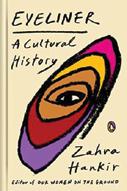
Nov. 14, 2023 | 9780143137092
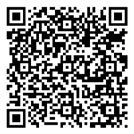
An exploration of the mystery, beauty, and potency of eyeliner. At first blush, a book about eyeliner would seem to be so esoteric that it would appeal only to fashion addicts, but it turns out to be an absorbing piece of work. Lebanese-British journalist Hankir, editor of Our Women on the Ground, mixes her personal experiences with the social history of eyeliner. Eyeliner reached its first peak in ancient Egypt, with paintings of the era showing women and men adorned with eyeliner. Hankir has always been mesmerized by the famous bust of Nefertiti, which shows eyeliner in all its glory, with “wings” flowing from the sides of the eyes. The bust had a critical impact on the author, helping her to overcome her adolescent insecurities and accept living between two cultures. Nefertiti leads her to an examination of eyeliner in the Middle East, India, and Japan, and she digs through the complex cultural and historical layers. Interestingly, in Islamic countries, religious authorities frown on most cosmetics but accept eyeliner, perhaps because Muhammad used a form of it “to protect his eyes.” In the West, eyeliner is not usually used by men, although there have been plenty of exceptions in the creative industries and within the queer community. There is no shortage of types
and styles for women, pushed along by celebrities and social media. The latest trend is to wear only eyeliner, rejecting other makeup and accepting skin blemishes. Hankir also examines eyeliner in the context of women of color reclaiming their heritage, and she asks readers to appreciate that beauty has many roots. “To wear eyeliner and to learn about its origins is to bring not only ourselves,” she concludes, “but also some of the world’s most fascinating cultures, into focus.” Hankir provides an engaging, colorful study while relating her own crosscultural story.

Harmon, Mark & Leon Carroll Jr. | Harper Select/HarperCollins (272 pp.) | $26.99 Nov. 14, 2023 | 9781400337019
It’s no secret that Japanese spies worked in Hawaii in the years before Pearl Harbor, but there was also a Japanese American agent working to foil them.
Screen actor Harmon and NCIS technical adviser Carroll try their hand at history, and it’s mostly a success—at least for readers who can acclimate to present-tense narration and occasionally overheated prose. As relations with Japan deteriorated during the 1930s, intelligence services worried about the loyalty of
Hawaii’s largest minority, Japanese Americans, although local officials found little disturbing evidence. The reality was that local Japanese officials were gathering information on island defenses, and in 1940, Japan sent an agent, Takeo Yoshikawa, to work at it full-time in the consulate. Counterespionage in Hawaii was the responsibility of local police and several government agencies, but the authors focus on the Office of Naval Intelligence and its first Japanese American agent, Douglas Wada, hired in 1937. Wada spent most of his time translating and interpreting, but he also kept an eye out for suspicious activities. In the first half of the book, Yoshikawa spies while Wada goes about his business. After the attack, Japanese diplomats, including Yoshikawa, were arrested and later exchanged. Hawaiian intelligence services were on the alert, although little of consequence turned up. In what is now agreed to be a disgraceful episode of national racism, all Japanese Americans were regarded as disloyal, and 120,000 people of Japanese descent were arrested and sent to internment camps. A few hundred people on Hawaii were detained, but there were no mass arrests. Some scholars credit American intelligence for assuring the White House that Hawaii’s Japanese Americans were loyal, but practical reasons predominated: Locking up more than one-third of the island’s population would wreck its economy. Neither Yoshikawa nor Wada was a significant historical figure, but they lived long enough to be interviewed and written about, providing material for this revealing account.
Though sometimes unnecessarily breathless, this is decent military history that will appeal to World War II buffs.
Hankir provides an engaging, colorful study while relating her own cross-cultural story.
EYELINER
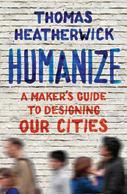
Heatherwick, Thomas | Scribner (496 pp.)
$29.00 | Nov. 7, 2023 | 9781668034439
A British designer decries the fundamental ugliness and inefficiency of so much of the modern built world.
“A selfish building cares only about its ability to make profit for its owners,” writes Heatherwick, “and disregards everyone else.” What is worse, he believes, is the fact that buildings are downright boring, the result of repetition with a limited repertoire of tricks that once made buildings look interesting. Blame it on the likes of Le Corbusier and van der Rohe, who advocated monumental concrete blocks that cost little and could be built anywhere. Being boring is just one demerit, and bad buildings carry tremendous hidden costs, societal and environmental: They are wasteful because they are poorly built and often have to be torn down. Furthermore, “a total of 11 percent of annual global carbon emissions comes just from construction and building materials,” which the author reckons to be five times the number generated by the aviation industry. Additionally, being cooped up in boring buildings contributes to a social malaise that that can lead to crime and substance abuse. Heatherwick argues that it behooves us to do something about the waste and cost involved—and to do it with urgency, inasmuch as the number of humans living in cities increases daily. The author also proposes that the architectural profession be overhauled so that architects are not conceived of as “intellectuals,” but instead acquire both solid trade skills and the soulfulness of an artist who has the sensitivity to understand that, contra the modernists, “love of decoration is part of human nature.” Activists, too, will appreciate the
author’s frequent potshots at the cult of cheapness: “Why do so many of the world’s new buildings look like greed? Because the ultimate customer in our capitalist world is not the public.” The book features a generous supply of photos, diagrams, and informative sidebars. A spirited, spot-on critique of a world of crumbling, cookie-cutter developments.
Hecimovich, Gregg | Ecco/HarperCollins (304 pp.) | $40.00 | Oct. 17, 2023 9780062334732
A resurrection of the life of the first African American female novelist.
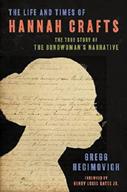
“The Bondwoman’s Narrative by Hannah Crafts, A Fugitive Slave Recently Escaped from North Carolina.” So reads the title page of a 19th-century manuscript that was not published until 2002. The novel tells the story of a captive, also named Hannah, who escaped from slavery, and scholars have worked for two decades to disentangle its facts from fiction. If Hannah Crafts really was the fugitive slave she claimed to be, The Bondwoman’s Narrative would be the earliest known novel written by an African American woman. In 2013, Hecimovich, an English professor, made a case that Crafts was exactly that, identifying her as a captive who escaped from the prominent Wheeler family of North Carolina in 1857. Here, the author presents his full version of Hannah’s story, tightly woven out of her novel’s clues about her life and his own copious archival research. Hecimovich traces the woman who called herself Hannah Crafts, following her from North Carolina to New Jersey, where she
settled in freedom. Along the way, he explores how Crafts may have built her autobiographical novel, drawing on her experiences of slavery’s violence and loss and shaping composite characters based on other captives and their captors. However, as Hecimovich shows, carrying her fellow captives to freedom was not the only way that Crafts practiced rebellion through her art. In her novel, she also rewrote and “blackened” stories from white novelists like Harriet Beecher Stowe and Charles Dickens, a practice of sampling and appropriation that Hecimovich fascinatingly details.
“Writing The Bondwoman’s Narrative ,” notes Hecimovich, “represented a quest for the author to wrest back a life otherwise stolen from her… to control her world, escape it, and then rewrite it with a happy ending.” Henry Louis Gates Jr., who first authenticated the manuscript, provides the preface.
An absorbing work of historical and literary excavation.
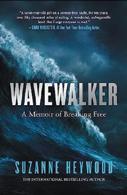
Heywood, Suzanne | Harper360 (416 pp.) $29.99 | Oct. 24, 2023 | 9780008648381
A harrowing coming-of-age tale set on the high seas.
In 1976, 7-yearold Heywood set sail from Plymouth, England, with her parents and brother, Jon. Their itinerary seemed simple: Take Wavewalker, the family boat, and follow the oceanic path sailed by famed Capt. James Cook 200 years prior. Once aboard, however, the voyage proved to be far less straightforward than they anticipated. The unrelenting ocean was sometimes generous to the family, sending adventure and elegant marine life for them to behold, but in many other moments, it caused turmoil, taking out its rage on the boat, the family, and a host
of crewmembers who joined them at various ports. Their journey ultimately extended beyond the three years initially planned; though the family was evenly divided on whether to continue the adventure, her father decided they would go on. “This isn’t a democracy. It’s a benevolent dictatorship,” he explained. “The captain always gets the deciding vote.” They remained at sea for seven more years, during which time they covered 47,000 nautical miles, “equivalent to circumnavigating the globe twice.” Using maps and counting the days spent at sea as signposts, Heywood transports readers into her world, viewed through a porthole. Like the waters they traversed, familial relationships became choppy when the author grew from girlhood to near adulthood. “My parents [were] caught up in their own needs,” she recalls, relating how her longing for stability changed her from unwitting accomplice to conscientious objector, “frustrated by my impotence and isolation.” She took solace in her correspondence-school studies and eventually earned an offer to stay ashore and study at Oxford. Retelling her story in engaging prose, Heywood asks for neither pity nor sympathy; rather, she seeks healing and catharsis by retracing a childhood lost at sea. Written evidence that no matter what the circumstances, a person’s true anchor is often found within.
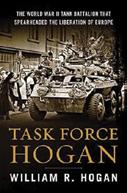
Hogan, William R. | Morrow/HarperCollins (320 pp.) | $32.50 | Nov. 7, 2023
9780063272026
World War II story of a tank unit battling to victory, from the Normandy beaches across France, Belgium, and Germany. Hogan, a fourth-generation soldier, chronicles the story of his father, Lt. Col. Sam Hogan, who was only 28 when he led his battalion onto the beach on July 10, 1944, a month after D-Day, and immediately joined the fight. “A West Pointer, he was firm in personality and convictions; but to armchair generals and colonels pressuring him to move his people forward from the safety of a command post ten kilometers behind him, he could be irreverent and understatedly sarcastic.” Following this assessment of his courageous father, the author combines official sources with family correspondence, journals, and interviews with surviving members of the task force to deliver an admiring account of 10 months of brutal combat. This is a docudrama with invented dialogue and the characters’ inner thoughts, but the author has done his homework, delivering a capable nutsand-bolts, often gruesome description of small-unit action that undoubtedly resembles what actually occurred. Readers will learn the smell, sound, operation, and defects of a Sherman
tank; the makeup, command structure, and tactics of an American armored division; and personal stories of scores of men under and above Sam Hogan. The author also delivers plenty of vivid descriptions of the enemy, whose soldiers were (in the author’s eyes) elite and fanatic, with better weapons and vastly superior tanks. (Unmentioned are the facts that the enemy’s men and tanks were vastly outnumbered, and their experienced commanders were regularly overruled by Hitler, with disastrous results.) What readers will not get is the big picture, as the author rarely steps back to describe the overall campaign. Readers searching for an overview should consult Stephen Ambrose or Max Hastings. An adequate account of ground-level fireworks in the war’s final year.

Housel, Morgan | Portfolio (256 pp.) $15.99 paper | Nov. 7, 2023
9780593332702

A look at how human nature is the great constant in the history of change.
This is a strange piece of work: a collection of 23 “little stories” (many of them drawn from the author’s blog) loosely organized around the theme of risk. A business journalist and a partner at the Collaborative Fund, a venture capital firm, Housel acknowledges that technology, trends, and politics move at an astonishingly rapid pace, but he asserts that human behavior does not really change much. Identifying what changes and what does not is the key to effective risk assessment as well as the path to a decent, contented life. Humans, writes the author, will be satisfied with what they have until they see others who have more. To get ahead, they are likely to listen to “experts,” although often the only talent
The author delivers plenty of vivid descriptions of the enemy.
TASK FORCE HOGANFor more about D-Day, visit Kirkus online.

The Pigeon Tunnel will be released on Apple TV+ in October.
John le Carré is the subject of the next documentary from celebrated filmmaker Errol Morris, Deadline reports.
Apple Original Films and the Ink Factory will release Morris’ The Pigeon Tunnel this fall. According to a news release quoted by Deadline, the documentary “spans six decades as le Carré delivers his final and most candid interview, punctuated with rare archival footage and
dramatized vignettes.”
Apple says that The Pigeon Tunnel draws on le Carré’s 2016 memoir of the same name. The score for the film is composed by Philip Glass, in collaboration with Paul Leonard-Morgan.
Le Carré, the former British spy whose real name was David Cornwell, is considered one of the world’s greatest espionage novelists. Known for bestselling novels including The Spy Who Came in From the Cold ; Tinker, Tailor, Soldier, Spy ; and The Constant Gardener ; he died in 2020 at 89.
Morris is the director of several acclaimed documentaries including The Thin Blue Line; Fast, Cheap & Out of Control; and The Fog of War: Eleven Lessons From the Life of Robert S. McNamara. He is also the author of three books, Believing Is Seeing, A Wilderness of Error, and The Ashtray

Two of le Carré’s sons, Ink Factory co-founders Simon and Stephen Cornwell, said,
“Full of deep insight, and surprising, amusing and often profoundly moving anecdotes, The Pigeon Tunnel charts a conversation between two great minds, both consummate storytellers; one who wove extraordinary fiction from the events he experienced; the other whose interrogation of those events has led so often to a greater truth.”
The Pigeon Tunnel will be released on Apple TV+ on Oct. 20. —M.S.


 By Katy Hessel
By Katy Hessel
 By J. Randy Taraborelli
By J. Randy Taraborelli
 By Jennifer Ackerman
By Jennifer Ackerman

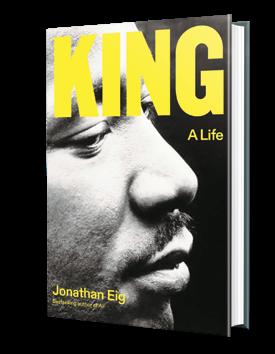
these experts have is making everything more complex than it really is. Most people respond more readily to narratives and incentives than to data. There is a tendency to think of the future as a straightforward extrapolation of the past, although the most significant events are the big surprises that seem to jump out of nowhere. Housel tries to provide a series of lessons, such as acknowledging that every job has its downsides and understanding that many aspects of life are unpredictable and difficult. This is interesting enough, but many of the author’s stories, especially those based on personal experiences, do not seem to relate to his theme, or indeed to anything. His thinking can be difficult to follow, and some of his conclusions are contradictory. Some readers might find the book to be positive and even inspiring, but many others will find it merely self-indulgent and confusing.
Housel makes some good points, but they are often lost in the text’s meandering structure and lack of focus.
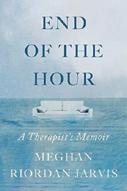
Jarvis, Meghan Riordan | Zibby Books (272 pp.) | $27.99 | Nov. 14, 2023
9781958506219

A mental health professional faces her own fragility.
Psychotherapist
Jarvis, host of the podcast Grief Is My Side Hustle, draws on her own experiences and those of her patients in a candid memoir about trauma. Jarvis was 9 when a friend’s brother drowned, a devastating event that incited profound feelings of loss and fear. Those feelings were exacerbated at home: Her father was away each weekday working in New York City; her mother cried every night. “It felt like we were all hanging on by a thread,” Jarvis writes; she felt “constantly on the verge of panic.”
END OF THE HOUR
At first, she took to self-comforting by overeating, but by the time she was 13, she had devised another method of dealing with pain. “People were impressed with my caretaking skills,” she writes, “and, from the outside, it seemed like I was in total control. Underneath the surface I was all anxiety, self-doubt, and self-loathing.” Those symptoms led her to seek therapy when she was 23, and she was diagnosed with “anxiety and intermittent depression.” Because of her positive experience with her therapist, she trained as a therapist herself. With her own practice, married, and the mother of three children, Jarvis fell apart after the deaths of her parents: Two years after her father’s death and two months after her mother’s, she could no longer function. “I had lost more than my bearings,” she writes. At a treatment center, she was diagnosed with complex trauma, which happens “when a person who has experienced past trauma lingers again in fear without support or relief. Compound trauma happens when more than one overwhelmingly bad thing happens in a short span of time.” Her mother’s death, she realized, “had swept away everything in my life that was stable, leaving behind old and new pain.” The author’s forthright memoir will resonate with readers in emotional pain. A frank chronicle of healing.
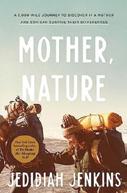
Jenkins, Jedidiah | Convergent/Crown (240 pp.) | $27.00 | Nov. 7, 2023 9780593137260
A gay author tells the story of an unforgettable cross-country road trip with his conservative Christian mother. As he neared 40, Jenkins, the author of To Shake the Sleeping Self and Like Streams to the Ocean, came to a sobering realization: His devoutly Baptist mother, a “timeless force of nature,” would one day die. Wanting to spend as much time as possible with her, he overrode the “claustrophobia” of her narrow-mindedness by bringing a friend along on a trip to Europe. Later, his mother proposed a Glenn Beck cruise which Jenkins accepted only because the trip would allow him to become “a voyeur [and] social anthropologist” among the conservatives he imagined would be his fellow travelers. When the pandemic cancelled the cruise, the pair decided on a road trip that would retrace his mother and father’s “walk across America” during the late 1970s. “From 1976 to 1979,” writes Jenkins, “my mom and dad walked 2,600 miles from Louisiana to the Oregon Coast.” Navigating roads that would take them through the South, the Rockies and on to the West Coast, mother and son also navigated the complexities of a deeply affectionate relationship fractured by their respective belief systems. The author had left Nashville for Los
Angeles to explore the sexuality that his conservative Christian mother—a woman who also believed colloidal silver, rather than medical science, cured all ills, including Covid-19—could not accept. In 20 years away from her, his fondest wish to be married had not manifested because of “decades of unpacking,” and his mother’s prayers for sexual “healing” had intervened. Though the author and his mother never managed to reconcile their differences, what makes this heartfelt, often funny book so rewarding is the portrait Jenkins offers of two people still willing to accept the challenge of loving each other despite clashing beliefs.
Engaging reading for divided times.
Jenkins, Malcolm | Simon & Schuster

(320 pp.) | $28.99 | Oct. 3, 2023
9781668004494
Thoughtful memoir by a football great. The 14th overall pick in the 2009 draft out of Ohio State, Jenkins started his NFL career with the New Orleans Saints, and he refused the team’s first contract offer until finally signing for a then-impressive $19 million for five years: “This was my first business decision: start training camp on time and accept whatever deal they offered or hold out until I was paid my worth.” Never shy of speaking his mind, he played for 13 seasons for the Saints, the Philadelphia Eagles, and then the Saints again, attracting controversy late in his career raising his fist in a Black Power salute during the national anthem. On the field, Jenkins proved to be one of the best defensive backs in the NFL, a three-time Pro Bowler and two-time Super Bowl winner. The best parts of his memoir are his playby-play memories of important games, as well as an insider’s account of the
unexpectedly complex work required in training, especially for a rookie (“a player must learn to play at a high enough rate of speed to challenge their limits with the sobriety of mind to keep from putting their teammates in compromising situations”). Though he started off slow at his rookie camp, Jenkins survived the first roster cut, unlike a couple of the showoffs who thought they knew better than the veterans and coaching staff—a valuable lesson for any player, from Pop Warner kids to would-be NFL stars. Other lessons come fast and furious: “Having a corner that can take out the opposition’s top wideout is a premium for any defense”; “When you get a takeaway in the red zone, they essentially count for double.” Jenkins closes with his decision to retire in 2020, satisfied that “I had given that last chapter of my life everything I had.”
Fans of Jenkins on and off the field will take much pleasure in this actionpacked account of gridiron life.

Kelly, Helena | Pegasus (400 pp.) | $29.95 Nov. 7, 2023 | 9781639365333
An iconic author left a legacy of lies.
British literary scholar Kelly, the author of Jane Austen, the Secret Radical, offers a brisk overview of the life of Charles Dickens (1812-1870), questioning many assumptions about the author that were presented in the first biography of Dickens by his friend and confidant John Forster. “In spite of the revelations it offered,” Kelly writes, Forster’s work “is less a biography than an exercise in posthumous brand management.” Diligent research and incisive close readings of Dickens’ writings ground Kelly’s investigation into the gaps, contradictions, and inconsistencies in the manipulated, self-serving story that many subsequent biographers
have repeated: “Who and what can we trust in this narrative?” Dickens, she reveals, “started on the construction of his public persona almost as soon as he became famous. He was remarkable. He was self-made. He was the noble victim of untruthful rumours.” Kelly investigates the truth of some rumors, including plagiarism, antisemitism, racism, mental breakdown, and betrayals. She is puzzled by her subject’s effusive grieving over the death of a sister-inlaw; his possible affair with another sister-in-law; and his virulent rejection of his wife. Regarding his claim of having been abandoned by his debt-riddled family and sent to work in a boot-polish shop when he was 12, Kelly finds evidence that he may have written advertising copy for the shop, instead. She wonders why he concealed the existence of a younger sister, who died at the age of 9 and may have had physical or mental disabilities. She appears, Kelly contends, in Dickens many depictions of characters with disabilities and of “an older child mourning the death of a younger sibling.” As for the author’s many health problems, she proposes that Dickens suffered from syphilis, contracted in the early 1840s, likely from extramarital affairs, and likely passed on to his wife.
A literary bio that deftly untangles truth from untruth.

King, John | Norton (288 pp.) | $29.99 Nov. 7, 2023 | 9781324020325
The compelling 125-year history and continuing resonance of an architectural landmark.
Urban design critic for the San Francisco Chronicle, King is uniquely well placed to tell the story of San Francisco’s Ferry Building, one of the most recognizable buildings in
America. “Every city has a landmark like this,” writes the author, “a building through which one can read the past.” His explanation of the engineering marvel of its construction on an artificial seawall and appraisals of its aesthetic merits and symbolic importance as a “monumental gateway” to the city are easily accessible to general readers. King makes a strong case that the Ferry Building is “a profound work of civic infrastructure connecting the city to the region and the nation, proof of urban ascendance.” Architect Arthur Page Brown’s masterpiece, which opened in 1898, withstood San Francisco’s disastrous 1906 earthquake and then survived its usurpation as a transportation hub by the rise of the automobile and construction of the Golden Gate and Bay Bridges in the late 1930s. The building then spent 50 years in limbo, worsened by the 1959 construction of the elevated Embarcadero Freeway, which blocked its classical façade and closed off downtown’s connection to the waterfront. The Ferry Building held firm during the 1989 earthquake, while the Freeway was compromised. This led to the roadway’s 1991 demolition, spurring what Mayor Art Agnos called “renewal for a spectacular waterfront that has been blighted for 32 years by a concrete monster.” King describes the building’s rebirth as a marketplace and what Bon Appetit dubbed “a kind of cathedral for the city’s food-worshipping population.” The book’s climax and most salient point is King’s compelling exploration of the existential predicament facing the Ferry Building, adjacent piers, and waterfront—and those of all port cities—as climate change leads to inexorable sea-level rise.
Fascinating insights into San Francisco history and the transformation of other waterfront cities.
Leonhardt, David | Random House (528 pp.) $30.00 | Oct. 24, 2023 | 9780812993202
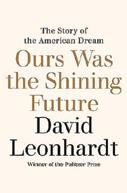
A senior writer at the New York Times argues that lack of investment in the next generation is keeping Americans from attaining the so-called American dream.
As Leonhardt reports in this well-researched, thoughtful work, the phrase “American Dream,” coined during the Great Depression, was once meaningful to many poor, struggling, and immigrant American families, but now it’s often used “ironically or bitterly.” Using a combination of personal stories and statistics, the author demonstrates that “a shining future” in the form of better educational prospects, jobs with livable wages, and greater health and material well-being than one’s parents enjoyed was very much in reach for many Americans by the mid-20th century. For example, Leonhardt learned from a longitudinal study that tracked progress for Americans in terms of tax rates that an astounding 92% of children born in 1940 grew up to have higher household income than their parents. Until the 1980s, quality of life improved dramatically in terms of physical health, declines in inequality, rising incomes, and material benefits, and the bounty was shared relatively broadly. However, in the last three to four decades, inequality has widened. “The result,” writes the author, “is stagnation in nearly every reliable measure of well-being.” He examines trends in power, business culture, and investment, arguing that the “roughand-tumble capitalism” under recent Republican administrations has run roughshod over “democratic capitalism,” which “describes a system in
which the government recognizes its crucial role in guiding the economy.”

Leonhardt illustrates his argument through the work of influential Americans across the ideological spectrum, from Frances Perkins to Dwight Eisenhower and Robert Bork. His economics-heavy overview considers factors such as the decline of labor unions, split within left-leaning political circles, embrace of law and order, rise of interest groups, and decline in investment in education, among others.
Excellent, accessible overview of socioeconomic trends over the last decades and what they bode for the future.

Mahtani, Shibani & Timothy McLaughlin Hachette (336 pp.) | $30.00 | Nov. 7, 2023 9780306830365
In the trenches with the last remnants of the Hong Kong protestors, who “present[ed] the Chinese Communist Party with the greatest challenge to its rule on Chinese soil since the Tiananmen Square protests of 1989.”
Washington Post journalist Mahtani and Atlantic writer McLaughlin arrived in Hong Kong in early 2018, and they witnessed events from the last valiant protests through the pandemic and the ensuing crackdown, which left hundreds arrested and many rushing to leave the city. They witnessed events from the last valiant protests through the pandemic and the ensuing crackdown, which left hundreds arrested and many rushing to leave the city. The authors descended into the chaos of the streets and befriended a handful of people whose lives they follow closely here. Tommy, one of
the “braves” on the violent frontlines of the movement, had already been arrested several times and needed to escape to Taiwan. Ironically, his own grandmother had escaped China during the Cultural Revolution by fleeing to Hong Kong via makeshift boat. Chu, born during the Japanese occupation in World War II, had roots in mainland China like many other Hong Kongers. With little education, he became a minister and was involved in the protests that led to Tiananmen Square, and he helped organize the underground movement Operation Yellowbird to help dissidents flee China in the wake of the crackdown. The authors trace China’s slowly tightening grip on Hong Kong over the decades, from the Joint Declaration signed in 1984 by Margaret Thatcher and Deng Xiaoping to ensure that promised “current social and economic system in Hong Kong will remain unchanged, and so will the life style,” for 50 years after the British handover; to the 1997 handover; to the 2017 election of a leader hand-picked by Beijing, Carrie Lam. The authors also examine the dissenters’ disappointment in U.S. government, a once-staunch ally they believe has capitulated to China’s strong-arm policies.
Compelling and poignant insider tales of China’s devastatingly complete anti-democracy actions.
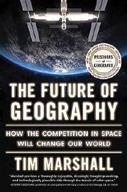
Marshall, Tim | Scribner (288 pp.) | $28.00 Nov. 7, 2023 | 9781668031643
The author of Prisoners of Geography examines how leaping into space is both technically feasible as well as economically necessary.
Marshall is a British journalist
who has written a series of well-regarded books about geography and its impact on politics, history, and human affairs in general. Here, he looks in a different direction: up. The author begins with a review of the early days of rocketry and space research, although most of that ground has been already covered. The pace picks up when he turns to the Moon landings and the deployment of early-generation satellites. Military imperatives drove much of the early technology, but gradually the emphasis moved to commercial objectives. Marshall ably explains how satellites actually work and the strategic importance of certain points in space that allow for geostationary orbit. The next step, notes the author, should be a return to the Moon, which has critical resources, possibly including water and a potential energy source called helium-3, which could be used for nuclear fusion. The author sees a growing consensus about a new Moon project but accepts that it would be a massive undertaking. One possibility is establishing a space station as a staging post. A Moon settlement could then act as a steppingstone to Mars and beyond. Once again, it is becoming a race with military goals, mainly between the U.S. and China. Marshall examines China’s burgeoning space program, noting that Russia, now faltering, is hoping that a partnership with China will put it back in the game. Marshall worries that once established in space, humans will simply repeat their geopolitical mistakes and conflicts. The current treaties are obsolete, and negotiating a new legal framework will be tricky, but he suggests some useful ideas. This is an engaging,
informative read, and Marshall displays flashes of wit and a thorough understanding of the issues. A well-researched, insightful, infectiously enthusiastic book.
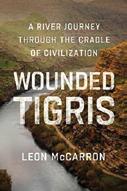
McCarron, Leon | Photos by Emily Garthwaite | Pegasus (352 pp.) | $28.95 Nov. 7, 2023 | 9781639365074
An Iraq-based Northern Irish journalist ventures down the Tigris River through the fraught landscape of Turkey, Kurdistan, Syria, and Iraq. McCarron and his crew, which included British photojournalist Garthwaite, a Swiss filmmaker, a local river expert, and a Kurdish fixer/ interpreter, among others, followed the ancient, beleaguered Tigris from the Kurdish highlands to the Iraqi marshes where it merges with its twin Euphrates, before emptying into the Persian Gulf. From the river’s source in Birkleyn, Turkey, the team ventured 70 days by car, raft, or rickety boat, observing the imposing landscape, exploring ancient historical records and religious lore, and engaging with the curious, mostly hospitable locals along the way. For centuries, the mighty, iconic river was the source of bountiful fish and the key to trade and transportation. Because it was prone to flooding, the Tigris has, in more
A well-researched, insightful, infectiously enthusiastic book.
THE FUTURE OF GEOGRAPHY

The new cards are part of the Brooklyn Public Library’s celebration of the superstar rapper. The Brooklyn Public Library is getting a membership boost from Jay-Z, CNN reports.
The library system unveiled 13 library cards featuring art from the superstar rapper’s albums, and they’ve
become a hit with readers in the borough, sparking 14,000 new accounts from Brooklynites.
The cards, created in a partnership with Jay-Z’s entertainment agency Roc Nation, are part of the library’s celebration of the rapper, which kicked off in July with an exhibit at the library’s central branch in Prospect Heights. The exhibit, which was kept a secret from Jay-Z until it opened, features “thousands of archived objects, including original recording masters, never-before-seen photos, iconic stage wear, prestigious awards and recognitions, as well as videos and artifacts from every facet on Jay-Z’s professional life.”
New Yorkers interested in obtaining one of the

new cards can do so at the central branch and at other branches throughout the borough. The cards are free for New York state residents, and the library is urging readers to collect all 13 designs.

Artist Chaz Barracks was one Jay-Z fan who took the library up on its offer. He told the New York Times that he took a five-hour bus trip to visit the borough to get a card.
“Jay-Z being a Brooklyn native, he goes hard for Brooklyn, and his fans go hard for him,” he said. “The card was worth it.”—M.S.

recent times, often been dammed, submerging significant villages, such as Saladin’s ancient capital of Hasankeyf. It has also suffered from widespread pollution and, in parts, been “downgraded…from a river to a stream.” During their journey, the crew navigated checkpoints (“for the next few hundred miles, everywhere we would go had been held by ISIS at some point between 2014 and 2017”); and felt the effects of the simmering unrest in Syria and the remnants of previous Iraqi conflicts, especially when passing through Saddam Hussein’s birthplace of Tikrit. The narrative flows organically, delineating such daily hardships as negotiating with the police, as well as the evening delights of breaking bread with new friends in their homes. Garthwaite’s full-color photos, included at the end of the text, are vibrant and illuminating, and McCarron thanks her in his acknowledgments for sharing her notes and reading drafts of the manuscript. The book also includes a glossary of relevant terms.
A brave adventure grippingly evoked and featuring pertinent historical context.
Elvis and the Colonel: An Insider’s Look at the Most Legendary Partnership in History
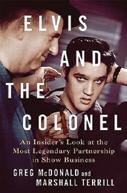
McDonald, Gregory & Marshall Terrill
St. Martin’s (384 pp.) | $32.00 | Nov. 28, 2023 9781250287496
An admiring defense of the man behind King Elvis’ throne.
McDonald was a teen when the man the world knows as Colonel Tom Parker took him under his wing as a driver, confidante, and surrogate son. He owes his career as a booker and manager of musical talent (including Ricky Nelson) to his mentor. “How can you ever possibly
repay someone who was everything to you?” writes the author, in collaboration with film and music writer Terrill. Apparently, by writing a book from the perspective of the man often maligned as a huckster who struck it rich. Born Andreas Cornelius van Kuijk, Parker came to America illegally when he was 20, and he found success on the carnival circuit and traveled with the owners of Parker Pony Rides. According McDonald, he lived frugally, worked hard, had a soft spot for disadvantaged kids and stray puppies, treated everyone fairly, and played Santa Claus for decades. “I am literally the last man standing who can tell his story,” McDonald writes, addressing the various criticisms leveled at Parker and the rumors surrounding him—e.g., that he took financial advantage of Elvis and his family; mismanaged him through a decade of schlocky movies and questionable choices of musical material; that his shadowy past limited Elvis’ future and how he should have done more to prevent Elvis’ descent into drugs. The author insists that all charges are grossly unfair, even though a report commissioned by the Tennessee probate judge after Elvis’ death prompted the judge to order the Presley estate to file suit against Parker and RCA Records for “fraudulent business practices.” In his account, Parker was a full partner with Elvis and a mastermind when it came to generating income, but hands-off when it came to his client’s spending and personal life. Everything good that happened to Elvis was to Parker’s credit; everything bad was Elvis’ own fault. A different perspective on a familiar story.
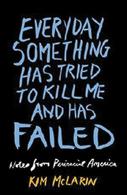
McLarin, Kim | Ig Publishing (216 pp.) | $18.95 paper | Nov. 14, 2023 9781632461582

Genuine, unrestrained musings, both political and personal, on life as a Black woman in contemporary America.
McLarin, a professor of creative writing and author of Womanish, Jump at the Sun, and other works of both fiction and nonfiction, prefers “periracial” to the misleading term “post-racial” America. As her essays eloquently and devastatingly demonstrate, there probably will never be a post-racial America. The author covers a wide range of topics, including travel, hair, kindness, aging, misogynoir, education, her experience getting a gun license (“In Massachusetts you can get a license to carry a gun without ever touching a weapon, much less shooting one”), and thoughts on humans’ relationships with dogs. “This is not a story about how my dog taught me to love or live or be a better human being,” she writes. “Dogs are easy to love, which is why people love them, but human learning seldom comes from ease. Anything important I’ve learned in life, anything lasting or worthwhile I’ve learned only through great effort. Sometimes discomfort. Not infrequently pain. Dogs may teach us how to love other animals but not how to love other human beings, which is by far the harder job.” McLarin makes her points so vividly that they are difficult to replicate or describe without direct quotations, and her assured, evocative prose is the kind only a truly gifted writer can achieve. The author’s voice is strong, the mechanics of her arguments are always clear, and she demonstrates wisdom craft, and uncompromising
ferocity throughout her observations. One of the central questions she poses is whether she, as a Black woman, can love a country that has repeatedly failed to reciprocate that love. “Put bluntly, our society is sociopathic,” she writes. “If America were a person, the kindest thing to do with us would be to get us some help.”
A highly rewarding, commiserating nod as well as an astute rallying cry.

McMahon, Darrin | Basic Books (528 pp.)
$35.00 | Nov. 14, 2023 | 9780465093939

An eminent cultural historian examines equality, a thorny but crucial issue that requires deep consideration.
Given the importance that the notion of equality plays in political discourse, it is odd that there is no universally accepted definition of it. This is not for want of trying: Communists, democrats, conservatives, fascists, and any number of would-be revolutionaries have all laid claim to the idea. McMahon, a professor of cultural history and the author of several well-regarded books, takes an intellectual tour from classical Athens to modern times, looking at the ways in which the term has been used and abused. In fact, he goes back even further, examining primate and primitive societies. All societies have hierarchical structures, and there is an inevitable tension between hierarchy and equality. But when those at the bottom rise up
to topple the elite by “leveling down,” as in the French Revolution or Mao’s Cultural Revolution, the eventual result is simply a new elite, with a lot of blood spilled along the way. Nevertheless, after 1945, the idea of equality, while vague, seemed to have won the ideological debate, with the “arc of history” seeming to bend in that direction and eventually including women, people of color, and other marginalized groups. Perhaps, but some of the people who currently scream loudest for equality do not seem inclined to share it outside their own circle. McMahon does not provide his own definition of equality, but he believes there is an obligation to do more than pay lip service to the idea. Hierarchies are unavoidable, he notes, but “we hold it in our power to make them less severe and more fair.” It is not an easy conclusion, but, given the depth and complexity of the ideas that McMahon tackles, probably the most appropriate one. An important examination of the past, present, and future of a key concept of political thinking.

Mitchell, David | Crown (448 pp.) | $32.50 Oct. 3, 2023 | 9780593728482
A British comedian and actor puts forth a goofy look at the English monarchs.
“We seem to need the trappings of monarchical continuity in order to reflect contentedly
upon ourselves, just as we need alcohol in order to socialize,” writes Mitchell early on. “The English have more to fear from republicanism than most—we risk losing our skimpy sense of self….The English tradition of kings and queens has a lot riding on it and a lot to answer for.” His opening monarch is Arthur, who, he argues, never existed, at least not in any of the guises that have been imagined for him. Describing who he might have been, the author writes, “someone like that, the idea goes, might have been the bit of real grit in the imagination oyster that turned into the Arthurian pearl. Personally, I don’t think imagination oysters need real grit any more than metaphorical bonnets need real bees.” There was a real Edward the Confessor, there was an Edward I, and there were Plantagenets and Tudors. In Mitchell’s eyes, all of them were complex failures. Many were bloodthirsty—“Apart from seizing the throne and having his nephews murdered, Richard seems comparatively nice”—and many inept, many more, writes the author, were both. He closes his account at the end of the bloodiest periods of history, reminding us that while the Spanish Armada is a key moment in English memory, it’s forgotten that Queen Elizabeth sent a fleet to Spain the next year with equally calamitous results. Indeed, because the book ends so early, one hopes for a sequel bringing us up to date. As it is, Mitchell’s book is a sardonic, endlessly funny update to the classic 1066 and All That
An eye poke for stiff-upper-lip monarchists, but good for many grins among the less worshipful of England’s royals.
A sardonic, endlessly funny update to the classic 1066 and All That .
UNRULYFor more on the British monarchy, visit Kirkus online.
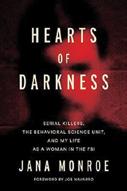
Monroe, Jana | Abrams (320 pp.) | $28.00 Oct. 10, 2023 | 9781419766114
A memoir from one of the first female profilers in the FBI’s Behavioral Science Unit.
As a child, Monroe idolized Dirty Harry, and after majoring in criminology in college, she became a probation officer and then a police officer in Southern California. In 1985, her decision to apply to the FBI ended her first marriage, to a man who mistakenly thought that Monroe’s “feminist determination to succeed in law enforcement would yield over time to a woman’s natural desire to bear children and mother them above all else.” When she began her training at Quantico, she met a fellow agent who would become her “second and permanent husband.” While posted in Tampa, she went undercover as an aerobics instructor to investigate some “New York Mafia types,” and one case, a triple homicide, affected her deeply. Consequently, she joined the Behavioral Science Unit, “one of the Bureau’s truly elite units,” focused on serial homicide. BSU, housed in a “dismal subterranean” office at Quantico, was immortalized in The Silence of the Lambs, and Monroe coached Jodie Foster for her role as Clarice Starling. “Hannibal Lecters were our daily diet (no pun intended),” writes Monroe. “We saw echoes of him constantly— through in-person interviews we conducted, by studying their victims’ remains, and by poring over case studies of earlier serial killers to hone our understanding.” The author is clear about the determination it took to thrive in the “male-driven and male-defined world of the FBI.” She makes no bones about the challenges she faced, nor does she shy away from
describing the “psychological toll” of the job. Refreshingly, Monroe injects some humor amid the descriptions of pure evil. While the narrative occasionally drifts into hodgepodge territory, the author is an affable narrator, and her career accomplishments need no embellishment. Fans of true crime will find much to enjoy in this absorbing chronicle of criminology.
9780374238766
Penetrating account of the connections among consciousness and artificial intelligence, cosmology, and quantum mechanics.
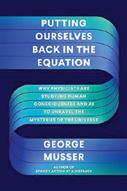
Musser, a contributing editor for Scientific American and author of The Complete Idiot’s Guide to String Theory and Spooky Action at a Distance, obviously has no fear of difficult subjects. This book should not serve as an introduction to human consciousness, but readers who pay attention will learn a great deal. The author begins by pointing out that “we are composed of matter, and we are conscious.” Therefore, he continues, “it must be possible to recognize these two facts.” Scientists specialize in taking things that seem different, such as matter and energy or electricity and magnetism, and showing that “they are essentially the same. Can they do that for matter and mind?” Not yet, notes the author, but they’re making progress, largely by paying close attention to neuroscience, which explores brain function, and computer science, which hit the jackpot last year when researchers demonstrated spectacular
AI programs (ChatGPT and DALL-E) that are so creative and communicate so convincingly that experts have concluded only that they are “probably” not conscious. Encountering this conclusion less than halfway through the book, readers may look forward to more insights, and Musser does not disappoint. The difficulty is that consciousness is still an extremely complex problem. A skilled reporter, the author chronicles his travels around the world interviewing experts in many fields (Carlo Rovelli appears throughout the text), showing us how cosmologists muse about the universe; physicists explore information theory and neural networks; neuroscientists wonder how a physical brain produces a mind; and philosophers explore emergence, free will, and causality. Quantum effects are significant, but, like consciousness, no one completely understands them beyond theory. Many consider it possible, in both cases, that we never will.
Deep thoughts about deep issues—but not for the faint of heart.
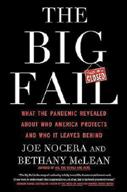 Nocera, Joe & Bethany McLean | Portfolio (448 pp.) | $32.00 | Oct. 17, 2023
Nocera, Joe & Bethany McLean | Portfolio (448 pp.) | $32.00 | Oct. 17, 2023
9780593331026
The authors of All the Devils Are Here examine how plutocratic government agencies and self-serving politicians critically mismanaged the Covid-19 pandemic.
In their latest eye-opening collaboration, Nocera and McLean document countless mistakes and their consequences in a “series of cascading dominoes.” In the early months of the pandemic, Donald Trump’s Coronavirus Task Force’s obsession with repatriating Americans
abroad in China, combined with a marked lack of urgency and transparency from Chinese government officials, delayed deployment of much-needed testing and quarantines. Since then, with death tolls reaching more than 1 million (and counting), supply-chain shortages, hospital overflow, and black-market equipment fraud have persisted. Conveyed in cogent prose, with an impeccably researched timeline, the authors’ analysis includes scathing profiles of a host of characters, particularly Ron DeSantis and Andrew Cuomo, who both bungled with rollout of lockdowns and masking. It became a scenario with innumerable variables related to health and illness outcome disparities determined by race, insurance level, income, and age. As the authors show, nursing homes were particularly vulnerable, with many facing lethal staffing shortages. Exacerbated by a reckless, indifferent Trump, masking choices became “a symbol of one’s politics,” like social distancing and vaccination, while slanderous personal attacks prevented scientists from sharing professional insights. Nocera and McLean also fairmindedly highlight a successful enterprise embedded beneath the pandemic-year failures: Operation Warp Speed, an initiative aimed at accelerating vaccine distribution. This endeavor demonstrated the governmental capacity to work cooperatively with the biomedical industry and develop firm leadership roles and real solutions. At the same time, the hotly debated mistakes were epic, and the authors’ text emphasizes how deep and damaging they became. Interestingly, though their report is very much about America’s failure in a
crisis, it also frighteningly addresses how “the mores of capitalism have encroached upon the morals of society, most notably in caring for the sick and the elderly.”
A damning report card presenting a distressingly exhaustive array of pandemic fumbles.
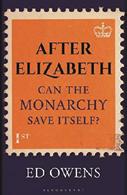
Owens, Ed | Bloomsbury Continuum (288 pp.) | $35.00 | Nov. 14, 2023 9781399406529
Why a new king represents a window of opportunity for the reinvigoration of the British monarchy. The monarchy is a bundle of paradoxes: reigning but not ruling, a hereditary role in a modern democracy, a representative of the people while living in castles and enjoying huge wealth. Elizabeth II was widely admired at home and abroad; her son and successor, Charles III, is still finding his footing, but seems to be open to new thinking. Owens, a historian and royal commentator who describes himself as a “critical friend” of the monarchy, hopes so. Elizabeth emphasized stability, but that meant ignorance of many emerging problems. Many young people see the monarchy as an outdated institution, and while it’s currently a minority sentiment, it will grow if meaningful reforms are not undertaken. Elizabeth defined her role as one of
self-sacrifice and duty, but scandals and family quarrels have undermined the royal image. With Britain enduring political polarization, increasing inequality, and ineffective governments, the monarch could, Owens suggests, do much to bind the country’s wounds. A crucial step would be to define the vague powers of the monarch with legislation that would also implement needed governance reforms. Slimming the extended family of royals to the core figures would also allow for a focus on nonpartisan issues such as environmental protection and climate change, matters where Charles already has indicated a strong interest. There are some useful models of reformist royals, such as in Denmark. Owens’ ideas are good food for thought, but they will be difficult to implement. Still, one might hope that Charles proves to be willing and able to start down a modernizing path. “Radical renewal,” writes the author, would create “a monarchy fit for the twenty-first century, one that plays a genuinely useful role in national life.”
With the clarity of expertise, Owens sets out an agenda to give the Crown an energetic role in the 21st century.
Perry, Philippa | Hachette Go (224 pp.) $29.00 | Oct. 17, 2023 | 9780306834868
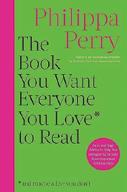
Perry, a British psychotherapist, advice columnist, and author of The Book You Wish Your Parents Had Read, draws on her experiences with patients and letter-writers to offer guidance about developing self-awareness to help navigate trials and difficulties. “What I hope this
Owens sets out an agenda to give the Crown an energetic role in the 21st century.
AFTER ELIZABETH
book will do,” she writes, “is help you understand your own early adaptations and belief systems, and be more aware of where they are serving you and where they may need updating.” Recognizing the myriad issues that individuals face, she organizes the book into four sections: how we love, how we argue, how we change, and how we find contentment, which she defines as “being satisfied with your life.” Each chapter includes letters from troubled men and women, which elicit her analyses of behaviors and views that undermine well-being. Overall, she emphasizes understanding and empathy, rather than blame and resentment. “If you look at others’ actions in a positive rather than a negative light,” she counsels, “you can get different meanings from them.” She encourages speaking “in ‘I’ statements, which define your own experience, and not ‘You’ statements, which are a judgment on the other person.” Throughout the book, she punctuates explanations with pithy nuggets she calls “Everyday wisdom.” One example: “If you have to choose between guilt and resentment, choose guilt. You will discover that your world does not fall apart.” Among the issues she discusses are disappointment in love and marriage; frustrations with jobs; isolation and loneliness; stress and anxiety; silencing one’s inner critic; and dealing with loss, grief, and aging. She examines three ways of coping with adversity—thinking, feeling, and doing—and she encourages readers to try to understand another’s perspective, rather than impose their own. In relationships, “to surrender to another person is a risk and an act of love. Surrendering means losing your ego, letting go of controlling behavior, and having faith that what will be, will be.”
A wise companion for life’s challenges.

Ravenelle, Alexandrea J. | Univ. of California (336 pp.) | $29.95 paper | Oct. 24, 2023 9780520387300
A vivid, disheartening portrait of unemployment during the pandemic.
Ravenelle, a professor of sociology and author of Hustle and Gig, begins by looking at two key categories: the “Officially Unemployed” and the “Forgotten Jobless.” This key distinction determined whether someone who found themselves out of work during the pandemic could apply for unemployment insurance or not. One chapter includes a brief history of unemployment insurance in America and the ways it has been weakened by “decades of neoliberal, antiwelfare ideology.” In addition to “causing more quarantining than polio, killing more Americans than HIV/AIDS, and resulting in more sudden unemployment than the Great Depression,” writes the author, the pandemic “divided people into essential and nonessential, demanding or on-demand, vaccinated or unvaccinated.” In an eye-opening text based on an in-depth study with more than 200 workers, Ravenelle examines exactly how people made it through 2020 and 2021 and, specifically, “what happens to the most precarious workers— the gig workers and laid-off restaurant staff, the early-career creatives, and the minimum-wage employees—when the economy collapses, and how they fare in the pursuit of an economic recovery.” Many ended up doing “side hustles” such as food delivery, dog walking, driving for a car service, or pickups for shopping apps. Ravenelle analyzes why those who didn’t apply for unemployment chose not to, for reasons ranging from not knowing they were eligible, to believing it was wrong to take money for not working.
The author sympathetically portrays people who “faced weeks and months of living on the edge,” clearly believing that America could do better by its unemployed. She closes by proposing a number of fixes to ensure how our outdated economic and employment systems could be made more efficient and effective for the overextended workers of today and tomorrow. A startling examination of the patchy response to pandemic-era unemployment.
Kirkus Star


Renner, Rebecca | Flatiron Books (288 pp.) $29.99 | Nov. 14, 2023 | 9781250842572
An examination of the underground world of alligator poaching in Florida. In her debut, National Geographic contributor Renner takes us into the Everglades in an attempt to challenge preconceptions about the area. Growing up in central Florida, “one of the most biodiverse places in the country,” she was only 7 when she saw her first wild alligator. However, to her friends outside the South, her fascination with these majestic creatures and the landscape in which they live seemed unusual. “Outsiders only see the death, the decay, the unruly rawness of this wild country,” writes the author, “without seeing the beauty in it, much to our harm and the detriment of this world.” Combining her skills for investigative reporting, nature writing, and personal anecdotes, Renner explores local folklore and legends, shares her personal experiences and observations, and details Operation Alligator Thief, which fights poaching. “I wanted to understand what it was like to be a poacher in the glades. I wanted to live the lives of rangers and wildlife officers, too,” writes Renner.
“I wanted to tell a story of people. No heroes, no villains, just the desperate choices that make us who we are.” The primary character is Jeff Babauta, a wildlife officer who assumed the identity of Curtis Blackledge and built Sunshine Alligator Farm in order to infiltrate the poaching community. Throughout, Renner chronicles the constant physical and mental strain that Babauta was under during his operation to save the alligators, as well as his biggest fear: “that nobody would care.” The author also relates the internal conflict that Babauta felt when he faced a man who was poaching in order to feed his family. Renner’s passion for her home state, compassion for those less fortunate, and gift of storytelling make this book difficult to put down.
Enlightening and full of suspense.

Rodriguez, Aida | HarperOne (272 pp.)
$28.99 | Oct. 17, 2023 | 9780063241282

A comedian and actor reckons with a lifetime of familial heartache.
Instead of packing the book with humor, Rodriguez largely details somber, even harrowing experiences. “I am grieving my losses, feeling my own pain, giving myself grace, and understanding why I operate the way I do,” she writes. The author focuses her nonlinear narrative around her long alienation from her absent father and her extremely difficult childhood.
“I didn’t know how bad it was,” she writes, “until we were so broke that we had to go out and beg for food.” She describes being molested by her mother’s boyfriend, before being sent to live with other relatives. “My mother was a young mom and she did a lot of things wrong,” writes the author. “She didn’t know better.” When Rodriguez became pregnant as a teenager, her mother beat her with a belt and pressured her to have an abortion. She chronicles how a divorce served as an impetus for her move to Los Angeles, and she candidly delineates a series of tribulations, including a tumultuous five-year relationship. A few years ago, the author met her father for the first time, and she “felt like a fool” when he asked for money. Refreshingly, Rodriguez opts for compassion, forgiveness, and gratitude. Only the final chapter chronicles getting her start as a comedian. “Stand-up comedy gave me the voice I never thought I had,” she writes. “After spending my life searching for validation, it became the place where I found it.” In 2013, she got her first real break, as a finalist on Last Comic Standing, after which she “became a full-time comic.” The author’s resilience is undeniable, but the narrative is often disjointed and repetitive, demonstrating that she is still finding her voice as a writer. A genuine memoir that suffers from a lack of organization.
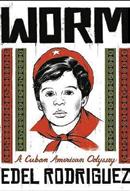
Rodriguez, Edel | Metropolitan/Henry Holt (304 pp.) | $29.99 | Nov. 7, 2023 9781250753977
A renowned graphic artist and painter writes of his early life in Cuba and later life in U.S. exile, finding parallels in both countries, “where men with guns made the decisions.”
Born in 1971, Rodriguez came of age in the Cuban countryside, where, owing to an entrepreneurially minded father, the family sometimes had a little more food than their neighbors. Both parents knew how to navigate the system: “Mamá would never mention Fidel Castro’s name. When referring to him, she would quietly rub her cheek to indicate Castro’s beard, so that no passing neighbors would hear her speaking of El Comandante.” It was their children’s being spirited off to school to be indoctrinated, among other things, that convinced the parents to abandon their homeland and join the Marielito boatlift of 1980. They arrived in the U.S. and rebuilt their lives, with Rodriguez working odd jobs until moving to New York to attend art school. Rodriguez emerged there as a critic of Donald Trump’s presidency so well known as to draw down denunciation from the man himself. To that, the author has a simple reply: “To an immigrant like me, America is a dream, a land of freedom and opportunity where one can work and express oneself without fear of violence or political persecution. For me, January 6, 2021, shattered the dream.” A few scenes, such as those depicting time spent in a holding camp before boarding their boat to freedom, might have been condensed in the interest of heightening the drama. Nonetheless, the well-rendered graphic story is plenty dramatic on its own, and
A sharply observed document of totalitarianism and its discontents. WORMFor more on Cuba, visit Kirkus online.
it’s significant not just for its portrayal of Castro’s Cuba but also for offering evidence that the Cuban American exile community is not politically monolithic.
A sharply observed document of totalitarianism and its discontents—this gifted artist in particular.
Ruffini, Patrick | Simon & Schuster (336 pp.) $30.00 | Nov. 7, 2023 | 9781982198626
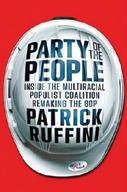
There are critical changes taking place in the structure of American politics, and this datadriven study explains how and why.
Is demographics destiny? Ruffini, a veteran Republican pollster and co-founder of the data firm Echelon Insights, argues that it is not, but it is an important factor. In this book, the author focuses on the political trends of the past two decades, as wealthy, well-educated voters have moved solidly toward the Democratic Party, while white, working-class voters have gravitated toward the Republican side. Ruffini does not hide his personal dislike of Donald Trump, although acknowledges that his team articulated a message that resonated with millions of voters. One of the most critical divides within the current political system involves education, and Ruffini assembles a mass of data to support his points. He also looks at the attitudes of far-left activists, whose sense of conviction sometimes manifests as disdain for those who don’t share their views. Their obsessiveness can drive away the moderate voters that are needed for any election victory. Ruffini acknowledges that the white working class is slowly shrinking, so the Republicans must look elsewhere for additional support. Republican planners are working hard to make further inroads with
moderate voters, but their key problem is Trump, who repels as many people as he attracts. The author suggests that a Republican candidate who does not generate “nonstop chaos” would be hard to beat. Ruffini’s argument that the current Republican Party is multiracial is highly debatable, and Democratic strategists will find plenty of points to attack. However, while the author doesn’t answer every question he asks, he offers some provocative food for thought, especially for conservative Americans who are dismayed by the toxic culture perpetuated by the MAGA-verse.
A book that avoids simplistic conclusions in its portrayal of the current political landscape.
Samatar, Sofia & Kate Zambreno | Columbia Univ. (160 pp.) | $20.00 paper | Nov. 21, 2023 9780231211215
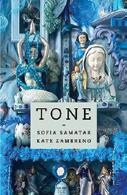
A focused study of literary tone. Samatar, author of The White Mosque, and Zambreno, author of The Light Room, offer a lyrical, erudite meditation on the enigmatic concept of tone in literature, drawing on responses from readers in the self-designated Committee to Investigate the Atmosphere. In the eclectic works they examine, tone can take on qualities of fog, dust, rot, snow, and light; color, temperature, or sound. The tone of Nella Larsen’s novel Quicksand, for example, seems to their students as “gray.” The authors assert that “tone, as in sound, stands for the oral, the presence of the speaking body. It indicates what is absent from writing.” It stands, as well, for “something like a collective mood.” In a translated novel such as W.G. Sebald’s The Rings of Saturn, tone becomes “something like a communication of voices.” Samatar and Zambreno consider a wide range of texts, including Heike Geissler’s Seasonal Associate, Hiroko Oyamada’s
The Factory, J.M. Coetzee’s Elizabeth Costello, and pieces by Kafka, Virginia Woolf, Borges, and Bolaño; criticism by Gilles Deleuze, Félix Guattari, Jacques Derrida, Donna Haraway, and many others. The committee members also provide glimpses of their own lives. They are teachers; one is a nursing mother; one is furnishing a home; one has a young daughter “currently in the stage of liking to draw animals but not feeling confident as to whether she can draw animals in a realistic way.” They are tired of being quarantined and of communicating on Zoom. At a conference, they were buoyed by meeting others interested in tone. When a graduate student remarked that “a professor once told them that Tone was a window,” they were greatly pleased at the aptness of the image. “If tone concerns ecology,” the authors write, “then it is about making a space for relation, and it seems clear now that for us, in the end, our studies in atmosphere have been about making a space where certain things can be said.”
A fresh perspective on an elusive element of literature.
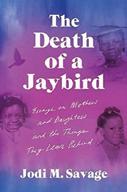
Savage, Jodi M. | Perennial/HarperCollins (256 pp.) | $18.99 paper | Nov. 14, 2023 9780063276086
A collection of essays exploring the experiences of Black women in America.
In addition to her compelling personal story, Savage, a writer and attorney, focuses on Black women who have faced the effects of abuse, addiction, and loss. Due to her mother’s drug problems and the other “demons” she battled throughout her life, the author was raised in Brooklyn by her grandmother. Granny, Savage called her, was very religious and even
considered herself a prophet. Over time, however, the author became bitter and jaded toward her grandmother’s faith. “Much of religion,” she writes, “is a tower constructed to protect male egos and privilege.” She continues, “I didn’t need the Bible to tell me about my place in the world. And I was tired of keeping quiet about the things that hurt me.” Savage also shares the fact that “Granny, my mother, and I were all sexually abused as children,” and she is adamant about her desire to stop the cycle of abuse. When Granny developed Alzheimer’s, Savage took on the responsibility of caring for her. She writes candidly about the pain of losing a loved one even before that person is gone and reveals that she hoarded her grandmother’s belongings as a means of preserving her memory. Following Granny’s death, Savage and her mother were diagnosed with breast cancer, and she ended up losing her mother as well. Other essays examine stereotypes and assumptions that she and other Black women in America face on a daily basis in their encounters with police, treatment by medical doctors, and other situations. Throughout, Savage writes as if speaking with a friend, relating her experiences, and that of others, with sincerity. Readers of all backgrounds are certain to appreciate her struggles and her ability to cope with the challenges she has faced.
Raw, honest, and heartbreaking.
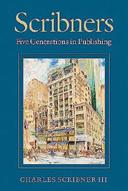
Scribner III, Charles | Lyons Press (224 pp.)
$27.95 | Nov. 7, 2023 | 9781493079971
Historical chronicle of a family enterprise in book publishing.
Describing himself as “a professional son,” Scribner, who joined his family’s firm in 1975, recounts the history of the esteemed publisher, which began in 1846 as a partnership between
25-year-old Princeton graduate Charles Scribner and merchant Isaac Baker, a friend of his father. Baker died in 1850, leaving Charles at the helm of a company he quickly renamed. A bestseller about Napoleon and loans from his wealthy father-in-law kept the firm going in its early days; the launch of a magazine, Scribner’s Monthly, in 1870, also helped. Charles’ 21-year-old son, John Blair, took over after his father’s death. In 1877, the firm became Charles Scribner’s Sons, to acknowledge the founder as well as John’s son Charles II, who also came on board. Nepotism, the author notes, was “a family business.” Through the years, the business expanded to include textbooks, children’s books, and reference books. Its illustrious author list included Robert Louis Stevenson, Henry James, Edith Wharton, J.M. Barrie, and George Santayana, among countless others who reaped awards and spurred sales. Its editors also were stars in their field—none more so than Maxwell Perkins, who was hired in 1914 and worked, notably, with F. Scott Fitzgerald and Thomas Wolfe. Fitzgerald and Hemingway, who had long relationships with the firm, are recalled with affection. In the 1920s, Scribner notes, the firm published “some memorable” nonfiction books. “The prize,” he writes, “surely goes to an Englishman of eloquent literary and oratorical powers that would eventually win a war: Winston Churchill.” Although the publisher was proud to maintain its identity as a family firm, it could not hold off mergers: first with Atheneum, and later with Macmillan, which was sold to Paramount, the parent company of Simon & Schuster, which was in turn
acquired by Viacom—making Scribners “a branch of the Hollywood entertainment industry.”
A charming memoir of a life in books.
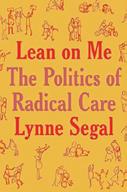
Segal, Lynne | Verso (256 pp.) | $29.95 Nov. 14, 2023 | 9781804292945
A British-based Australian feminist examines the social importance of building interdependence. Since the 1980s, dependence—and in particular, dependence on the welfare state—has been demonized. In her latest book, Segal, author of numerous books on feminism, sexuality, and politics, examines how the neoliberal exaltation of individual achievement that has since come to dominate global systems has also created ever-widening gaps between rich and poor. She begins by considering the situation of mothers, who have always been the main social caretakers and also the ones most likely to bear the brunt of contractions in the economy and welfare system. The author concludes that unless society does not move away from “obeisance to the traditional family” to create better forms of social support and care, gender inequality—which too often equates to economic disparity—will continue. The author believes that we can build back into the socioeconomic system a greater ethic of care by rethinking educational practices. Rather than helping
Necessary reading in an age of toxic hyper-individualism.
LEAN ON ME
build connections between people, education at all levels now focuses on hierarchies, managerialism, and “extensive commercialized competitiveness,” all of which reinforce neoliberal individualism. Campaigns to raise and maintain social awareness about the inevitability of either impairment or the frailties of age could also assist in better care. Segal sees these types of changes as necessary not just for the creation of a more humane society, but also because heightened consciousness of interdependence is required to restore the natural balance that the extractive nature of capitalism has destroyed. “When it comes to understanding the climate crisis,” she writes, “we are all connected”—what happens to global ecology affects all humans. Timely, well-researched, and carefully argued, this book will appeal to those interested in feminist scholarship as well as anyone seeking insights into the relationship between socioeconomic inequality and the current ecological emergency that threatens us all. Necessary reading in an age of toxic hyper-individualism.

Sitaraman, Ganesh | Columbia Global Reports (176 pp.) | $17.00 paper
Nov. 14, 2023 | 9798987053584

A study of how deregulation of the airlines led to less competition, reduced services, and lower profitability.
There was a time when flying was an enjoyable adventure. Then it became a routine. At some point, it became a minor torture of labyrinthine procedures, shrinking space, and lost luggage. How did this happen? Sitaraman, a law professor, director of the Vanderbilt Policy Accelerator for Political Economy and Regulation, and author of The Great Democracy, traces the problems to the Airline Deregulation
Act of 1978. In the decades prior to the 1970s, airlines were viewed as a public utility that should be regulated by the federal government, but the neoliberal wave changed that thinking. It worked for a while, but eventually there was a series of takeovers and consolidations, reducing competition. Now, the four big carriers—Delta, American, United, and Southwest—focus on the most profitable routes, and many smaller cities receive minimal services, if anything. Flight reliability is patchy, and customer dissatisfaction is at record levels. The business itself is prone to instability, with the major companies often recording perilous losses. Sitaraman’s solution is a return to government oversight, with regulation of prices and a licensing system to ensure that all cities receive service. “Regulation is often the only way to avoid capitalism’s abusive tendencies while harnessing its benefits,” he writes. The author is aware that regulation can generate problems, but he believes that a light touch from the regulators would work. He is not always convincing in his proposals, but his thesis that the current model is not working is valid. In any case, this short, pithy book makes many insightful points about the business of flying and the role of government in general. With careful research and clear thinking, Sitaraman outlines a plan to ensure that the airline business works for everyone.

Snow, Richard | Scribner (304 pp.) | $29.00 Nov. 21, 2023 | 9781982185442
A page-turning history of an infamous mutiny. On Dec. 14, 1842, the U.S.S. Somers sailed into New York Harbor minus three of her crew, hanged for attempted mutiny. The ringleader was the son of the secretary of war. Drawing on copious contemporary sources, Snow, author of Disney’s Land and I Invented the Modern Age, quickly sets the scene before diving into his characters. The man behind the mutiny plot was Acting Midshipman Philip Spencer, a pirate-obsessed, 18-year-old ne’er-dowell whose distinguished father gave up on educating him after a failed college career and consigned him to a naval career. “Surely,” writes Snow, “the confinement of shipboard life would offer [Spencer] little chance to run off into a career of depravity.” In fact, it took him less than a year to be disciplined off two ships before boarding the Somers for one last chance. The ship’s commander, Alexander Slidell Mackenzie, was a harsh disciplinarian with an “enthusiasm for the lash” whose writing displayed “a relish for violence that approache[d] the prurient.” The shipboard drama drew national media attention once the Somers returned to port, as did the ensuing legal
A page-turning history of an infamous mutiny.
SAILING THE GRAVEYARD SEAFor more books by Richard Snow, visit Kirkus online.
proceedings: first an inquiry, then a court-martial. Snow pieces together the events from trial transcripts (including the highly irregular kangaroo court that led to the hangings), contemporary accounts, and retrospective recollections. The result is consistently compelling, despite the author’s reliance on sources replete with what he characterizes as “nineteenth-century treacle.” Much of the book’s appeal derives from Snow’s tart commentary on those sources: “It is hard,” he writes, “to find a glint of humor anywhere…. Of the lighthearted touch he had little; of self-deprecation, none, ever.” The result of the court-martial was acquittal, but the affair became “a forbidden topic in naval circles,” resurfacing periodically for re-examination; readers of this iteration will find it an absorbing one. A hell of a yarn.
Stone, Sly with Ben Greenman | AUWA/ MCD (320 pp.) | $30.00 | Oct. 17, 2023 9780374606978
An autobiography by the recording artist who scored numerous hits with his band, Sly and the Family Stone.

Sylvester Stewart (b. 1943) was born in Texas but moved to California at an early age. In this memoir, written in collaboration with Greenman and Stone’s manager, Arlene
Hirschkowitz, Stone writes about his upbringing in a musical family, chronicling his experiences singing in church with his parents and siblings and teaching himself to play instruments. Bored in school, he began to focus entirely on music, writing songs and working as a session player with other musicians. Stone adopted his stage name while working as a DJ at a local radio station. “I went on the air and introduced myself as Sly Stone,” he writes. “I was cooking with a bunch of ingredients. It sounded right. I was already smoking marijuana. And there was a tension in the name. Sly was strategic, slick. Stone was solid.” Along the way, he met various musicians who would become members of his band, which began playing gigs in 1966. At this point, too much of the text becomes a list of venues with vague comments on events the author remembers from several decades earlier. Stone offers interesting commentary on individual songs the band recorded, and his recollections of various offstage incidents offer insights into the era—especially given the band’s racially mixed personnel. The author is candid about his full embrace of the rock-star lifestyle and time lost to jail or rehab. After the mid-1970s, when the hits were slower to appear and the original personnel began to fall away, the book becomes unfocused. Stone’s voice isn’t sufficiently compelling to compensate for the shift to largely non-musical material, too much of it finger-pointing at those he blames for his troubles. Questlove provides the foreword, and the book includes a discography. An inside look at an important band and its music, but it loses interest when the music is no longer central.
Sycamore, Mattilda Bernstein | Soft Skull Press (304 pp.) | $27.00 | Nov. 7, 2023
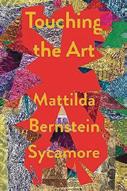
9781593767358
Examining an artist’s legacy. In this searching meditation on art, Sycamore, the author of three novels and three books of nonfiction, reflects on family, identity, race, and trauma. Central to her memoir is her grandmother, Gladys Goldstein, a painter who was a deep and lasting influence on Sycamore’s life. Gladys was a woman of contradictions and strong opinions, a feminist who nevertheless “didn’t think much of other women artists,” comparing herself to men, “since men were the only real artists.” Although her best friend was the gay artist Keith Martin, her feelings about queerness were contradictory as well. “When I was a kid,” writes the author, “Gladys encouraged everything that made me different—my sensitivity, creativity, softness, femininity, introspection. She was an abstract artist, and she wanted to set me free, that’s what it felt like.” However, that early encouragement later shifted dramatically. When Sycamore decided to quit college, Gladys was adamantly opposed, and once her writing “became noticeably queer, sexually and politically saturated,” Gladys “called it vulgar.” When Sycamore was a child, she recalls, “Gladys offered me the tools to imagine myself outside of normalcy. And yet, once I came into my own self, she wanted to put me back in that stifling space.” The author felt betrayed by Gladys and the rest of her family, who refused to believe that she had been sexually abused by her father. In her effort to understand Gladys, Sycamore looked closely at her creations, visited museums where her work is hung, and moved to Baltimore, where Gladys grew up when the city was “ghettoized,” with demarcations for Blacks and whites, Jews and gentiles. What did Gladys
Frank, intimate reflections on art, life, and their often complex intersections.
TOUCHING THE ART
think, Sycamore wonders, “about the legacy of Jewish complicity in structural racism”? Billie Holiday, Frank O’Hara, Elaine de Kooning, and Grace Hartigan, among others, figure in Sycamore’s wide-ranging explorations. “Everything was art,” she writes, “this is what I learned from Gladys.” Frank, intimate reflections on art, life, and their often complex intersections.

Szabłowski, Witold | Trans. by Antonia Lloyd-Jones | Penguin (384 pp.) | $20.00 paper | Nov. 7, 2023 | 9780143137184
Penetrating the secrets of the Kremlin through delightful chronicles of the long-suffering chefs who catered to Russian leaders.
In an original work of social history, Polish journalist Szabłowski, the author of How To Feed a Dictator and Dancing Bears, alternates narrative with interviews (and recipes) to delve into some recondite and often apocryphal stories of the people who cooked for the Russian elite, from Ivan Kharitonov, the chef executed with Tsar Nicholas II in 1918; to Polina Ivanovna, who cooked “the Soviet Union’s last supper.” What the author learned can be summed up in two sentences of Russian propaganda: “It doesn’t matter if a story is true. What matters is that people believe it.” Case in point: Vladimir Putin’s grandfather, Spirodin, cooked in various Russian sanitoriums, but claiming that he served Russian leaders from Rasputin to Stalin was great propaganda when Putin was campaigning for office. Over years, Szabłowski has tracked down many of his elusive subjects, and he tells a wide variety of entertaining stories about this colorful cast of characters,
including longtime Kremlin chef Viltor Belyaev, who relates detailed, chilling, and priceless stories about cooking for Brezhnev and Gorbachev; the devoted cook who created food in tubes for cosmonaut Yuri Gagarin’s mission to space in 1961; and the doomed kitchen staff assembled for the clean-up crew after the Chernobyl nuclear disaster. The author includes horrific eyewitness accounts of Ukrainians surviving the Holodomor famine of 1932-1933 (“Every seven minutes someone in Ukraine died of starvation”), as well as those who suffered during the two-year German siege of Leningrad. Szabłowski also relates the saga of the intrepid “Mama Nina,” who cooked for a Soviet airbase in Afghanistan, with little understanding of the nature of the war. The author closes with a poignant, timely look at the tenuous culinary culture of the Tatars, who were nearly eliminated from Crimea. A bitter history lesson taught with humor and grace.

Taylor, Benjamin | Viking (192 pp.) | $28.00 Nov. 14, 2023 | 9780593298824
A study of the intellectual and spiritual coordinates of a great American author. In 13 short chapters, Taylor, the author of Here We Are: My Friendship With Philip Roth and The Hue and Cry at Our House, provides a remarkably revealing account of the life and creative output of Willa Cather (1873-1947). The author
argues for Cather’s essentially religious sensibility in a skeptical age, focusing on her “antagonism to the times in which she lived” and affirmation of “the antique virtues: valor, loyalty, fulfillment of some high destiny.” Taylor pairs informed appraisals of his subject’s upbringing, the conditions of her ascent to literary stardom, and the intellectual milieu in which she lived with subtle, edifying analyses of major works, including The Song of the Lark and My Ántonia The author also elegantly summarizes Cather’s understanding of the nation’s enduring possibilities for self-invention. Taylor’s connection of Cather’s personal life and her literary inventions is consistently astute, and the exuberant force of her imagination emerges vividly. Also satisfying is the author’s examination of Cather’s descriptive genius, illustrated by a generous selection of quotations. Ultimately, we gain a clear sense of how Cather’s artistic sensibility took shape, including how her copious journalistic work generated for her “a lasting frame of reference.” Other peculiarities in her attitudes, from her distaste for modern technology to her oscillation between antisemitism and philosemitism, are placed in useful relation to her fiction. In a work as brief as this, readers may wish for extended analyses of key topics. For example, Taylor may have profitably elaborated on his insights regarding Cather’s complex sexual and gender identity and its relevance to her fictive worlds, her fascination with forms of self-violence, or her relationships with literary contemporaries. Nevertheless, the author presents a rewarding and perceptive portrait, providing a valuable assessment of Cather’s intriguing character and the enduring importance of her oeuvre.
Keen, insightful commentary on a literary master.
A bitter history lesson taught with humor and grace.
WHAT’S COOKING IN THE KREMLIN
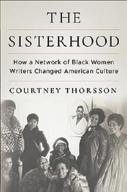
Thorsson, Courtney | Columbia Univ. (296 pp.) | $28.95 | Nov. 7, 2023 | 9780231204729

How a group of Black feminists created a model for advocacy.
Thorsson, an English professor and “white woman scholar of African American literature,” offers a richly detailed account of a group of about 30 Black women who called themselves The Sisterhood. From 1977 to 1979, they met regularly at least once per month, kept minutes, collected dues, and worked to secure “publication, publicity, and recognition for Black women writers.” Co-founded by novelist Alice Walker and poet June Jordan, both already well-known writers, the group arose from a general despondency, in the early 1970s, over the failure of civil rights activism, as well as a personal need for a place where Black women intellectuals and activists could find common ground. Members included poets, playwrights (Ntozake Shange), novelists (Toni Morrison), editors, scholars, academics, journalists (Margo Jefferson), and critics. In an appendix, the author offers concise biographies of each woman who attended, however briefly. The Sisterhood’s efforts, Thorsson asserts, led to a burgeoning of Black women’s writing in magazines such as Essenceand Ms., which the group especially targeted, and in trade publishing.
Moreover, they laid the foundation for Black feminist scholarship in colleges and universities. The group dissolved partly because of its success: With new opportunities—and pressures of day jobs, family, and creative work—some members found it hard to find time to meet each month. There was also dissent about the purpose of the group, with some younger members frustrated that the goals, and even the meaning of Black feminism, were not shared. Some members sensed a “pecking order” determined by age and career stage, which made others feel unwelcome. Even after The Sisterhood stopped meeting formally, Thorsson reveals, friendships among members provided moral and practical support, and its influence persisted by building “a cultural landscape of magazines, publishers, general readers, students, and teachers who were ready for their books.”
A well-documented contribution to Black literary history.
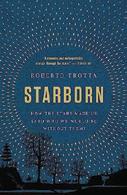
Trotta, Roberto | (352 pp.) | $30.00 Nov. 7, 2023 | 9781541674776
Looking for an original focus among the many books describing the universe, a theoretical physicist looks to the stars.
“Stars and planets spurred the invention of mathematics; the Moon, that of the calendar,” writes Trotta, author of The Edge of the
Sky. “And could it be that paying attention to the heavens was the secret weapon that gave Homo sapiens supremacy over the Neanderthals fifty thousand years ago?” For millennia, the movements of the constellations, the five “wandering stars” (Mercury, Venus, Mars, Jupiter, and Saturn), the Moon, the Sun, and occasional comets and meteors have held deep significance. They have governed clocks, calendars, seasons, planting, harvests, and holidays and have been the basis of myth and religion. While minor gods inhabited forests and caves, the big ones lived in the sky. All cultures have wondered at the stars. Trotta passes quickly over the big bang and follows no strict chronology, but he pauses regularly to recount events in a fictional culture on a planet where clouds permanently hide the sky. The result is a scattershot collection of chapters describing milestones in the study of stars, from the origin of calendars lost in prehistory to the mysteries of dark energy in this century. Astronomy buffs will find few pearls, but most readers will enjoy expert accounts of clocks throughout history; Newton’s spectacular work; the history of navigation (still entirely dependent on the stars); telescopes, from Galileo’s in 1611 to last year’s James Webb; the dazzling 19th-century discoveries of the enormous quantities and distances of stars; the dawn of computers; and the amazing appeal of astrology. In a grim conclusion, Trotta warns that the stars have long since disappeared from our light-poisoned cities and are imperiled everywhere, as we fill the air with pollution and Earth’s vicinity with space junk, spending billions on sending humans into orbit while billions suffer on Earth. A largely satisfying miscellany about stars.
A largely satisfying miscellany about stars.
STARBORN


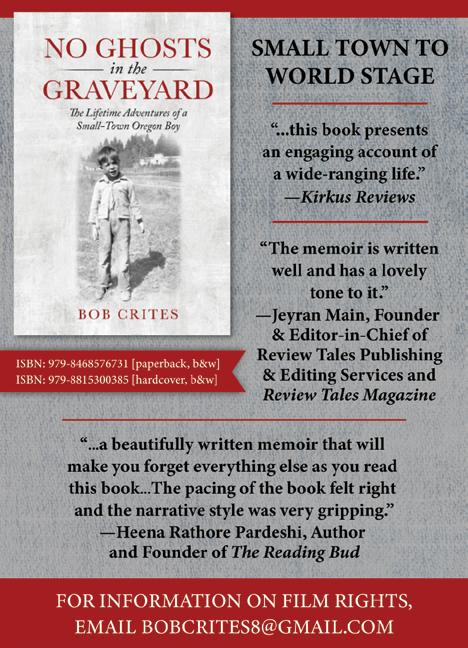
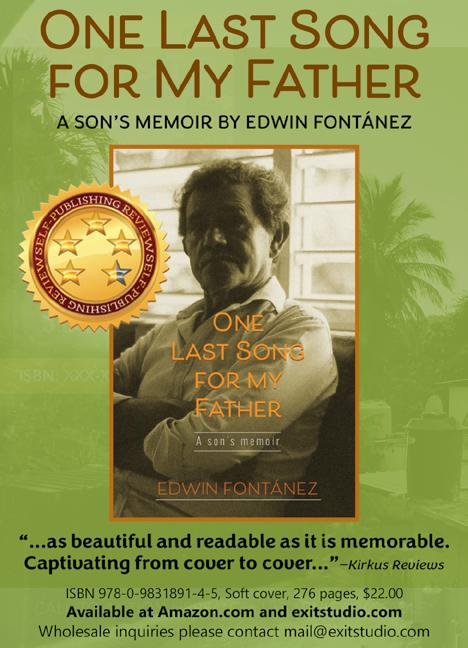



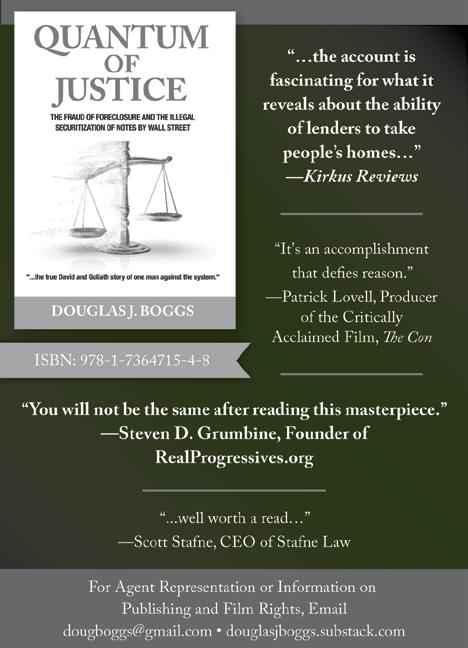
AT KIRKUS , we’ve written frequently about undoing the white default. Over the past few months, I’ve been thinking more and more about another default. Historically, kid lit has often positioned middle-class or wealthy families as the norm. These books didn’t necessarily mention class explicitly but made their protagonists’ socioeconomic status very clear. Think of the protagonist of Louise Fitzhugh’s Harriet the Spy (1964), whose family lived in a sprawling Upper East Side townhouse and employed both a nanny and a cook, or Judy Blume’s suburban-dwelling characters, whose many worries never included money woes.

But I’m happy to see more tales that offer counternarratives, including several recent picture books that center working-class and low er-income families. Although these books address realities such as not making rent or juggling multiple jobs, they’re nevertheless joyful, warm depictions—mirrors, to adopt the term introduced by Dr. Rudine Sims Bishop, that will speak volumes to children in similar situations.
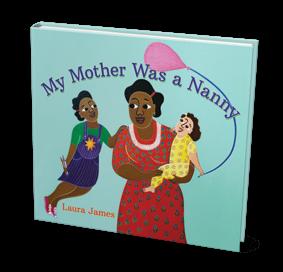
With Papá’s Magical WaterJug Clock (Minerva, June 6), illustrated by Eliza Kinkz, comedian and actor Jesús Trejo draws from his own childhood for the story of a boy who accompanies his gardener father to work. Tasked with keeping track of a supposedly magical water jug on this sizzling-hot day (when the jug is empty, it means their job is complete), young Jesús doles out water a bit too freely and soon runs out…but there are still 11 houses left. Papá reveals that the “magical” jug was his attempt at making their work more fun, which spurs Jesús to find other ways to enliven the day. Trejo and Kinkz strike a tricky balance, making it clear that this Latine family works hard while depicting their experiences through the eyes of a child who’s just thrilled to spend time with his dad.

Laura James’ My Mother Was a Nanny (Groundwood, Sept. 5) follows a girl of Caribbean descent whose mother’s many roles—nanny, supportive sister, office cleaner—never keep her from being an attentive parent. Though busy Mummy often shoos the protagonist away, her actions and words make the book’s message clear: “I always have time for
you.” Inspired by her own experiences growing up, James brings it all to life with beautifully textured acrylic illustrations. At one point the protagonist takes home discarded pencils and markers from a graphic designer’s office that Mummy cleans—a seemingly small but important moment in the life of a burgeoning young artist.
Jonathan Hillman’s The Wishing Machine (Simon & Schuster, Oct. 17) depicts a bittersweet trip to a laundromat. Sam and Mom, both light-skinned, love seeing their friends each Sunday, but it’s their last visit, since they can’t afford to stay in their own apartment and must move into Grandpa’s trailer. Making a fervent wish on the coins inserted into the washing machines, young Sam runs around asking the other customers about their own desires. Nadia Alam’s soothingly muted artwork depicts the laundromat as a cozy anchor in an uncertain world. The story is a pitch-perfect blend of the real and the fantastical; when Sam believes the wish has come true, Mom gently clarifies that it hasn’t but emphasizes that as long as the two of them are together, they’ll always be happy.
Dar is a young readers’ editor.
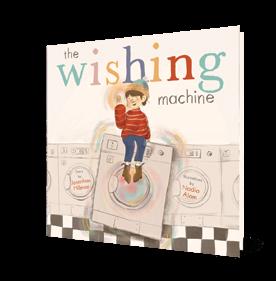
A gripping history of Japanese American fortitude in the face of racism and incarceration during World War II.
Hudson’s adaptation of Brown’s acclaimed 2021 adult original depicts the experiences of four young Japanese American men against a backdrop of wartime hysteria. While their families languished in internment camps, Rudy Tokiwa, Fred Shiosaki, and Katsugo Miho volunteered for the all–Japanese American 442nd Regimental Combat Team, which would became one of the most decorated units—though at the expense of a tragically high casualty rate—in American military history. Meanwhile, Gordon Hirabayashi fought a
different battle through his steadfast, peaceful resistance to Executive Order 9066, which authorized the incar ceration camps. He went on to become a prominent civil rights activist. The book highlights the Japanese Amer ican community’s diversity, particularly distinctions between mainlanders and those from Hawai‘i. Telling details highlight daily indignities endured in the internment camps. The bonds between the soldiers, as well as the horrors of the battlefield, are described with care and compassion. Brown excels at choosing powerful moments that bring the time period to life and at depicting individual people whom readers will grow to

Brown, Daniel James, adapt. by Liz Hudson
Viking | 254 pp. | $18.99 | Nov. 14, 2023
9780593465660
care deeply for. He asks us to remember that “their stories aren’t just history. Their stories shine a light on our own time,” for there is “still much work to be done.”
An unforgettable account of an appalling chapter in American history. (map, resources, photo credits, bibliography, endnotes, index) (Nonfiction. 10-14)
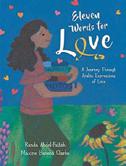 Abdel-Fattah, Randa | Illus. by Maxine Beneba Clarke | Candlewick (40 pp.) $18.99
Abdel-Fattah, Randa | Illus. by Maxine Beneba Clarke | Candlewick (40 pp.) $18.99
Nov.
7, 2023 | 9781536230215
A Palestinian family connects their past and present to 11 Arabic terms that express various types of love.
The family flees their homeland with a rainbow-colored suitcase full of photo albums. They settle in a new place, and as their child looks through the photographs, the little one relates them to different Arabic expressions. An image of the child greeting another youngster is paired with the word al-Wud (the “sunshine-warm friendship that grows and glows after two people meet”).
A wedding picture of the parents is accompanied by the term al-Ishq (a passionate love that unites two souls). A photo of an older relative is paired with al-Haneen, a sad love for those gone too soon, and an image of two people by the Dome of the Rock is accompanied by the term showq—a love that “yearns to touch homeland-heartland soil one last time.” Alongside the lyrical definitions of love, the textured, bright, collagelike illustrations beautifully chronicle the family’s journey. The photographs of cherished memories are deftly interwoven alongside scenes of the characters building a new life as they explore their new surroundings, meet new friends and neighbors, and connect with faraway relatives. Relying on cultural touches such as a
keffiyeh that one character wears, the story offers a glimpse into the lives of a Palestinian family uprooted from their home.
A tender tale of love and remembrance. (Picture book. 3-8)

Adjepong, Eric | Illus. by Lala Watkins Penguin Workshop (48 pp.) | $19.99 Oct. 3, 2023 | 9780593385944
A celebration of food and culture that reminds youngsters to look back as they move forward. (recipe for jollof rice) (Picture book. 4-8)
Kirkus StarAlmond, David | Illus. by Gill Smith Candlewick (32 pp.) | $18.99 | Nov. 7, 2023 9781536231250
To read our review of The Lines We Cross by Randa Abdel-Fattah, visit Kirkus online.
In this picture book from Top Chef finalist Adjepong, a Ghanaian American boy frets about a school potluck. The students have been asked to bring in dishes from their families’ cultures, but Kofi worries his classmates won’t enjoy the food he brings in. So he keeps quiet about the potluck until the last minute. Kofi’s parents don’t have time to help, so Kofi’s Nanabarima (grandfather) takes him to the market. There, Kofi hears shoppers speaking in Twi, and Nanabarima tells him that the various foods from their culture have stories all their own, like Carolina Gold rice, brought to America by enslaved Africans who secretly braided it into their hair. Though Kofi, born in the United States, has never been to Ghana, he feels immersed in his culture. He confides that he felt ashamed of being different, but Nanabarima emboldens him to take pride in his heritage. At home, Nanabarima shows Kofi a cookbook titled Sankofa, a reference to the Twi saying “Sankofa w’onkyir” (“we must look back into the past for traditions and stories that have been left behind”), and the two set about preparing for the potluck. Adjepong has crafted a delectable story that blends food history and Ghanaian culture. Watkins’ graphic-style illustrations are full of subtle details that complement the narrative, adding texture and warmth.
A loving father supports his son’s desire to soar among the stars.
Joe’s bedroom shows the signs of a budding astronomer/determined engineer: a toy rocket, a solar system mobile, a sketchbook of transport ideas. His buddies laugh at him: “In your dreams!” His dad, however, suggests they “have a think” when he finishes hanging the laundry on the clothesline. The mixed-media scenes of this close-knit pair exude cozy, comfortable warmth on a fall day. They are both pale-skinned and sport black hair. They work on flight plans and implementation together; risk-taking is not impeded by another adult in the home. Dad catches his son when he falls from a tree and propels the cardboard rocket ferrying Joe from a homemade seesaw into a leaf pile. Almond’s trim text—with enough repetition and simplicity to engage emerging readers—leaves space for Smith’s narrative contributions. As the duo keeps trying (a trampoline, taped-on wings, a cannon), the fun grows. When his father asks if Joe is ready to give up, it’s now the protagonist who says, “In your dreams.” And that is how they eventually achieve their goal. After painting a marvelous skyscape, father and son fall asleep and, in their dreams, they “danced among the stars.” The palette has shifted from warm compositions to cool midnight blues.
An uplifting story featuring a child with big dreams and playful, responsive parenting. (Picture book. 4-7)
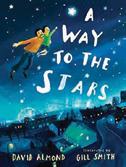
A WAY TO THE STARS
Amato, Mary | Holiday House (240 pp.)
$17.99 | Nov. 14, 2023 | 9780823449132
Series: Star Striker, 3
Interstellar soccer athlete Albert Kinney heads for a climactic match, with both his peace of mind and a win for a conquered planet on the line.
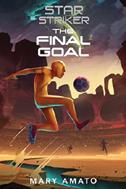
Past triumphs notwithstanding, the odds are still stacked against the team from occupied planet Zeeno and its seventh grade human Star Striker, who’s headed to the johka tournament finals. In one match, players can be dumped into a subterranean river filled with poisonous eels through holes that open at random on the pitch. Another is played in darkness against the cheating, murderous Tevs. Meanwhile, Albert’s unusually clever canine buddy, Tackle, is turning evil genius Mehklen into an ally as a prelude to freeing thousands of Zeenod prisoners to throw off their Tev oppressors. Fun as all this action is, though, the series has from the outset been less about heroic exploits and more focused on Albert’s efforts to overcome his “shawbles,” or character flaws, and cultivate positive energy. Not that there aren’t plenty of the former, but the program of mental exercises, thought experiments, and meditations provided by Albert’s Zeenod mentor, Ennjy, fills the spaces in between, adding a strong instructional bent to exchanges and events. Both the matches and girlfriend problems back on Earth give Albert opportunities galore to apply
his hard-won insights, but when right thinking leads to right actions, can right results be far behind? A well-rounded, satisfying trilogy closer sure to please fans. (Science fiction. 9-12)
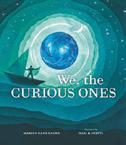 Bauer, Marion Dane | Illus. by Hari & Deepti Candlewick (40 pp.) | $18.99
Bauer, Marion Dane | Illus. by Hari & Deepti Candlewick (40 pp.) | $18.99
9781536218596
Stories and science have long had a push-pull relationship.
Long ago, Bauer notes, humans told creation myths of a flat Earth that was physically held up by various entities, and the people loved their stories dearly. But there have always been those for whom loving a story isn’t enough—these are the curious ones who go deeper, question, and come to new conclusions. And so, human knowledge—the story we tell ourselves to explain the nature of our world—evolved to conceive of Earth as a round planet at the center of the universe, then as a planet near the center circling the grandest star, and finally as just one of many planets in a seemingly infinite universe. The gorgeous, dreamy, watercolorlike artwork—paper dioramas backlit and photographed—provides a celestial vibe to the background, while more solid human figures are silhouetted in the foreground (occasionally, character details hint at nonspecific time periods and places). The small font size works as a metaphor for how small humans are in the universe, but it falls short of being kid-friendly.
The spare story text tends toward the abstract. Though the lengthy afterword is quite dense, its specificity is refreshingly concrete, as it offers a more accessible chronicle of human understanding on various cosmic topics. An aesthetically beautiful book with complex content that positions it more toward the classroom. (Picture book.
7-10)
Bayron, Kalynn | Bloomsbury (288 pp.)
$17.99 | Oct. 10, 2023 | 9781547611577
Series: The Vanquishers, 2
A group of middle schoolers is determined to help save their community from the return of vampires in this sequel to The Vanquishers (2022). Despite others’ belief that the threat of vampires is over, Boog’s parents and their friends, who are Vanquishers, remain vigilant. This proves tricky, since classmate Aaron was bitten and has turned into the creature they are supposed to fear. But the kids are still hanging out with him despite his new condition, and Aaron’s mother is working tirelessly to come up with a potion to cure him. School counselor and Vanquisher historian Mr. Rupert, who provides vampire history lessons, thoroughly disapproves, telling Boog that she will inevitably have to “end” Aaron. Meanwhile, Boog’s mom is concerned that the vampire who bit Aaron is still at large and likely part of a group. She and the other Vanquishers realize they must share their knowledge, even as they strive to keep their children safe. A string of mysterious disappearances and the unexpected arrival of Casey, who was once part of a group (with Boog’s parents) who trained future Vanquishers, fuels the young people’s desire to find out what the adults are hiding. A vampire attack that injures one of the dads raises the stakes. This action-packed second volume features
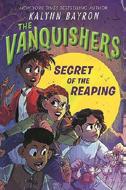
An uplifting story featuring a child with big dreams and playful, responsive parenting.| Nov. 7, 2023
lively writing and engaging protagonists. It builds on the exciting series opener while more deeply exploring the relationships among the largely Black and Latine cast members. A riveting follow-up that will delight readers. (Fantasy. 9-13)
Kirkus Star
Bigdelou, Ghazaleh | Clavis (32 pp.) | $18.95
Nov. 7, 2023 | 9781605379661
Who’s never thought about the moon?
A light-skinned, long-haired child and a green dragon pal wonder about the world. They seek answers to such imponderables as “How many songs can a bird sing?” and “How many different flowers are in the world”? Their equally inquisitive friends, an octopus and a cat, join them in their quest for answers. Their most crucial inquiry concerns the moon: “Would she ever come and stay with us?” The gang pore over books in search of answers, hold welcoming picnics for the moon, tell her stories, and play music—to no avail. Finally, they set out to find the moon. Success! Even better: She returns with them and drinks so much milk tea that she becomes fuller and rounder with each cup—until she’s too round to stay.
What to do? Child, dragon, octopus, and cat must return the moon to the sky and “welcome her back whenever she’d like…for more milk tea.” Kids will respond immediately to this sweet fantasy, told with an air of simple, breathless wonderment, and will gladly volunteer their own questions about the world and the moon. The delicate, airy illustrations, created with a limited, soft palette, appear on pages as if seen from a distance and suit the story beautifully. A recipe for milk tea for two is included.
Readers will delight in this enchanting book…and be eager to befriend the moon themselves. (Picture book. 3-6)
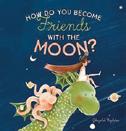
Bird, James | Feiwel & Friends (320 pp.) $17.99 | Aug. 8, 2023 | 9781250877628
An urban Native American boy’s gripping survival story. In this complex and emotionally resonant novel, Opin lives in a car, enduring unpredictable days as his family struggles. Opin’s mother guides Opin and his brother, Emjay, to live life as a game, even though their battle with being unhoused seems unwinnable. They move constantly to avoid “the cavalry”—or Child Protective Services—as they search for money, food, and a forever home. Opin’s mother insists that he “keep an active mind.” He hunts down science facts and learns all his school subjects from library books. His mother teaches him Ojibwe words from her grandmother’s handwritten notebook. She teaches him reciprocity, only taking what they need to survive, and street smarts. Opin and his new friend, a Black boy from the shelter they move to in Stockton, are attacked by racist teenagers. The storytelling is superlative, but some of the phrases and descriptions—for example, “metal pony” for shopping cart, “buffalo hunt” for stealing food—feel reminiscent of Native tropes, despite seeming to be intended to show Opin’s feelings of connection to his heritage. Some scenes would have benefited from more context: Opin’s mother, who performs her own version of Ojibwe dancing for money, rebuts a passerby’s criticism that she’s “exploiting our dying Native American culture.” Rather than critiquing the framing of Indigenous cultures as “dying,” she says that she’s “reviving our culture.” But do vibrant contemporary Indigenous ways of life need to be revived? Still, Bird seamlessly weaves in historical events, like the government’s distribution of smallpox-infested blankets to kill Native people, while telling a story of admirable resilience.

A thought-provoking story of one boy playing his own game of life. (song list, Ojibwe glossary, author’s note) (Fiction. 11-14)
Kirkus Star
Brown, Aly | Feiwel & Friends (176 pp.) $19.99 | Oct. 17, 2023 | 9781250816689
A tribute to the submersible Alvin, which has played an important role in undersea research for over a half century. In its thousands of dives, the durable vessel, launched in 1964, has been attacked by swordfish, flooded and recovered, and used to search for a lost hydrogen bomb. Alvin has also carried scientists to uniquely remote edges of continental plates for first encounters with hydrothermal vents, explored the ruins of the Titanic and the devastation of the Deepwater Horizon oil spill, and made possible the discovery of uncounted new species of deepsea life. After setting the stage with properly arresting references to “creepy creatures with glowing tentacles and cruel fangs,” Brown retraces Alvin’s storied career with frequent references to oral histories and interviews with many pilots and passengers. Notably, she covers some of the women who had to shoulder their way past sexist practices and attitudes. While briefly addressing the general challenges of spending long hours at deadly depths in cramped quarters (with the nearest bathroom miles away), she offers vivid impressions of the exhilarating rewards: the excitement of plunging into the deep’s unexplored reaches, where any moment could bring some fresh new biological or geophysical discovery. And if the photos are small and sparse, sidebars include simple hands-on experiments and “Alvin
Facts,” plus in-depth resource notes to compensate. “Pretty neat!” as the author puts it. Readers will agree. Neat indeed, and fascinating besides. (Nonfiction. 10-13)
Kirkus Star
The Wild Robot Protects
Brown, Peter | Little, Brown (288 pp.)
$17.99 | Sept. 26, 2023 | 9780316669412
Series: The Wild Robot, 3
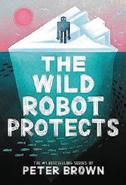
Robot Roz undertakes an unusual ocean journey to save her adopted island home in this third series entry.
When a poison tide flowing across the ocean threatens their island, Roz works with the resident creatures to ensure that they will have clean water, but the destruction of vegetation and crowding of habitats jeopardize everyone’s survival. Brown’s tale of environmental depredation and turmoil is by turns poignant, graceful, endearing, and inspiring, with his (mostly) gentle robot protagonist at its heart. Though Roz is different from the creatures she lives with or encounters—including her son, Brightbill the goose, and his new mate, Glimmerwing—she makes connections through her versatile communication abilities and her desire to understand and help others. When Roz accidentally discovers that the replacement body given to her by Dr. Molovo is waterproof, she sets out to seek help and discovers the human-engineered source of the toxic tide. Brown’s rich descriptions of undersea landscapes, entertaining
conversations between Roz and wild creatures, and concise yet powerful explanations of the effect of the poison tide on the ecology of the island are superb. Simple, spare illustrations offer just enough glimpses of Roz and her surroundings to spark the imagination. The climactic confrontation pits oceangoing mammals, seabirds, fish, and even zooplankton against hardware and technology in a nicely choreographed battle. But it is Roz’s heroism and peacemaking that save the day. Hugely entertaining, timely, and triumphant. (author’s note) (Fiction. 8-12)
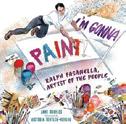
Broyles, Anne | Illus. by Victoria TentlerKrylov | Holiday House (48 pp.) | $18.99 Oct. 24, 2023 | 9780823450060
A self-taught painter championed the working class through his art.
Ralph Fasanella (1914-1997) was born in New York City, the son of poor Italian immigrants. His father was an ice-delivery man, and his mother, who worked in a dress factory, spoke passionately about workers’ rights and labor unions. Ralph frequently skipped school, teaching himself to read from newspapers. At age 10, owing to truancy and troublemaking, Ralph was sent to a Catholic reform school, where he remained sporadically for four years. Thereafter, he worked at various jobs and became deeply involved in the union movement. At age 31, his hands began hurting—possibly from
arthritis—and a friend suggested he try drawing to alleviate the pain. Ralph taught himself to draw and paint, visiting museums to study the work of master artists. He painted laborers, street scenes, and American historic events, using vivid, jewel-like colors and filling large canvases with small, rich details, encouraging viewers to savor them and catch every nuance. Eventually, Ralph’s paintings were exhibited in major U.S. museums. This well-written, sympathetic account rightfully shines a light on a major artist who merits wider recognition. The illustrations employ striking, vibrant colors and attention to minute details, masterfully emulating Fasanella’s own style. Readers will enjoy poring over them, in addition to the several included reproductions of Fasanella’s paintings.
A very fine introduction to the life and work of a significant American craftsman. (more about Ralph, timeline, seeing American history through Fasanella’s paintings, for further reading, bibliography, source notes) (Informational picture book. 6-10)

Buitrago, Jairo | Illus. by Rafael Yockteng Trans. by Elisa Amado | Groundwood (32 pp.) | $19.99 | Oct. 3, 2023 9781773064598
Three animals languish at a pet store.
Many animals have arrived and left, adopted by loving owners, but one dog has never been chosen. He watches the world pass from behind the shop window with the other animals waiting for a home, wondering why no one loves him. Each night, when Ana, who works in the shop, goes home, the dog curls up in his box. When the dog, a hedgehog, and a mouse are the only pets left, the store’s owner announces the shop will close. No one adopts the three remaining pets, so Ana takes them home, despite the financial burden of their care. Ana, her grandmother, and the animals
Rightfully shines a light on a major artist who merits wider recognition.
I’M GONNA PAINT
The poetry superstar writes a new picture book for children that speaks urgently to our times.
BY MATHANGI SUBRAMANIANAmanda Gorman first stole our hearts in 2021, when she recited her poem “The Hill We Climb” at President Biden’s inauguration. The piece is a lyrical celebration of humanity’s capacity for resilience, as well as an artful acknowledgment of our collective trauma. The words, in Gorman’s voice, invoked a sense of hopefulness that this pandemic-weary nation didn’t even know it needed.
Although she was already America’s first youth poet laureate, that January day Gorman became the youngest inaugural poet in American history. Arguably, she is also one of the most popular: From poetry to picture books, Gorman’s work consistently tops bestseller lists, lingering there for weeks at a time.
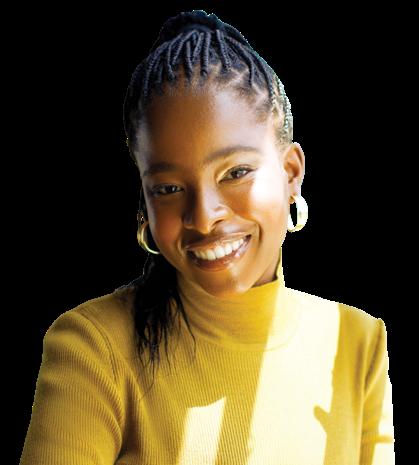

This fall, 25-year-old Gorman will release her new picture book, Something, Someday (Viking, Sept. 26), a beautifully written exhortation to children to follow their hearts and make the world a better place. Illustrated by Caldecott Medalist Christian Robinson, the book’s evocative text, vibrant pictures, and empowering message earned Gorman her latest Kirkus star.
The title reaches young readers at a critical time in Gorman’s creative career: Over the past few months, a Florida school has banned “The Hill We Climb”—after mistakenly attributing the piece to Oprah Winfrey—for allegedly including “hate messages.” Although the publishing timelines mean that Gorman must have written Something, Someday long before the Florida controversy erupted, the story’s insistence on prioritizing the needs of children over adults feels both necessary and prescient.
Kirkus recently asked Gorman to answer some of our questions over email; our exchange has been edited for length and clarity.
There were so many gorgeous lines in this book, many of which could’ve served as the title. How did you settle on Something, Someday? Did you have other titles in mind? Maybe it’s my poetic background, but I’ve always loved a refrain. As I wrote the book, the word something popped up a lot to represent a dream that is unnamed, and someday for the hope that it will happen at some point in time. In terms of other title ideas, I think it was “Fury & Faith,” which was the title of an adult poem I wrote years ago that eventually became the kids’ book.
Gorman was dismayed to learn that her poem had been banned in a Florida school.
I love that this book addresses the reader using a second-person point of view. Why did you choose this point of view?
I write most of my poetry in the first-person plural (we, us, etc.) because a lot of my work is a form of literary activism, and it’s important to remember that we can only successfully create a sea change by working together toward a common goal. It’s always my hope, in all of my writing, to unify the collective us toward meaningful progress.
With this book, it was fun to try out a different narrative voice. I also feel that the second-person point of view Danny Williams
mimics the very patterns that the book calls out— when children are spoken at as opposed to spoken with. You in a specific tone can sound patronizing and admonishing, but you spoken with encouragement and support can be part of the most powerful three-word sentence: I love you
The book begins with the lines, “You are told / That this is not a problem. / But you are sure / There’s something wrong.” Why did you begin the book this way?
When I was growing up, I always bristled at the idea that “you’re a kid, we’re adults, you’re small, we’re big, you’re wrong, we’re right” (a line that appears in the 1996 Matilda film, which is perhaps why I loved it so much!). I wanted to flip that dogma on its head in this book. So, as opposed
to just the world telling the child something, it’s the child telling their truth to the world: Namely, that there is light and love to be found everywhere. My hope was that by the end of the book, the young reader would see themselves as a truth teller of their something, someday.
The illustrations in this book are stunning—they almost feel like their own story. What was it like to work with award-winning illustrator Christian Robinson?
Christian is definitely an artistic genius, and I feel so grateful to have him as the visual voice of this book. When I was writing the text, he was the top illustrator at the forefront of my mind. In that way, even before he signed on, he influenced the language because I hoped to have an artist of his caliber, someone who
could bring the words to life, which inspired me to depart from my usual style—rhyming verse—to something a bit more conversational. I knew Christian would add that magic flawlessly.
In addition to poetry collections and picture books, you’ve written work ranging from Nike’s 2020 Black History Month campaign manifesto to personal essays for the New York Times. What inspires you to write across genres? What genre would you like to explore next?
I love poetry, but at my core I am a writer, which means I’m fascinated with all language crafts beyond the verse. I also have a sociology background, and so essays on the world really hit the spot for me! When I was in middle school, I dreamed of being a novelist, because I’d fallen in love with Toni Morrison. It would be a miracle if one day I could publish a long-form work like that, since the unit of length I’m typically working on is that of a poem.
What kind of reader do you hope will discover this book?
Gorman, Amanda Illus. by Christian Robinson Viking | 40 pp. | $18.99 Sept. 26, 2023 9780593203255
I hope any type of reader connects with this book— children, family, guardians, educators; the list goes on. I think the stories that bridge age, without demeaning the old or the young, are the most powerful. Maybe they’ll find the book at their local library, or on an independent bookseller’s bookshelf, or at their school. Maybe they’ll read it at a park, in class, or comfy and cozy from their couch. In any case, I wish for them to find a small bit of peace, home, and hope in the journey.
Mathangi Subramanian’s latest novel, A People’s History of Heaven, was a finalist for the Lambda Literary Award. Something, Someday received a starred review in the July 1, 2023, issue.

When I was in middle school, I dreamed of being a novelist.
watch the world from the apartment window, because “until things get better it’s good to be together.” The story tugs at heartstrings, evoking sympathy for the dog (unnamed until the last line), but Ana is underdeveloped and may come off to some readers as surprisingly ambivalent toward the pets when the moment comes to adopt them: Her decision is motivated by notions of duty or underdog solidarity rather than friendship or love, though both Ana and her grandmother are clearly affectionate with the animals. Yockteng’s digital illustrations are often moving and effective at enhancing the subtle themes of class present in the text. Ana has dark hair and medium-toned skin. A gratifying friendship tale rich in socioeconomic subtext. (Picture book. 3-8)
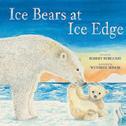
Burleigh, Robert | Illus. by Wendell Minor Abrams (40 pp.) | $18.99 | Oct. 17, 2023
9781419760709
Stranded on a broken-off ice floe, a polar bear plunges to the rescue when her cub slips off the edge into the sea. With cold almost tangibly radiating from expanses of ice and dim, hazy skies, even the frisky cub, rolling and tumbling in the feathery March snow, brings barely a hint of warmth to Minor’s frozen Arctic seascapes. Meanwhile his mother stands at the edge of the ice and searches the choppy waters for an unwary seal—until with a “CRACK!” both bears suddenly find themselves floating away from safety on a fragment of ice so small that the cub loses his footing. Before he can drown, his mother dives in after and, bearing him on her back, paddles back to shore, where the two nuzzle affectionately and then wearily pad off toward their unseen den. The disquisitions on climate change and on polar bear behavior, diet, and life cycles that Burleigh tacks on afterward are well meant but seem likewise laborious;
younger audiences are likely to respond more to the displays of elemental connection between parent and offspring that infuse the episode and its illustrations.
Tender, if a bit unwieldy from being so heavily back-loaded with background facts. (author’s and artist notes, resource lists) (Informational picture book. 5-8)
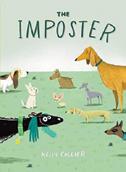
Collier, Kelly | Clarion/HarperCollins (40 pp.) | $19.99 | Nov. 14, 2023
9780358697060
A lonely skunk longs for a family. Skunk looks wistfully at the pooches in the dog park. They all have families who love them, and he wishes he had that kind of love. Head hanging, he bumps into a pole and suddenly sees a flyer for a missing dog. This is his chance! He can become that dog! The family will never suspect a thing. (Astute readers may already guess where this is heading.) Raccoon, Squirrel, and Cat decide to help Skunk with his transformation. A well-placed sock and glove become floppy ears, and Skunk’s white stripe is painted black. Now Skunk just needs to learn about burying bones, rolling over on command, and begging for belly rubs. The sly plot unfolds in a series of speech bubbles above the foursome’s heads. Alas, there’s one special (stinky) skunk attribute that just
might spoil this whole plan. Skunk’s eyes grow wide, and his bottom starts to wiggle. The anticipation grows over a few pages—sure to elicit giggles—until Skunk’s cover is blown. The four pals then set out to search for the real lost dog, creating a joyful reunion and cementing their friendship. Collier’s artwork blends cartoonish humor with moments of tenderness; this is a funny but sweetly told tale of found family. Explores belonging and identity with humor. (Picture book. 4-7)
The Wheel of the Year: An Illustrated Guide to Nature’s Rhythms
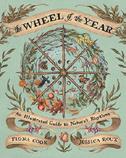
Cook, Fiona | Illus. by Jessica Roux Andrews McMeel Publishing (256 pp.) $19.99 | Nov. 28, 2023 | 9781524874803
A thorough, accessible, yearlong walk through the seasons.
Speaking to her readers in a wise whisper, Cook proclaims that there’s real magic in this world—it’s all around us, and kids have a special knack for seeing it. She sets out to help readers “find and recognize magic,” starting with Ostara, the spring equinox, and rolling through the wheel of the year to Imbolc, a cross-quarter fire festival halfway between the winter solstice and the spring equinox. The book carefully and meaningfully lays out the rhythms of the wheel, describing festivities like the Scandinavian Midsommar or Juhannus celebrations
This book is, in a word, immaculate. A graceful invitation that children will happily accept.
THE WHEEL OF THE YEAR
for summer solstice and Latin American Día de los Muertos remembrances. It provides suggestions for individual nature-based spiritual practices and activities, including crafts and scavenger hunts that involve multiple senses. The book includes recipes using herbs, berries, and fungi (along with safety information for the kitchen and foraging) and guidance for refreshing your altar to welcome the energy of the incoming season. It also references non-Western cultural practices and explains cultural appropriation, giving readers context about the sacred Native American practice of smudging, and it suggests gathering herbs other than sage to bundle and burn. Cook’s obvious wealth of knowledge and care in explaining both the light and dark of the world around us is complemented perfectly by Roux’s charming, delicate illustrations of natural objects, critters both cute and crawly, and racially diverse young people. This book is, in a word, immaculate.
A graceful invitation that children will happily accept. (glossary) (Nonfiction. 8-14)
Kirkus Star
Tiny Jumper: How Tiny Broadwick Created the Parachute Rip Cord
9781499813944
2023
A peek at the woman known as the “First Lady of Parachuting.”
“Georgia Ann Thompson weighed only three pounds at birth on April 8th, 1893.” These words are accompanied by a pleasing, colorful portrait of three reverent people surrounding a woman cradling a baby. The word tiny floats above in a word balloon. Readers learn that the nickname “stuck.” Dahl goes on to detail Tiny’s life of child labor from the age of 6, culminating with Tiny atop a tree at
sunset, envisioning herself “rising up” from a life of poverty. By 1907, she had convinced parachutist Charles Broadwick to teach her to parachute from hot air balloons as part of his traveling act. (Broadwick adopted her.) Her compromise: At age 15, she endured the embarrassment of being dressed as a baby doll and labeled the “Doll Girl.” After winning accolades as “the most daring parachutist,” Tiny became the first woman to parachute from an airplane and then the first person to deliberately free fall from a parachute. The latter was a dramatic, happy accident that both saved her life and inspired further development of rip cords and of Charles Broadwick’s pack parachute invention. Excellent choices of quotations from the brave aeronaut are nicely interspaced with thoughtful, understated text and complementary art.
A well-executed biography of an extraordinary woman. (author’s note, photographs, bibliography) (Picture-book biography. 6-10)
Danneberg, Julie | Illus. by Judy Love Charlesbridge (32 pp.) | $17.99
Oct. 17, 2023 | 9781623544249
Series: Jitters
In this newest installment in Danneberg’s series following Mrs. Hartwell’s elementary school class, other staff members must step in when Mrs. H is ill.
It’s a teacher’s worst nightmare— feeling awful, you call in sick, relying on your emergency sub plans to get your class through the day…but the substitute fails to show! Various staffers fill in for the beloved teacher, but none quite fill her shoes, as her students point out in messages sent over the Homeroom Hub. The gym teacher starts the day with loud music and exercise instead of having the kids do their morning jobs, and the math teacher fails to read a Junie B. Jones
book aloud with multiple character voices. Alternating or facing pages show that Mrs. Hartwell isn’t getting the kids’ messages. Instead, she’s taking care of herself and gradually starting to feel better, many of her activities matching the things going on in the class (they watch a penguin documentary; she watches dog and cat videos). When Mrs. Hartwell finally looks at her messages, she has 126, and she knows just what to do with her class the next day. Details in the watercolor, dye, and India ink illustrations will keep readers poring over them; the children’s facial expressions are an especial delight. Mrs. Hartwell has light skin; students and other staff are diverse.
A lighthearted look at an increasingly common scenario. (Picture book. 4-8)
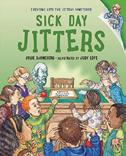
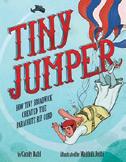
Diep, Hayley | Illus. by Naomi Giddings Triumph Books (32 pp.) | $18.95 Nov. 14, 2023 | 9781637274774
A look at the NBA’s first athlete of color. Even kindergartners know who Jackie Robinson was, but Wataru “Wat” Misaka’s achievements are far more undersung. Growing up in Utah, and so able to avoid the incarceration that so many of his fellow Japanese Americans suffered in World War II (if not racist jeers and feelings of guilt that he was spared), Misaka led his college basketball team to two national championships, with a period of postwar military service in between where he was stationed in Hiroshima. Drafted by the New York Knicks in 1947, he played in just three games before being cut for reasons that were never explained; he went on to obtain a degree in mechanical engineering and raise a family. Inserting indignant words like unfair and unthinkable over a contrastingly dispassionate narrative,

Diep tells his tale so sparely that she doesn’t even mention when he died (2019) but also leaves the distinct impression that much of his story remains untold. Giddings’ painted scenes of button-eyed figures standing in static poses or striding across spacious courts are likewise low-key, even in a final celebratory view of the whitehaired groundbreaker looking on as a racially diverse set of young ballers applaud. Readers will come away appreciating his achievements and, just maybe, wondering why they’ve never heard of him before.
Quiet in tone, electrifying in content. (author’s note) (Picture-book biography. 6-8)

Dominguez, Angela | Henry Holt (32 pp.)
$18.99 | Nov. 7, 2023 | 9781250874993
Series: Lolo & Birdie
“It’s time for bed, Lolo!”
With a sleeping cap on, Birdie is all tucked in, ready to sleep. Lolo the T. rex, however, has other plans. “No, gracias.” But why? Because Lolo is one busy dino—Lolo has plans to play, eat, and play some more. After having a quick reading session, playing, and chowing down on cookies, Lolo is still not quite ready for bed. The comical exchanges between Birdie and Lolo—dino speaking in Spanish, bird translating and responding in English—perfectly depict the challenges of getting a reluctant sleeper to bed. Progress, of course, comes in increments as the exasperated blue bird convinces the orange dino to at least do some teeth brushing in the bathroom. Time for bed now? Nope! Clad in pajamas, the dino jumps onto the bed to play some more while an exhausted Birdie dozes off. “Buenas noches, Birdie.” Full of bold lines and soft colors, Dominguez’s clean artwork proves an impeccable complement to these nighttime escapades. The author
leverages short, dynamic sentences and gentle repetition rooted in Lolo’s defiant declarations and Birdie’s wearied subsequent translations, to delightful effect. Scattered references to Lolo and Birdie’s previous outing add a layer of giddy familiarity for fans of the pair. Bedtime fun with a pair of unlikely friends. (Picture book. 3-5)
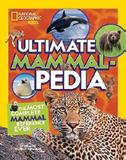
Drimmer, Stephanie Warren | National Geographic Kids (272 pp.) | $24.99
$34.90 PLB | July 25, 2023 | 9781426373213
9781426374494 PLB
Earth’s furry, milk-producing, hinge-jawed denizens, more familiarly known as mammals, get a deep dive in this extensive encyclopedia.
Elegant visions of a muscular tiger, a wide-eyed opossum, and narwhals socializing in a deep-blue ocean—the thoughtfully selected images presented here are high-definition visual treats. Accompanying the images, many of them full-page, is dense exposition that relates information about each of the animal species’ lives, detailing facts about habitat, social behaviors, diet, and interspecies interactions. Following a general introduction to mammals, the various types of animals are flexibly grouped into seven chapters: carnivores, ungulates, marsupials, rodents, oceangoing mammals (including polar bears), primates, and finally, “Mammal Oddities,” those that don’t easily fit into the other groups, such as monotremes, rabbits, and mammals that fly. Sprinkled throughout are features focused on evolutionary diversity (there are 70 species of antelope in Africa alone!), domesticated mammals, and longextinct mammalian ancestors. The sheer quantity of information may pose a challenge for less-advanced readers and curious skimmers seeking flashy facts. Some concepts could have been more fully illuminated through infographics, and some textual descriptions beg for
supplementation with images showing more active animal behavior to supplement the almost posed stillness of many of the photographs.
A glossy, gorgeous, textually rich tome for animal lovers to get lost in. (glossary, resources, index, photo credits) (Nonfiction. 8-12)
Eikenaar, Joke | Illus. by Connie Snoek Clavis (32 pp.) | $18.95 | Oct. 31, 2023 9781605379487
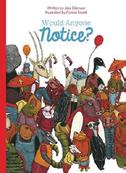
A timid king allows his friends to impersonate him until he musters the courage to show his face to the world.
The new monarch of Saint Adjak—a fictional land with boats and carriages and a heterogeneous animal populace—is small, and he worries the people will be unimpressed when they see him. Two of his friends offer to engage in public events in his place, wearing his crown and outerwear (illustrated as a cape but described as a coat, in a slightly confusing quirk of text or translation). But neither imposter functions as an ideal stand-in, and the king is convinced to show himself to his subjects, who instantly receive him with praise. This Dutch import taps into fairy-tale tropes—including benevolent royalty and light deception—to illustrate a tidy journey toward self-confidence. The story unfolds in short, rapid sentences, skipping lightly through the beats of self-doubt and acceptance. A palette of reds, browns, and ochers accented with sky blue provides an earthy lushness to the elegantly dressed citizens and their diffident ruler. Those who struggle with self-confidence may feel reassured by the clamor of appreciation the king receives upon facing his fears. More cynical readers may wonder why the most privileged member of a society lies to his citizenry and is greeted with cheers.
A reminder to be true to yourself (and everyone else). (Picture book. 3-6)
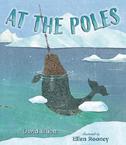 Elliott, David | Illus. by Ellen Rooney Candlewick (40 pp.) | $18.99 | Oct. 24, 2023
Elliott, David | Illus. by Ellen Rooney Candlewick (40 pp.) | $18.99 | Oct. 24, 2023
9781536205992
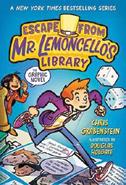
Poetic observations about the wildlife of the far north and south.
The confident metrics and wordplay that mark Elliott’s previous sets of wildlife-themed poems is on bright display here as he cheers on 15 creatures from the Antarctic krill and colossal squid to the Arctic narwhal (“A singular creature / with a singular feature”) and polar bear: “On the ice / or in the sea. / We would not / love the world / so much / without / your lonely / majesty.” Not just the bear but all the figures in Rooney’s accompanying digital and patterned-paper collage portraits pose majestically in icy natural settings, sometimes singly, sometimes in family groups or swirling schools. Except for the tardigrade, which gets a playful depiction as a sort of balloon creation, the animals are rendered with reasonably anatomical exactness. In comments at the end, the author expands on references in the verses— offering nature notes for each wild creature while marveling, for instance, that the function of the narwhal’s unique tusk remains unknown and clarifying a line about the orca being “a master of predation / from / the kingdom of the dead” by explaining that the name is derived from Orcus, a Roman god of the underworld. Respect and appreciation for the natural world shine brightly throughout this seamless mix of words and pictures. A pleaser for animal and nature lovers. (Picture book/poetry. 6-9)
Series: Mr. Lemoncello’s Library
A biblio-brangle delighting young readers and their librarians for a decade has been seamlessly recast into graphic format.
The overall storyline remains the same: A group of seventh graders get an exclusive preview of a new town library built by gazillionaire game designer Luigi Lemoncello, during which they solve ingenious conundrums based on bookish clues while getting at least a sampling of library services and organization and (except for slimy, manipulative Charles Chiltington, that is) learning to share knowledge and work together. Along with cranking up the original escapade’s already lively pacing and incorporating its many actual book covers, rebuses, and other visual clues in his bright, crisply drawn panels, Holgate endows the setting’s spacious stacks, rooms, architectural details, and high-tech features with dazzling appeal. Better yet, his gangly, expressive figures not only glow with individual character but bring the cast’s racial and cultural diversity to the fore. Best of all, though some of the book talk had to go to make the dialogue fit, references to essential reading— from Maya Angelou to Pseudonymous Bosch, Treasure Island to Walter the
Farting Dog—remain strewn throughout the games, solutions, dialogue, and backgrounds.
A sure pleaser for veteran fans of the series and likely to bring in a flush of new ones to boot. (Graphic mystery. 8-12)

Graff, Nancy Price | Illus. by Bagram Ibatoulline | Candlewick (40 pp.) | $18.99 Oct. 24, 2023 | 9781536219982
When a beloved pond experiences a catastrophic flood, it’s up to speedy Spencer Chamberlain to alert residents downstream of the coming danger.
Steeped in historical detail, Ibatoulline’s elegant, photorealistic watercolors paint rich portraits of all four seasons of pond and people in a 19th-century Vermont village. Children fish, cows graze, and, on July 4 each year, a footrace is a highlight of the festivities. “Big and strong” Chamberlain wins every year, but when the village is hit with epic rains one summer, he finds himself facing a new—and far more critical—race as he attempts to outpace the torrential waters of the flooded Long Pond to warn his neighbors. Thanks to him, all survive except for the pond itself, which drains but recovers as a thriving marsh. There’s a gentle wholesomeness here; this is the kind of story that will appeal to kids who long to try on bonnets and churn butter, yet it’s marred by verbosity and an odd pacing that feels laggy in a book about a quickly developing disaster. It’s not clear what story the author is attempting to tell—is this a Paul Bunyan–like folktale? If so, Chamberlain never feels fleshed out enough to qualify. If the pond is the focus, then failing to mention that the disaster is a result of human actions, as noted in the backmatter, seems like an oversight. All characters present white. Beautiful, but this pond is a little shallow. (Picture book. 5-12)
Poetic observations about the wildlife of the far north and south.
AT THE POLES
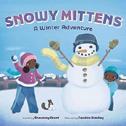 Grant, Shauntay | Illus. by Candice Bradley Abrams Appleseed (32 pp.) | $16.99
Grant, Shauntay | Illus. by Candice Bradley Abrams Appleseed (32 pp.) | $16.99
Sept. 19, 2023 | 9781419763090
Series: Let’s Play Outside!
A Black family enjoys a day in the snow.
One to four alliterative words on each spread frame the scenes in this action-based adventure for very young children. A parent helps a toddler close a coat against the cold, while nearby, a big sibling and another parent build a snowman. The children complete the snowman while birds and squirrels watch from a nearby tree. Next, the family brings out a sled, and three family members climb a “HUGE / HIGH / HILL” before sledding back down. Ice-skating and a snowball fight complete the day before the “haul / home,” where a warm fire glows and cocoa is savored while the “WILD / WIND” blows outside in the dark. An author’s note about squirrels and a final endpaper that shows the children near the same tree in spring cue readers to go back and observe the animals’ activities throughout. The text, printed in a large, bold font in capital letters, uses stand-alone words to label objects, activities, and feeling, perfect for encouraging language development in toddlers and helping preschoolers learn to read. Lovely in their simplicity, the illustrations show soft colors and careful compositions to create a visual narrative that children will enjoy following closely. Perfect for a snuggle at the end of a cold day, this beautiful
vision of Black joy and winter fun has classic appeal.
A cozy treat. (Picture book. 1-4)

Gross, Kelsey E. | Illus. by
Renata Liwska Paula Wiseman/Simon & Schuster (32 pp.)$18.99 | Oct. 10, 2023 | 9781665908139
Woodland creatures celebrate light and winter on the longest night of the year.
Owl calls to friends to help him “shine the light, / and share a gift of hope this night,” the winter solstice. Deer, Squirrel, Mouse, and others have gifts to share. Duck brings feathers as “hope / for warm, cozy beds,” while Raccoon places berries in the snow as “hope / for sweet surprises.” When a bear surprises the group as they celebrate around their decorated tree, they welcome their new friend. Though the final decorated tree evokes Christmas imagery, there’s no specific mention of the holiday. Simple text largely follows a pattern, explaining what “gift of hope” each animal brings. A final italicized sentence notes how each will help “spark,” “shine,” or “spread” the light. The illustrations have a soft, brushed quality that, despite the snowy setting, gives the book a comforting feel. The animals are fuzzy and feathery, almost touchable. One large, vertical image requires a tilt of the book to truly take in the decorated tree in all its splendor. Today’s
readers, accustomed to producing light with the flip of a switch, may not appreciate the story’s subtext about treasuring light through long, cold winter nights; nevertheless, the charming artwork will stir them. Warm visuals bring to life a snowy solstice. (Picture book. 3-5)

Hager, Jenna Bush & Barbara Pierce Bush Illus. by Ramona Kaulitzki | Little, Brown (40 pp.) | $19.99 | Nov. 7, 2023
9780316525022
In this picture book from the former first daughters, two sisters pledge always to remember what’s most important. This pair of “world conquerors” are tightly bonded “partners” surrounded by a close circle of friends. They observe other families getting larger, and they long for their family to expand, too. They yearn for a new addition; it doesn’t matter if that someone doesn’t look like them. That child will be treasured and loved unconditionally because “love comes first.” They’re overjoyed when a new brother and new cousin arrive. Of course, those kids are smaller, more mischievous, and move at a much slower pace, so, while the sisters have gotten what they hoped for, the reality isn’t quite the fantasy they imagined. Still, they recall that “love comes first.” And so it proceeds through the rest of this generic, pleasant book, which presents an uplifting, though unoriginal, message and illustrated exemplars about how to be with new family members: present, playful, patient, accepting—and, most of all, loving. The verse mostly scans well; its central mantra—about differences being OK, the importance of caring for family and being trustworthy, and love coming first—is set off several times throughout in an italicized
This beautiful vision of Black joy and winter fun has classic appeal.
SNOWY MITTENS
paragraph. The lively illustrations were created using hand-painted textures colored digitally. The wide-eyed sisters are white; background characters are racially diverse. An inspiring message for all; this will also be appreciated as a new-baby gift. (Picture book. 4-7)
Harrison, Lisi & Daniel Kraus | Union Square Kids (256 pp.) | $16.99 | Oct. 3, 2023
9781454944560
Series: Graveyard Girls, 2
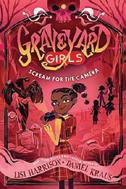
Horror-loving middle school friends tackle ghostly and real-world problems.
Frannie, Whisper, Sophie, Gemma, and Zuzu—members of scary-story club the Graveyard Girls—are trying to find out who dug up the body of local legend Silas Hoke. Whisper finds a clue in her dad’s therapist girlfriend’s confidential patient notes that leads the girls to a local mortuary. A more pressing problem, though, is the fact that Zuzu has been possessed by Ginny Baker, Silas Hoke’s murder victim. As the other girls try to figure out how to dispel the spirit, they have other problems to deal with. Frannie accidentally brings bad luck to her play and must concede her role to her nemesis and understudy. Gemma realizes that her efforts to save her family business, the Spirit Sanctuary, may be doing more harm than good. And the boy Sophie has
been texting convinces her to move further outside her comfort zone than she’s ready for, inspiring her scary story about a boy who turns out to be a monster. This story nicely balances supernatural and real-life plotlines and features plenty of imaginative creepy elements. With a plot that follows closely on the events of 2022’s 1-2-3-4, I Declare a Thumb War and a cliffhanger ending, this installment will be best appreciated by committed series readers. Most characters read white; Zuzu’s surname cues her as Japanese, and the cover art depicts Sophie as Black. Friendship is at the heart of this humorous, spooky tale. (Horror. 9-13)
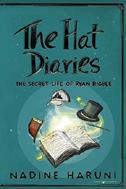
Haruni, Nadine | Speaking Volumes (280 pp.) | $16.95 | Sept. 12, 2023 9781645409854
Series: The Hat Diaries, 1
In this trilogy opener, 13-yearold Ryan Rigbee experiences dreams with inscrutable connections to reality.
As he records in glibly selfanalytical diary entries, the series of hats Ryan brings home from the haberdashery where his widowed mom works lead to nocturnal visions. He dreams of heroic performances as a firefighter, police officer, safari guide, surgeon, and more—each time rescuing or at least meeting Violet, his crush. He also encounters his parents, mostly
at actual moments from their lives that they’d never previously mentioned. The adventures are lifelike, and some leave him with tangible souvenirs, like the prayer beads his mother-to-be gives him at an ashram (in a chapter that’s inexplicably prefaced with a stock photo of a Muslim child). Each time, Ryan’s either bailed out at the crunch, or special knowledge to manage the crises magically comes to him. Meanwhile, he pines for a kennel dog who shows up in every dream, and Merlo, his mom’s hat factory co-worker who somehow knows about his nighttime adventures, becomes an instant father figure who suggests that the dreams are preparing him for real life. Notwithstanding Ryan’s broad hint that the dreams are “some sort of foreshadowing” and his assurances that he’s shed his “formerly insecure layer” for a “newly confident one,” readers will be hard put to make the connections between experience and growth and will remain unconvinced by the premise. The cast reads white.
An illogical tangle of apparently random incidents. (Fantasy. 10-13)
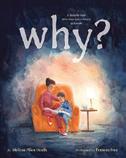
Heath, Melissa Allen | Illus. by Frances Ives | Magination/American Psychological Association (32 pp.) | $19.99 | Nov. 14, 2023 9781433841965
This groundbreaking picture book provides some possible answers to the question of why someone, especially a parent, might choose death over life.
Losing a loved one is never easy, but when that loved one dies by suicide, most youngsters will have many questions but be provided with few answers. Often, so much stigma and secrecy surround this type of loss that children are further traumatized when adults fail to discuss what
Balances supernatural and real-life plotlines and features plenty of imaginative creepy elements.
SCREAM FOR THE CAMERA
You and the Universe was co-written with the late physicist’s daughter, Lucy Hawking.

Stephen Hawking will return to bookstore shelves more than six years after his death.
Random House Children’s Books announced in a news release that it will publish You and the Universe, written by the

late physicist and his daughter, Lucy Hawking, and illustrated by Xin Li. The press says the book will “inspire kids to ask the big questions about Earth and the cosmos.”
Hawking, the longtime University of Cambridge professor, was already a star in the science world before becoming a household name with his massive bestseller, A Brief History of Time: From the Big Bang to Black Holes
He collaborated with his daughter on a series of children’s books that began in 2007 with George’s Secret Key to the Universe and concluded 10 years later with Vol. 5, George and the Blue Moon
You and the Universe is an adaptation of Stephen Hawking’s Earth Day message, which was broadcast posthumously in 2020. Random House says the book highlights “the power of coming together and creating a better tomorrow.”
In a statement, Lucy Hawking said, “The combination of my father’s words with Xin’s stunning visuals will captivate the very youngest scientists and spark their curiosity about the universe we inhabit by sharing the wonder and delight of the cosmos—and remind us all why life on Earth is so unique and precious.”
You and the Universe is slated for publication on March 26, 2024.— M.S.
 Random House Children’s Books
Random House Children’s Books

An engaging novel drawing strength from its rich narrative voice and celebrating Black historical lumi-
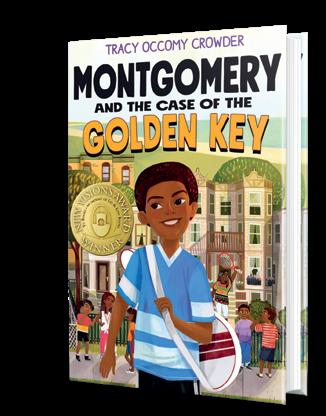
For more middle-grade mysteries, visit Kirkus online.
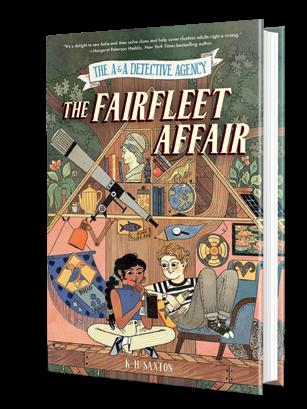

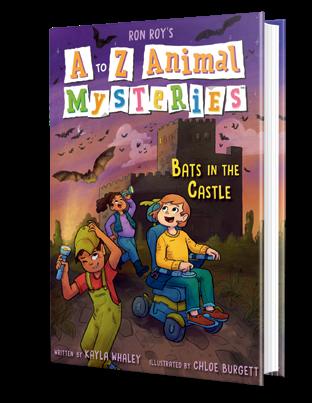
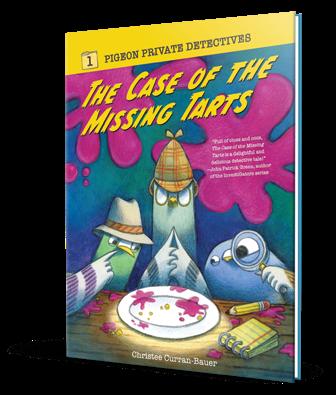
happened. Oliver is confused about why his father is no longer living. His mother tries to comfort him, reassuring Oliver that his father loved him and that neither of them are to blame for his death. Oliver’s mother explains that his father was “overwhelmed by a deep dark sadness” and chose to end his life “to get away from the sad, scary, and dark feelings,” language that effectively depicts depression and demystifies the mental health challenges that led to his death. The illustrations contain several luminous double-page spreads that convey the deep sense of loss experienced by those left behind as well as what it might feel like to be “stuck in deep dark sadness.” The contrast between those dark pages and the growing lightness surrounding Oliver and his mother as they process their loss is striking. Oliver is biracial; his father is pictured with light skin and curly brown hair and his mother with darker skin and hair.
A helpful how-to guide for difficult but necessary conversations. (reader’s note, for more information, reference)
(Picture book. 6-9)
Heidbreder, Robert | Illus. by Matt Schu
Atheneum (32 pp.) | $18.99 | Oct. 17, 2023
9781665917032
Everyone’s cat has talent, but ballet?
A bespectacled, light-skinned child and several other kids share their feline friends’ hidden talents.
“Christian says his cat climbs up the bedroom curtains.” Maria’s can slide down the banister. Misty’s knows how to work the kitchen faucet. “That’s all cool,” the young narrator says, “But my cat does ballet!” Grands jetés, glissades, tours en l’air—he does it all! The other children (except poor Hilary, who has only a dog to brag about) keep going on about their cats’ talents. Margot’s pilfers stuffed toys. Misha’s rides the vacuum. That’s all well and good, the narrator goes on, but…ballet! Don’t the other kids believe the narrator? Are
they jealous? The narrator invites the children (and their cats) over for ballet lessons. Everyone takes first position as the music begins. They let the cats go, and all the cats perform ballet— except the narrator’s…who takes a nap. Heidbreder’s simple text intersperses the names of various ballet moves, artfully demonstrated by the puss in question in rose-colored spotlights. Relying on a limited palette, Schu’s delightfully whimsical illustrations are cartoonish but realistic, a perfect match for the story. The members of the racially diverse child cast are all named after famous dancers who get paragraph-long biographies at the close, followed by a description of each ballet move.
A fine, feline-centric introduction to the dance. (Picture book. 4-8)
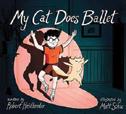
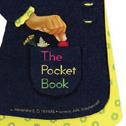
Hinrichs, Alexandra S.D. | Illus. by Julia Breckenreid | Cameron Kids (32 pp.) $17.99 | Sept. 5, 2023 | 9781951836856
Pockets are for holding hands, treasures, memories.
Mama buttons a child’s blue denim coat over a yellow dress, polka-dot tights, and green rain boots. The next spread shows the child’s outstretched hands holding the items from the coat’s pockets: “Here is a hike. / My hungry belly. / A hurt.” The artwork shows a partially eaten cracker, five jelly beans, a feather, several rocks, a pine cone, a lollipop’s stick, and a used BandAid. The words “Here is the ocean. / A wish. / Some sunshine” are paired
with an image of some seashells, a piece of string, a Popsicle stick, some rocks, and driftwood, while opposite, the child holds a conch to an ear. A tree fits in a pocket—as an acorn—and home does, too, in the form of a key. Six seeds are “a promise,” “a wonder,” “a worry,” and then “a wow!”—a big sunflower. “In my pocket / I’ll keep this moment / to show you. / Because that’s / what pockets / are for.” Breckenreid’s illustrations charmingly highlight the denim jacket’s texture, and it looks like various natural items were also incorporated into some of the illustrations. Mom has light skin and straight red hair; the child has tan skin and slightly darker red hair. Put a basket next to the washing machine for pocket treasures after reading this. (Picture book. 4-8)
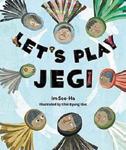
Im Seo-Ha | Illus. by Choi Byung-Dae Brown Books Kids (44 pp.) | $16.99 Oct. 3, 2023 | 9781612545813
A childhood game breaks barriers in this Korean import.
“
Tok. Tok. Tok.” Dongje, a Korean boy who lives in the village of Yonggol, immediately recognizes the sound. He runs toward the source to find a group of boys playing jegi, a childhood game similar to hacky sack, where participants must keep a jegi (a flat round base with tassels or feathers) airborne using only their feet. Dongje has never been able to kick the ball more than once, and the other boys, led by Han, refuse to let him join in.
Put a basket next to the washing machine for pocket treasures after reading this.
THE POCKET BOOK
Dejected, Dongje goes home, where his grandfather surprises him with a fancy feathered jegi he found discarded. When Grandpa’s ox defecates on the jegi, Dongje washes it off, but his smelly jegi results in even more ridicule when he meets up with the others. However, he finds it far easier to kick this lightweight new jegi and eventually upstages Han. Will Dongje take Han’s title—“the king of jegi”? Dongje decides to take the high road, finding a way for everyone to enjoy themselves. The text is told primarily through simple dialogue, while layers of colors textured with patterns and scribbles combine with exaggerated facial proportions, capturing the emotional arcs of the characters. Information about the origins of jegichagi and simple rules for playing the game follow.
High emotions and sportsmanship play out in this amusing venture. (Picture book. 5-8)


Isern, Susanna | Illus. by Amélie Graux
NubeOcho (40 pp.) | $17.99 | Oct. 10, 2023
9788419253699 | Series: Somos8
Realism and magic combine in this brisk story of sibling struggle.
Sophia works actual magic, filling the water pitcher with frogs and turning her mother’s plants blue. But when her little brother commits the serious crime of tearing pages out of her spellbook, she can’t be soothed by her mother, who (while repairing the book) sensibly reminds her that Hugo is just too young to be responsible. Instead, Sophia grabs her wand and turns him into a full-size donkey (wearing Hugo’s glasses). The donkey promptly does more damage to Sophia’s things than Hugo (wearing diapers, at least) ever has. Before she can undo the spell, the donkey bites her wand in half. When the fire department arrives to take the animal away, Sophia recalls every one
of Hugo’s good points, including his kisses and snuggles. And she’s able to use her taped-together wand to bring Hugo back! A few days later, Hugo’s first word turns out to be “abwacadabwa”—unexpectedly transforming their grandmother into an elephant (sporting Granny’s pink specs and beads). Graux’s cartoonishly distorted faces might distance the characters (Sophia appears to have mumps, as well as jug ears and bug eyes), but the pictures are lively, the glasses connections are clever, and the subdued but varied colors add realism. Sophia and her family are pictured with dark hair and medium-toned skin; Sophia has a diverse group of school friends. Sometimes we don’t know the value of what we have until we risk losing it. (Picture book. 5-8)
Iverson, Christine | Illus. by Luciano Lozano MIT Kids Press/Candlewick (40 pp.) | $18.99 Nov. 14, 2023 | 9781536224535
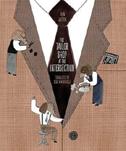
An introduction to Santiago Ramón y Cajal, an artist and medical researcher who made a crucial discovery about how our nervous systems work.
Iverson drafts a portrait of a visionary Spanish scientist who, compulsively drawing and painting from childhood on but compelled by his father to study medicine, was therefore well equipped to see patterns in networks of neurons and axons that others could not. He described and depicted them well enough to change scientific thinking on the way to earning a Nobel Prize in 1906. Lozano incorporates numerous examples of his subject’s actual artwork into scenes of a determined-looking lad in short pants finding ways to make art (with
pen, brush, and, later, a camera) in the face of opposition from both his father and his teachers. Later, as an adult, he translated images seen through a microscope into complex but lucid arrangements of cells and connections. Along with more information about nerve cells’ structures and functions, the author offers readers further details about the life and accomplishments of, as she dubs him, the “Father of Neuroscience,” in an afterword—including an amusing anecdote about how his co-Nobelist, Camillo Golgi, spent most of his acceptance speech at the ceremony arguing that his colleague’s theories were wrong. Some nerve!
Brightly illuminates a brilliant and multitalented yet unjustly obscure scientist. (bibliography, photographs) (Picture-book biography. 9-12)
Jaesun, Ahn | Trans. by Sora Kim-Russell Transit Books (48 pp.) | $18.95
Oct. 17, 2023 | 9781945492761
A legacy of craftsmanship is created in this Korean import. In this tale set in historical Korea, anthropomorphic dogs are portrayed wearing dopo robes. A selftaught tailor named Deokgu opens his shop at the “intersection downtown,” advertising custom-tailored Western-style suits. Thanks to the tailor’s attention to detail, his first customer goes away satisfied. “I’m so glad I became a tailor,” says Deokgu. The suit causes a stir and prompts more orders. Even after the ravages of war, the Tailor Shop at the Intersection is rebuilt and passed on to Deokgu’s son Samdol. The quality of his work secures the shop’s popularity even with new competition, and Samdol notes, “It was worth becoming a tailor.” When Samdol’s son Dushik takes over the shop, he faces a new challenge: mass-produced goods. The white
backdrop is now layered with skyscrapers textured with dark hues and dotted with cars and dogs rushing about. Though others encourage Dushik to adopt new technology, he refuses, instead relying on the same care and precision as his father and grandfather—a choice that ensures delighted customers and makes Dushik content, too: “I’m so happy I became a tailor.” This understated, evenly paced tale will leave readers with much food for thought. Muted artwork has touches of whimsy, such as the dogs in their often comically oversize suits, though the canine tailors’ passion comes through clearly, too.
A quiet yet compelling tale of art enduring. (Picture book. 5-8)

Jenkins, Martin | Illus. by Jane McGuinness
Candlewick (32 pp.) | $17.99 | Oct. 17, 2023
9781536228366 | Series: Find Out About
Why do some animals do such a good job of blending in with their surroundings?
Jenkins, who has introduced many animal topics to children, this time tackles animals who hide in plain sight, whether to avoid predators or to catch their own prey. While many of the highlighted animals (all named) and their camouflage tricks will not be a surprise to adults sharing the book with kids, this is a good first look at the concept and will have children seeing nature in new ways. Very simple sentences in a larger font share the basic idea of camouflage, while paragraphs in a smaller font provide more information, mostly about specific animals. Jenkins starts with animals that look like leaves, twigs, sticks, flowers, and tree stumps, then branches out to focus on three habitats—the desert, the ocean, and snowy regions— where animals may share clever ways of staying hidden. A final spread introduces animals that don’t try to
conceal themselves at all but flaunt their looks as a sign that they are poisonous or venomous. McGuinness’ artwork does the job of showing how several of these animals blend in to their environments, although, perhaps to suit her audience, many of them are cutesy or sport smiles. Aside from generic habitats, no geographic regions are mentioned.
A basic overview of a common phenomenon to share with the youngest children. (more about camouflage, index) (Informational picture book. 3-7)
Jennings, Landra | Clarion/HarperCollins (224 pp.) | $18.99 | Oct. 31, 2023 9780358674573
A young girl wishes for change. Eleven-year-old Mira feels like she must take responsibility for things around the house, like cooking and watching over stepsisters Sarah, 10, and Beans, 4. She wants to feel useful to Val, her late father’s wife, especially since they’ve had to do a lot of what Val calls “belt tightening.” But Mira, whose mom died when Mira was an infant, doesn’t feel like she belongs anywhere. Private school and gymnastics were other belt-tightening sacrifices, and she misses Shanice, her best friend from gymnastics. All Mira really has is an old pendant of her mother’s that she always wears. In her town of Between, Georgia, rumors are that the fenced-off Glass Pond leads to “someplace else” and that the strange, disoriented people sometimes found wandering nearby emerged from it. One day, Mira meets Lyndame, a mysterious teen girl with plum-colored hair who’s accompanied by a golden bird. Lyndame says her silver wand can grant wishes, and she offers Mira “three reasonably sized” ones, requesting her pendant in return. Multiple perennially popular fantasy tropes come into play in this novel, although there’s a long buildup before
the mystery is revealed in a rapid-fire manner that doesn’t feel worth the wait. Main characters read white. Has all the ingredients of a satisfying fantasy but is ultimately let down by uneven pacing. (Fantasy. 7-11)

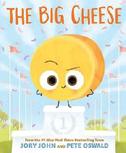
John, Jory | Illus. by Pete Oswald | Harper/ HarperCollins (40 pp.) | $19.99
Nov. 7, 2023 | 9780063329508
Series: The Food Group
A winning wheel of cheddar with braggadocio to match narrates a tale of comeuppance and redemption.
From humble beginnings among kitchen curds living “quiet lives of pasteurization,” the Big Cheese longs to be the best and builds success and renown based on proven skills and dependable results: “I stuck to the things I was good at.” When newcomer Wedge moves to the village of Curds-on-Whey, the Cheese’s star status wobbles and falls. Turns out that quiet, modest Wedge is also multitalented. At the annual Cheese-cathlon, Wedge bests six-time winner Cheese in every event, from the footrace and chess to hat making and bread buttering. A disappointed Cheese throws a full-blown tantrum before arriving at a moment of truth: Self-calming, conscious breathing permits deep relief that losing—even badly—does not result in disaster. A debrief with Wedge “that wasn’t all about me” leads to further realizations: Losing builds empathy for others; obsession with winning obscures “the joy of participating.” The chastened cheddar learns to reserve bragging for lifting up friends, because anyone can be the Big Cheese. More didactic and less pun-rich than previous entries in the Food Group series, this outing nevertheless couples a cheerful refrain with pithy life lessons that hit home. Oswald’s detailed, comical illustrations continue to provide laughs, including a spot with Cheese onstage doing a “CHED” talk.
From curds to riches, from meltdown to uplift—this multicourse romp delivers. (Picture book. 4-8)
Josephson, Kalyn | Delacorte (256 pp.)
$16.99 | Oct. 17, 2023 | 9780593483626
Series: Ravenfall, 2
Young teens Colin and Anna travel to the Otherworld to thwart an attack on the Tree of Life.
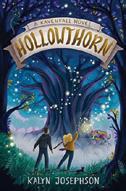
In this sequel to Ravenfall (2022) that’s set during the eight nights of Hanukkah, Josephson dives into the arcana of Jewish mythology. Shortly after Anna’s father returns from an expedition with what he says is the Seal of Solomon, an old acquaintance of his named Salem, who is a Raven, or “guardian of the supernatural world responsible for helping to maintain its balance,” arrives at the inn as if by chance. According to Salem, the demon Ashmedai intends to absorb the magic from the Tree of Life, gathering all its power. The interweaving of (largely Western) folk and mystical traditions with encounters in the magical realm of Sheol is nicely realized. Magical practices—Colin’s use of his Ravenguard journal to hold weapons, and Anna’s ability to “read” artifacts and living beings— are described with authority. Anna struggles to understand her father, while Colin struggles with his desires to master his Raven warrior magic and avoid using the power that he inherited from Fin, the wicked King of the Dead. He sees Salem as a mentor, but
Anna has her doubts. Chapters in Anna’s and Colin’s first-person voices alternate, along with several from the perspective of the Ravenfall Inn itself. The amalgam of mythical creatures and traditional beliefs provides context for a fantasy that feels original and is both captivating and convincing. Most characters read white. A strong, enchanting adventure. (Fantasy. 9-13)
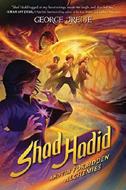
Jreije, George | Harper/HarperCollins (352 pp.) | $19.99 | Oct. 17, 2023 9780063094864
Shad Hadid faced the necromancers, and now he plans to save his mother in this second series outing.
Until recently, 12-year-old Shad knew nothing about alchemy. But since he and his friends saved the Alexandria Academy from the necromancers’ attempted takeover, he’s learned a lot. With the necromancers gone from Alexandria Town (though still powerful elsewhere), Shad can finally focus on saving his mother from the Forgetting Charm placed upon her by his necromancer stepfather. Over spring break, Shad plans to travel to Lebanon to find his mother—that is, until he and his friends discover a new plot hatched by the necromancers. Now, his trip has a frustratingly different purpose, but stopping the necromancers from wreaking global chaos is clearly more important than his
personal problems. Once in Lebanon, Shad and Sarah Decker, his bullyturned-friend, encounter the larger world of alchemy, witnessing types of alchemy unknown to them and wrestling with questions of whom to trust and how to use their powers for good. Shad approaches all the vagaries life throws his way with his unsanctioned Baker Alchemist skills and a dash of good humor. Full of friendship and loyalty, a good number of twists and turns, and a smattering of bathroom jokes, this sequel to Shad Hadid and the Alchemists of Alexandria (2022) continues in much the same vein. Shad is Lebanese American; his friends are from a variety of national and cultural backgrounds. More magical fun and trickery. (Fantasy. 8-12)

Kennedy, Katie | Illus. by Monique Steele Workman (248 pp.) | $24.99 | Oct. 17, 2023
9781523515868
Short biographies of the 45 people who have been president of the United States, including snippets of primary source material.
Kennedy, a college-level history and government educator and author of The Constitution Decoded (2020), offers quick looks at each of the men who have served in the nation’s highest office. Each chapter opens with a portrait and fast facts, both ordinary and unusual. Each goes on to cover the man’s life before his presidency, his actions as president, his legacy, and his post-presidential life, if any. The prose is smooth, engaging, informative, and often sympathetic. What gets decoded are the short selections from primary sources: George Washington’s farewell address, a prescient comment from Thomas Jefferson about the “Missouri question,” a statement by Grover
From curds to riches, from meltdown to uplift—this multicourse romp delivers.
THE BIG CHEESE
Cleveland regarding the overthrow of Hawaiian queen Lili‘uokalani, and so forth. Text boxes appear on almost every page, making interesting and often important points. The narrative is also broken up with occasional maps, drawings, and photos, adding to the accessibility. The author pays careful attention to past presidents’ attitudes and actions about slavery.
Donald Trump’s section concludes with an open-ended observation that “Trump’s post-presidential period was one of turmoil, just like his presidency.” This might serve as a pleasant accompaniment to a more sober middle school history text. The volume is also visually engaging, with portraits opening each profile, spot art breaking up the text, and helpful maps. Surprising, straightforward, and readable. (additional illustration credits, further reading) (Nonfiction. 9-14)

Kerrigan, Nancy & Ryan G. Van Cleave Illus. by Arief Putra | Bushel & Peck Books (32 pp.) | $18.99 | Oct. 10, 2023
9781638192077
Olympic-winning figure skater
Kerrigan looks back on her childhood.
Going for unvarnished role modeling, Kerrigan leaves her later experiences— including her 1994 attack at the hands of assailants hired by rival skater
Tonya Harding’s ex-husband—for readers to find elsewhere. Instead, she focuses on her early love of skating (“Blasting across the slick rink was exhilarating!”), the ease with which she left fellow student skaters behind, and obstacles she had to surmount on the way to shining in competition, from squeezing into skates that she had outgrown to working at landing a clean axel. The story glosses over these challenges, however—she is depicted mastering most skating moves with seemingly no effort, and though she couldn’t afford skates that fit, the
story doesn’t elaborate on the financial sacrifices her family made to fund her skating career. As a result, the stakes seem low, and, as she waits under the lights at last for the music to start at a competition, the climactic drama feels manufactured. Putra expertly portrays her subject’s famously infectious grin and captures the distinctive looks of a salchow, lutz, and toe loop, but there isn’t much in the artwork, the third-person narrative, or the personal note at the end to support Kerrigan’s message that “you’re stronger than you think, too.”
A bland pep talk. (Picture-book autobiography. 6-8)

Krantz, Laura | Illus. by Rafael Nobre Abrams | (176 pp.) | $19.99 | Oct. 3, 2023 9781419758201 | Series: Wild Thing
A journalist weighs the evidence for life beyond Earth. Definite proof of extraterrestrials remains frustratingly absent, but there are many reasons to think there must be life out there, somewhere. In this clearly written work, Krantz carefully considers several of them. Beginning with ‘Oumuamua, the mysterious interstellar visitor that zoomed through our solar system in 2017, she goes on to tally some of the many sightings of UFOs (or UAPs, “unidentified aerial phenomena,” as they are now officially dubbed), summarize recent thinking about the origins of life on Earth, and describe the space telescopes and other “cool tools” scientists are using to look for life elsewhere. She also interviews leading scientists and visits the roadside attraction “UFO Watchtower” in Colorado in the quixotic hope of a personal sighting. Krantz gives readers a chance to clarify their own beliefs by weighing
the Drake Equation, which calculates the mathematical probability of extraterrestrial life, against both Stephen Hawking’s warnings about the potential downside of meeting aliens more technologically advanced than we are and Enrico Fermi’s very good question, “Where is everybody?” Lots of backmatter, including extensive source notes, follow up a closing overview of promising sites in our own stellar neighborhood. Nobre’s orange and purple screen prints of retro flying saucers and big-headed alien silhouettes are too fanciful to suit the author’s judicious tone but do add splashes of color.
A readable, even-handed overview. (glossary, bibliography, index) (Nonfiction. 10-13)
and the Pen
Lawrence, David | Illus. by Cherie Dignam EK Books (272 pp.) | $12.99 paper Nov. 14, 2023 | 9781922539403 Series: The Pen Series, 2
Following a track laid down in the series opener, Ruby and the Pen (2023), an Australian boy discovers that a magic wish-granting pen is more curse than blessing.
Xander is bullied by the self-styled Bruise Brothers, Tony and Jeff Clagg— who are cast as comically stupid young thugs with an equally thuggish dad— and even his sneering math teacher. So, he’s delighted to discover that the golden pen he finds floating in his toilet draws pictures that come true. In practically no time, athletic younger sister Phoebe is out of the wheelchair she’s used since her accident and running again, his father catches a special fish and wins a large monetary prize, and Xander himself improbably garners a spot representing his school in a national math contest in Canberra. But each seeming triumph quickly turns sour: Soon his once funny and loving parents are squabbling, and
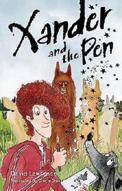
he’s alienated his friends. Worse yet, under the pen’s influence, his formerly bubbly disposition takes an ominous turn to the bitter and spiteful. Luckily, Xander has a moral compass in Phoebe. Readers will cheer Xander on as he resolutely sets out to right matters and, for finishing touches, see the nefarious pen and all three Clagg louts justly dealt with. Occasional black-and-white illustrations enhance the text. Main characters appear white; some secondary characters are cued as ethnically diverse.
A light tone, deep issues, and good and bad choices to ponder. (Fantasy. 9-12)
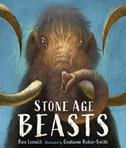
Lerwill, Ben | Illus. by Grahame Baker-Smith Candlewick (48 pp.) | $19.99 | Nov. 7, 2023 9781536231342
Meet a set of hypercarnivores and humongous herbivores.
Even the (presumably) peaceable plant eaters look distinctly bad-tempered here: Baker-Smith goes for the gusto with spread-filling portraits of glowering creatures looming majestically like the Irish elk and “juggernaut” Siberian unicorn or flashing fearsome choppers like the “fast, furry, and frighteningly fierce” giant short-faced bear and the terrifying Wonambi. Except for the Steller’s sea cow, which was last seen in 1768, all have been extinct for multiple thousands of years. Why? Lerwill’s accompanying commentary, more appreciative than informative, cranks up the drama—“Can you imagine how it would have felt to come face-to-face with a hungry pack [of dire wolves] in the moonlight, their lips snarling and drooling?”—but discusses interpretations of fossil evidence in broad generalities. And when it comes to explaining why each monster went extinct, he just offers monotonous variations on “nobody knows for sure.” Maybe early human hunters wiped them out, or maybe it was due
to changing climates or habitat loss. Still, entries on each creature include a range map and a fact box featuring a stylized human silhouette for scale; better yet, each radiates a ferocious, feral presence that will rivet young viewers.
Make way for some memorable megafauna. (glossary) (Informational picture book. 9-11)
Levine, Sara | Illus. by Mehrdokht Amini Carolrhoda (32 pp.) | $18.99 | Oct. 3, 2023 9781728450926
When words DO hurt.
People shout at a young girl: things like, “You are too sensitive” and “You feel way too much.” They tell her to “grow a thicker skin.” But it’s not something that the girl can control, and no one bothers to explain how to toughen up. More words come, and they all slip right through her thin skin. She tries to ignore them, but the words crowd her insides and push against her heart. Yelling at the words doesn’t work, either, so the girl takes some time alone to think, eventually realizing she needs to create something new. She writes all the troubling words down, then transforms them into an affirmation—the big feelings are real, and that’s OK, since they are her “superpower.” This story highlights the importance of taking control of a narrative as well as the healing power of artistic pursuits. Neither the narrative text nor the author’s note specifies how or why the protagonist, the author, or potentially readers
display their sensitivity, but that seems intentional, as the openness allows for multiple types of people to find themselves represented in the narrative. In Amini’s effective mixed-media illustrations, the troubling words literally take over the girl’s form and also create a subtle puzzle of rearrangement. The main character appears East Asian in the illustrations.
A healing, positive assertion. (author’s note, tips) (Picture book. 3-8)
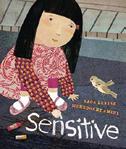

Liu, Shan Woo & Kaili Liu Gormley Illus. by Lisa Wee | MIT Kids Press/ Candlewick (32 pp.) | $18.99 | Oct. 10, 2023 9781536228984
An undersung public-health hero gets his due.
The mother and daughter co-authors, both descendants of their subject, trace the course of Wu’s career. He grew up with 10 siblings in a busy neighborhood populated by residents of Chinese and Indian descent in British-ruled Malaysia (then Malaya). Following medical training in Great Britain and a return to Malaysia (where he had trouble finding an official post due to racial discrimination), he accompanied a rescue mission to Harbin, a city in northeastern China whose Chinese and Russian residents had been struck by black plague. Thanks to quarantine measures and a multilayered face mask he developed (which met with resistance from racist fellow doctors),
Chockablock
themes and connections to recent world-shaking events.
MASKED HERO

The Hamilton star will make her literary debut next year with Piper Chen Sings.
Actor and singer Phillipa Soo will make her literary debut with a new picture book.

Random House Studio will publish Piper Chen Sings, written by Soo and Maris Pasquale Doran and illustrated
by Qin Leng, next year, the press announced in a news release. It describes the children’s book as “a cheerful intergenerational and stunning story that inspires confidence in the face of nervousness.”
Soo became a star in the theater world after starring as Eliza Hamilton in Lin-Manuel Miranda’s blockbuster Broadway musical Hamilton; she was nominated for a Tony Award for her performance. She has since starred in the title role of the musical Amélie and as Cinderella in Into the Woods
with a bout of nervousness before the show, and asks her grandmother for help easing her jitters.
“This book comes straight from the heart and is inspired by my own life and experiences—a little girl who loves to sing, but is overwhelmed with nervousness about singing in front of others,” Soo said in a statement.

“

Her book follows a young girl with a love for singing who is asked to perform at her school’s concert. She’s afflicted
Piper Chen Sings is our first book, and Maris and I are so proud to share this heartwarming story with the world. I hope Piper gives comfort to readers who may be navigating their own complicated feelings and inspires them to pursue the things in life that give them joy.”
Piper Chen Sings is slated for publication on April 2, 2024.—M.S.
Soo will collaborate with Maris Pasquale Doran
the outbreak was suppressed within a few months. He went on to become the first person of Chinese descent to earn a Nobel Prize nomination. That style of mask was widely used in both the flu epidemic of 1918 and, having evolved into the N95 mask, during the Covid-19 pandemic. It remains one of our least expensive, most effective measures against contagions: “When we wear a mask to stop a disease,” the co-authors conclude, “we are all heroes.” They deftly cast light on medical issues and the racism Wu faced, drawing parallels between past and present. In the generic, stylized illustrations, Wu stands out for his large black glasses and air of smiling confidence.
Chockablock with timely themes and connections to recent world-shaking events. (timeline, author’s note from Liu, photographs, websites, bibliography) (Picture-book biography. 6-9)
Lubner, Susan | Illus. by Blythe Russo
Pixel+Ink (64 pp.) | $14.99 | Nov. 7, 2023
9781645951155 | Series: Drag and Rex, 1
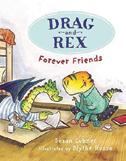
Two pals prove differences don’t interfere with best friendships.
Easygoing, reliable Rex and playful, impetuous Drag are the closest of companions; both live together contentedly in a small woodland house. Rex is a square-faced T. rex; Drag is a winged, toothy, fire-breathing dragon. Rex has many talents. He’s a keen baker, an accomplished pianist, and a skillful knitter—no mean feats, given his short arms. Drag, who’s a tad slower on the uptake, often gets up to mischief, but he also likes to see the bright side of things. This appealing, humorous charmer, the first in a winning new series about a pair of endearing BFFs, consists of three stories, each made up of three short chapters. Each chapter relies
heavily on warm, humorous dialogue that reveals characters bursting with personality, their friendship based on mutual respect and caring, as well as touches of laugh-out-loud silliness—as all forever-friendships should be. Young readers will be delighted by these two and will clamor to join them for forthcoming adventures. The cozy, lively illustrations portray Rex and Drag’s tight bond. Interestingly, the pals’ different natures are also demonstrated via their sartorial choices: Casual Drag likes sweatshirts and jeans, occasionally with rips at the knees, while conservative Rex prefers pullovers, business shirts, and smart slacks.
Welcomes an especially cute new duo to the series scene. (Chapter book. 6-8)

Macx, Logan | Walker US/Candlewick (336 pp.) | $17.99 | Nov. 14, 2023 9781536227710 | Series: Swift & Hawk, 2
Talented kids infiltrate a ring of pacifist fanatics and go for a rematch with shadowy evildoers in this brisk sequel.
Following a cybersecurity breach culminating in a massive explosion that takes out a weapons manufacturer’s clandestine research labs, Syrian British Zenobia Rafiq goes undercover to join Spikers, a supposedly nonviolent gang of hackers whose leaders (as it turns out) are bent on doing more than just exposing arms dealers and deals. Meanwhile, her partner, Caleb Quinn, who is white,
and his AI buddy, Sam, struggle to retain control Terrorform, the wildly popular RPG they created, in the face of a mysterious invasion. Once again, Macx positively shovels in high-tech elements from microdrones and nanobots to a flying quad bike and invisibility cloaks as he pitches his intrepid preteen geniuses into impressive feats of physical and mental gymnastics. Topping it all off, exhilarating battles in worlds both real and virtual culminate in an aerial dogfight over the Bank of England in which an improvised goo cannon plays a messy but significant role. The portrayal of antiwar activists as either malign or naïve reads as rather simplistic, but Zen, at least, does express some sympathy for their cause. And for all the killer robots and explosions, there are no explicit fatalities. The end brings more of a lull than a resolution, promising further exploits to come.
Chock-full of appeal for spy thriller fans. (Thriller. 9-13)
Madan, Vikram | Holiday House (96 pp.)
$13.99 | Oct. 10, 2023 | 9780823453573
Series: Zooni Tales
A pooch with perseverance and pals enjoys suspenseful adventures.
This collection, made up of three funny, easy-to-read tales and two brief interludes, stars Zooni, a very anthropomorphized dog (not the canine from Madan and Nicola Slater’s Bobo & Pup-Pup series), and a variety of not-to-scale animal friends.

Relies heavily on warm, humorous dialogue that reveals characters bursting with personality.
FOREVER FRIENDS
In “Missing Shoe,” Zooni seeks missing footwear and comes across many items and characters that rhyme with shoe, including cockatoo, stew, and emu, all of which end in different letters, though the expectation of a final rhyme could certainly help beginning readers; in a surprise ending, the other shoe drops! Varied rhymes in “Rescue” subtly convey important themes: helping others, persisting even in the face of fear, and making new friends. In “Boating Day,” Zooni’s desire to help out those in need while out on the water outweighs caution and common sense as a bevy of other creatures crowd into the tiny vessel. Thanks to the flat, full-face perspective, Zooni’s head barely changes shape, so his nose and mouth are sometimes weirdly displaced. Readers will find occasional challenging words, like responding, weight, and gorgeous, and the Caveat-like font isn’t legible enough to help emerging readers. Still, the fun rhymes and sweetly expressive characters are charming.
Despite a few wrinkles, the graphic format and rhyming text will engage young readers. (Graphic fiction. 5-8)
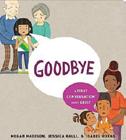
Madison, Megan & Jessica Ralli | Illus. by Isabel Roxas | Rise x Penguin Workshop (40 pp.) | $15.99 | Nov. 7, 2023
9780593662380
Series: First Conversations
An answer to questions about death and grief.
Life—it begins, changes, and ends, the authors inform us. When someone dies, their body stops working, and they don’t come back, like readers see sometimes in stories. We don’t know what “happens to our spirit, or soul, or energy,” although people have different ideas. Most people experience grief, a mixture of love and sadness for the deceased, but the authors emphasize that grief can look and feel
differently. Grievers usually benefit from the support of loved ones and from saying goodbye in a meaningful way. Like previous titles in the series, this entry employs a frank, conversational tone and directs prompting, open-ended questions at readers to help them connect their own experiences to the textual discussion. They will also help readers internalize the repeated message that death isn’t their fault and that they matter to others who are still alive. Backmatter encourages caregivers to keep discussions candid and concrete while including children in the grieving process. Overall, this is a pragmatic addition to existing titles about death and grief. The soothing, cartoonish artwork focuses on two families—one is brown-skinned with a pale-skinned grandparent; the other includes a brown-skinned child with pale-skinned guardians.
Solidly helpful. (Informational picture book. 3-7)
Kirkus Star
Mance, Ajuan | Chronicle Books (44 pp.) $17.99 | Nov. 14, 2023 | 9781797215051
Black men living their everyday lives.
Drawing on language patterns and speech traditions commonly used within the African American community, Mance refers to Black men as brothas in this picture book that poses the question, “What do Brothas do all day?” The question is fully answered in spreads of bold illustrations that feature Black men of varying sizes, shapes, and skin tones. Simple text lets readers know that brothas spend their days engaged in a variety of activities: “Brothas drive. Brothas ride. Brothas wait for the bus.” Brothas “cook…and eat. Brothas float…and fly.” “Brothas march.” “Brothas listen.” And, of course, brothas love. Mace’s distinctive

artistic style will be familiar to readers of her 1001 Black Men Sketchbook series. The illustrations, which show a deft use of collage, drawing, and other elements, capture the characters’ positive energy and camaraderie. The use of specific cultural details, such as brothas preparing black-eyed peas and visiting the barbershop, makes for a depiction that rings true. Mance’s linework brilliantly conveys dynamic physical movement as Black men take part in everything from jumping rope and skateboarding to dancing and playing basketball. Readers young and old will delight in exploring the ways that brothas live their wonderful lives. A welcome recognition of Black men and the joyous ways they show up for their families, their communities, and each other. (Picture book. 3-8)

Markel, Michelle | Illus. by Barbara McClintock | Chronicle Books (44 pp.) $18.99 | Nov. 14, 2023 | 9780811879231
The career of one of our most famous picture-book artists comes rip-roaringly to life!
Why on earth should kids care about the life of Randolph Caldecott (1846-1886)? Because he brought fun to the picture-book page! From the start, readers are promised “frisky animals, sprightly characters, and a hero so chipper he can barely hold still on the paper.” This book is nothing like the children’s books of old, which were uninspired, static, and often downright dull. As a child, Caldecott was delighted with animals, sketching them and their movements. He grew up to become a banker and made a living illustrating magazines and newspapers. Given the chance to illustrate a book for children, he filled the pages with what he’d learned. Infused with the
sheer energy and joy of the subject matter, McClintock’s art pops and bubbles on the page. She deftly interweaves reproductions of Caldecott’s own illustrations with her own into a seamless whole, one picture often in play with the next. This is no stodgy biography— Markel’s enthusiasm is well matched by McClintock’s own (and adults may enjoy identifying the nine illustrators, eight of them, so far, Caldecott Medal winners, gracing one of the book’s pages). Markel has crafted a fine companion to her previous bio of John Newbery, Balderdash! (2017), illustrated by Nancy Carpenter.
A cacophony of verve and frolic, this is biographical storytelling at its absolute best. (annotations, endnotes, bibliographies) (Picture-book biography. 5-8)

Mayer, Ellen | Illus. by Brizida Magro | Knopf (32 pp.) | $18.99 | $21.99 PLB | Oct. 10, 2023 9780593377611 | 9780593377628 PLB
Gift and Box take a trip through the mail system as they make their way from Grandma’s house to Sofia’s home.
“Gift was a gift. Box was a box. Together they were…a package.” These two take an incredible journey on their way to Sofia’s place. They wait at the post office, are jostled while riding in the mail truck, are placed into a shipping container, and travel across conveyor belts. They finally arrive at Sofia’s house, where both become treasured items for play. This is a sweet, imaginative take on friendship. The bond between Gift and Box is unexpected and heartwarming—though Box sometimes becomes exasperated with Gift’s complaining, Box is always there to reassure and cheer on Gift through frightening and uncertain times. Curious readers will enjoy seeing the steps that packages take to get from place to place, with Gift and Box’s exploits providing an insider’s perspective. Both have expressive faces that help convey their reactions to different parts of
their trip. The collagelike illustrations give texture to clothing and piles of packages and a very realistic look to Box’s cardboard exterior. Grandma and Sofia are brown-skinned; Sofia has dark, puffy hair in ponytails. This story is absolutely the full package. (Picture book. 3-5)

Mazeika, Katie | Beach Lane/Simon & Schuster (40 pp.) | $18.99 | Oct. 17, 2023 9781665903639
An introduction to a groundbreaking inventor known as “Lady Edison.”
The subtitle should be taken literally, as the author offers limited biographical information while zeroing in on her subject’s lifelong fascination with learning how machines and household items work and the “hyperphantasia”—the ability to visualize items in unusually exact detail—that helped Henry devise her inventions and improvements. Henry also had what she herself described as “color hearing,” now known as synesthesia, which Mazeika illustrates with stars and brightly hued curlicues floating through select scenes to represent dance music or street sounds. Beginning in 1913 with improvements to ladies’ parasols, Henry went on to file dozens of patents for significant refinements to sewing machines, kitchenware, doll designs, and more. She also shrugged off male resistance
to the notion of a woman inventor and went into business for herself as a consultant and the founder of two manufacturing companies. Accompanied by several small but illustrative patent drawings, the afterword highlights Henry’s neurodiversity while promoting her lasting impact on women in STEM (her current obscurity notwithstanding). Looking forthright and confident beneath a coronal wreath of red hair, she and most of the other figures in the illustrations are white, but skin tones vary in some group and street scenes. More role model than living person here, but still well worth the attention. (source list) (Picture-book biography. 8-10)
McCarthy, Cory | Clarion/HarperCollins (192 pp.) | $18.99 | Oct. 31, 2023
9780358362159 | Series: B.E.S.T. World, 3
Boxmates Ace, Jayla, Grayson, and Leo return for one last adventure as they attempt to stop a tyrannical threat. Ace is more than ready for his last semester as a cadet in the B.E.S.T. program at Tower of Power, and he has his sights set on the rare SuperSoar augment. Jayla is working overtime in the Resistance Research Lab’s Atlantis deepscraper, trying to find a cure for the Bixonium poisoning affecting Grayson’s parents. Grayson, still grappling with the revelations about his parents and Bixonics, is struggling to reconcile the truth with his former beliefs. Meanwhile,

More role model than living person here, but still well worth the attention.
BEULAH HAS A HUNCH
the friends all share a concern for Leo: They’re being held at Bixonics’ HQ, the former International Space Station, under the guise of learning to use their unstable Sherlock augment. Plots are hatched, more truths are unearthed, and unlikely friendships are formed—all culminating in a satisfying conclusion as the boxmates hurtle toward an uncertain future and make decisions that’ll affect both themselves and others. As was the case with the earlier entries, this fast-paced novel is full of heart and determination, largely due to the strong characterizations of the four protagonists and supporting cast. Filled with descriptive action sequences and conspiratorial tension, the story will make readers feel like they’re part of the adventure. McCarthy skillfully conveys the importance of both emotional and logical intelligence, which can inspire young readers to be more accepting of differences.
A thrilling end to an inspiring trilogy. (pick your aug) (Science fiction. 8-12)

McDonald, Briana | Simon & Schuster
(288 pp.) | $17.99 | Oct. 24, 2023 |
9781534498297
A lonely prince and the daughter of innkeepers pair up to squabble and fight pirates.
To save her dads, who run a failing hotel in the “astroboonies,” Lexi Jones sets out to find a “space-techno” amulet that can slow down time. She’s helped by annoying “interstellar nemesis” Prince Weston, whose family are guests at the inn. Weston stole the amulet from pirates (partly to keep his aging dog alive but also to earn attention from his royal parents)—and then lost it in space. Now the pirates are in pursuit. Following various escapades, Lexi manages to escape walking the plank into a black hole
just prior to the entrance of renowned pirate Great Astro Bonny, who’d been blasted into another galaxy by the twin offspring of “co-pirate” Mary Read. This crowded version of space is plied by cutlass-wielding pirates aboard interplanetary sailing ships, with the occasional planet or meteor shower just a short drive away. Ultimately, Lexi and Weston recognize that it’s best to let time march on. After lecturing the captors about making their own career choices instead of just following in the piratical family tradition, the duo return to the inn for joyous parental reunions. The plot’s a wild one, and the lively tone adds to the appeal, though frequent, sudden halts for wrangling or reflection interrupt the flow. Major characters read white.
More comic opera than space opera, with a heavy payload of life lessons to boot. (Science fiction. 9-12)

Mesher, Sydney & Catherine Laudone Illus. by Natelle Quek | Feiwel & Friends (40 pp.) | $17.09 | Oct. 31, 2023 9781250842671
How Mesher became Radio City’s first visibly disabled dancer.
Sydney was born with just five fingers, but her 10 toes caught her mother’s eye first: Sydney, she declared, would be a dancer. Confirming Mom’s prediction, Sydney was “twirling, swaying, and leaping” before she could crawl. When young Sydney entered dance class, however, some kids called her a monster. Fortunately, Sydney heeded Mom’s advice: “Keep dancing.” In college, she became one of the first female backup dancers for K-pop group BTS. A broken foot made her stumble but was fortunately only “intermission”; she obtained a dance degree and landed modeling gigs, hoping to encourage others like
her. Her biggest dream, though, was to be a Radio City Rockette in New York City. Despite several rejections, she tried “one / more / time”…and became the first Rockette with a visible disability. Both text and illustrations eloquently evoke dancing’s expressive capacity. Sydney’s sadness is “a slow dance with many turns and sweeping gestures”; after she realizes that not wearing a prosthetic hand feels more natural, her self-confidence becomes “a wild freestyle number.” Quek’s fluid cartoon illustrations use space and perspective to emphasize Sydney’s emotions. Aspiring dancers will especially enjoy her journey, and readers with limb differences will find reassurance that their bodies, too, are “worth celebrating.” Sydney presents white; background characters are racially diverse.
Affirming and uplifting. (author’s note from Mesher, photos) (Picture-book biography. 4-7)
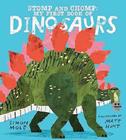
Mole, Simon | Illus. by Matt Hunt Candlewick (80 pp.) | $19.99 | Oct. 10, 2023 9781536231243
Welcome to the world of the dinosaurs. Despite the subtitle, this likely won’t be children’s first book of dinosaurs—most little ones’ first exposure to the ancient reptiles will likely come well before they’re old enough to read a relatively complex text like this. Even a 7-year-old might be stymied by comparing a dinosaur’s weight to “100 grand pianos” or “350 reindeer,” let alone to “10,000 cats.” And vocabulary such as quadruple, clamber, kazoo, and magma might trip them up. The author implies that Cedarosaurus produced a stench comparable to “a massive moving compost bin” (though proper compost shouldn’t have an unpleasant odor). Saying that “dinosaurs can’t swim” misses a key
distinction between several that could floppily flounder and those that could smoothly stroke—probably only Spinosaurus. (Too late for this book, the 12/22 discovery of an aquatic dinosaur, Natovenator polydontus, dethroned Spinosaurus.) An allusion to dinosaur development fails to mention evolution. The reign of dinosaurs here ends in fire with the asteroid apocalypse. A simplified timeline puts Spinosaurus and Tyrannosaurus in the same period, though they were separated by at least 30 million years. The text is arranged in verse, some actually poetic, while other bits are amusing and imaginative but short on information. Colorful, Carle-inspired illustrations are the best part of this book: They would make fantastic posters. Romping, stomping images don’t compensate for target-audience confusion. (Nonfiction. 5-10)
Morris, J.E. | Penguin Workshop (32 pp.)
$9.99 | Oct. 10, 2023 | 9780593523391
Series: Flubby

A pampered, plump pussycat resists frosty fun.
Once again, the adorable but recalcitrant Flubby asserts his individuality. His devoted brown-skinned young owner struggles to please him despite his obstinacy. Like most felines, Flubby finds winter trying. When it snows “a little,” then “a lot,” the child wants to play in the wet white stuff, but Flubby finds it too cold—first, for his feet, then for his back and head. Each time, he retreats to the warm house. The child resourcefully produces tiny kitty boots, a coat, a hat, and a scarf. Finally, properly enveloped, Flubby is not too cold, does not go back inside, and plays in the snow while his owner creatively constructs a snow-cat. Compared to the earlier books in the series, which use characteristic cat behavior to
set up the surprise ending, this one finishes anticlimactically, not to say unrealistically. (A cat docilely allowing himself to be repeatedly dressed up is rare indeed, and the cat’s back half is still bare and presumably cold.) But the words are simple and repetitive, and the pictures are engaging. Flubby’s perfectly round golden eyes and ballooning belly will evoke smiles, and when Flubby is depicted sitting with rear legs splayed and a dubious expression on his face, readers might laugh despite the predictable text. If expectations are modest, this latest addition to the series is mildly amusing. (Easy reader. 5-7)
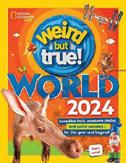
National Geographic Kids | National Geographic Kids (304 pp.) | $24.99 | $34.90 PLB | Aug. 29, 2023 | 9781426374531
9781426375958 PLB
Series: Weird But True!
Heaping helpings of facts and photos on natural and manufactured oddities, with a sprinkling of new material scattered over previously published fare.
Continuing to cater to short attention spans, this lightly massaged version of the previous edition offers the same crowded mix of bright color photos and equally flashy backgrounds and graphics—tailor-made for random dipping and compulsive sharing. There is an index that few, if any, readers will ever consult, and there are no source notes, aside from the obligatory photo acknowledgments. But if the
blocks of commentary accompanying the pictures go for hokey wordplay (it “pays to be cassowary-wary!”) and cranking up the pitch, a few factual bits are smoothly folded in, and each chapter does feature a rudimentary pop quiz. Following an opening chapter with select upcoming weird holidays and events (2024 will have two solar eclipses, fewer than usual), the contents are grouped by continent, with a final chapter on seas and space. The book sweeps through a sprawling menu of topics: records such as the world’s longest hot dog and largest hamburger, glimpses of the annual bog snorkeling championships and other less well-known competitions, and wildlife from the ever-popular tongue-eating louse to a millipede named after Taylor Swift. Readers are invited to marvel at a porcine painter named (inevitably) “Pigcasso,” any number of oddly shaped buildings, and the “gigantic butt-shaped nut!” of the coco de mer palm.
The bee’s knees for browsers, if not much different from last year’s version. (Nonfiction. 8-11)
Negron, Chris | Harper/HarperCollins (368 pp.) | $19.99 | Oct. 31, 2023
9780063251878
Determined tweens save their neighborhood from greed, unwise development, and discrimination. Twelve-year-old Mortimer Bray’s beloved dog, Trevor, got away from him on a walk
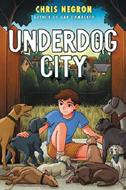
Heaping helpings of facts and photos on natural and manufactured oddities.
and was killed. His neighbor and mentor, Ms. Opal, who is Black, has entered a nursing home. Mortimer struggles with anxiety, which is manifesting as increasingly frequent “freeze-ups.” His science teacher dad and lawyer mom (the new Townsend Heights council head) are bickering. Mortimer gave his successful dog-walking business to his friend Frankie, who invites him to come along, but due to Trevor’s accident, the idea fills Mortimer with dread. New Puerto Rican neighbors Mr. and Mrs. Cortez have a rooster who crows early every morning, and a granddaughter, Will, who’s visiting; she and Mortimer build a friendship after a rocky start. Meanwhile aggressive, xenophobic neighbor Mr. Brewster is campaigning to turn locals against the Cortezes and their rooster. Mr. Brewster also proposes developing a nearby vacant lot that has a connection to Ms. Opal’s family, and he frames it as raising the tone of the neighborhood. Text boxes with local ordinances and Mortimer’s “secret files” provide background on community action. The first-person narrative starts off slowly but builds momentum as Mortimer regains his self-confidence, learns about Townsend Heights’ history, and works with friends both young and old on a counterproposal. Mortimer, who reads white, sometimes seems stodgy but is well meaning and wise beyond his years, and animal antics provide comic relief.
A meaningful exploration of young people’s involvement in community activism. (Fiction. 10-13)
Olson, Jennifer Gray | Roaring Brook Press (40 pp.) | $18.99 | Nov. 7, 2023
9781250206282
Parties, yes; party poopers, no. A panda named Paul attends a birthday party. Everyone’s enjoying themselves, but Paul, “poopiest of poopers,” is determined to spoil everything. The
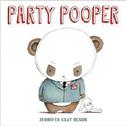
host coaxes Paul to join activities; Paul prefers sabotaging them. When Paul sticks a snot-covered finger into the cake, the guests are aghast. Paul has a major tantrum but apologizes after witnessing the party’s host sobbing. The party resumes, and it turns out that Paul, now forgiven, prefers candies to games. Paul departs, finally contented. This tongue-in-cheek book pairs illustrations depicting Paul’s party shenanigans with text narrated by the gentle, knowing voice of an adviser wise in the ways of handling party poopery (“Try to be patient with the pooper,” “Perhaps you can interest them in a game”). It confronts serious issues—social awkwardness, the inability to make friends—while simultaneously addressing those who want to help them. These youngsters, the text suggests, aren’t really naughty but simply very unskilled at peer interactions. As presented here, savvy children have no trouble defusing socially difficult situations alone, without adult intervention—an unrealistic scenario. Backmatter for grown-ups discussing social challenges and offering guidance would have been beneficial. In the lively line illustrations, plump, brown-and-white Paul parties alongside racially diverse human children.
A genuine concern receives a lighthearted treatment; children will giggle but also, hopefully, think and learn. (Picture book. 4-7)
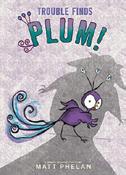
Phelan, Matt | Greenwillow Books (128 pp.) $17.99 | Oct. 10, 2023 | 9780063296244
A peacock’s kindheartedness and cleverness prove immune to cynicism.
Undaunted by rain, peppy Plum is the only zoo inhabitant around when a bedraggled raccoon shows up. Plum’s ordered to bring food—pronto. All that he can find is a snack bar that a visitor dropped in the tiger
pit, and he cleverly obtains it for the raccoon. Despite others’ doubts that the raccoon is really Plum’s friend, the trusting bird just wants to help. Then more raccoons show up, and Plum seeks help. Peahen Meg scorns raccoons as “scavengers and thieves” and gives them a dressing-down, but that doesn’t dissuade the interlopers. Text and illustrations make clear that the peacocks are at a disadvantage, both in terms of size and number. Power makes the raccoons hungry for more, and their rudeness becomes bullying. But with help from Itch the ningbing, Jeremy the cat, and, naturally, Plum, “brains and heart” eventually save the day. A couple of wordless stretches of sketches provide a visual break, but many smaller vignettes add to the drama of the story and bolster the characterization (and add evidence that not all raccoons are alike). Pacing is smooth, and the plot moves smartly. Like other series installments, this tale demands and develops a certain level of reader sophistication to see through the sarcasm, assumptions, and bluster. Expert plot and character development take this latest in the series up a notch. (Chapter book. 7-10)
Phùng Nguyên Quang & Huynh Kim Liên Make Me a World (40 pp.) | $18.99
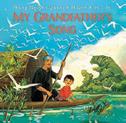
$21.99 PLB | Oct. 17, 2023 | 9780593488614 9780593488621 PLB
A grandfather teaches his grandchild nature’s song.
“Listen, do you hear it?” the grandfather asks his grandchild, Tí, as he steers a small boat. The duo have come to a “new land” now known as Vietnam. As the grandfather and the jungle, symbolized by foliage that forms the image of a monkey, greet one another, the grandson observes “a thousand voices at once. A crash of noises.” The child finds it all overwhelming, yet the grandfather explains, “This is music, and we
must learn the song.” As the two of them build a fence around their new home, the grandfather calmly explains, “The bamboo we cut is a melody we raise high as a roof.” Tí gradually gains survival skills such as fishing, sailing, and cultivating the land. Every page teems with vivid landscapes and textures, the deft use of light, colors, and lush detail making for dramatic scenes. When Grandfather says, “You do not have to shout down the storm. Find its rhythm; sing with it,” readers will feel the stark cold of a sea storm. The narrative comes full circle, with a now-adult Tí asking a child, “Listen, do you hear it?” In the backmatter, the creators note that their tale pays homage to “the very first pioneers to the South of Vietnam.” A mesmerizing and enthralling tribute. (note from Make Me a World creative director Christopher Myers) (Picture book. 5-8)
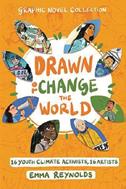
Reynolds, Emma | HarperAlley (208 pp.)
$22.99 | Sept. 12, 2023 | 9780063084223
Young environmental activists around the world are making a difference.
An introduction offers an overview of the climate change crisis. The short, stirring comics that follow each use four pages of comic book panels to describe the subject’s life and concerns. (Greta Thunberg gets six, perhaps for her outsized presence as the instigator of Fridays for Future, the model for what many of these young people are doing in their own countries.)
Two more pages recount awards and current activities. The young people range remarkably, from Autumn Peltier, an Anishinaabe activist who has campaigned for clean water in
Canada, to Dara McAnulty, working for raptor conservation in Ireland. Two of the subjects have demonstrated in countries where the act of environmental protest itself is severely limited: Russia and China. Several young activists described identify as queer; Thunberg and McAnulty are autistic; Daphne Frias, a Latina American who has worked to eliminate single-use plastics from her college dining hall, has cerebral palsy and uses a wheelchair. The comics were created by different cartoonists whose backgrounds, styles, and even palettes are equally wide-ranging. Overall, these are heartening examples of young people taking action against what is probably the most important issue in all our lives; readers will emerge compelled to make a difference themselves.
An impressive introduction to an admirable group. (what can you do? defend the defenders; interviews; information on the IPCC Report; timelines; further reading, watching, and listening; glossary; artist bios) (Graphic collective biography. 10-15)
Sandler, Martin W. | Astra Young Readers (144 pp.) | $24.99 | Oct. 31, 2023 9781662602047
A survey of the tools, techniques, and select triumphs of underwater archeology. There are, Sandler writes, about three million shipwrecks on the ocean floor, making it “nothing less than the world’s greatest museum.” Though getting down there can be hard and dangerous, the rewards can be immense. Along with dramatic descriptions of seven major finds— from the Antikythera Mechanism
(“the most extraordinary ancient artifact ever discovered”) and the 20,664 porcelain objects (and 28 tons of period coins) recovered from a centuries-old
wreck off the South Korean coast to the slave ship São José Paquete de Africa, which sank in 1794 along with 212 enslaved people—the author profiles leading figures in the field such as George Bass (“the father of underwater archeology”) and author/ explorer Clive Cussler. He also adds expansive context with side notes on, for instance, an organization called Diving With a Purpose that specializes in slave-trade archeology and the female Korean free divers called haenyeo. Historical images of ships at sea join photos of artifacts in place or in various stages of preservation to add both drama and visual detail, and along with quick, tantalizing looks at several other significant wrecks, young explorers will find helpful notes and references at the end. Many of the people involved with Diving With a Purpose are Black, the haenyeo are Korean, and Bass, Cussler, and other figures discussed are white. Immersive reading. (source notes, bibliography, index) (Nonfiction. 11-13)


Scaletta, Kurtis | Illus. by Nik Henderson Abrams (32 pp.) | $18.99 | Oct. 3, 2023 9781951836665
When a hawk threatens, Dee the chickadee takes a cue from her “sixty-million-times great-great-greatgrandmother.”
Echoing beleaguered children everywhere, little Dee complains that she doesn’t like being small—whereupon her Mama informs her that she is descended from a monster with “BIG CHOMPING TEETH,” a “MASSIVE CRUSHING TAIL,” and an enormous “ROAR” and that even though the world has changed over time, she still has her monster ancestor’s bones and feathers. Confidence restored, Dee slips through the pushy bigger birds clustered around the feeder to chow down, adroitly avoids a red tailed hawk’s snapping beak…and then,
seeing the hawk heading for a nest of defenseless hatchling jays, screws her courage to the sticking place and utters a tree-shaking “CHICK-A-DEEDEE-DEE!” Is that enough to scare off the hawk? Presumably so, though viewers will have to fill in that part for themselves, as Henderson just switches to a closing view of the preening avian mite. Looking like painted paper collages, the illustrations add bright notes of brushed and overlaid color in depictions of both contemporary and prehistoric scenes.
Chirpy reassurance that size doesn’t matter, even if we can’t all be descended from dinosaurs. (Picture book. 5-7)
Schaefer, Lola M. | Illus. by Druscilla Santiago | Charlesbridge (40 pp.) | $16.99
Oct. 3, 2023 | 9781623542443
Series: Hands-On Science
Explore geology through the pages of a book.
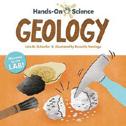
This interactive presentation invites the reader to “touch, pound, scrape, or press” the pages just as a geologist might do to examine rocks. Tapping, blowing, jumping up and down, and rubbing hands together are just some of the actions called for. From time to time, the imagined actions mimic the geologic process: tracing and retracing the route of a river to create a canyon, or pressing a hand into clay to create a fossil. Schaefer’s exploration follows a clear narrative arc, beginning and ending
with our familiar Earth. She moves smoothly from topic to topic, describing Earth’s layers, offering examples of the three major types of rocks, and discussing the uses of rocks and the metals we extract from them. This leads to the building of rockets to explore other rocks in space. Returning to Earth, readers are asked to notice the rocks, minerals, and metals all around— and even inside their bodies. Finally, an activity guide leads readers to discover that rocks vary in hardness. The relatively simple text is arranged on a plain white background, with Santiago’s clear digital illustrations supporting the information. The few humans pictured have dark hair and skin. The appealing, accessible design adds to the value of this simple introduction. Crack this one open with young science experimenters. (Informational picture book. 4-7)
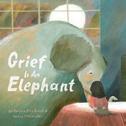
Smith, Tamara Ellis | Illus. by Nancy Whitesides | Chronicle Books (36 pp.) $17.99 | Oct. 24, 2023 | 9781797212258

Multiple animal metaphors for grief. A child is lying in bed when an elephant enters the room. That elephant is Grief, and it pushes down on the child, making it hard to breathe. No matter how much the child pushes back or yells, the elephant won’t budge, forcing the child to outrun her. Later, Grief returns as a deer, and no amount of hiding or wishing on good luck charms can
prevent it from finding the child. But again, on next meeting, Grief has changed, this time into a fox. This manifestation doesn’t do much—she lets the child touch her soft body and just lies down to rest for a while. Then, Grief becomes a mouse with large ears—to listen to the child—until, finally, Grief is a firefly who, when gently released, rises up into the night sky. The child is left to remember. The main conceit of this book will not be enlightening for older readers but may provide accessible comfort for its intended younger readers. The symbolism loses some definition toward the end, when all the versions of Grief appear simultaneously, but perhaps that’s part of the metaphor, as grief comes and goes in waves of intensity. The illustrations are often blurred and indistinct, as if seen through water, although it’s unclear how that relates to the subject matter. The child has tan skin and straight black hair. Tender ruminations on loss for the youngest readers. (Picture book. 3-7)
The Inside Name
Sonenshine, Randi | Illus. by Gina Capaldi Apples & Honey Press (48 pp.) | $17.95 Oct. 10, 2023 | 9781681156194
A child navigates his Lisbon neighborhood as a converso, a Jew compelled to practice Catholicism in Spain and Portugal during the Inquisition. The boy takes readers through his city and ponders the religious intolerance that has turned neighbors against him and forced his family to keep their Jewish observance a secret. Though the author acknowledges the threat of violence and imprisonment for forced converts, she leans toward optimism, depicting a loving, intact family who seek a way out. Interspersed with moments of dread and sadness, the narrative highlights details about secret religious practice, such as hiding a mezuzah under the tiles
Chirpy reassurance that size doesn’t matter, even if we can’t all be descended from dinosaurs.
GRANNY REX
of the doorframe, lighting Shabbat candles inside a jar on the hearth, and using an “inside name,” a Hebrew name employed only in the privacy of the home. This short chapter book features illustrations on every spread as well as occasional text boxes that offer definitions and historical context, though the vocabulary will be a stretch for many younger readers. Saturated colors for the clothes and buildings imply the visual richness of the city, but the soft lines of the watercolorlike illustrations provide limited expression in the human faces. A historical note presents more details about conversos and discusses Doña Gracia, who used her wealth to rescue Jewish people trapped by the Inquisition. A gentle exploration of a cruel episode in European history. (Chapter book. 6-9)

Spiro, Ruth | Illus. by Teresa Martínez Charlesbridge (32 pp.) | $17.99 | Oct. 10, 2023 | 9781623543181 | Series: How To Explain Science
Grown-ups may not be the only audience for this simple explanation of how algorithms work. Taking a confused-looking hipster parent firmly in hand, a child first points to all the computers around the house (“Pro Tip: When dealing with grown-ups, don’t jump into the complicated stuff too fast. Start with something they already know”). Next, the child leads the adult outside to make and follow step-by-step directions for getting to the park, deciding which playground equipment to use, and finally walking home. Along the way, concepts like conditionals and variables come into play in street maps and diagrams, and a literal bug stands in for the sort that programmers will inevitably need to find and solve. The lesson culminates in an actual sample of very simple code with labels that unpack
each instruction…plus a pop quiz to lay out a decision tree for crossing the street, because if “your grown-up can explain it, that shows they understand it!” That goes for kids, too—and though Spiro doesn’t take the logical next step and furnish leads to actual manuals, young (and not so young) fledgling coders will find plenty of good ones around, such as Get Coding! (2017), published by Candlewick, or Rachel Ziter’s Coding From Scratch (2018). A lighthearted first look at an increasingly useful skill. (glossary) (Informational picture book. 7-9)
Kirkus Star
Steinberg, Avi | Farrar, Straus and Giroux (40 pp.) | $18.99 | Nov. 28, 2023 9780374390945
A sly, silly, metafictive storytelling how-to guide.
Steinberg playfully breaks the fourth wall to address a diverse cast of children depicted in digital cartoon art. The narrator explains that this is “a story no one has ever heard before” and adds, “I am not going to be the one to tell this story.” Gazing wide-eyed, the kids balk. “Wait, what?” “You’re not?’” two children ask in speech-balloon dialogue. “You are!” replies the narrator. Ensuing pages cleverly avoid having the children actually tell a story. Instead, the narrator offers guidance on what every tale needs: a character, conflict, a climax, and a resolution. Along the way, the narrator also suggests a few possible—and hilarious—scenarios. Maybe the protagonist could be a talking carrot who encounters a potato covered in literal eyes (a fun visual pun). Or a stressed extraterrestrial who journeys through space for some R&R. Or a compassionate knight (depicted with light skin) who’d rather lend a hand to an ogre in need than vanquish a dragon. A concluding spread presents a Mad Libs–style page held in the hands of several children. Readers will
feel as though they share the children’s visual perspective and will be eager to engage with the narrative. Inspired and dynamic, this one will stir burgeoning writers to try their hand at storytelling. Kids will want to listen to this one again and again for creative inspiration. (Picture book. 4-10)

Sullivan, John | Illus. by Hatem Aly | Paula Wiseman/Simon & Schuster (32 pp.) $18.99 | Oct. 3, 2023 | 9781534471320
Ethan and his older brother, Sam, are walking to school on a city street when Ethan notices several stray cats. Ethan asks Sam if he thinks their father would allow them to get a pet cat. Sam attempts to dissuade him (“These cats aren’t pets”), but Ethan can’t stop thinking about them. He stops by to see them and gives them names. “Misty is curious, Fluffy is shy, and the littlest, Dusty, is bold.” When the boys visit the library, Ethan learns about cats’ needs and later notices a sign outside the animal clinic: “TRAP NEUTER RETURN.” Sam explains that neuter means preventing cats from having kittens, and the boys enter the clinic. They leave with three humane traps, entice the cats with tuna, and accompany them to the clinic to ensure that the strays will not bring new kittens into the world. Although the information on trap-neuter-return in the backmatter instructs readers to ask clinics about volunteers who might assist them, the boys carry out the mission by themselves. Adults—such as the vet and the boys’ father—are mentioned, but none appear in the cartoonish, mixed-media illustrations. Though the subject matter is appealing, the didactic, purposeful text likely won’t interest most readers. The brothers have dark brown skin and curly hair.
A worthy message about managing the population of street cats marred by flat writing. (resources) (Picture book. 6-8)

A STORY NO ONE HAS EVER HEARD BEFORE
Supplee, Suzanne | Holiday House (304 pp.) $17.99 | Oct. 24, 2023 | 9780823453696
It’s 1974, and Josephine and Mama have given up their tony apartment and moved into the Happy World Trailer Park, in Glendale, Tennessee. Only problem is, it isn’t a happy place. With Josephine’s dad gone and Mama’s sewing business suffering financially, they have no choice. The limited third-person narration describes Josephine’s views of “every miserable thing there was to see in Happy World,” from the rundown trailers to the residents who are facing challenges. Josephine meets Lisa Marie, who’s also 10 and who lives with her grandaddy and great-uncle. Lisa Marie tells her about a girl from the neighborhood named Molly, who was kidnapped nearly a year ago and hasn’t been found. Molly’s mom looks as if she’s barely hanging on. Josephine is struggling, too, but she’s convinced that she and Molly have “a kind of sisterhood,” and she’s sure that if she can rescue Molly, her own circumstances will become bearable. Things move quickly after Josephine recognizes and interprets a clue that might point to Molly’s whereabouts, leading to a thrilling and dangerous climax. The resulting relationships forged are well worth it all. Josephine’s resilience and ability to reassess herself and her situation are admirable. Difficult topics such as divorce, poverty, abduction, terminal illness, and incarceration are thoughtfully and
age-appropriately explored. Most characters are cued white. Colorfully relayed and gratifying to read. (author’s note) (Historical fiction. 9-12)
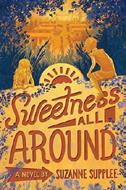
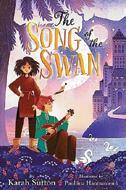
Sutton, Karah | Illus. by Pauliina Hannuniemi | Knopf (288 pp.) | $16.99 $19.99 PLB | Oct. 24, 2023 | 9780593121696 9780593121702 PLB
No granted wish comes without strings attached. Left alone when her mother died, wild-maned moppet Olga, who knows nothing about her father, now runs with the nefarious Mr. Bulgakov and bighearted older-brother figure Pavel. For years, the three have kept moving, swindling villagers for food and profit, often using a form of magic possessed by Olga to create illusions. Olga does not feel good about this lifestyle, but years of being taught to look out for herself have inured her to it. That is, until an escape from law enforcement lands them in the Kamen Mountains, where legend tells of the Scarlet Heart, a jewel that could change their lives. Escaping from Mr. Bulgakov to search for it, Olga and Pavel find themselves in the lavish Sokolov Palace, complete with a swan-filled aviary and extravagant balls hosted by the enigmatic Baron Sokolov. Of course, it’s all too good to be true, and Olga soon must try to unlock a “distorted, infected” magic, unaware that her own fate is inextricably linked to it. Segments of the story are cleverly previewed
by an omniscient spider storyteller who addresses readers and asks them thoughtful questions. The characters are interesting, and the story, lovingly inspired by the ballets Giselle and Swan Lake, is well developed and moves briskly. Engaging illustrations, reminiscent of woodcut prints, add interest and context as the tale unfolds. In this Eastern European–influenced world, characters read white. An enchanting fairy tale. (author’s note) (Fantasy. 8-12)
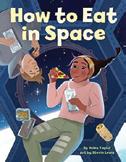
Taylor, Helen | Illus. by Stevie Lewis Little, Brown (40 pp.) | $18.99 | Oct. 31, 2023 9780316367745
Today’s astronauts have way more culinary options than Tang and freeze-dried fare. Drawing from the experiences of astronauts at the International Space Station, Taylor addresses readers directly, as if they, too, were traveling in space. She describes the challenges of this environment (no grocery store, no kitchen, and no gravity). But, she makes clear, there will be many different kinds of food to choose from, including favorites from the astronauts’ home countries. Taylor explains how to prepare the food and cope with the difficulties of eating. The process can be slow, and food may not seem as tasty, so readers might want hot sauce. Surprise treats may arrive on rockets sent from Earth. Astronauts can even grow some vegetables (saving some for research, of course). Water is carefully rationed and recycled over and over. Proper disposal of trash is vital. Digital artwork—as well as a final page with photographs of actual astronauts—shows diverse people preparing, eating, and cleaning up after their meals. These entertaining illustrations, both vignettes and full-page spreads, accompany short paragraphs.
Kids will want to listen to this one again and again for creative inspiration.
Although the text is presented as a list of instructions, the inviting, conversational tone will engage young readers, and the variety of foods on the menu today—from kimchi to curried pumpkin soup—may surprise them. More information, for more able readers, appears in the extensive backmatter.
An appetizing guide to space shuttle dining. (resources, selected sources) (Informational picture book. 4-9)
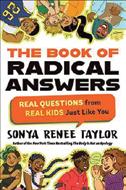
Taylor, Sonya Renee | Illus. by Shannon Wright | Dial Books (288 pp.) | $9.99 paper Oct. 24, 2023 | 9780593354834
Connects with readers while conveying basic life information and providing abundant affirmations.
Utilizing a conversational Q&A format, brief chapters cover young people’s common concerns, grouped into a dozen topic areas: bodies, emotions, sexuality, gender, racism, families, school, friends, growing up, government, the environment, and religion. Shaded black-and-white spot art showing kids who present as diverse in ethnicity, body type, gender presentation, and faith may appeal to readers but doesn’t illustrate textual points. Bullet-pointed lists and text boxes provide checklists, resources, and expert opinions. Interesting comparisons (e.g., to your body and brain, sleeping is like shutting your phone down for updates) help make Taylor’s practical advice feel relevant: The material’s largely not new, but it’s packaged warmly and effectively. A central goal is countering negative and manipulative messages about our appearances and feelings that undermine true well-being. Taylor embraces the philosophy of radical self-love, helping us
to “better value each other for all the different ways we bring wisdom and beauty to this world.” The text offers criticism of biased and unsustainable systems, rejects restrictive societal norms, advocates for immigrants and universal health care, and explores sensitive topics like suicide and genocide. Nevertheless, the tone overall is hip, humorous, and irrepressibly positive, and the author is clear that adults, not young people, bear responsibility for solving social problems. Holds out a sympathetic helping hand to a cohort of young people dealing with exceptional stressors. (selflove tips, community conversation agreements, glossary, resources) (Nonfiction. 10-14)
Truuvert, Sara | Illus. by Michelle Theodore Annick Press (40 pp.) | $18.99 Oct. 17, 2023 | 9781773217567
Being apart from family is never easy.
Mira, a Japanese Canadian girl living in a village of gray shacks, worries when Mama says that Pa won’t join them on the child’s birthday. With a tapirlike creature named Baku—explained in the backmatter as a dream eater from Japanese folklore—Mira flies all the way to the family’s former shop and home, both abandoned and in disrepair, to locate Pa, but he’s nowhere to be found. Mira tries to play with stones gathered with Pa but discards them in unresolved anger and confusion. Simplistic, at times dry text neatly avoids the darker reason for the family’s separation. Context about the incarceration of Japanese Canadians during World War II (and how men were often sent to separate labor camps) is relegated to the lengthy author’s note, which uses the euphemistic term internment rather than incarceration. Muted illustrations depict the stones with more vibrant tones, perhaps to signify their importance in Mira’s life. Amid a drab palette, occasional bright

colors—green fields and sunny yellows in flashbacks with Pa—provide some respite. Despite some warm moments with Mama, Mira suffers emotionally from Pa’s absence in a way that kids likely won’t understand; grown-ups may want to consult the appended list of references to offer background. An attempt at a child-friendly exploration of the WWII Japanese Canadian incarceration that falls short. (Picture book. 4-6)

Tur, Míriam Bonastre | Clarion/ HarperCollins (400 pp.) | $24.99 Sept. 5, 2023 | 9780358693581
Series: Hooky, 3
Twin witch siblings Dorian and Dani Wytte and their friends venture forth to unite their kingdom.
Dorian planned to meet up with the crew after faking his death, but instead, he went missing. Poisoned and sleep-ridden, he’s finally rescued three years later. Now in the body of a 16-year-old, he finds things have changed. With William’s father dead, William and Monica plan to marry and unite their kingdoms and armies despite their feelings for Damien and Dorian, respectively. Having studied hard to hone her latent magical abilities, Monica works toward crafting a magic-based solution to the conflict. Nico, cursed into being pocket-size, tries his hardest to talk some sense into Dani, who’s become unrecognizable. After witnessing Dorian’s supposed death, Dani has joined her mother and become a “cold, cruel queen” absent her signature upbeat energy and many of her memories. The crew must pull out all the stops to break Dani free of the evil possession and trancelike curse and resolve the magical-nonmagical conflict. In this action-packed finale, Tur satisfyingly ties most of the loose ends from the series together. Questions of duty and expectations find
their balance, a kingdom of coexistence and mutual acceptance starts to blossom, and the youthful band of friends proves their vow to be better than what came before. Some questions remain partially unanswered, but each character gets a send-off, while budding romances earn their moments.
An enchanting trilogy closer. (Graphic fantasy. 8-12)
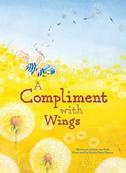
van Hest, Pimm | Illus. by Nynke Mare
Talsma | Clavis (32 pp.) | $18.95
Oct. 24, 2023 | 9781605379470
A single ray of sun sets off a domino effect of good deeds and smiles.
When Sammy wakes up, he can’t help but compliment his mother, who’s standing in the sunlight from the window, glowing. “You look so beautiful, Mom,” he tells her. This warms her heart, and she decides to surprise him with pancakes in his lunch box. When Sammy shares them with Moira at lunchtime, Mr. Silas sees the interaction and decides to muster the courage to ask Mr. Billy to dinner. Seeds from a dandelion puff soar through the pages, connecting one person to the next as their actions tumble over each other, setting off a chain reaction. Mr. Billy is so happy that he moves his classroom outdoors, and two students find a lost locket in the sandbox. This necklace belongs to Annie, whose mother gave it to her before she passed away. The story comes full circle as Annie’s family gets a
dog from the shelter—where Sammy’s mom works. The special little pup is named after the boy whose compliment started it all. This soft-spoken Dutch translation, with downy, pastel art, calmly drifts along, matching the gentle floating of the dandelion fluff. Sammy, his mother, Mr. Billy, Annie, and most other characters present white, although characters of color, including brown-skinned Mr. Silas, are featured. Proof that one small act can have a very far reach. (Picture book. 4-7)
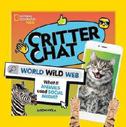
Viola, Jason | National Geographic Kids (216 pp.) | $19.90 | $9.99 paper Aug. 8, 2023 | 9781426375934 9781426373718 paper | Series: Critter Chat
A second collection of animal facts presented as online exchanges and posts.
FastClass the cheetah welcomes readers and pops in occasionally as the book progresses. Through repeated segments mimicking real-world internet sites and online conversations, readers learn about the diets, behaviors, habitats, ranges, and physiology of a wide range of animals, from purple frogs (first spotted by scientists in India in 2003) to the mountain viscacha (a type of chinchilla found in the Andes) to the splendid fairy-wren of Australia. Critter Chat sections gather groups of animals to discuss a shared theme via text messages. Llamazon and YiPadvisor pages show animals sharing reviews that incorporate information
about their features and behaviors. Dolphinstagram and bharmony segments put the spotlight on a specific species. The Animal Influencer profiles—many of them on animals who have gained attention thanks to social media accounts run by people in their lives, such as Starfish, the New Orleans opossum cared for by an animal rehabilitator after losing her tail—give a personal face to the data, although their social media platforms and usernames are not provided. A light tone and plenty of puns punctuate the text, keeping the book both entertaining and educational. Color photographs on nearly every page, along with bright graphics and a balance of data and humor, paired with just enough snark, will sustain readers’ interest. Amusing and informative. (index, photo credits) (Nonfiction. 8-12)

Wallace, Chelsea Lin | Illus. by Alison Farrell Chronicle Books (60 pp.) | $17.99
Nov. 7, 2023 | 9781797210810
A day in the life of a busy school nurse.
After arriving by bike, beloved Miss Peatree, who is brown-skinned, begins her workday at Bluebell Elementary. Whistling, she unlocks her room with a big brass key, wipes the counters, sweeps, and more—each step with gusto!—as she sets up for the day ahead. Her first young patient visits her before classes even begin, proclaiming a tummy “full of grumbles.” Another, whose face is splattered with paint (“a catastrophe!”), barges in soon after. Next comes a loose tooth, then homesickness. There’s blood, snot, lice, a splinter, a paper cut, vomit, and injuries galore. The nurse’s office is practically a revolving door of children—and even one principal. A visitor log sidebar cleverly tracks each patient’s name (including repeat visitors), ailment, and status. Miss Peatree fixes up each and every
person. But who takes care of Miss Peatree when she gets home? Farrell’s full-color art shines in its details, especially the hand-lettering that matches each patient’s mood and ailment. The characters’ histrionic facial expressions expertly complement Wallace’s humorous narrative. Endpapers feature bandages of various colors and skin tones, an inclusive touch for the diverse cast.
A wholesome and heartwarming ode to school nurses everywhere. (Picture book. 4-8)

Ward, Matthew | Illus. by Scott Magoon Clarion/HarperCollins (32 pp.) | $19.99 Oct. 17, 2023 | 9780358400059
Who says wings are required to fly? Sometimes an uplifting boost to your spirits is all you need.
The three winged, albeit flightless, avian stars of this empowering picture book feel wistful that they can’t do what most birds do, but their sadness is brief. As they observe their fellow birds flying effortlessly, they’re determined to do it, too, no matter what it takes. They train, exercise, dream, and make literal plans—preparing detailed schematic drawings and blueprints—and also construct models and flying-machine prototypes. Despite their collaborative work and tenacity, however, they sometimes make mistakes and miscalculate, so they haven’t flown…yet. Sometimes they want to give up, but they’re birds and nothing if not, er, dogged and ready for every challenge. Can you guess how this story about cooperation, self-confidence, and sheer persistence ends? Young readers, who will have been rooting for these characters all along, will cheer—as do the other birds—not only for the threesome’s ultimate success, but also for this very simply told tale about perseverance, the steadfast pursuit of dreams, and having an unflagging
belief in oneself. The colorful digital illustrations are loaded with warmth and energy, as are the expressive protagonists. These are characters kids will want to emulate as they attempt to spread their own independent wings or try to conquer hurdles they didn’t believe they could. This high-flying charmer rises to the top. (Picture book. 4-7)
Watt, Mélanie | Random House Graphic (88 pp.) | $12.99 | $14.99 PLB | Oct. 3, 2023 9780593307618 | 9780593307625 PLB Series: Scaredy’s Nutty Adventures, 3
Scaredy Squirrel wants to have the PERFECT Christmas…if only his friends would cooperate.
Scaredy Squirrel starts preparing for the holidays in July. “He makes a list and checks it way more than twice.” When December arrives, Scaredy is ready, and his friends want to help with the plans, but when Tim and Rash try to toboggan down a mountain, they accidentally snowball and end up destroying all the decorations. After Scaredy’s pals make several horrible and humorous suggestions for substitute decorations, Ivy has the perfect solution: hanging red and green Ping-Pong balls on the tree. The friends even set up a security detail to protect the tree from nutcrackers, “mobs of last-minute shoppers,” and elves. Short chapters with brief speech bubbles keep the action moving as Scaredy’s list for holiday preparations is completed. Holiday treats are baked, a gingerbread house is constructed, gifts are thoughtfully selected and wrapped, a Christmas Eve party is planned and enjoyed (sort of), and treats are left for Santa and the reindeer. Humor is threaded throughout all the preparations—Tim wants to “trim” the tree by removing branches with his beaver teeth, and
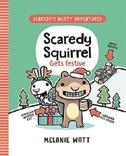
hilariously precise, step-by-step plans will encourage kids to create their own decorations and gingerbread houses.
Sure to make the season a little merrier, no matter what plans readers have. (Graphic fiction. 6-8)
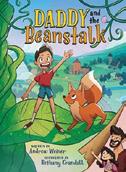
Weiner, Andrew | Illus. by Bethany Crandall Little, Brown Ink (96 pp.) | $12.99 Nov. 14, 2023 | 9780316592918
A father tells his daughter a most entertaining bedtime story. Estella is getting bouncy, so her father, Andy, spins a yarn to settle her down. She requests a “little less than medium scary” tale, so he launches into a personalized version of “Jack and the Beanstalk.” On an errand to buy groceries, young Andy encounters a suspicious, pompadour-sporting man with a bag of magic beans. He buys them, his mom throws them out the window, a beanstalk sprouts, and Andy climbs it to a town above the clouds. Curious and hungry, Andy seeks hot dogs instead of treasure and discovers that the giant is a child. The bedtime story doesn’t deviate dramatically from the source material (though it has a happier resolution); the rapport between father and daughter is the real draw here. In Estella’s imagination, cowboys and stagecoaches filled the streets when her father was young, and she tries to suss out how Daddy could possibly have been a mischievous kid. Crandall’s bubbly illustrations serve the plot well, shining in sequences where a comparatively tiny Andy navigates the giant child’s home. Andy, Estella, and their family are dark-haired and oliveskinned; the giant presents white and looks plucked from a midcentury sitcom; and the giant’s monstrous peers have black, brown, and blue skin. A cheerful, slightly snarky riff on a familiar fable. (Graphic fiction. 5-9)
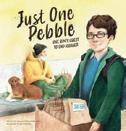
Wilson-Sirkovsky, Dianna | Illus. by Sara Casilda | Clavis (32 pp.) | $18.95 Sept. 5, 2023 | 9781605377674
The inspiring true story of an unusual 9-year-old who made a difference.
A succinct present-tense narrative channels young Braeden Mannering’s own unassuming, friendly voice. When the boy notices an older man sleeping on a sidewalk in his Delaware town, he wants to help. So he fills a paper bag with food and water and takes it to the surprised man. But then he wonders about “tomorrow”—days when unhoused people (and others) will go hungry. His mother mentions sources of assistance, like shelters, but Braeden wants to get personally involved. At a soup kitchen, he sees another boy, “just like me—only not as lucky.” Understanding that some students in his own school go lunchless sparks his anger at a patent unfairness. But he has an idea, and a couple of days later, the principal invites him to speak to the rest of the school about his new organization, Brae’s Brown Bags (3B), and he recruits funding on social media. His reach expands (as his mother puts it, throwing a pebble into the water causes ripples to spread), and backmatter explains that 3B has now distributed 15,000 bags containing healthy snacks, water, and lists of local resources. Softedge, realistic watercolors pair well with this earnest account. Spectacled Braeden and his mother present white; their community is diverse.
A stirring tale of community outreach. (brief bio of Braeden, more information on 3B, message from Braeden)
(Informational picture book. 6-10)
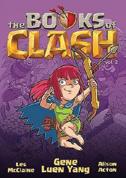
Yang, Gene Luen | Illus. by Les McClaine & Alison Acton | First Second (144 pp.) $17.99 paper | Nov. 7, 2023 9781250816283
Series: The Books of Clash, 2
Learning to be a Sneaker (not that kind but “one who sneaks”) helps a young archer save her town from a dazzling trickster and to let a broken friendship go in this video game–based spinoff following the 2023 series opener.
Red-haired, green-eyed archer Jane is crushed when her once-tight friend, Angie, takes up with new BFF Janice. But she’s even more upset when the two girls join new arrivals Kellen the Magically Handsome Archer and his flashy Ultra-Cucumbers to push her and her loyal Cucumbers teammates right out of Jazzypickleton. As it turns out, Kellen is actually in the pay of a rival kingdom, and it’s all part of an evil scheme to steal all of Jazzypickleton’s elixir and Royale trophies. Fortunately, Jane enters a secret cave, where she meets the mystic Order of Sneakers—and though she can’t get them to change their name to something less dorky (like Sneakists or even Sneaketeers), they do teach her the art of becoming invisible by mystically letting unnecessary attachments go. Jane returns just in time to save the town and send Kellen the Magically et cetera packing. Even non-gamers will find the typecast characters—ranging from green goblins and brown-skinned Hog Riders to blond armored warriors with
“big metal balls”—amusing and easily identifiable, and if the melees tend to be massively violent, no one is ever actually hurt.
More legendarious feats and fun. (Graphic fantasy. 10-15)
Yim, Natasha | Illus. by Jingting Wang Words & Pictures (48 pp.) | $14.99 Nov. 7, 2023 | 9780711287136
Series: Celebrations & Festivals
A Chinese family celebrates Lunar New Year. As the family prepares for the holiday, a child named Ling clearly elucidates the significance of the traditions they follow, from cleaning the house (“We sweep away bad luck and evil spirits”) to applying honey to the lips of the Kitchen God statue (“We want him to only say sweet things”). Then there’s shopping to do as well as cooking for the big New Year’s Eve family reunion dinner. Each page is full of details describing both what the family does and what each action or item represents, and Ling is on hand to explain it all. Yim recounts the famous legend of the New Year beast and offers descriptions of the New Year’s parade, kite flying, and the Lantern Festival at the end of the celebrations. Wang’s illustrations are cheerful and colorful, a flat graphic style with stylized, roundheaded figures (while some have black circle eyes, most have slanted lines for eyes). The body of the book feels robust enough, with plenty of solid narrated information, but readers will find even more information in the lengthy backmatter: the history of the holiday, information on the Chinese zodiac, New Year greetings in Mandarin and Cantonese, riddles, a recipe for dumplings, a craft, examples of how Lunar New Year is observed in other cultures, and a quiz.
A comprehensive and accessible introduction to an important Chinese holiday. (Picture book. 4-8)
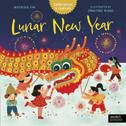
A cheerful, slightly snarky riff on a familiar fable.
DADDY AND THE BEANSTALK
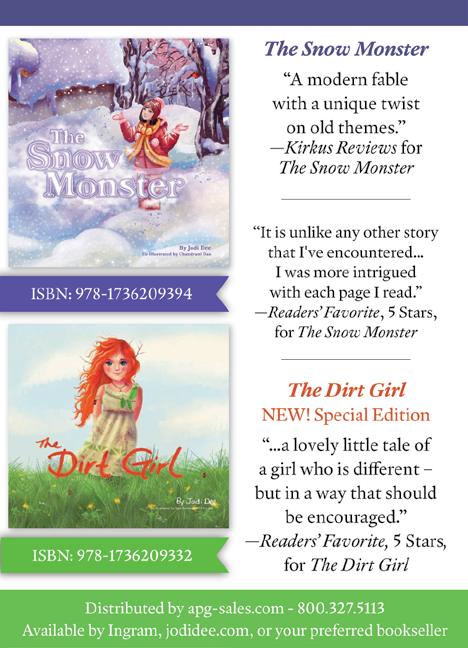



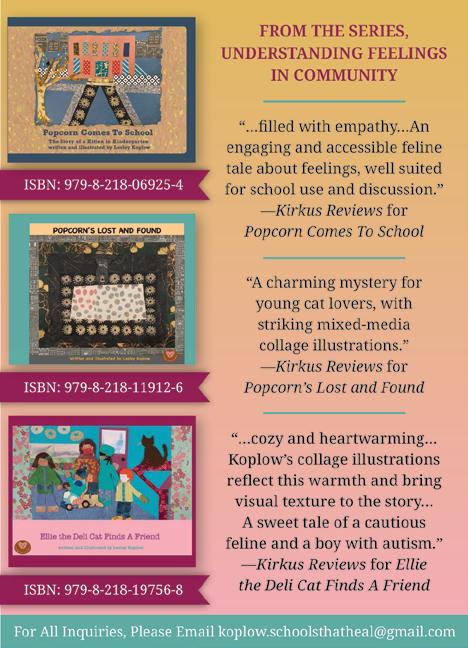
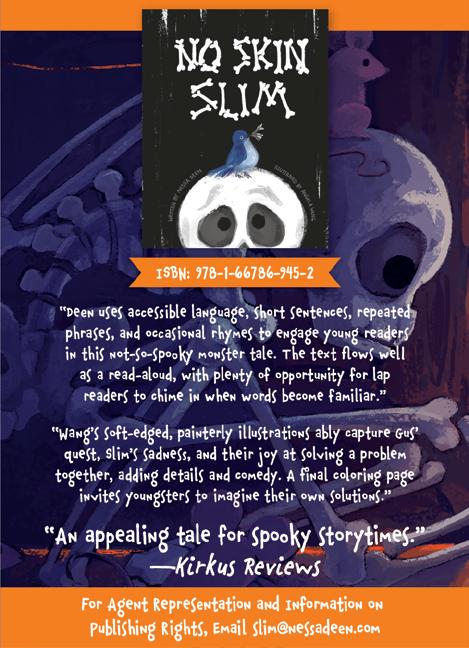


HISPANIC HERITAGE
Month is celebrated every year from Sept. 15 to Oct. 15. Latine literature for young people has long focused heavily on realistic refugee and immigrant stories. These are vital narratives, undoubtedly worthy of attention. But teens seeking works by Latine authors in other genres are in for a treat, with ever more works of speculative fiction offering broader representations.

Last Sunrise in Eterna by Amparo Ortiz (Page Street, March 28): Who could resist

this premise? A secret, elfinhabited island off the coast of Puerto Rico. A 17-year-old goth girl who has a very personal grudge against the elves that everyone else—entranced by their ensueño, or glamour—seems to love. A bargain: an annual retreat on the elves’ island where teens trade a week of their dreams for a taste of elven magic. It’s the last place Sevim Burgos wants to be, but when the elves catch her stealing elf corpses for a scientist’s research and then kidnap her mother, she has no
choice. This fantasy weaves Puerto Rican history and culture into its clever setup.
Infested by Angel Luis Colón (MTV Books/Simon & Schuster, July 25): In this truly creepy horror story that’s not for the faint of heart, rising senior Manny is unhappy that his family is moving from San Antonio to the Bronx. The white-passing Puerto Rican 17-year-old moves from a school where he didn’t think much about identity to a place that’s “very Puerto Rican” and where he’s self-conscious about his limited Spanish. Helping his stepdad get a controversial, mostly empty luxury condo building ready for new tenants proves surprisingly eventful. Manny befriends an elderly German exterminator and an AfroLatina girl who’s protesting neighborhood gentrification—then the nightmares begin, and the swarming roaches appear…

A Tall Dark Trouble by Vanessa Montalban (Zando Young Readers, Aug. 29): In this gripping paranormal tale told in dual timelines, 18-year-old Cuban American twins Lela and Delfi Sánchez live in 2016 Miami and deal with a curse affecting the women in their family: Anyone who falls in love with one of them is “doomed to slowly turn
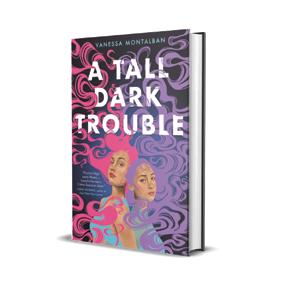
into a shadow version of themselves.” In 1980 Cuba, Anita de Armas, also 18, is reluctant to join la Orden de las Palomas, the shadowy cult led by her mother that helps keep dictator Castro in power. This story explores the intergenerational impact of political oppression, a fictional brujería legacy, and real diasporic religious practices that reflect Cuba’s ethnic diversity.
Before the Devil Knows You’re Here by Autumn Krause (Peachtree Teen, Oct. 3): Wisconsin Territory, 1836: A 17-year-old poet is left on her own. After the death of Mamá, who came from Mexico, it was just Catalina, her younger brother, Jose Luis, and their Pa, who’s white. They barely survived the harsh winter. Now, three exquisitely tempting red apples appear on their doorstep, but Pa crushes them, destroying these offerings from the Man of Sap: “Sowing seeds of sin, he grows apples of ash.” Catalina is unsure what to believe until Pa dies, and the Man of Sap kidnaps Jose Luis. This deliciously surreal story infused with echoes of folktales centers a grief-stricken and determined young hero who finds solace in poetry.

A gay teen heartthrob plays cupid for everyone but himself.
Perfect Highbury Academy senior Emmett Woodhouse has it all: good looks, generational wealth, kindness, and even an awareness of his privilege (sort of). He doesn’t have a boyfriend, but that’s only because he doesn’t “do relationships”—his mom died young, so it’s complicated. Instead, Emmett sets up other people. The current project: finding a suitable boyfriend for friend-with-benefits Harrison, who, inconveniently, caught feelings and ended their sexy “tutoring” sessions. Plan after plan
backfires—sometimes with a dramatic flurry of petals— but Emmett doesn’t give up at every “incorrect romantic moment.” He pivots. But can he shift to see the love that’s right in front of him, too? This adaptation of Jane Austen’s Emma sees the infa mous titular matchmaker effectively gender-swapped and yassified for contemporary audiences. Rosen aptly carries Austen’s torch, delivering comparably witty banter and keen social commentary. The overtly queer lens, however, exceeds expectations with its frank observations about modern queer dating culture.

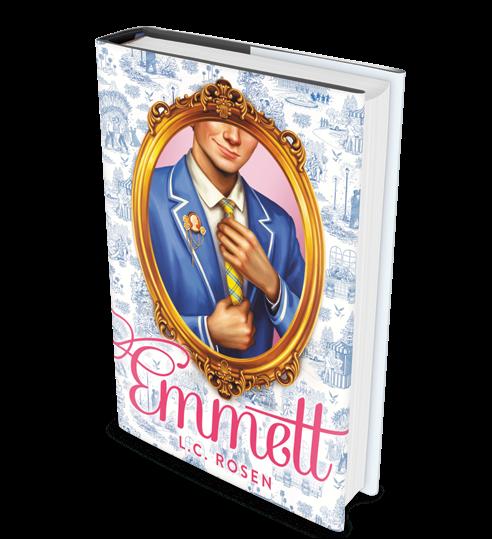
Emmett and bestie Taylor, who is trans, are both Jewish
and cued white; other bestie Miles is brown-skinned and donor-conceived, with moms who are white and Indian. The sheer number of auxiliary queer characters in this accepting setting,
from teen to college-aged to adult, creates a strong sense of both LGBTQ+ community and possibility. Delightfully queer and downright swoonworthy. (Romance. 14-18)
David Valdes$14.95 paper | Oct. 31, 2023
9781558859821
Mexican author Agustín presents a Mesoamerican mythology-based adventure in this title translated from the original 1992 Spanish-language edition. Seven friends, eager to escape Mexico City for the Independence Day holiday weekend, set off for a mountain escape in Tepoztlán. Yanira, Thor, Erika, Alaín, Homer, Indra, and Selene join Alaín’s family at their home, which Alaín returns to each weekend. They meet up with Pancho, Alaín’s local friend and the son of the town bruja, to explore the surrounding mountains and ruins. When Pancho leads the group into a mysterious cave, they encounter a hidden world of ancient gods and goddesses and a tradition yearning for revival. Pancho’s uncanny connection to the enigmatic place and its residents is slowly revealed. The novel is heavy on dialogue and light on scene setting, especially in the early portion, which makes it challenging for readers to get their bearings. Likewise, the pantheon of deities is introduced at a dizzying pace with little backstory; readers without prior knowledge of Toltec and Mexica gods may become discombobulated. At times, the translation is clunky, seemingly verbatim rather than based on meaning; for example, some jokes based on wordplay are not conveyed for English-language readers. In contrast to the central cast, Pancho is described as “dark complected” with “indigenous features.” Overall, the treatment of Indigenous people leans into “magical Indian” tropes, feeling out of step with contemporary perspectives.
Other, better modern Mesoamerican mythical retellings exist. (Historical adventure. 13-18)
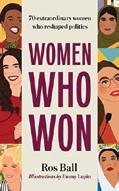
Ball, Ros | Illus. by Emmy Lupin Unbound (272 pp.) | $26.95 | Oct. 3, 2023
9781800182523
Introduces readers to women whose passion, perseverance, courage, and drive for learning are inspiring. These profiles—two-page summaries of the lives and achievements of 70 women in the political realm—present an extensive and impressive collection of global leaders, many less well-known, from the 19th century to contemporary times. The geographical representation is broad, including Samoa, Iran, Burundi, Nepal, and Latvia. The political ideological spectrum is represented as well, as demonstrated by the U.K.’s Margaret Thatcher and the U.S.’s Alexandria Ocasio-Cortez. Though positive achievements are highlighted, flaws or controversies are not elided: for example, in the coverage of aspects of Yulia Tymoshenko’s time as prime minister of Ukraine, Corazon Aquino’s presidency of the Philippines, and Portia Simpson-Miller’s tenure as prime minister of Jamaica. The subjects are humanized through the inclusion of personal information, like childhood experiences and details about identity, such as ethnicity, sexual orientation, disability, and more. Ball emphasizes the women’s struggles, shows how they coped with adversity, and describes their stunning successes, both in politics and other fields. Many accounts are riveting. Each entry is preceded by
a striking portrait and followed by a list of sources, most of them online encyclopedias and government or news websites. The graphics employ distinct and graceful outlines, with decorative but spare details and glowing, saturated colors. The portraits are attractively idealized, and the brief, efficient text is very readable. Many “firsts” but doubtless not “lasts” celebrate women’s political advances. (Nonfiction. 12-18)
Bromfield, Asha Ashanti | Wednesday Books (400 pp.) | $20.00 | Oct. 10, 2023 9781250846808
The politically charged story of two girlfriends in 1970s Jamaica. Despite wholly dissimilar home lives, Irie Rivers and Jillian Casey are music-loving best friends at an elite Jamaican high school. A controversial scholarship from the new progressive government is the only way brown-skinned Irie from the Kingston slums can afford her education. Lighter-skinned Jilly’s wealth and privilege come from her father’s position in the conservative opposition party. But as the girls graduate and struggle with growing political tensions that influence their diverging paths, they also experience the complications and tensions of budding desires. Irie’s father is a record shop owner at the center of reggae’s rise as a voice for a generation of poor Black radicals opposing the status quo that Jilly’s father upholds from the hills,

A richly intimate novel of rebellion, romance, and reggae.
SONGS OF IRIE
where affluence goes hand in hand with elitism and anti-Blackness. Irie is becoming an impressive reggae singer in her own right, taking Jilly on risky, exciting late-night dance hall excursions. While politically motivated gang violence takes the lives of many in Irie’s community, by the time sheltered Jilly discovers her own father’s degree of responsibility for the death and suffering, personal and political issues may prove to be too much for the teens’ relationship to overcome. Tragedy strikes in the buildup to a key election, as Jamaican history, provocative lyricism, and relatable characters form an effective foundation for this bittersweet queer love story.
A richly intimate novel of rebellion, romance, and reggae. (author’s note) (Historical fiction. 13-18)
Cameron, Sharon | Scholastic (416 pp.) $19.99 | Nov. 7, 2023 | 9781338813951
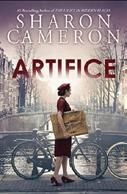
Art, lies, and Nazis.
In 1943, Isa de Smit survives the Nazi occupation of Amsterdam by keeping her head down. She hates the Nazis, who have taken some of her beloved friends, like Jewish artists Moshe and Hilde, and even executed her gay artist friend, Arondeus, for resisting. She knows that Truus, her former best friend, is in the Resistance, but 18-year-old Isa’s job is protecting both the Gallery De Smit, including the hidden Vermeer, and looking after her widower father, an impractical painter. When she
rebels by selling a fake Rembrandt to the Nazis for tax money, she’s drawn into action via an uneasy alliance with a young art-loving Nazi soldier named Michel Lange who’s craving escape, smuggling Jewish babies away before they’re sent to their deaths, and interacting with collaborators and Nazis to sell forged art. Part historical thriller, part portrait of a life played out against a turbulent backdrop, this engrossing read inserts fictional Isa into the true stories of two fascinating historical figures, all of which is detailed in the lengthy author’s note. The writing leans heavily on artistic descriptions, with painterly descriptions of both physical and emotional landscapes. Inattentive readers might sometimes get lost in the complex plotting, but this is a genuinely immersive, teen-centric answer to the historical thrillers that fill adult shelves and will satisfy plenty of readers.
Gripping. (Historical thriller. 12-18)
Christo, Alexandra | Feiwel & Friends (384 pp.) | $19.99 | Oct. 10, 2023 9781250897442
“She is a monster and a miracle.”
Atia is the last of the blue-hued, silver-haired Nefas monsters that feed on fear and nightmares. She lives an exiled, nomadic life disguised among mortals as one of them, while nursing a grudge against the Gods who killed her parents. As a Herald, Silas is a messenger for the
Gods and an escort for souls to the After. His role stems from a sentence for crimes committed in a prior life he cannot recall. When Atia violates the Gods’ laws while protecting a human scholar of magic and monsters, Silas must dutifully place the Gods’ curse upon her, quashing her powers and marking her kind for extinction. Yet the Nefas and the Herald choose to tentatively unite against the Gods, who have stolen from them both. With help from mortals and monsters alike, Atia and Silas travel across kingdoms to unmask the truths of the theocracy that governs Gods, monsters, and mortals. Atia’s fortitude and unwavering self-acceptance embolden her allies and perhaps will inspire readers as well. The narratorial duties shared between Atia and Silas are a natural exchange that showcases the mutual respect between the begrudging partners. While romance simmers throughout, it doesn’t come at the expense of Atia’s identity, making this narrative a standout in a spate of female-led mythological tales. Silas is cued white; some secondary characters have brown skin, and there is some queer representation.
An inspired take on monsters and myths. (Fantasy romance. 13-18)
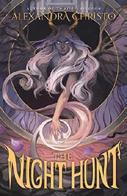
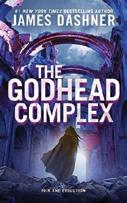
Dashner, James | Akashic Media Enterprises (272 pp.) | $22.95
Nov. 14, 2023 | 9798985955224
Series: The Maze Cutter, 2
The Flare virus continues to exact a heavy price, as multiple characters discover in this sequel to Maze Cutter (2022).
ARTIFICE
In a mosaic assemblage of short or multipart chapters that series readers will tolerate without frustration, Dashner sends groups (including no fewer than seven point-of-view characters) on various quests. As Ximena heads
A genuinely immersive, teen-centric answer to the thrillers that fill adult shelves.
north from her Baja village in hopes of finding her tardy mother, escapees from the island of immunes reach the coast and split up so that Sadina can get her ominously sick mom to Villa doctors. Meanwhile, Minho and others make their way to the opener’s titular ship and then on to Alaska to kill (or maybe join) the sacerdotal trio dubbed the Godhead. Meanwhile, said Godhead—Nicholas, Alexandra, and Mikhail—is down to two, as one is left as a decapitated head in a glass box, and the survivors wrestle with different flavors of creeping madness. Presaged by encounters with corpses and the odd stabbing, a horrific medical procedure, and a climactic battle with an army of diseased, zombielike Cranks, the unwieldy company is scattered and on the run: Stay tuned for more rousingly icky developments. The main cast largely reads white, with the exceptions of Ximena, Minho, and Frypan, a long-continuing character who has aged here into Old Man Frypan and was previously described as dark-skinned.
Crowded and pointillistic: still readable but best for confirmed fans. (Dystopian. 12-18)

Davis, Dana L. | Skyscape (304 pp.) | $28.99 Nov. 7, 2023 | 9781542038768
An 18-year-old Black farm girl is thrust into the spotlight after she’s mistaken for an A-list celebrity. As the eldest daughter of two Iowa farmers, high school graduate Red Morgan is the backbone of her family—a role she accepts without question. When Red’s younger sister uploads a TikTok video of Red singing, the clip goes viral. Social media users believe the video depicts Zay-Zay Waters, a Brooklyn-born pop star who bears a striking resemblance to Red. Red assumes the online attention will quickly die
down—until Zay-Zay visits the farm with a tempting business proposition: serve as Zay-Zay’s paid stand-in for a week, attending all her contractual obligations. Red happily accepts the offer; the money will help pay her family’s debts, and she’ll experience the glamour of Hollywood, including dates with Zay-Zay’s handsome musician boyfriend, Koi Kalawai‘a, who is Native Hawaiian. But as the days pass and the plan falls apart, Red must find the strength to push ahead for the sake of her family and her sense of self. Moving at a measured pace, Davis’ latest features an endearing, kindhearted heroine who learns to trust her inner voice. Red and Koi have palpable chemistry, and the pair genuinely connect on an emotional level that reflects their shared values. An amiable fish-out-of-water story that engagingly explores the pitfalls of fame and celebrates young love. (Fiction. 14-18)
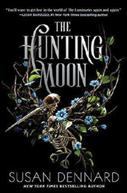
Dennard, Susan | Tor Teen (304 pp.) | $19.99 Nov. 7, 2023 | 9781250194145 Series: Luminaries, 2
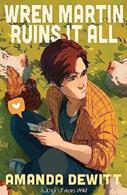
Readers return to the supernatural town of Hemlock Falls for more mysteries and monsters.
Winnie Wednesday’s story resumes soon after the events of The Luminaries (2022). Now a local celebrity, Winnie has the social approval she’s lacked for so long, but it doesn’t bring her any closer to solving new questions and mysteries.
She’s still the only one who knows about the Whisperer, while everyone else is after a werewolf, but she can at least talk to her friend Mario about tracking the elusive nightmare. Winnie’s grief over a death in the prior novel leads to some creatively morbid turns of phrase, while Jay continues to drink and vape through his anguish. Clues and memories from Winnie’s missing father give her more leads to chase. Her renewed social and school lives are heavily dominated by her simmering relationship with Jay and his blindingly gorgeous abs. The familiar rising mist takes its time to appear, but once it does, dangerous magic and monsters are back in the mix. Watching Winnie doubt her status as a Luminary and repeatedly refer to her life as a “clusterfuck” could make readers impatient to see her kick some butt already. Winnie and Jay are cued white. Too slow to ramp up: Only committed series fans may stick with this one. (Fantasy. 14-18)
DeWitt, Amanda | Peachtree Teen (400 pp.) $18.99 | Nov. 7, 2023 | 9781682635988
A newly instated student council president’s ambitious schemes to abolish a dance go awry when his archnemesis, the vice president, suggests a sponsorship with a trending social media app.
As student council president, Wren Martin intends to enact meaningful
Centers on an asexual protagonist in a lighthearted enemies-to-lovers relationship.
WREN MARTIN RUINS IT ALL
change before he graduates by eliminating the Dance. The Dance may be the biggest social event of the year, but it eats up over half the student council’s budget, which instead could be used to fix the hole in the auditorium’s stage. Unfortunately, not everyone on the student council agrees with Wren’s revolutionary plan. Even worse, smart, handsome, annoyingly perfect, and inexcusably tall Leo Reyes, the vice president, suggests an alternative to keep the Dance and their budget: a sponsorship with Buddy, an anonymous friendship social media app. This coming-ofage romantic comedy centers on an asexual protagonist in a lighthearted enemies-to-lovers relationship. Wren’s quirkiness and precise comedic timing strike a refreshing balance with his stubborn, jaded attitude, making him as endearing as he is flawed. Social media plays a significant role in the plot, showing both the benefits and drawbacks of online relationships with honesty. Grief and loss also feature as central themes of the story. While Wren reads white, the welldeveloped cast of secondary characters reflects some diversity, including Leo (cued Latine), Wren’s best friend and her family (implied Black), and the other two student council members (cued Chinese American). Sharp, lovable, and timely. (Romance. 14-18)
Elenbark, Bill | Walrus Publishing (340 pp.) | $15.95 paper | Oct. 24, 2023
9781736318232

In Dallastown, Pennsylvania, 16-year-olds Cyrus and Jeff play hardcore music together. Cyrus plays drums, while Jeff sings and plays guitar. They’re best friends who are going to need practice—and a name—before they can become the band they need to be to leave their small town behind and start playing shows. Jeff is the only person at their school who knows Cyrus is gay; he doesn’t know Cyrus is in love with him, though. At a house party, Cyrus becomes jealous when classmate Sharane flirts with Jeff. Then, Sharane’s multi-instrumentalist best friend, Mindy, invites herself to join their band. After cops break up the party, Jeff is so inebriated he has to spend the night at Cyrus’ to avoid facing his abusive stepfather. Following an ill-fated date with a closeted Cyrus, Mindy drives them to a concert in Philadelphia. An accident on their way home causes a rift, since Jeff is one indiscretion away from being sent to a Christian boarding school. He isn’t the only boy in Cyrus’ life, however— he’s been video chatting with a surfer he met on vacation in California. This emotionally intelligent story centers Cyrus’ coming to terms with himself and his queerness over the course of two years. The energetic plot is balanced by sweet and intimate moments
and buoyed by well-drawn characters, most of whom read white. Sharane has some Puerto Rican ancestry; Mindy is Korean American.
An engaging coming-of-age story with a raging romance and a punk finish. (Fiction. 14-18)


Fine, Kathleen | CamCat Books (304 pp.) $19.99 | Oct. 24, 2023 | 9780744306835
A 16-year-old experiences heartache before healing in her misguided quest for popularity. Self-conscious Emily wants to project a very different picture of her life to her peers, especially after her only friend calls out Debbie, Emily’s mother, for her alcoholism during an argument. Debbie can’t afford the nice clothes and house Emily would prefer, and because of her drinking, she’s emotionally unavailable. Eager for acceptance, Emily befriends pretty, outgoing Hannah after carefully observing her on social media. Despite her misgivings, Emily follows wherever Hannah leads. The prologue sets the scene for Emily, who’s preparing to share her story at a Narcotics Anonymous meeting in 2022. From there, the third-person narrative moves between Emily’s criminal trial in early 2019 and the spiral of events the previous year that led up to her being accused of manslaughter. The reveals come slowly, and readers will be on edge as Emily’s decisions lead her to become involved in and vulnerable to dangerous situations. It’s all painfully believable, especially when Emily blames herself for the deaths of the family for whom she was babysitting. When the truth is finally established, Emily is able to assess what happened and deal with what comes next. Her road is made bearable by the support of some caring characters, including Debbie, who, posttrial, makes her own turnaround. The epilogue brings the roller-coaster ride to
The energetic plot is balanced by sweet and intimate moments.
THE BEST HARDCORE BAND IN PAFor DeWitt’s debut, visit Kirkus online.
a satisfying conclusion. Most characters are cued white.
Gripping, tragic, but ultimately hopeful. (resources) (Fiction. 14-18)

Ford, Michael Thomas | Harper/ HarperCollins (416 pp.) | $19.99 | Sept. 5, 2023 | 9780063256354
Back home after a stint in the psychiatric ward, Jeff is ready to embrace being an openly gay high school student in this sequel to Suicide Notes (2008).
Jeff’s outlook on life and confidence in his identity transformed during his 45 days in the hospital after attempting suicide. But returning to school means facing his best friend, Allie, and the boy he kissed—who is also Allie’s boyfriend. Further complicating matters, fellow patient Rankin, whom Jeff had sex with during his hospital stay, is now his classmate. At a support group for LGBTQ+ teenagers, Jeff makes new friends, including Goldie, a gay boy with three dads in a triad, and Chrys, a queer Filipino person who uses they/them pronouns. Jeff navigates new crushes and relationships as he adjusts to regular life and gears up for being in the school musical. In the author’s note, Ford expresses how much has changed since Suicide Notes was published; while this story takes place immediately after the events of the first book, the setting is contemporary, allowing for an optimistic story as Jeff is mostly met with acceptance and discovers queer community. The queer joy throughout is the highlight, although slow pacing, particularly at the beginning, and a lack of rich character development make the book somewhat bland. Most primary characters, including Jeff, are cued white. Fans of the first book may be satisfied, but it likely won’t stand out to new readers. (mental health resources) (Fiction. 14-18)
Fox, Ruth | CamCat Books (368 pp.) | $19.99
Aug. 29, 2023 | 9780744309706
Series: The Ark Trilogy, 2
A teen guards her whale charges against new and deadlier threats in this follow-up to Under the Heavens (2022).
Kim Teng is no longer Caretaker for the Ark Project whales as they continue their journey on the spaceship Seiiki toward New Eden. Rather than abandon her duties, she continues communicating with the whales via her Link and updates her followers on Earth. Even with being accompanied by two Earth United scoutships and having withdrawn new Caretaker Yoshi, love interest Wren, and droid friend Adonai aboard, Kim fears an attack from the Crusaders, whom she previously supported, or the equally fanatical Adherants. When the Seiiki is sabotaged and crashes on New Eden, Kim races to get her friends into their new ocean home, struggling against limited resources, EU soldiers, and mysterious howling monsters lurking in the jungle. Compared to Kim’s solitary and more focused Caretaker experience, this journey, which includes a missing planet and multiple mind-bending mysteries, feels much broader, sometimes to the plot’s detriment. But the discussions of belief and the theme of change, as explored through the whales, the Seiiki’s computer, Adonai, and Kim herself, shine. Likewise, the religious overlay intersects thoughtfully with the element of colonialism. The romance is mature
and realistically developed, and Kim’s history and its effect on her previous relationship is likewise understandable. The cast is diverse in race and nationality.
A thoughtful, exhilarating, and shocking continuation. (author’s notes) (Science fiction. 13-18)

Harland, Richard | IFWG Publishing (242 pp.) | $16.99 paper | Nov. 6, 2023
9781922856296 | Series: The Ferren Trilogy, 1
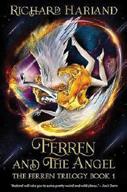
An angel and a teenage boy must work together to battle a soulless evil intent on destruction.
Fifteen-yearold Ferren has only known life as one of the People, a “primitive” population on a post-apocalyptic Earth, continually threatened by the war waged by the armies of Heaven. As part of their alliance with the militaristic Humens that Farren’s community in Australia lives in fear of, they are expected to surrender a member each year. First Ferren’s parents were taken by the Humens, and then his older sister was selected, leaving him with a lonely existence. Ferren isn’t close with any of the People; most think he is odd. After a particularly brutal fight between the Humens and angels, the People’s sworn enemies, Ferren stumbles upon Miriael, a wounded angel “in the feminine mode” whom he is fascinated by and restores to health. From Miriael, Ferren comes to
Filled with the author’s signature humor, this captivating romance will delight.
CHECK & MATE
a new and shocking understanding of the truth. The story’s strengths hinge on the originality of the premise and worldbuilding; other elements suffer from insufficient depth, however. Apart from unlikely allies Miriael and Farren, the characters are underdeveloped and fail to intrigue. The intended readership is unclear, as some aspects feel very simple and childlike, in stark contrast to the level of explicit violence. Human characters are minimally described and racially ambiguous; the “tribes” of People are distinguished by the colors of their “loincloths” and “breast-bands.” Creative and immersive but let down by inconsistencies. (map, timeline, angelology) (Science fiction. 14-18)
Kirkus Star
Hazelwood, Ali | Putnam (368 pp.) | $14.00 paper | Nov. 7, 2023 | 9780593619919
Two talented chess players challenge each other on and off the board in bestselling author Hazelwood’s YA debut.

Eighteen-yearold Mallory Greenleaf is no longer interested in chess, not since her hypercompetitive dad left—the game calls up painful memories. But she grudgingly agrees to play in a charity tournament as a favor to best friend Easton Peña. After she unexpectedly beats current world champion Nolan Sawyer, she’s offered a fellowship that will prepare her to play professionally. Even though Mallory doesn’t want to play anymore, she needs the money
that winning would provide; she’s delayed college to support her family, since her mother is chronically ill with rheumatoid arthritis and is unable to work regularly. The more time she spends with Nolan, the more Mallory comes to like and respect him—and the more time she spends playing chess, the more she remembers how much she loved it. But when she learns that Nolan has been keeping a big secret from her, she isn’t sure if she’ll be able to move past it to build a relationship with him. Filled with the author’s signature humor, well-developed characters, and realistic conflicts, plus the fully realized setting of competitive chess, this captivating romance will delight teen readers as well as Hazelwood’s adult fans. Mallory and Nolan are both cued white; there is some racial diversity among the supporting cast. Mallory and Easton are queer. Readers will devour this swoonworthy romance in one sitting. (author’s note) (Romance. 14-adult)
Kuehn, Stephanie | Scholastic (304 pp.) $12.99 paper | Oct. 31, 2023 9781338764581
Series: Murder, She Wrote, 2
The second installment of this mystery series that pays homage to sleuth Jessica Fletcher from Murder, She Wrote offers up another whodunit.
Bea’s investigative skills are put to the test when the columns she writes for the TrueMaine
website from her home in the fictional Maine town of Cabot Cove stir up more trouble for her. Though she’s frightened by the menacing note she’s received and the creepy security video of a masked figure placing a tarot card in her yard, her tenacious spirit prevails, motivating her to figure out the truth about the death of 15-yearold Eden, a student from prestigious Broadmoor Academy. Eden was close to Bea’s Broadmoor friends, Carlos and twins Leisl and Leif; in fact, she was Leisl’s boarding school roommate and Carlos’ girlfriend. When Bea’s widowed father’s work calls him away, and she must go stay at the remote home of her troubled uncle, Abe Fletcher, who’s a game warden, and his marine biologist wife, Callum, the stage is set for the carefully plotted, old-fashioned storyline to unfold. Appealingly blending classic mystery tropes with a smart, contemporary protagonist, this entry again features a multiethnic cast and solves the central mystery while leaving open some of the town’s longstanding secrets to fuel further sequels.

A fun and engaging mash-up of traditional and modern. (Mystery. 13-18)
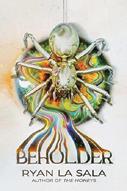
La Sala, Ryan | PUSH/Scholastic (352 pp.) $18.99 | Oct. 3, 2023 | 9781338745344
A teen with a dark past uses his unique talent to investigate a series of grim murders in New York City.
Athanasios Bakirtzis has avoided mirrors his whole life. He blames it on his paternal grandmother Yiayia’s superstitions, but the truth is much more unusual: Through mirrors, he can scry into the past as if rewinding through camera footage. After witnessing a brutal accident at a party, Athan is sought out by a winsome stranger named Dominik Rupasinghe, who convinces him to help investigate a string of murders that he believes are
Gritty and imaginative: modern noir that’ll leave you wary of your reflection.
BEHOLDER
all connected to the party. Athan is charmed and intrigued by Dom, who seems to know more about him than he should, but as they work together, it becomes clear that Dom may have secrets of his own. Their hunt takes them into the corrupt underbelly of art world high society, where Athan’s scrying becomes instrumental to their activities. But as he searches mirrors for clues, he finds that, as Yiayia warned, something sinister is looking back at him—something that may have been watching for a very long time. New York City, with all its grime and shine, is a fitting backdrop for this novel, which also weaves in elements of folklore and urban fantasy, giving the story a uniquely ominous and epic feel. Athan’s family’s Greek immigrant background informs his backstory and motivation.
Gritty and imaginative: modern noir that’ll leave you wary of your reflection. (content warning) (Horror. 14-18)
Leyva, Alcy | Green Writers Press
(210 pp.) | $17.95 paper | Oct. 17, 2023
9798987070741
A Black high school junior tries to escape the sea of chaos around him by finding a miracle in the ocean.
Maji is a young man growing up in the Melville Projects in the Bronx. He experiences frequent nightmares, and his synesthesia allows him to pick up on people’s emotional tenor in the form of colors. He tries to manage his emotions by carefully curating his sensory inputs. Maji’s biggest influences are a vlogger called Consciousness 2.0 and his English teacher, Mr. DaCosta. C2.0, as fans call him, seems to have everything Maji wants. Mr. DaCosta has been trying to keep Maji in school and consistently checks in on him. Maji
bonded with Mr. DaCosta through a personalized reading challenge, which led to thought-provoking conversations about Moby Dick. Maji’s fragile hold on his emotions starts to slip as social justice protests take place in his neighborhood, his parents’ marriage disintegrates, Mr. DaCosta announces he won’t be returning the following school year, and C2.0 seems to be closing his channel. Everything in Maji’s world revolves around not being seen as weak, and he decides to head out to the Atlantic: “Maji feels the call. The call of a miracle.” Moby Dick is a major focus: from character studies of Ahab and Ishmael to Maji’s insistence on keeping a copy of the book close. The juxtaposition of beauty and horror takes readers on an unpredictable ride full of twists and turns.
An imaginative look at teen mental health. (Fiction. 14-18)
MacGregor, Maya | Astra Young Readers
$17.99 | Oct. 31, 2023 | 9781662620171
A nonbinary, demisexual Maryland teenager comes to grips with the death of their mother and their own lifetime of struggle.
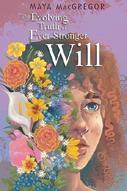
Will has just witnessed the death of their mother— if Frances was even worthy of that title; they haven’t called her Momma in a while. Will doesn’t feel bad that she died: Frances was terrible to them in life. Her death might mean a new start, but only if they can last the
next four months until they turn 18 without being sent back to foster care. All Will wants is to live on their own terms and be reunited with former foster parent Raz, who was the mom Will wishes they could have had—Frances returned to take them away before Raz could adopt them. Will knows that they can make do on their salary and that best friend Hannah and her older brother are here to support them throughout this journey and all its ups and downs. Written in the second person, this work puts readers in Will’s shoes, following their harrowing story in a deeply personal way. Will’s life is one of perseverance and possessing the desire to move forward despite extreme hardship. The story also highlights how youths who have been through traumatic experiences can ultimately thrive. Agender Will doesn’t know who their father is and is implied biracial; the supporting cast is diverse in race and sexual orientation and identity.
An intense and introspective exploration of trauma and survival. (author’s note) (Fiction. 15-18)
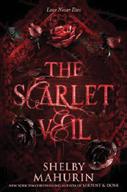
Mahurin, Shelby | HarperTeen (640 pp.) $21.99 | Sept. 26, 2023 | 9780063258754

In this vampire thriller set in Mahurin’s Serpent and Dove series, the darkness a young woman fears most is hungry for her blood.
Six months ago, Célie Tremblay helped kill a terrorizing sorceress after enduring unspeakable horrors
A colorful cast does much to enliven the vivid setting.
THE SCARLET VEIL
at her hands. Scarred but not broken, she took the Chasseurs’ sacred vow to protect her world from evil magic. She is hell-bent on proving herself, but even bronze-skinned Jean Luc, her captain and fiance, acts like she’s fragile, and she cannot abide being treated like a doll. Striking off on her own, pale, green-eyed Célie is plunged into a world she thought only existed in fairy tales and nightmares. With unlikely allies by her side, she must confront an evil so strong that it’s sickening even the realms beyond life. Mahurin crafts a heady, convoluted tale that could have been several hundred pages shorter. The story walks a thin line between serious gothic horror and spoof. Though the plot leans heavily into its clichés, it delivers some genuinely shocking twists, and it’s all too easy to become invested in Célie’s plight. She is a willful, headstrong, and eminently relatable narrator whose emotional outbursts, impulsivity, and keen wit frustrate and delight in equal measure. The romance elements feel neither forced nor entirely natural, but regardless, they make for compelling drama. A colorful cast of supporting characters does much to enliven the richly vivid setting.
A story to sink one’s teeth into. (Paranormal. 14-18)
Dawnbreaker
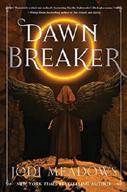
Meadows, Jodi | Holiday House (304 pp.)
$19.99 | Nov. 7, 2023 | 9780823448692
Series: Salvation Cycle, 2
in Caberwill in her new husband’s absence, battling the court’s mistrust of an ambitious foreigner with the aid of Nadine, her cunning—and cunningly kind—cousin. Nightrender is adrift, both in the world and within herself, her memories fractured and her next steps toward a better world unclear. All three point-of-view characters have sharpened and deepened in this new installment, their motivations compelling and their actions convincing. The mingling tensions of love wished for and love denied are a steady undercurrent as Meadows’ plot continues to unfurl in yet more intricate fashion. Mae, the brilliant and mischievous scientist from Ivasland, makes a reappearance, adding another level of complexity to the web of loyalties and desires. Surprises wait around every turn, but the resolution, when it arrives, feels satisfying and well earned. Readers will be left with a resounding sense of hope, both for characters they have come to love and for a troubled world that parallels our own. Most characters are cued white; Mae is described as having light-brown skin in the previous installment.
An effective conclusion to an actionpacked fantasy duology. (Fantasy. 14-18)

Meyer, Tracy Hewitt | BHC Press (288 pp.)
$23.99 | Oct. 10, 2023 | 9781643973555

Series: Blackthorn Peak, 1
After killing his abusive stepfather, a teenager goes on the lam, only to find a hideous fate awaiting him.
Hanne, Rune, and the Nightrender return for the second entry in the Salvation Cycle.
Things on the island of Salvation are darker now than ever before. King Rune is missing, absorbed by the Malice after the disastrous battle that concluded the previous installment. Queen Hanne must consolidate her tenuous power
Shaun, who has red hair that he plans to dye to avoid detection, couldn’t let his stepfather hurt his mother anymore. While fleeing to his maternal grandfather’s cabin, he meets Cass, a girl with her own familial horrors, on the grounds of a “lunatic asylum.” Despite Cass’ warnings, Shaun keeps returning, eventually getting caught up in the asylum’s heinous objectives, which will determine whether he is Redeemable. An intriguing mix of urgency and gray morality kickstarts this tale, engaging readers with questions about what lurks in the asylum and how trustworthy Shaun is as a narrator and a person. But once inside the asylum, the attempts to justify the goals and methods of its borderline-eugenicist workers and funders strip away the haunting atmosphere and expose the underdeveloped bones of the story. Persistent fatphobia, casual molestation, and an overreliance on uninformed fears of those with mental illness and developmental differences undermine any attempts to sympathize with the troubled teens. Repetition, exposition, and stop-andstart plot developments interrupt any remaining flow, causing the story to end with a thud rather than a bang. Shaun and Cass are cued white. A flashy start dragged down by unrealistic villainy and uneconomical writing. (Thriller. 14-18)
For more YA thrillers, visit Kirkus online.
Readers will be left with a resounding sense of hope, for characters they have come to love and a troubled world that parallels our own.
DAWNBREAKER
Monir, Alexandra | Disney-Hyperion (288 pp.) | $17.99 | Oct. 10, 2023
9781368048217

Series: The Queen’s Council, 3
Readers return to the world of Agrabah from the Disney film Aladdin, this time from the perspective of Princess Jasmine as she faces her biggest challenge yet.

Tragedy strikes Agrabah and the royal family when the sultan is found dead. Even as she grieves her father, Jasmine must worry about her succession to the throne and the growing concerns of a supernatural evil creeping into the kingdom. Though Jasmine feels unprepared to take her father’s place, she accepts her fate. When a challenger emerges and lays claim to the throne, Jasmine must fight to erase everyone’s doubts about a young woman’s ability to reign and take her rightful place as the first sultana. It is interesting to see Agrabah through the perspective of Jasmine and to encounter characters both familiar and new. Monir builds on the Arabian-inspired world by giving the new characters Arabic names and including nuanced cultural elements. Fighting against longheld traditions and forging a place for women to be equals alongside men are timely themes, and Monir shows Jasmine’s resolve to be a just and suitable leader despite the frightening situations she often encounters. There is a lot of compelling buildup surrounding the mysterious and supernatural elements haunting Jasmine and her world, but the eventual reveal feels confusing and haphazardly patched together. An uneven spin-off that will likely appeal to fans of the original franchise. (Fantasy. 12-16)
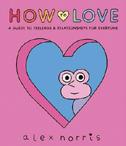
Norris, Alex | Walker US/Candlewick (224 pp.) | $17.99 | Nov. 14, 2023
9781536217889
An illustrated guide to love, feelings, and relationships that originally launched as a WEBTOON comic.
Written from a much-needed queer perspective that invites in readers of all genders and orientations, the book features chapters that each present a different question about relationships: for example, “How do I know how fast or slow to take things?” and “Can I be friends with my ex?” The focus isn’t on providing perfectly correct answers but on prompting readers to think about what the answer is for them. The importance of respecting one’s own values while also engaging in honest, introspective self-questioning is a pervasive theme. The book celebrates individual differences, acknowledges different types of loneliness, challenges assumptions around gender and sexuality, and encourages unique expressions of love. Open and clear communication in friendships as well as romantic relationships is also emphasized. In fact, Norris highlights the value of friendship by criticizing phrases like “more than friends,” which implies that friendship is less significant than romance, “despite good friendships being just as likely to be intense, enjoyable, and long-lasting.” Readers are also reminded of the importance of self-love and warned
about exciting but ultimately toxic relationships. At times hilarious and at others just embarrassingly accurate, the book feels like a warm hug. The unshaded, candy-colored, geometric illustrations are simple, yet they still manage to celebrate diversity and inclusion. Refreshing, funny, and comforting. (Graphic nonfiction. 13-18)

Painter, Lynn | Simon & Schuster (432 pp.) $19.99 | Nov. 28, 2023 | 9781665921237
Unlikely friends fight their growing feelings for each other while placing bets on other people’s love lives. Bailey met Charlie while flying from Alaska, where she grew up, to Nebraska, where she and her mom would be living after her parents’ divorce. Although they briefly bonded over their parents’ divorces, Charlie’s cynicism grated on the rule-following Bailey, and she was thankful to part ways with him. Three years later, to Bailey’s dismay, she runs into Charlie when they both land jobs at Planet Funnn, a mega-hotel that’s “like a giant landlocked cruise ship.” This time around, Bailey and Charlie begin to get along better. To entertain themselves during their long shifts, they observe and make bets about the hotel guests. But they risk taking it too far when they bet on whether their co-worker Theo will end up with Nekesa, Bailey’s best friend, who’s in “a perfect relationship with the perfect guy.” The book explores
Celebrates individual differences and encourages unique expressions of love.
Bailey’s conflicted feelings toward her mom’s new relationship with Scott (who doesn’t “do anything wrong” but whose presence changes “the vibe” at home), but it does so in a way that diminishes a primary source of conflict. Bailey’s and Charlie’s feelings become even more complicated when Charlie helps Bailey with a fakedating scheme intended to scare Scott off. Some of the banter between the leads, who are coded white, feels more aggressive than playful, detracting from their intimacy, and the circuitous plot may fail to sustain readers’ interest.
Disappointing. (Romance. 14-18)
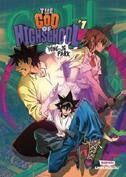
Park, Yongje | WEBTOON Unscrolled (240 pp.) | $24.99 | Oct. 17, 2023
9781990778759
An exciting first volume in a new fight competition series.
There’s something eerie coming—a dangerous bill is going to be passed, and a tremendous explosion serves as a warning to those who dare stand against it. But Mori Jin isn’t particularly worried about any of this: He’s a 17-year-old taekwondo fighter trained by his grandfather, and he’s never lost a single fight. As a result, he is invited to participate in a mysterious secret competition called the God of High School. At first, he isn’t interested, but after losing his first fight to the person trying to recruit him, he’s motivated to give it a try. Other participants are
in it for different reasons: Daewi Han wants to help his friend with hospital bills, and Mira Yoo, who’s always dated boys who are strong, might just show the world she’s the strongest of them all. As the three grow closer and discover a common enemy, the stakes of the politics behind the competition become more deadly as well. With a great dose of humor and a likable main cast, this action-packed competition-style manhwa will keep readers riveted. The art is colorful, and the fighting scenes are detailed and smoothly executed. The story takes place in South Korea, and the main characters are Korean.
An invigorating read. (Graphic adventure. 13-18)
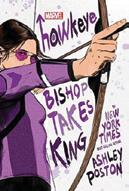
Poston, Ashley | Marvel Press (368 pp.)
$17.99 | Oct. 3, 2023 | 9781368078993
Series: Women of Marvel, 1
Kate Bishop must save herself before she can save the world.
Kate Bishop is Hawkeye, a New York City superhero who claims to be the best archer in the world. When E.L. Albright, the enigmatic author of a well-loved children’s book series, is killed at a bookstore’s author event, Kate springs into action, ready to find the killer. Kate quickly learns that a villainous mob boss named Kingpin is searching for rare copies of Albright’s books. Kate must team up with Milo, the author’s grandson, to recover the volumes before
the secrets held within them are used for evil; she also enlists the help of her best friend and fellow superhero, America Chavez. What should be a simple mission for one of the world’s greatest heroes becomes complicated when Kate herself begins to feel the effects of the mysterious books’ power. In a race against time, she confronts her greatest nightmare while attempting to save the world. Kate is a snarky yet lovable protagonist whose witty comebacks provide comic relief to the dark and twisted plotline. While the characters feel underdeveloped at times, the appeal of the Marvel universe pervades this action-packed volume, and fans will enjoy this refreshing take that showcases Kate Bishop as Hawkeye. Racial diversity is named in the supporting cast; Kate reads white. A clever murder mystery with all the charm one expects from the Marvel universe. (Mystery. 12-16)
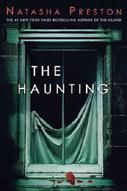
Preston, Natasha | Delacorte (384 pp.) | $12.99 paper | Sept. 26, 2023 9780593481516
Penny’s sleepy little farming town hasn’t been the same since it was terrorized by a masked killer who claimed five teenage victims last Halloween. That killer just happened to be the father of her ex-boyfriend, Nash, and afterward, Penny’s parents forced her to break up with Nash. This October, everyone is on edge. Nash and his sister, Grace, are local outcasts, and when Penny finds another classmate’s dead body while shopping for Halloween costumes in a party supply store, the proverbial pitchforks come out. As the body count rises, the townspeople quickly blame Nash and Grace. To take the heat off Nash, for whom Penny still has feelings, the two team up to try to figure out the >>>
This action-packed manhwa will keep readers riveted.
THE GOD OF HIGH SCHOOL





For more books you’ll want to share with friends, visit Kirkus online.


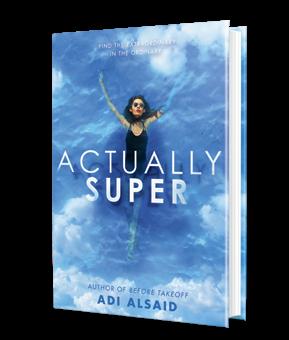 By
By
New YA novels by J. Elle, Kayvion Lewis, and Ali Hazelwood invite readers with irresistible settings.


A CONTEMPORARY cotillion determines your station in a sumptuous world of dark magic. An anonymous agency offers globe-trotting thieves a once-in-a-lifetime prize. And the World Chess Federation delivers a former prodigy first love and a second chance at success.
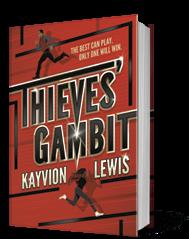
This fall, three authors at the top of their game invite YA readers to explore elite worlds, where the stakes range from wish fulfillment to mortal peril.
“I wanted to create a place that
BY MEGAN LABRISEyou just didn’t want to leave,” says bestselling author J. Elle (Wings of Ebony, Ashes of Gold) of her new book, House of Marionne (Razorbill/Penguin, Aug. 19). Set in a vivid fantasy world ruled by a magical aristocracy, it is the first volume in a planned trilogy. “My favorite stories are the ones where, when I finish, I have a book hangover, and all I want to do is experience reading it for the first time again. That is the mark of the fiction I aspire to write.”
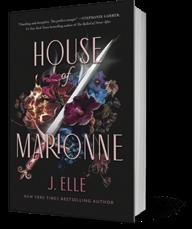
Seventeen-year-old Raquell Janae Marionne did not grow up in a rarified world. Possessed of a power
she doesn’t know how to define or control, Quell and her mother have been on the run for almost as long as she can remember. When a chance encounter with a magical assassin tears their latest home asunder, Quell seeks refuge with her estranged grandmother, a VIP in a shadow realm of sorcerers. Grandmother is headmistress of the House of Marionne, a boarding school for the magical elite, and enrollment is a condition of Quell’s refuge. To survive, she must learn to live by the rules—and fast.
“Each of us has our own creative gifts,” Elle says. “And I think each of us sometimes questions where those gifts, or the things we value about ourselves, fit in with the world.
“Quell has an amazing power that needs to be fostered, nourished, and sharpened, so she can use it the way she wants, like a tool,” she says. “In book one, you see the [prevailing culture] approving of a very narrow way of going about that. They say, ‘This is the way the majority does it.’ Ultimately, it’s up to Quell to say, ‘I’m going a different way.’”
KAYVION
Seventeen-year-old Rosalyn Quest is well aware that her place in the world is at her mother’s side—which means pretty much anywhere in the world, depending on the next job. Ross and her mother are members of a Bahamian family of elite thieves, acquiring whatever priceless objects
their cosmopolitan clients desire, in Kayvion Lewis’ action-packed Thieves’ Gambit (Nancy Paulsen Books, Sept. 26), the first book in a high-flying heist thriller duology.

“I grew up daydreaming about being an adventurer,” says Lewis, a former youth services librarian who made her authorial debut with The Half-Class (2021). (She’ll soon add executive producer to her achievements: Motion picture rights for Thieves’ Gambit sold to Lionsgate in 2022.) “When I started writing Thieves’ Gambit, I thought, I’m going all in; I’m going over the top. That’s how we ended up with this globe-spanning adventure, this outrageous underground society of thieves, and their criminal network. Ross’ adventures are all the things I wish would happen to me in real life.”
All Ross wants is a normal teen life: to attend an intensive summer gymnastics program, maybe make some friends her age, consider colleges. But when a last-minute heist goes awry, and her mother is captured, Ross is forced to accept an invitation to compete in the Thieves’ Gambit to try to save her. This mysterious competition, which pits the world’s best teen thieves against one another in a series of seemingly impossible challenges, promises the granting of one wish—any wish—to its winner.
“The high school years are a time of deciding who you want to be,” Lewis says. “Having characters in
a high-stakes story who are at that point in their lives creates a unique [juxtaposition], in terms of their motivations and concerns. Even an international thief will wonder, Why don’t I have any friends? Or, Am I the only one who hasn’t done this thing yet? Sometimes you think you know everything, and sometimes you feel like you know nothing.”
ALI HAZELWOOD
Around 2018, neuroscientist and novelist Ali Hazelwood was wondering how to write a romance set in the world of professional chess. She realized the characters in a world that prizes prodigiousness might be younger than her usual protagonists.

“I find it fascinating that professional chess players train like Olympic athletes from an early age,” says Hazelwood, the bestselling author of The Love Hypothesis (2021) and Love, Theoretically (2023). “Chess is such a cerebral game; you’re trying to predict what the other person is going to do. You’re trying to read their mind, trying to understand their strategies—but you’re also showing a lot of yourself. And all of this has to be done with the best poker face. I love the idea of a relationship developing from that.”
The last thing 18-year-old former prodigy Mallory Greenleaf has time for, at the beginning of Check & Mate (Putnam, Nov. 7), is a relationship. She doesn’t have time for chess (and hasn’t played in years). She doesn’t
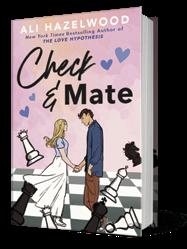
have time for college (and forfeited a scholarship). Instead, she’s working as a mechanic to help support her mother and sisters, now that her father is gone.
“The book starts with Mallory having made a lot of sacrifices,” Hazelwood says admiringly. “The things that I feel would break me don’t break her.”
As a parting favor to her college-bound best friend, Mal begrudgingly agrees to participate in a one-off charity tournament. When she meets—and beats—current world champion Nolan Sawyer, all eyes are on Mal. Suddenly, she’s playing pro chess on the sly, navigating a heavily male-dominated world with the help of a new mentor, and exploring true love, all while attempting to stay true to herself.
“It was very important for me to write this fundamentally happy story about someone who’s not that happy at the beginning of the book,” says Hazelwood, who believes Check & Mate is her best book yet. “I really wanted to have positive representation of a character who’s been going through it and making a lot of mistakes—because she does make several mistakes—but by the end, she understands herself and the people around her better. She becomes a better person, ready to tackle the rest of her life.”
Editor at large Megan Labrise is the host of the Fully Booked podcast. From left to right: J. Elle, Kayvion Lewis, Ali Hazelwoodkiller’s identity. But when it becomes apparent that the killer is targeting Penny, their mission becomes a matter of life or death. Suspenseful chases and mysterious sightings interspersed with an occasional dead body keep the pacing fast and consistent. The setting is reminiscent of Scream’s Woodsboro, and Preston makes good use of spooky Halloween decorations. The character development is light, and readers will quickly become frustrated with the many poor choices Penny makes. The abrupt ending may irritate some, but slasher fans will nevertheless enjoy trying to figure out who the menacing person hiding behind a mask is. Penny and Nash are cued white; Penny’s friends include some racial and religious diversity.
A flawed but entertaining Halloween thriller. (Thriller. 12-18)
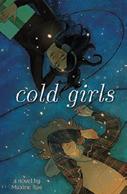
Rae, Maxine | Flux (352 pp.) | $14.99 paper Aug. 22, 2023 | 9781635830897
A heart-wrenching story of friendship, grief, and identity.
Eighteenyear-old Rory Quinn-Morelli is grieving the death of her best friend, Liv Martinez; she’s been forced into therapy by her mother, who’s “on a mission to fix” Rory after the “Xanax Incident.” Faculty kid Rory, who reads white, met Liv when she showed up late to Telsey College Prep’s fifth-period choir in a bathrobe. Rory was instantly transfixed, doing a deep dive on Insta and finding Liv’s profile, “Bio: she/her ** filipinx ** irritated ” (Liv’s mom is cued white). Choir brings them together, music bonds them—from Bowie to Amy Winehouse, they create “endless, chaotic” playlists for each other. Liv draws Rory into her friend group and away from Rory’s gay friend, Stoff.
Rory and Liv spend the next year going to parties, seeing bands, and hanging out. When Liv starts hooking up with classmate Milo, Rory experiences a telltale “tug” in her stomach. It doesn’t make things weird, but it does awaken Rory. Until, that is, the “Worst Night,” when a car crash ends Liv’s life, Rory at her side. The heart of Liv and Rory’s story, the painstaking confrontation of loss, and the unconditional embrace of a parent’s love are deftly threaded through the pristine prose. However, it is Rory’s teetering between then and now that tethers all this unbearable beauty as she tackles the exquisiteness of healing, acceptance, and love.
A vibrant and poignant must-read. (Fiction. 14-18)

Rashaan, Shakir | Entangled Teen (400 pp.) | $12.99 paper | Aug. 29, 2023 9781649373342
A teen discovers his link to a mystical West African island nation—and learns that he must use his newly discovered superpowers to fight for it.
When Yasir Salah’s grandmother sends him from Atlanta to live with his uncle in a small Georgia town for reasons that are puzzlingly left unspecified, he must deal with his growing anger issues as well as mysterious, malicious forces that are hunting him. At school, he encounters violent bullies but also meets the beautiful Zahra, with whom he immediately shares an intense and magical
connection. Yasir’s physical strength and senses start growing beyond normal human abilities, and he discovers more about his past and connection to the Island Republic of Kindara, an ancient society coursing with spiritual and supernatural energy. He must try to manage his abilities, deal with his tormentors, and maintain his new relationship with Zahra—all while acclimating to his newfound identity as a magical (and hunted) protector of his sacred homeland. While fans of superhero adventures will enjoy the story’s worldbuilding and the hearty action sequences, the book is let down by lengthy exposition that often impedes the story’s forward momentum. Key characters are Black, and the supporting cast is ethnically diverse; the contemporary, colloquial language is refreshing and inviting. A promising adventure infused with African-inspired supernatural lore that gets bogged down in excessive detail. (Paranormal. 14-18)
Sanderson, Brandon | Delacorte (432 pp.) $21.99 | Nov. 21, 2023 | 9780593309711
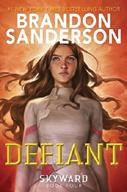
Series: Skyward, 4
Hotshot pilot Spensa Nightshade completes her apotheosis in this series closer, as human rebels and their alien allies mount a climactic assault on the galactic empire.
Having progressed from eating rats to being a cytonic superwarrior, Spensa is bonded by ties of loyalty and lust to former Skyward Flight leader,
Tackles the exquisiteness of healing, acceptance, and love.
COLD GIRLS
now Defiant Defense Force admiral, Jorgen—and also to a traumatized, planet-killing, interdimensional delver named Chet. Spensa would be well on her way to full-blown pacifism if the Superiority’s war of extermination against humans were not ramping up to a newly active phase. Nothing for it but a massive space battle, complete with dogfights, huge explosions, feints, betrayals, and tragic sacrifices… not to mention a swarm of ravenous, vacuum-dwelling vastworms eager to chow down on both sides. Though slowed by Spensa’s and others’ wrestling with conflicting impulses and weighing moral imperatives, the plot features more than enough large- and small-scale action set pieces to please space-opera fans. Better yet, the deliciously expansive cast includes not only humans and AIs but a broad array of aliens and semi-aliens from blue-skinned humanoids and a furry, haiku-reciting, fox-gerbil samurai with a (wait for it) laser sword to sentient crystals and empathic slugs. “The more different types of people we got into the flight, the stronger it would be,” Spensa reflects, and indeed, it’s collective action that proves decisive in the end.
A grand finale, presented with a touch light enough to buoy all the selfactualization. Also: giant space worms! (Science fiction. 12-15)
Schrieve, Hal | Triangle Square Books for Young Readers (320 pp.) | $18.95

Oct. 3, 2023 | 9781644213018
Trans teens must save the LGBTQ+ youth center—and the world.
Orsino, a rural trans boy, is plagued by visions of aliens, time travel, and destruction. With James, a goth trans boy, he finds that he can share these visions—and even create new realities

when they touch. James falls for Orsino but realizes he still has feelings for Ian, a gender-questioning queer Latine punk (Orsino and James are white; James is Jewish). Meanwhile, the boys and their friends attempt to organize a punk music fundraising show. The story combines a familiar tale of youth activism with epic, allegorical science fiction, but the two elements are like oil and water, mingling without fully merging into a satisfying whole. There is a darkness to both parts: The characters experience challenging lives rife with abuse and bullying, adults with terrible boundaries, and the everyday pain of adolescence; meanwhile, aliens offer horrific visions of destruction and existential threats. The end does provide a glimmer of hope, however. The writing can be stiff, but there are moments of evocative description and emotional poignancy. A slur for people with mental disabilities appears several times, used unnecessarily by an abusive dad and adding to the raw tone. Taken as a whole, the book is original and intriguing despite not wholly achieving its ambitious goals.
A mixed bag with some gems for adventurous readers to find. (Fantasy. 14-18)

Son, Jeho | Illus. by Kwangsu Lee WEBTOON Unscrolled (288 pp.)
$24.99 | $21.99 paper | Oct. 31, 2023
9781998854011
9781990778940 paper
a white jacket, pale gray shirt and trousers, and white jabot—copying “the most common attire” he sees on people in the streets—Rai follows Shinwu, a formulaic delinquent with a heart of gold, to Ye Ran High School, where he discovers his devoted servant, Frankenstein, in charge. Completely unfamiliar with the modern Korean language and culture, Rai enrolls at Ye Ran to help with the adjustment. Not long after Rai awakens, a pair of violent henchmen with supernatural powers arrive in the area under orders from “the higher-ups” to find Rai’s coffin. With little planning or fleshed-out motivations, the henchmen begin targeting humans, focusing on Rai’s new classmates. This opening volume covers the first set of entries of the original online series. The central characters have pale, peach-toned skin. Yuna, the only named girl in the story, functions as a potential love interest and a rescuable plot device. Rai adheres to the trope of a stoic, superpowered protagonist, revealing little more than glimpses of a personality. Occasional moments of humor add appeal, and while there is high-stakes action, its suspense is blunted by the thin worldbuilding.
As bland and dated as the protagonist. (Graphic adventure. 14-18)
Sutanto, Jesse Q. | Delacorte (320 pp.) $18.99 | Nov. 28, 2023 9780593434017
After 820 years, a vampire awakens from slumber in this uncredited translation of a South Korean WEBTOON manhwa.
Cadis Etrama
Di Raizel
emerges from his coffin in an empty building, with no knowledge of his whereabouts or how long he’s slept. Attempting to blend in by wearing
Nothing can dim the light of the “Fabulous and Marvelous Kiki Siregar.”
Nothing except maybe the atmosphere at the super-conservative Xingfa School, which her parents have made her transfer to from more the progressive Mingyang High, where she “wasn’t even considered one of the more outspoken pupils.” Seventeen-year-old
Jakarta resident Kiki is optimistic that she can shine at her new school if she stays true to herself. But in just the first few days at Xingfa, she’s patronized by Jonas Arifin, a popular, wealthy, and misogynistic classmate; goes viral on TikTok as #CrazyKiki in an embarrassing video in which she’s wearing her school uniform; and is admonished by the principal after standing up for herself against golden boy Jonas. Fortunately, Kiki finds solace in online gaming, most notably in Warfront Heroes, which she plays under the screen name Dudebro10 to avoid harassment from male gamers. She confides in Sourdawg, her “adorkable” online friend, about her school troubles—but later realizes that he’s actually her kind classmate Liam Ng, whom she does not want to lose as a friend (or possibly something more). From Kiki’s irrepressible self-confidence to Jonas’ seemingly delusional attraction to her, the story is a parody of gender disparities in a school setting that occasionally leans more into caricature. Readers may find Kiki to be a refreshing lead and the hijinks entertaining, although the teenspeak feels artificial at times. The cast is mainly Chinese Indonesian. Rollicking, if somewhat over-the-top, fun. (Fiction. 12-17)
Taylor, Jordyn | Delacorte (320 pp.) | $18.99 Nov. 7, 2023 | 9780593563649
Young women at a New York prep school fight back against a misogynist game—until a popular lacrosse player goes missing after prom night.
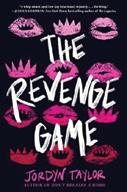
Alyson Benowitz is a hopeless romantic who’s just experienced a humiliating rejection from a summer co-worker. So the new school year at her recently turned co-ed prep school in the Adirondacks will be a great opportunity to start over in her search for love. Alyson gets paired
with athletic, well-liked Brenton Riggs Jr. for a class project, and soon they start to date. However, Alyson, best friend Jess Quigley, and other girls at the school learn about the King’s Cup, a secret contest where boys earn points for different sexual encounters with young women on campus. The girls unite to create a Queen’s Cup, their effort to take back power by rejecting the boys in public as a form of revenge. As Alyson helps her friends with the Queen’s Cup, she wonders if Riggs is also involved in the sexist scheme and whether he’s been using her all along. The novel opens with a news article covering Riggs’ disappearance before going back seven months to September to trace the unfolding story. Interspersed throughout are additional news articles, along with transcripts, press conferences, and social media posts. A predictable ending mars this otherwise engaging page-turner in which women go above and beyond to support one another. Major characters read white. An empowering and timely feminist mystery. (Mystery. 14-18)
Valdes, David | HarperTeen (256 pp.) $19.99 | Nov. 7, 2023 | 9780063288881
Sparks fly alongside holiday cheer at a seasonal mall gig.
Winter break marks 18-year-old Cam Ceballos’ first trip home to Massachusetts’ Pioneer Valley since leaving for NYU. Single, gay, and desperate for a little extra “fa-la-la,” the experimental-theater major takes
on his newest role: Oopsy the Elf at Santaland. Management’s reality show–esque Elfmas competition pits the employees against each other for Top Elf recognition and $5,000. Cam’s biggest rival is Marco (aka Jingle the Elf), whose jolliness—and puppy-dog cuteness—is unparalleled. Then there’s Cam’s ex, Leroy, a beautiful, confusing distraction. Dating prospects aside, Cam has another dilemma: He’s failing his theater classes (and risking his scholarship). Worse, he hasn’t found a way to tell his dad yet—or decide if he’s even going back to NYU at all. While this romp has many delightful queer holiday rom-com tropes, its winning resolution balances a nostalgic homecoming with the promise of self-actualization. Though the narrative is fittingly “Cameron-focused,” it also makes some keen observations about how people aren’t always what they seem. Cam is Cuban American, and Marco is Filipino. The supporting cast features a few Black characters and someone who uses they/them pronouns. Cam’s cishet dad is a single parent through surrogacy, a rare and welcome depiction.
An elf-ing good time. (Romance. 13-adult)
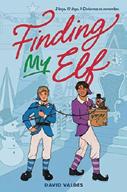

Walden, Tillie | Image Comics (296 pp.) | $14.99 paper | Oct. 10, 2023 9781534325197 | Series: Clementine, 2
Clem, her girlfriend, Ricca, and their friend Olivia are doing their best to survive the plague of killer zombies in this second series entry.
Fresh off a plane crash, the girls figure themselves to be in Canada and head toward the coast in search of somewhere livable. Beset by frequent hordes of zombies (Clementine is a spin-off character from Robert Kirkman’s The Walking Dead comic book series), these teens rarely catch a break. Clem’s prosthetic leg bothers her, Ol’s lost in grief, Ric’s vision is fading, and all three are constantly hungry and grimy. Haunting, expressive art renders both gruesome horror and relatable vulnerability. A few sweet moments, like the girls’ triple bat mitzvah, provide some precarious comfort. While the trio briefly finds support in a small island community with Mi’kmaq and Taiwanese survivors, its leader’s grim obsession with cataloging the endless dead overshadows their relief, as does the terror-filled revelation that Ol is pregnant. Plus, of course, the walkers find the trio again and kill almost everyone they know in front of them in a frenzy of action panels expertly evoking shards of broken glass. Weeks later, they find another tentative peace as the ragtag crew aboard a ship, with Clem and Ric tiptoeing toward physical intimacy. But it won’t be easy to continue in this unforgiving world. Clem has medium-toned skin; her companions read white.
Thrillingly escapist in a disturbing-as-hell kind of way. (artists’ tools, artist bio, letter from the editor)
(Graphic horror. 14-18)
Walker, Morganne | Rockport Publishers (224 pp.) | $13.99 paper | Oct. 3, 2023 9780760382554 | Series: Soul Beat, 1
A young boxer takes on the Devil.
Dante Alfonse is a 24-year-old Black professional boxer and a hero in his community, someone who never steps down from a fight or just stands by and watches injustices unfold. In fact, there is nothing passive about this hero, who sports a distinctive ’70s style with wide lapels, flares, an Afro, and sideburns. With his kindness, he could be the last hope for humankind “to redeem themselves, and destroy the darkness once and for all” as they confront the Devil himself. When Ben Smith, Dante’s 73-year-old grave keeper friend, tells him about a spiritual relic (which might be part of the Holy Grail) and relates his decadeslong beef with the Devil, Dante finds it all hard to believe, from his friend’s dark past to the glimpse of hell he claims to have witnessed. But when the Devil first comes for Ben and then targets Dante, Dante witnesses the power of the relic—and he’s ready for the fight, even when some scary new players come on the scene as well. Playing with classic tropes, the narrative introduces readers to a fearless and charismatic main character who’s impossible not to root for. The blackand-white illustrations are nostalgic, mixing Western and Eastern styles with engaging results. Readers will eagerly anticipate the next entry.

An exciting beginning to a promising new series. (Graphic adventure. 14-18)

Wallman, Sue | Sourcebooks Fire (304 pp.) | $11.99 paper | Nov. 7, 2023 9781728283470
In order to get even, a teen from a modest background infiltrates an exclusive, ultrarich social circle.
Shannon Jones has just landed on the Italian island of Fengari as Lydia Cornwallis, a socialite teen who’s ready to mingle. This isn’t something Shannon is doing for the fun of getting to be around some wealthy elites; she left London ready to pull off her carefully plotted revenge. Last summer, Shannon’s mother was a seasonal domestic helper at Clifftop House, home of the Harrington family. There, her mum witnessed sisters Annabel and Emily Harrington continually persecute Bobby, a young gardener. Later, his body mysteriously washed up in a cove. Shortly after that, Shannon’s mum died. Now Shannon is impersonating Lydia, the daughter of the Harringtons’ family friends. With help from the real Lydia, who thinks it’s all just a fun prank, she’s ready to fake her way into Annabel and Emily’s orbit. Not even the threat of a hurricane can ruin her plan. While the middle picks up after a slow start, the resolution feels rushed. These pacing issues are compounded by the fact that the teen characters largely feel interchangeable, and the romance storyline seems disconnected from the rest of the plot. Evil characters whom readers will love to hate are the most attractive element, but the ending, in which they should get their comeuppance, is unsatisfying. Most characters read white.
An enticing setup that doesn’t deliver on its promises. (Thriller. 14-18)

Haunting, expressive art renders both gruesome horror and relatable vulnerability.
CLEMENTINEFor more YA graphic novels, visit Kirkus online.
Six witches get caught up in the excitement and danger of illegal broom racing in an alternate historical Mississippi. In a world where children with magic are taken to the colonizing government’s schools, sisters Mattie and Emma are drawn to broom racing’s potential to help support their family and save themselves. Luella, whose magic was bound by the government after an incident in the residential school she was forced to attend, is their teacher and guide. Their team, the Night Storms, includes Billie Mae and Loretta, who read Black, and Cheng Kwan, who is transgender. They fight discrimination and overcome sabotage to win their races and their freedom. The author’s note describes the cast’s identities: Mattie and Emma are Choctaw and Black, Luella is Mexican and Choctaw, Chinese American Cheng Kwan speaks Cantonese, and Loretta, who uses a leg brace, has had a stroke. Emma, who is deaf, uses sign language and some lip-reading. This range in representation accurately highlights the broadly diverse experiences of folks in the South. There are also loving and intentionally presented queer relationships and experiences, highlighting the fact that there has always been and will always be room for queer folks in our communities. DuVall’s beautiful art is clean and luminous but so understated that it’s hard at times to follow the setting and characters through the panels. A scrapbook-style epilogue showing the witches’ futures is heartwarming and uplifting, however.
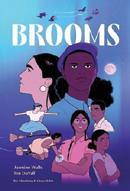
A fast-paced race to a satisfying, winning end. (Graphic fantasy. 13-18)
Wen, Abigail Hing | HarperTeen (400 pp.) $19.99 | Nov. 7, 2023 | 9780063297999
Series: Loveboat
Pearl Wong decides to spend her summer in Taiwan after a social media mishap causes her to lose her seat at a prestigious orchestra program in this standalone companion to Loveboat, Taipei (2020) and Loveboat Reunion (2022).

Seventeen-year-old Pearl reasons that enrolling in Chien Tan, the Chinese language and culture program unofficially known to participants as “Loveboat,” would help her keep a low profile while also exploring new interests. Loveboat was a transformative experience for Ever, Pearl’s older sister, and Pearl, whose life is devoted to her budding career as a pianist, wants the same for herself. At the Taipei campus, she meets Ethan Kang, a violinist who shares Pearl’s love of Western classical music. Their flirty jam sessions quickly turn into something steamier, but a heart-pounding encounter at a masquerade party leaves Pearl curious about the masked stranger she kissed. Pearl also develops an interest in the pipa, a traditional Chinese lute that her great-grandmother played professionally, and begins spending time with Kai Ai, a talented pipa player whose prickly demeanor hides unexpected thoughtfulness. With help from those around her—including
new Loveboat friends Hollis, who is nonbinary, and their twin, Iris, as well as Loveboat alumna and self-designated aunty Sophie Ha—Pearl tries to sort through tangled romantic feelings while reconsidering her identity as a Chinese American musician. Pearl’s earnestness shines through her narration, taking readers with her on an eye-opening summer of self-examination and finding her roots. Heartfelt. (Romance. 13-18)

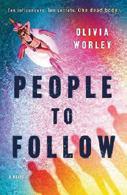
Worley, Olivia | Wednesday Books (352 pp.) | $20.00 | $14.00 paper
Oct. 31, 2023 | 9781250881380 9781250881342 paper
Ten influencers come together for IRL, a reality show set in a tropical paradise— but not all of them will leave the island alive. The show features content creators from age 18 to their early 20s. Kira promotes fitness. Max films documentary exposés for his YouTube channel. Corinne is a gamer on Twitch. Aaron is a former child star who’s struggling to stay relevant. Elody posts photos of herself in swimwear. Cole pulls problematic pranks. Storyteller
For more books in the Loveboat series, visit Kirkus online.
Pearl’s earnestness shines through her narration, taking readers on an eye-opening summer of self-examination.
LOVEBOAT FOREVER
Logan does comedic bits. Zane heads a TikTok collective, the Bounce House, with McKayleigh and Graham. Left to their own devices on a Caribbean island—and stripped of their electronic devices—the young people quickly become embroiled in drama. Everyone has a secret they’re trying to hide, and no one wants to end up canceled. Then, after a night of drinking, one of the influencers winds up dead. Was it just an accident? Or was it something more sinister? Mysteries unravel and secrets spill in this Gen Z thriller. The isolated setting of a private island contributes to the eerie mood, which is punctuated by dramatic reveals as the influencers fall from their pedestals. The story is told from the points of view of Kira, Max, Elody, and Logan. Character development is light; if readers can tell the 10 influencers apart, they’ll appreciate the plot’s twists and turns. Most characters are cued white; Corinne is Black. A chilling thriller that explores the consequences of getting #canceled. (Thriller. 14-18)

Yap, Tiffany | Illus. by Meital Smith Reverberations Books/Chin Music Press
(130 pp.) | $19.95 paper | Oct. 24, 2023
9781634050586

A California mountain lion struggles to weather the hazards of a human world. Writing discursively, Yap begins with days when bounties were offered in California for large predators, then skips to the present to follow a puma mother as she teaches her cubs to hunt. Later, one is killed
trying to cross a highway; the other, trapped and collared by naturalists, survives for several years on the periphery of settled territory, through wildfire and sickness caused by eating poisoned vermin, to reproduce and at last be found dead of unknown causes by hikers. Meanwhile, the crew of wildlife workers (which is racially diverse and includes one hijabi and one Sikh member) gradually features more prominently. They demonstrate various aspects of working with wildlife—from capturing and healing injured animals to educating pet and livestock owners, constructing safer road crossings, and promoting natural pest control. The tale is told in a mix of realistically drawn panels in pale, neutral colors and notebook pages of wildlife observations and facts; there are some mildly disturbing images of half-eaten prey and of animals caught in fences. If the language is occasionally stiff, readers will still come away knowing much more about how pumas live and how to live with them. They will also learn about other wild creatures—for example, beavers and migrating newts—and broad issues in wildlife management. Rich, wide-ranging reading for budding naturalists. (endnotes) (Graphic nonfiction. 12-14)

Yu, Pei-Yun | Illus. by Jian-Xin Zhou Trans. by Lin King | Levine Querido (352 pp.)
$19.99 paper | Nov. 7, 2023
9781646142804
This true story translated from Taiwanese Hoklo, Mandarin Chinese, and Japanese follows an ordinary boy whose experiences capture a slice of 20th-century Taiwan’s tumultuous history.
Tshua Khun-lim (or Tsai Kun-lin in Mandarin) was born in 1930 in Japan-occupied Taiwan and enjoyed a relatively peaceful childhood with his large extended family. He developed a love of reading and became a talented writer. Tshua joined a book club that, sometime later, landed him in serious trouble: At 19, he received a 10-year prison term on the infamous Green Island. The poignant personal perspective, along with aptly framed historical, political, and social contexts, is enlightening, educational, and easy to grasp. Rendered in comic-style drawings, this graphic biography uses a simple yet atmospheric color scheme. Part 1 features delicate black-and-white illustrations reminiscent of pencil sketches, with pink shading set against clean, mostly white backgrounds. Part 2, with its thick black lines, evokes linocut art and depicts Tshua’s torture, forced confession, sentencing, and incarceration. People literally lose the color in their skin as heavy gray replaces the pink flesh tones of the first half. This stark, stunning work provides resources for readers, including a note from the translator, a color key for the languages spoken, further reading, and a timeline. Unfortunately, there are no source notes or author’s note to explain how Tshua’s story came to be told.
A uniquely Taiwanese account with universal appeal that embraces freedom and celebrates the human spirit. (Graphic biography. 13-18)
The poignant personal perspective, along with aptly framed historical and social contexts, is enlightening, educational, and easy to grasp.
THE BOY FROM CLEARWATERFor another YA natural history read, visit Kirkus online.
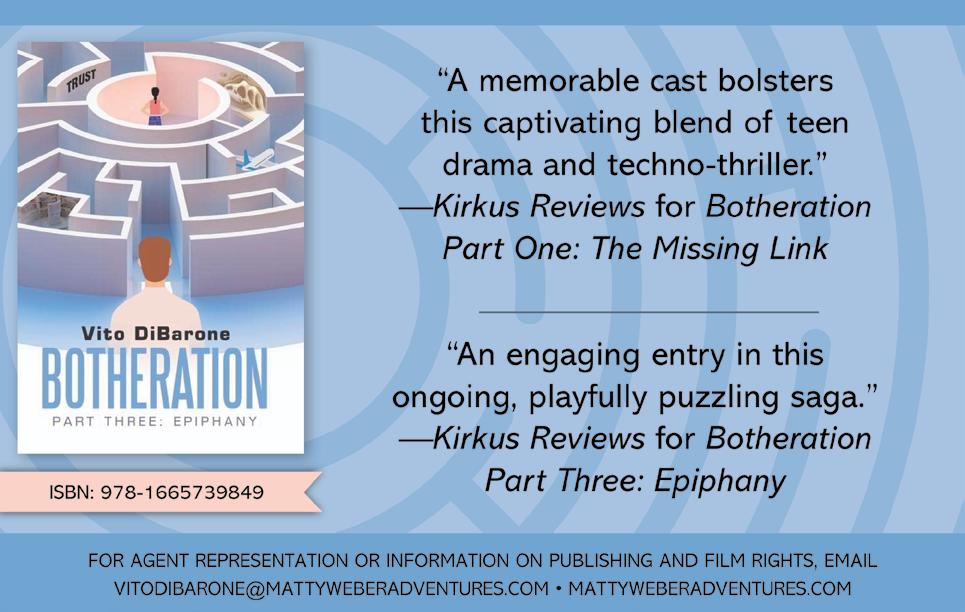


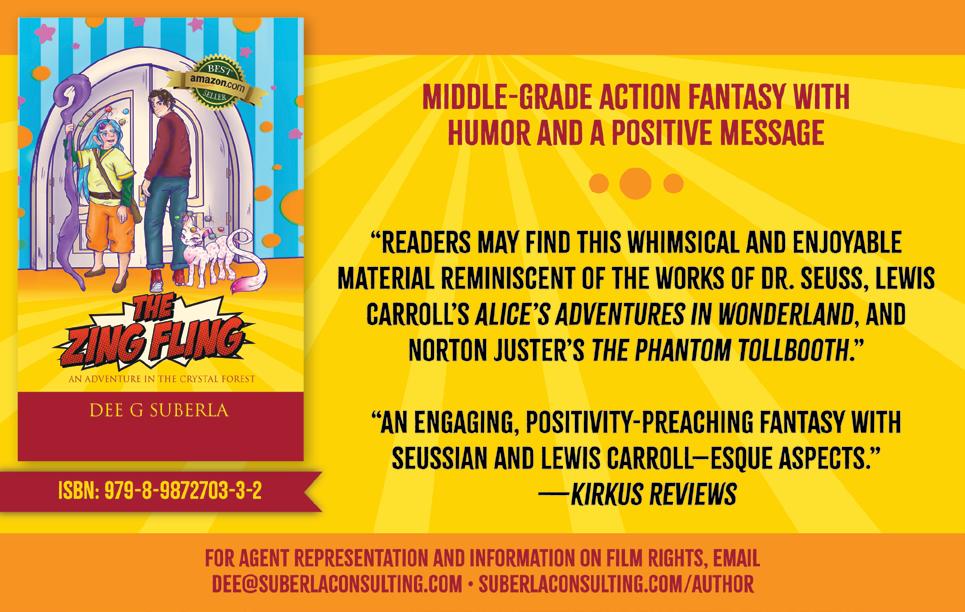
The Prime Video show based on Jenny Han’s novels will get 10 new episodes.
The story of Belly, Conrad, and Jeremiah isn’t over yet.
Prime Video has renewed The Summer I Turned Pretty, its popular show based on Jenny Han’s series of novels, for a third season, Variety reports.

Han’s young adult trilogy, launched in 2009 with The Summer I Turned Pretty, follows Belly, a teenager who spends her summers
at Cousins Beach with family friends and becomes involved in a love triangle with brothers Conrad and Jeremiah. The other novels in the trilogy, It’s Not Summer Without You and We’ll Always Have Summer, were published in 2010 and 2011, respectively.
The television series, which stars Lola Tung, Christopher Briney, and Gavin Casalegno, debuted on Prime in June 2022 and was a hit with critics and viewers alike. It was renewed for a second season before the first season aired, with Han, who created the show, returning as an executive producer.
The third season of The Summer I Turned Pretty will span 10 episodes, and was greenlighted before the writers’ and actors’ strikes that have paralyzed Hollywood. No work will be done on the new season until the strikes are over, according to Variety.
Han shared news of the new season on Instagram, writing, “So excited to finally share that we’re coming back to Cousins for Season 3, and this time we’ll have 10 whole episodes. It’s been hard not being able to work on the show because of the ongoing strikes, but we can’t wait to get going on Season 3 as soon as we’re able.”—M.S.
MANY YOUNG CHILDREN go through a dinosaur phase, so it’s no surprise that kids’ picture books featuring friendly cartoon dinos remain as popular as when author/ illustrator Syd Hoff first published the classic, Kirkusstarred Danny and the Dinosaur back in the prehistoric era of 1958. Here are five more recent tales of saurian shenanigans, all recommended by Kirkus Indie:
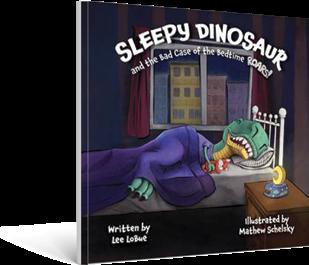

In The Last Surviving Dinosaur: The TyrantoCrankaTsuris (2019) by Steven Joseph with illustrations by Andy Case, a human narrator defines useful Yiddish words—including tsuris (problems) and kvetch (complain)—during a story of his Bronx upbringing. Then he launches into an amusing tale of how all

humanity evolved from two cranky dinosaurs: a TyrantoKvetchaTsuris and the titular TyrantoCrankaTsuris, whose constant complaints shook the planet and made all the other dinosaurs flee into the sea. Kirkus’ reviewer writes that this book will be “laugh-outloud funny for adults” and “a good choice for reading aloud” to youngsters.
An environmentalist theme enlivens Dinosaurs Living in My Hair! 3: An Underwater Adventure (2022), the latest series entry by
Jayne M. Rose-Vallee with painted images by Bonnie Helen Hawkins. Four curly-haired kids—who, as the title promises, have tiny dinosaurs residing on their heads—have an eventful swim in the ocean. The dinos rescue a shark in trouble, while the kids learn the importance of keeping the sea free of trash. Our reviewer, in a starred review, notes that although the dinosaurs are “expressively goofy,” the “real stars…are the four diverse children whose passion for doing what’s right unites them in a cause.”
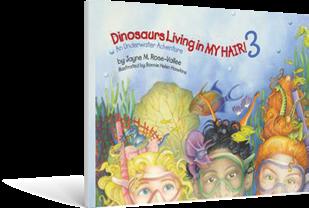
Lee LoBue’s picture book Sleepy Dinosaur and the Bad Case of the Bedtime Roars! (2021), illustrated by Mathew Schelsky, offers the tale of a young dino who just wants to go to bed after an active day. But whenever the aptly named Sleepy Dinosaur yawns, she inadvertently lets out a huge roar that wakes her human neighbors up.
Kirkus’ reviewer notes the brisk book’s humor and how the protagonist’s roaring problem is distinctly dino-centric. However, they point out that caregivers may “recognize in Sleepy Dinosaur a child who badly needs to slumber and needs help to quiet their mind.”
The Kirkus-starred A Little Bit of Dinosaur! (2021) by Elleen Hutcheson and Darcy Pattison was named as one of Kirkus Reviews’ best books of 2020, and it incorporates a dino into its narrative in an offbeat way. In the picture book, which features images by John Joven, a child is told that they have “a little bit of Tyrannosaurus rex in [their] jawbone!” The unseen narrator explains that a calcium atom in that bone was once part of a T. rex skeleton; the book follows the dinosaur through its life cycle then tracks the calcium atom over eons as it goes from a rock to a river to a cow, into milk, and into cheese, which the child eventually eats. The tale, while introducing multiple, complex concepts, reveals a solid connection between dinosaurs and humans that kids are likely to find engaging. Kirkus’ reviewer called the book “a science-centric winner, especially for young dinosaur lovers.”

In the early 20th century, the citizens of a former gold rush town concoct a scheme to save their homes in Mayfield’s novel.
The once-thriving gold mining town of Paradise, Idaho now has a diminishing population and a big problem: the approaching 1920 census. The combination of the gold rush cooling, the Spanish Flu, and a raging war in Europe has reduced the town’s population to fewer than 125 total residents—the official threshold for town incorporation, as millionaire politician Gerald Dredd is keen to remind them. Under the threat of losing their homes, the town council members band together to bring new people in. Led by former madam Maude Dollarhyde, her mixed-race granddaughter, Bountiful
(a brilliant teacher recently returned from Washington, D.C.), former prospec tor “Goldstrike,” and the local saloon owner, Arnold Chang, they come up with the brilliant idea of selling four of the town’s abandoned mansions for a penny each to prospective buyers who will agree to restore them—and, more importantly, stay in town, at least until the census is taken. After going through many applications, the town welcomes the arrival of a theatrical family troupe, a household of excommunicated Mormons, an electrical engineer, and a handy lawyer with his wife and child (in case they need to fight their case in court). Little do they know, at least one of those newcomers is a mole sent by Dredd to sabotage their plan. What
163
Mayfield, Steven | Regal House Publishing 322 pp. | $19.95 paper | Oct. 24, 2023 9781646034000
follows in Mayfield’s brilliant, well-rounded, fun novel is a twisty mix of murder, comedy, romance, and history. With plenty of humor (“folks will come up here to escape the hustle and bustle of city life. We’ll be like Switzerland. Once rich folks have made their nut, they always want to live in

Switzerland”) and a narrative that follows a cast of endearing characters as they fight for the life of their beloved town, the story has a true sense of community, making it impossible not to root for its quirky heroes and against the dastardly villains. A delightful romp with memorable characters.
J. Fraser159 The Penny Mansions By Steven Mayfield
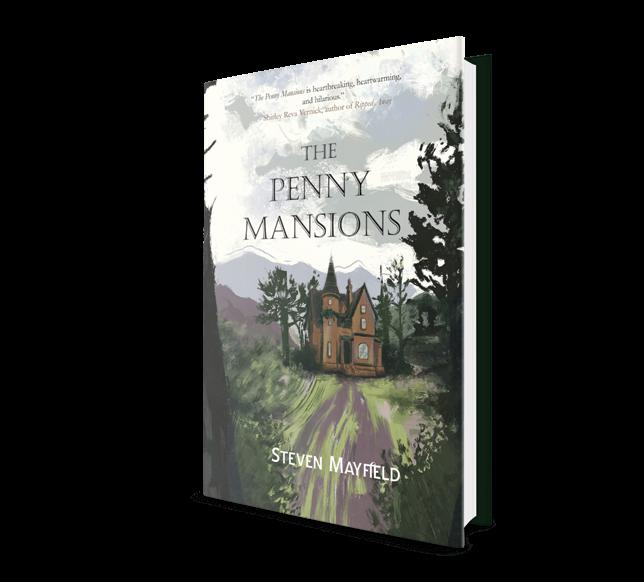
174 Daughters of the Occupation By Shelly
Sanders
Allan, Lewis | Stretched Studio (387 pp.)
$14.99 paper | May 20, 2023 9798988241003
A cynical defense lawyer takes a case with the potential to alter his views of the justice system in Allan’s debut legal thriller.
Mason
Mitchell has made peace with his livelihood. The criminal defense attorney represents Milwaukee’s worst: drunk drivers, drug dealers, armed robbers, and gang members (“The majority of Mason’s clients were guilty, the kind of people you would call criminals, and he was one hundred percent okay with that. It came with the territory, and he suffered no pangs of conscience”). Perhaps unsurprisingly, Mason is divorced, increasingly estranged from his daughter, lives alone, works long hours, and drinks a lot of vodka. Not all of Mason’s clients are clear-cut villains, however; take Lori Wells, a steakhouse waitress charged with attempted homicide for stabbing her husband. Lori has no memory of doing it, nor can she imagine why she ever would. Then there’s the higher-profile case of Michael Key, a Black high school football coach accused of killing his white wife. The public has already made up its mind regarding Key’s guilt, but, for once, Mason believes his client is truly innocent. The question is whether Mason is a good enough lawyer to keep the justice system from ripping either client to shreds. Allan’s incisive prose adeptly threads the needle between sincerity and satire, as when Mason drunkenly complains about his job to a disinterested bartender: “ ‘Most of the lawyers you see in here don’t give a rat’s ass about anyone they represent. Guilty, innocent, they could care less. They aren’t in the law business, they’re in the processing business.’ Mason was rolling downhill, and didn’t notice his bartender glance around for a
plausible excuse to walk away.” The characters are compelling and the cases are intricate, inviting readers to quickly lose themselves in the procedural details. One hopes there are further Mason Mitchell thrillers on the docket.
A timely and well-told legal mystery.
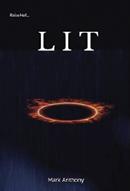
Anthony, Mark | Leschenault Press (366 pp.) | $23.99 | $15.20 paper
Aug. 18, 2022 | 9780228840015
9781922670618 paper
The effects of trauma, depression, anxiety, and human suffering manifest as literal monsters in this series starter from SF/fantasy author Anthony. The story follows three remarkable characters from very different walks of life who have one thing in common: They’re haunted by terrible creatures called “Leviathans,” brought forth by extreme traumatic experiences and mental illness. Ellie Jameson is a school janitor who’s hounded by a giant Slender Man-esque Leviathan that destroys her family, causing a mental breakdown that forces her into state-mandated therapy; during on session, she can still hear the monster’s “rasping breath” and “feel its cold and smell its nauseating stench.” Sam Morris is a struggling advertising executive whose Leviathan manifests as a giggling, creepy little girl begging him to “come play” and victimizes family members and colleagues in Sam’s vicinity during times of extreme stress. Joshua Fielding is an 8-yearold with an alcoholic mother who has an abusive boyfriend; the youngster’s Leviathan emerges as a giant “Monster Dog” that follows him to school, where he tries to avoid prying questions from teachers and friends. Although the characters are from separate worlds, their stories begin to overlap as Ellie and Sam prepare
for an upcoming event of horror and mayhem and Joshua encounters his Monster Dog for the first time. Debut author Anthony, a registered nurse, effortlessly interweaves together elements of mythology and dark SF to create a world in which trauma’s harm is far more than mere metaphor. The plot is consistently engaging, displaying an understanding of genre tropes, and the author shows a skill for storytelling that surpasses that of some more established authors. Most notable is Anthony’s ability to smoothly move between each character’s point of view, which not only gives the reader a complete story, but also a proper basis for understanding the detailed world the author has built in these pages. A delightfully gruesome story that will continue to haunt readers long after they reach its end.

Asante, Erica | Illus. by Chengetai Lerato Masalethulini | Impact Global Strategies
(36 pp.) | $17.99 | $12.99 paper
Oct. 18, 2022 | 9798985592009 9798985592016 paper
Ama explores her Ghanaian roots with her Nana in Asante’s picture book.
Elementary schooler Ama has a new classroom project: to make a presentation about her heritage. At first she doesn’t know how to do this. So she rushes home to see her grandmother, Nana, who is also her best friend and originally from Ghana. Nana tells Ama a story about two brothers in Bonwire, Ghana, who meet Ananse the spider and learn to weave kente cloth. This traditional item from Ghanaian culture can be passed down through decades, even centuries, in the same family: “The beauty of Kente is that every Kente has a name with a meaning given to it by the one who wove it,” she explains. Nana presents Ama with a gift to bring to show and
tell, and Ama goes to school with newfound pride in her family heritage. Asante’s book is a shining example of the same knowledge sharing that the story advocates: Nana teaches not only Ama about kente cloth, but also the reader. Masalethulini’s digital illustrations are strongest when they depict people rather than landscapes, as her choices in perspective can be questionable: On page 15, for example, Nana’s facial features are sharp, but her clothing and the background are blurry. Nevertheless, Asante deftly blurs past and present in a way that will pique youngsters’ curiosity about their family roots.
An informative, fun read that makes the history of kente cloth accessible for kids.
Kirkus StarTrue Immortals
Bratman, Steven | Self (478 pp.)
$17.99 paper | May 5, 2023 | 9798393653156
Genetically gifted humans with unnaturally long lifespans evade the aging-obsessed pursuers who would exploit them in Bratman’s SF novel.
In this smart, witty SF tale, rare humans are born with the genetic mutation for extraordinary long life; they are categorized as “hafeems,” who undergo a slow aging process, living for centuries before they finally expire, or as “True Immortals,” who reach mid-20s maturity and remain vulnerable to fatal injuries but are otherwise eternally young. Only 300-something years old, Blair
is a fresh Immortal who has already abandoned several wives to age and die without him (immortals live with mortal families in 12-year “frames” before changing identities and fleeing elsewhere.) Blair is identified as an immortal and tracked by powerful forces, assumed to be existentially tormented mortals who covet (and are willing to kill for) the secret of endless life. But things are not so simple. The storyline’s shifting narrators include Saul, a hafeem who mentored Blair in navigating their secret subculture before their estrangement, and Janice, a mortal drug addict and online sex worker who stumbles into a (kinky) affair with Blair when he mistakes her punk nihilism for the POV of a fellow immortal. Blair is naive and shallow, physically perfect but slightly weighed down by his guilt, selfish choices, and loneliness; in a canny move by the sly author, Blair disappears for much of the narrative, making room for richer characters, some reflecting an attitude of existence stretched over epochs. Immortality is a long-standing SF/ Fantasy trope, and while the ingredients gathered here could produce a standard action-chase beach read, the author productively shifts gears, bringing in hard SF (prepare for heavy-duty DNA-lab talk), social satire, suspense, pop-culture references (from Shakespeare to Six Feet Under), and philosophy, with pithy zingers and jaded wisdom from the timeless ones and those who love them (“Here’s the definition of nerdy: you get love-crazy over things that shrink you instead of grow you”). Remember, some of these folks hung with Socrates.
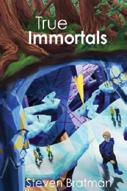
A thematically rich, brainy, and meditation-worthy “what-if” considering the ramifications of a life in which death has no sting.
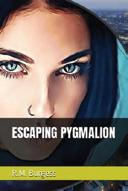
Burgess, R.M. | Self (293 pp.) $15.99 $11.95 paper | July 31, 2023 9798854434607
A girl overcomes a harsh upbringing and vows to make something of herself in Burgess’ series prequel.
Five-year-old Roxy Reid and her mother, Isadora, live in poverty in London’s East End. Isadora earns money as a sex worker but mostly uses it to feed her drug habit. She’s an angry woman who vents her frustrations by physically abusing her daughter. Roxy finds most of Isadora’s regulars to be seedy types, but Nick Dredd shows both Isadora and Roxy nothing but kindness. Nick ultimately takes Roxy in, giving her a better place to live, teaching her how to fight, and making her a part of his growing drug-dealing business. When she’s a bit older, she becomes a courier—both as a legitimate bike messenger and as a drug transporter. As a result, she’s often surrounded by reprehensible people, including Nick’s local rivals and Russian criminals muscling their way into Nick’s territory. Roxy ably holds her own but looks for an above-board career; she finally scores a job as an administrative assistant at a major American bank’s London office. Enter James Hancock, an American who’s just transferred there as head of fixed income trading; Roxy quickly sees him as her “meal ticket” out of the life she’s stuck in. But initiating a sexual relationship with him only complicates things, as James is married and most also likely sleeping with Roxy’s boss—who’s married as well. The longer she stays in London, the greater her chances of running into unsavory types from her recent past, whether they’re assorted criminals or simply men who remain irate that Roxy rejected their advances with her fists.
Burgess, whose last series entry was Roxy Reid: Five Weeks in New York (2021), excels at developing this prequel’s
A thematically rich, brainy, and meditationworthy “what if.”
TRUE IMMORTALS
multilayered cast. Roxy has a complicated relationship with her abusive mother who repeatedly acknowledges her faults but seems incapable of rectifying her behavior. Nick is a mentor and warmhearted parental figure, which makes for a stark contrast with his criminal behavior, and although James may be the “protector” Roxy yearns for, he generally comes across as a pushover. The story’s pacing is impeccable, smoothly moving through the years until young Roxy reaches adulthood. Although it sticks to Roxy’s perspective, her ever-changing life propels her to different homes, various ways of making money, and into a host of other characters’ lives. With so many lawbreakers, it won’t surprise readers that this book has several dark and violent turns; fortunately, Burgess doesn’t steep the story in gloominess and only implies much of the violence, especially during Roxy’s earliest years. The protagonist as an adult is tough and ultra-chic, riding a motorcycle, sporting a leather messenger bag, and carrying her trusty switchblade and brass knuckles wherever she goes. In one scene, after a scuffle (that she wins), the author effectively describes her as wearing “her leather-Lycra fingerless gloves, and there was blood on them, though it was beginning to dry….Her knuckles were raw, with red, black, and blue bruising.” The ending perfectly sets up the next chronological installment. A sometimes bleak but wholly absorbing coming-of-age story.
Buzan, David | Black Rose Writing | (273 pp.)
| $26.95 | 17.95 paper | Aug. 10, 2023
9781685133313 | 9781685132507 paper
An Indigenous soldier faces danger from both humans and monsters in his last mission for the United States Army in Buzan’s novel.

In 1872, a unit of U.S. troops heads to Oregon by
train carrying gold meant for the U.S. Army. A Nez Perce man named Jolon Winterhawk is a cavalry soldier and Civil War veteran nearing the end of his career in the military; he’s eager to retire but feels a sense of foreboding. The train is ambushed by vigilante Ramòn Cornadez and a band of soldiers, who mean to take the gold to Mexico. The ambush is violent, and Winterhawk is the sole survivor. Meanwhile, a massive creature is attacking men in the region. Winterhawk doesn’t know about this danger—he assumes the cries he hears in the distance are wolves—but he makes a decision to follow protocol instead of fleeing the scene, meaning he must take care of the dead and, to complete his final mission as a soldier, deliver the gold to its intended destination. Two days after he sets off with the gold, a couple of U.S. Army officers, Maj. Ambrose Toomey and Cpt. Thomas Isbell, find the wreckage of the train and conclude that a traitor turned on his unit; the new arrivals don’t trust Winterhawk because he’s Indigenous and assume he’s trying to steal the gold (“What was your plan, Lieutenant Winterhawk? You made a deal with General Cornadez? You provided him with the train route in exchange for half of the money?”). Ultimately, Toomey and Isbell decide to steal the gold for themselves. Winterhawk remains determined to carry out his mission, but can he escape both his human antagonists and the monster in the woods? The novel is part western and part horror, and some of the violence is extreme. The pacing is not quite right; the author sometimes interrupts action sequences to deliver exposition or historical information. The text includes copious period detail, and a lot of this material is compelling, but as a result the book
sometimes reads more like a history textbook than novel. Still, it’s a tense, exciting adventure, and Winterhawk is a charismatic and honorable hero. An effective western thriller graced by a memorable protagonist.
The Dreamtime
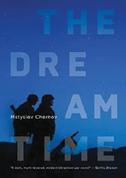
Chernov, Mstyslav | Cherry Orchard Books/ Academic Studies Press (544 pp.) | $29.95 Oct. 11, 2022 | 9781644699881
Chernov’s impassioned novel poses existential questions against the backdrop of the Ukrainian war. The book focuses on four characters: There is Eva, who lives with her deranged father (who uses the walls of their flat to plot an immensely complicated and unfinished novel in magic-marker). Next is K, a doctor who volunteers his services without political fear or favor. Maria Alexandrovna is a forensic investigator trying to solve a murder while holding things together with her young son, Tykhon, and her patriotic soldier husband, Andrei. Finally, and known only through his letters, there is the mysterious (and perhaps insane) Fryderyk, who was once Maria’s lover and now toys with her, making arch pronouncements such as “insulting someone during their suicide attempt is in poor taste.” Throughout there is war, omnipresent and ghastly. This is a massive and complicated book, one in which the reader is sometimes lost. Is it the author who sometimes address the reader directly (“Is this
A book for our times— vivid enough to grab us and not let go.
THE DREAMTIME
boring you yet”)? If not, what character is speaking? On the other hand, if this is indeed the “dreamtime” (the author’s term for “the generalized discord of our times),anything goes, chaos becomes not a bug but a feature, and the narrator can be a trickster. Translated by Leonard and Helbing from the Russian version, the writing is forceful and vivid. The characters banter with gallows humor, and the urgency of K’s attempts (rendered in impressive medical and technical detail) to save lives that are slipping away hits home with great impact. Gradually, some connections are revealed, such as the fact that K is a psychiatrist who once had Fryderyk as a patient, and through that relationship a glancing connection to Maria. Toward the end of the book, he and Maria have a long, philosophical discussion about the meaning of life, fate, dreams, and the war. “[W]ar is so appalling,” says K, “it simply cannot be real.” And yet, it is. Unfortunately, a book for our times— vivid enough to grab us and not let go.
$18.95 | $13.95 paper | July 24, 2023
9781838365042 | 9781838365028 paper
A tireless outdoorsman conquers grief with a series of adventure challenges in this memoir.

Corcoran’s daring athletic odyssey doesn’t begin with his decision to swim the 500 km length of Ireland’s coastline. It began when his beloved father, Milo, suffered a stroke in 2011, inspiring the author, at 20, to run 35 marathons in 35 consecutive days around Ireland’s coast. Six years later, Corcoran, an avid motorcyclist
and outdoor enthusiast, upped his game, and, in another tribute to his father—who died of cancer in 2016—the author embarked on an intrepid swimming feat: “I needed to do something,” he confesses. “I needed to move and express myself.” His memoir is fast-paced and exhilarating, vividly detailing his grueling, rigorous training schedule under the tutelage of marathon swimmer Chris Bryan, which was critical, as Corcoran had only trained as a runner before. However, Corcoran’s charity swim wasn’t corporate sponsored, and he had to manage the event’s logistics independently while concurrently training and manning a desk job to stay afloat financially. The swim itself had a bevy of obstacles, including the frigid cold and high waves of the Irish Sea, requiring months of tolerance training. Hours of rigorous pool laps were no match for braving actual seawater as “one hundred metres of icy blackness flowed beneath me.” The candid, conversational author details the heartbreak of his decision to cut short his initial swim after just 210 km when his support boat sank. The book becomes a journal of resilience when, in 2019, the author mapped out yet another challenge to complete the original venture.
This companion memoir fittingly accompanies a feature-length Irish documentary film, also titled Unsinkable, which chronicles Corcoran’s marathon and swimming challenges. The author puts into words what the film shows to be a true journey of the heart, inspired by familial love, grief, and a dedication to pushing his mind and body to their limits. His personal challenges became fundraising opportunities, amassing hefty donations for stroke and cancer charities: “it wasn’t merely swimming but doing my utmost to help others and soften disaster’s blow,” the author writes. The book is decorated with a full-colorphotographic diary by the author featuring action shots as well as images of family members and support crew; it also features line drawings and informative maps. Corcoran’s writing talents are similarly
impressive—particularly his keen eye for natural details, as when he describes terrifying rip currents or being out to sea during a storm when “sharp spears of rain punctured the water like bullets.” On more personal terms, the memoir not only details the athleticism necessary to accomplish his ambitious goals, but also defines Corcoran’s endeavors as affecting, determined efforts to work through grief and to channel his anger and negativity surrounding the loss of his father into a physical challenge. Suffused with breathless athleticism, relentless resolve, and immense catharsis, this is a poignant portrayal of a man “trying to process life.”
A bold, uplifting testament to the tenacity of the human spirit.

Dieker, Nicole | Shortwave Media (260 pp.) | $4.99 e-book | June 27, 2023 9781959565130
In this third installment of a mystery series, two actors associated with a stage production of Romeo and Juliet die, and an interim artistic director must solve the murders before opening night. Larkin Day has already solved two homicides in novels by Dieker. Now, Larkin is the interim artistic director of the Summer Shakespeare Festival under the aegis of Howell College in Iowa. The former festival director and the previous Juliet were sacked for having an adulterous affair. The ex-director’s daughter, Rebecca Morris, has been given the job of assistant props master as a kind of legacy privilege. Because she is a minor, a big deal is made of her having to be chaperoned at all times. Soon, Tyler Mackintosh, the production’s Romeo, is found dead, having drunk from a cyanide-spiked potion flask. Was it meant for the actor
playing Juliet? Later, the festival’s original Juliet—the disgraced one—is found stabbed, but she was actually poisoned beforehand. Then there is the matter of real daggers versus fake ones, assorted potion bottles, and lots of prop switching, either accidental or intentional. And along the way, there are various romances, jealousies, and red herrings. Dieker is a master of obfuscation. The enjoyable story raises a host of tantalizing questions. Whodunit and why? And will the show go on? The author is a versatile writer with many interests, including financial planning and personal development, which she weaves into the book. For example, readers observe Larkin always pursuing her elusive best self. (The protagonist’s best friend, freelance writer Anni Morgan, seems to be Dieker’s avatar.) The author can skillfully turn a phrase, as when a well-to-do character comes out with a “tinkly, wealthy laugh” to mask her careless irresponsibility. Another plus is that readers get a close reading of Shakespeare and a look at the many ambiguities and subtleties in Romeo and Juliet that an artistic director must deal with. Dieker appears delightfully curious about virtually everything, and the audience profits from that. There is even a short story appended as a kind of lagniappe. But the intriguing mind games that are played throughout the novel may be a bit too subtle for some readers.
An engaging, sophisticated, and wide-ranging whodunit.

Dordal, Lisa & Milly Dordal Black Lawrence Press (120 pp.) $19.95 paper | Sept. 22, 2023
9781625570536

A daughter distills her mother’s correspondence into short, reflective entries in this collection.
In 2021, two decades after her mother Milly’s death, Dordal rediscovered 180 letters that her mom had written to her between 1989 and 2001. Intent on preserving the collection, Dordal began typing up the handwritten letters, but soon began “tinkering” with them, stripping away what she felt was unnecessary text. She was drawn to her mother’s observations about the passage of time, the natural world, and grief and loss, and writes that she felt as if she were in collaboration with her parent. The result is a series of “entries” whose forms lie somewhere between letters and poems. Dordal’s relationship with her mother was tested by her parent’s alcoholism; she writes of how she loved her “daytime mother,” but lost her at night to bourbon or vermouth. The entries meld everyday chitchat with profound hopes; in one instance, Milly tells of finishing Kathleen Norris’ 1996 book The Cloister Walk, adding “(I wish I could be that spiritual).” These moments, Dordal writes, helped her to recognize her mother’s “whole-hearted love” and to draw parallels to her own deepening relationship with God after she came
out as a lesbian. The entries feature casual cultural and geographical references, as in one dated “August 1991”: “The chemical spill in the Sacramento River sounds terrible. / And now those oil tankers polluting the Olympic Rain Forest.” The distilled letter becomes a breezy verbal collage, displaying the sprezzatura of one of Frank O’Hara’s Lunch Poems (1964). Other entries, such as the one dated “September 1991,” offer poetic fragments of sentiment that subtly denote the warmth of maternal care: “Your packages are in the mail. / I’m sure the cookies will be crumbs, / but they were sent with love.” Further entries carry bluntly moving confessions: “You were 10 when I started drinking, / maybe 9. I’ve put you through a lot of pain.” This touching work effectively approaches universal themes of motherhood, addiction, and illness, among others; readers will even sense the changing of seasons as it progresses.
An intimate and illuminating glimpse into a parent-child relationship.

Florschutz, Roger J. | AOS Publishing (400 pp.) | $4.99 e-book | Nov. 22, 2023
9781990496271
Four darkly compelling storylines converge in Florschutz’s debut novel. On a dark, rainy night in early November, John Brisdon Noxon, a middle-aged art curator, disappears. His wife, Imogen, finds his hidden journals, including one detailing Brisdon’s trip to Peru as a young student—and his passionate affair with a local artist, César, which ended in tragedy. Each journal entry is addressed to Karen, Brisdon’s twin sister, who disappeared when the siblings were 5 years old. Fifteen years later, Imogen and her partner,
This debut novel lingers like a vivid dream.
THE PERUVIAN BOOK OF THE DEADFor more Indie content, visit Kirkus online.
Max, gather their family around them to commemorate the closing of their lakeside resort, the Sheltering Arms. That weekend, the mysteries of Brisdon’s disappearance—and of his sister’s—are illuminated in a series of haunting revelations. The novel weaves together four points of view: Brisdon as a young man lived in the shadow of his sister’s disappearance and haunted by the death of his parents in a plane crash. In Peru, he falls in love with César Acosta, heedless of the dangerous political climate, and is devastated by the atrocity that tears them apart. César, haunted by the same memories (and harboring a few secrets of his own), transforms into the reclusive artist CÁLA. Margaret, Brisdon’s Scottish mother (once a lively young woman, now a disturbed, paranoid personality), details the events leading up to the disappearance of her daughter. Finally, Imogen, surrounded by her loved ones, is left to pick up the pieces the others have left behind. The four storylines frequently overlap, and several scenes are depicted more than once from different perspectives; as in Rashomon, instead of feeling redundant, the repetitions add depth and nuance. The settings, ranging from postwar Scotland to rural Peru to a remote Ontario lake, provide evocative, moody backdrops for the story. “As we drove on, Lima felt ominous in the dim light–a polluted, dry, decaying insomniac of a metropolis.” The characters baffle and infuriate, like real people, and the unlikely series of coincidences at the end add to the uncanny, mystical feel.
Part mystery, part love story, part horror story, this debut novel lingers like a vivid dream.
Fraser, Donald J. | Fraser & Associates

(314 pp.) $19.95 paper | Aug. 7, 2023 9780997080544
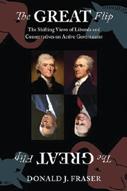
Fraser offers a new history of seismic ideological changes in the American Democratic and Republican parties. In his latest work of history, the author, a teacher of history to adults through the Osher Lifelong Learning Center, focuses on the evolution of the United States’ two major political parties, from their origins to their current declared positions, which are, in many cases, inversions of their original orientations. Fraser begins his account with the Founding Fathers and their concerns regarding state-level government and centralized government. The author’s primary aim is to demonstrate the many ways that liberals and conservatives have, over “the long sweep of American history,” swapped positions on that central role of energetic government: “It was initially the conservatives who pushed for a powerful central government,” Fraser writes, “in part to transform the United States into an industrial society.” Looking at political, social, racial, and economic factors over the course of two centuries, the author charts the course of the Republican and Democratic parties. All of this is popular history done very, very well. Fraser is uniformly excellent at breaking down complex subjects into readable, comprehensible narratives—a godsend considering the intricacies of the material he’s covering. He deploys his many well-utilized sources smoothly and unobtrusively, and he strikes a welcomingly nonpartisan tone while discussing social and political subjects that have become radioactively divisive in the 21st century. The author is also superb at crafting economical but evocative portraits of the many larger-than-life
figures in his story, from the Founding Fathers to titans of the Progressive Era like William Jennings Bryan (and his wife; as Fraser puts it, “When he married Mary Baird, he not only found the love of his life but also a woman who aided his rise in politics”) to William McKinley in the pivotal presidential campaign of 1896, which the author identifies as a turning point in American politics. A comprehensive and very readable history of two political parties switching identities.
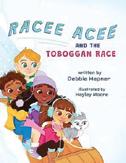
Hepner, Debbie | Illus. by Hayley Moore Self (44 pp.) | $35.95 | $10.99 paper Aug. 12, 2023 | 9798987292426 9798987292433 paper
Four children work to speed up their sled through trial and error in Hepner’s picture book.
Acee, Mia, Riley, and Tobias are ready for the annual toboggan race, but they want to give their sled a speedy edge. After brainstorming ideas, they decide to try bacon grease; it works, but it also attracts all the neighborhood dogs— so it’s “Back to the thinking porch.” The kids try crayon wax next, first coloring the bottom of the sled, then melting the wax to coat the bottom. After a test run, they decide the latter is the solution, and they apply a fresh coat for the race. Soon they’re racing down the hill—and across the finish line. This story of trying different ideas and not giving up highlights teamwork, with four children ready to work together (and not argue) as they pursue their goal. Hepner uses short sentences and only a few challenging words (toboggan among them), making this accessible for emergent readers. Moore’s bright cartoon illustrations feature a diverse friend group with various skin tones. Some of their poses are repetitively reused
on multiple pages, however; Acee’s position racing the sled, for example, is identical in three illustrations. The rainbow track left by the crayon wax, however, is inspired.
A fun, well-illustrated story about working together to make rainbows in the snow.
The Ghost With a Knife at Her Throat: The History of Light: Book One
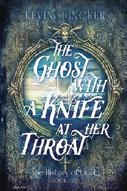
Hincker, Kevin | Self (264 pp.) | $14.99 paper Aug. 13, 2023 | 9798987630167
Set in an art colony on the Southern California coast, this series opener blends elements of urban fantasies, amateur sleuth mysteries, and magical realism.
Although Skysill Beach may seem like just another tourist trap—featuring numerous parks, art galleries, and even a psychic district—there’s a shadowy side to the secluded community of artists. For generations, the talented painters who relocate to Skysill never seem to leave. And, even stranger, many artists utilize “Higher colors” in their works that are not only undetectable to the normal eye, but can also be used to manipulate various emotions. When former wunderkind artist Asher Gale—whose ability to see the spectrum of these colors may have driven him to a mental breakdown—is tasked with investigating the apparent suicide of the daughter of a wealthy patron, he quickly discovers the motives behind the young woman’s death are not only complicated, but dangerous as well. His inquiries give him insight into the obscure origins of Skysill, and also reveal details about the mysterious disappearance of his parents years earlier. Powered by consummate worldbuilding, superb character development, and nonstop action, Hincker’s wildly original storyline—which features ghosts, murders, psychics, and even an unlikely
romance—is only the beginning of a much more grand-scale narrative. Also of note is the author’s witty—and effortlessly readable—writing style. Although there are countless examples of his unique use of imagery and analogy, a few examples follow: One character is described as having “snowy skin and white hair falling taut off one shoulder, the way starlets played nuns in the 50s,” and an older woman is “stooped like a question mark.” Another character squints through her bifocals and tight lips and makes “the sound horses do, thinking about hay.” This masterful detective tale launches what could be a transcendent hybrid series—a must-read.

Hutchison, Roger | Morehouse Publishing (224 pp.) | $20.67 e-book | April 18, 2023 9781640656321
This spiritual guide offers advice to readers dealing with anxiety and depression. In his book, Hutchison relates how his own life was shadowed by stress and anxiety. He was in a loving family with his wife, Kristin, and his daughter, Riley; he was supported by friends and colleagues; and yet he felt overwhelmed and found himself in a hospital emergency room. He was diagnosed with something called “Generalized Anxiety Disorder,” the first of many self-discoveries the author reveals about himself in these pages. He learned that he was an “empath,” highly sensitive to the needs of other people, and from this and other surprises, he created the book’s core philosophy: “It has taken me a lifetime to come to the realization, but I now know that I am not broken but something to celebrate.” In a series of chapters grounded in his own experiences, Hutchison leads readers through
reflections on how they can center themselves and find peace in a critical world. The essence of his program is a passionate, personal Christianity. Each chapter includes a section on “supplication” to the Christian God, and spiritual calls and prayers abound throughout the text (“Christ, be with me in places of toxicity”), making the book of limited use to non-Christian readers. But readers sharing Hutchison’s faith, or wanting to, will find him a genial and supportive guide to the process of reshaping routines to discover personal calm and acceptance through a renewed faith—and, as the author repeatedly advises, grounding a healthy worldview in creativity. Christian readers who have been struggling with the demands and harshness of the world will find Hutchison’s calm, self-effacing tone extremely refreshing. A compassionate, helpful, faith-oriented series of meditations on finding peace in a tumultuous world.
Janssen, Teresa H. | She Writes Press (440 pp.) | $17.95 paper | Nov. 7, 2023 9781647425838
Janssen presents a coming-of-age tale based on true events, set in the early 20th-century American Southwest.
Josie Belle Gore isn’t the oldest but she’s clearly the boldest child in her family. At the age of 6, for example, she uses a rope to retrieve the corpse of a jackrabbit that’s spoiling their well water. She takes in stride the family’s many moves—from New Mexico to Arizona, Texas, “Old Mexico,” and back to Arizona. When her mother dies, she’s left, at 14, to care for four younger siblings, including an infant. When her father becomes determined to marry her off, however, she runs away, first seeking shelter with an older sister but then striking out on her own, eventually finding a career with Western Union. Once she’s settled

in California, though, she realizes it’s time to reunite with her family. Janssen weaves together aspects of her grandmother’s life with historical events; as such, Josie experiences boom-and-bust mining towns, Halley’s Comet, revolution in Mexico, homesteading in the desert, World War I, the influenza epidemic of 1918, and Prohibition in the ’20s. The modernizing West has horses and cowboys but also cars and flappers. Janssen weaves into the narrative stories about water—an important resource of the arid region, which explains the book’s title. However, her repeated metaphor that Josie’s life is like a river (“Life, like a river, can take some sharp twists and turns”) does not quite work, as our hero definitely and repeatedly takes initiative, rather than just flowing with the tide. Janssen writes in Josie’s voice, which allows readers to get to know her as a brave, complicated woman, and witnessing her growth as a confident person is an engaging experience. Other characters, however, are rather flat and their motivations vague. Also, some plot points seem unlikely, as when Josie, who lacks fashion sense, easily gets a job working the counter of a fancy hotel. Overall, though, Janssen creates a believable West that holds both opportunities and obstacles for her protagonist.
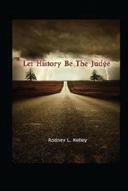
An intriguing, if uneven, novel of becoming a woman in the modern American West.
Kandel, Evelyn | Bushwick Born Productions/Pope Brothers Ink
(157 pp.) | Sept. 5, 2023 | 979988919322
9798988919308 paper
A wide-ranging grab-bag of verses from multiple poets runs the gamut from tragic to triumphant and from silly to serious.
Kandel, the Nassau County, New York Poet Laureate from 20192021, presents a collection of poetry
written by 13 students from her writing class as part of Great Neck’s adult education program. She has held three sessions of the class per year since 2009, with some participants attending since the very beginning. Contributors range from John Valenti, a Pulitzer Prize–nominated and national award–winning journalist, to a former NFL player, Hank Bjorlklund of the New York Jets, to a 99-year-old great-grandfather, George Strausman. This diverse pool of authors makes for a wild ride through a poetic landscape of trauma, tradition, and whimsy. Valenti’s “It’s Us, Not Them” features rhymes that would feel at home in a Lin-Manuel Miranda production: “In the blink of an eye it’d become / the slaughter of innocents, the slaughter of innocence / One more statesman having guaranteed peace; / one more bad man beating on a drum”; Strausman’s “Plurals” features amusing observations about marriage and grammar: “Though more than one mouse is mice, / the plural of spouse is not spice / —although the thought is quite nice”; Judith Zilberstein’s “Bitter Herbs” thoughtfully honors the past: “At one seder my grandfather passed / a sprig of symbolic bitter herbs / to each of us to bless and eat / Ilona refused, / said she had enough bitterness in her life / I didn’t know what she meant.” Whether contemplating history, war, marriage, or the handiness of a narwhal tusk in fighting off one’s enemies, the poems largely reflect both the times in which we live and the sensibilities of the individual poets. The poems are divided up by author, and readers get a good snapshot of each unique personality before moving on to the next.
This diverse collection celebrates the power of poetry, blending emotional unburdening with joyful wordplay.
Kelley, Rodney L. | Self (438 pp.) $18.25 | June 12, 2023

9798398108354
A military historian examines the legacies of Cold War leaders and dissidents in this nonfiction work.
“In the frigid heartbeat of the Cold War,” writes Kelley, “a taut grid of idealism stretched across the Asian continent, from Chinese provinces to Vietnamese jungles.” Although this zeitgeist is most associated with Communist revolutionaries, such as China’s Mao Zedong and North Vietnam’s Ho Chi Minh, this author argues that it was a far broader ethos that included “unsung dissidents” and “quiet revolutionaries” who questioned authoritarian domestic rule and Cold War foreign policies of reigning regimes. Many of these protest figures were also active communists, such as China’s Bo Gu and Wang Ming, who questioned the tactics of party leaders; others were conservative nationalists, such as Chinese leader Chiang Kai-shek, who had their own authoritarian tendencies. In addition to comprehensive chapters on the Cold War histories of China, Korea, and Vietnam, the book provides parallel analyses of key leaders and dissidents from the United States, the Soviet Union, and France. A keen observer of world history, Kelley is particularly skilled at contextualizing the decisions of leaders within their nations’ broader histories, such as the post–World War II imperial desires
A nuanced yet approachable introduction to world politics after World War II.
LET HISTORY BE THE JUDGE
of French nationalists who, he says, “craved the prestige they once had.” Similarly, the book notes, the notions of uniformity and stability were far more important to Chinese political culture than they were to that of the United States, where grassroots dissidence became a defining feature of 1960s-era politics. Overall, this is a well-researched work that makes use of numerous Western and non-Western sources, boasting more than 300 footnotes and a 29-page bibliography. As the author of multiple books on military history, including America’s National Treasures (2022), Kelley balances sound research with an accessible, engaging writing style. As such, this book serves as an effective primer to the Cold War era and offers important insights on the legacy of protest movements. It also includes wealth of photographs, magazine covers, maps, and other visual aids.
A nuanced yet approachable introduction to world politics after World War II.
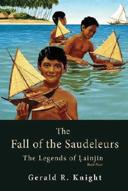
Knight, Gerald R. | Iguana Books (326 pp.)
$27.99 paper | June 1, 2023 | 9781771806350
A vengeful orphan seeks to rid his homeland of a cannibalistic despot in Knight’s historical novel, the final volume in a series.
Just off the island of Pohnpei rises the greatest architectural feat in all Micronesia: the “stone village” of Nahn Madol, a city of canals and artificial islets built of basalt crystals. For centuries, the city has been ruled by the Saudeleurs—dynastic kings of Pohnpei—but by the early 17th century, things have started to change for the worse. The reigning Saudeleur has just initiated a new law allowing cannibalism as a form of capital punishment. Ijokelekel, a fatherless boy raised to
believe he was sired by a thunder god, flees the island in a stolen boat following the murder of his priestess mother. He hopes to find the legendary Ļainjin, a foreigner who once visited the island, to convince him to come back and challenge the rule of the Saudeleur. He believes that having a divine father must mean that some great destiny is before him, even if he suffers from a general lack of experience. Ijokelekel survives storms, the open ocean, and the disputes of various island clans he meets along the way, eventually making it to Lae Atoll, where Ļainjin lives. He immediately falls in love with Ļainjin’s daughter, Kāmeto, and so he asks Ļainjin for two things: help in bringing down the Saudeleur, and Kāmeto’s hand in marriage. Ļainjin, for reasons he keeps to himself, refuses both of Ijokelekel’s requests, but when Ijokelekel and Kāmeto leave the island anyway, intent on launching a rebellion against the Saudeleur with other allies, Ļainjin has no choice but to follow along and prevent his child from getting killed in the fray. Though it may indeed be Ijokelekel’s destiny to change the course of his home island’s history, it may not be his destiny to survive the encounter.
Knight’s prose glitters with Micronesian words, each explained in the book’s comprehensive glossary. While the terminology and familial relationships are at first difficult to parse, they help the reader acclimate to the rhythms of the setting: “Ijokelekel and Kāmeto planned their adolescent destinies, and thus, they strode hand in hand up to her mother’s house as her brother-cousin gathered a group that first carried the kapwor shell with a pole and then carried the proas and beached them on the strand.”
The author isn’t afraid to make his readers work a little bit—seemingly 80 percent of the characters have names that start with the letter L—for the sake of achieving verisimilitude. As in the previous books of the series, the novel has an almost Homeric feel as it features small boats on long voyages, encounters with new peoples and customs, and stories of brutal battles and myths told at length around
campfires. Knight forsakes some of the urgency of modern storytelling to set the mood for this far-off world, but that is hardly a bad thing (by this point in the series, readers will have decided what they think of Knight’s storytelling style). The book makes for a satisfyingly epic capstone for an ambitious and highly immersive cycle of historical fiction.
A fitting conclusion to a series of historical novels set in pre-contact Micronesia.

Lansdell, C.B. | Coe Books (355 pp.) Sept. 5, 2023
SF meets horror in this novel about an unjust alien civilization. On the moon of Knyadrea, sentient life sprouts from the sea. The knyad start out as coral-like beings known as tidelings, eventually developing into an intelligent life form. It is not known how this process happened, although most believe they were simply created in the image of their god, Adecai. Their complex society is a stratified one, divided into clans. The Erudean Pentarchy comprises the five main clans, which select one leader to govern. On this world, two characters find their lives turned upside down. Oklas Sayve is a prominent, charismatic minister and inventor with a brilliant future. But his connection with an insurgency that aims to shed light on the dystopic nature of their society leads him into trouble with the authorities and to a terrifying reversal of fortune when he is caught. Prismer is an inspired sculptor whose nonconformity years before turned her into a maskad, a social outcast who is obliged to always wear a mask in public to hide her looks. The maskads’ nature is one of the Pentarchy’s bestkept secrets—and a way to maintain
conformity and order. Although Prismer’s and Oklas’ paths have crossed before, it is not until Oklas is horrifically punished for his crimes that the two become closer. “Every society has its secrets,” Oklas’ mentor had told him. “Uncover as many as you can, and no one can catch you off-guard.” This engrossing, well-paced SF tale deftly merges elements of body mutilation and dystopia to examine topics such as agency and autonomy, prejudice and tyranny, and power and dissension. Lansdell does an excellent job of slowly introducing readers to a new world and society that are incredibly alien and yet utterly familiar, particularly when the story explores problems caused by deeply entrenched social stratification. In this first installment of a promising series, the prose is cohesive and inviting, with a pair of likable protagonists who try to find their way through an unfair world without losing track of kindness and connection. An engaging, discomfiting, and thoughtful dystopian tale.

March, Josdarama | Illus. by K. Vulfolaic Varsity Aesthetics (155 pp.) | $19.99 paper
June 12, 2023 | 9798218226923
March’s novella, presented as an early 20th-century periodical, illuminates the origins of the wolf-men and werewomen living among humans.
It is the conceit of this work of fiction that, in 1906, publishers Octavius & Sons, Inc. released, in periodical form, the first installment in a planned series on lycanthropy. Only the first issue was printed, as the publishing company closed its doors shortly thereafter. The author sustains this premise by asserting that she herself is a Lupine (werewolf)— and the very writer of that Octavius & Sons magazine—who has amassed a
collection of folklore and fables that shed light on the ancient history of her kind (“Her award-winning works ‘The Anatomist’ and ‘Talons Out! A Play in Ten Acts’ have achieved widespread acclaim. Now, she brings the ancient lore of her mysterious species to a wider audience”). Lupines have existed almost as long as humans; both, she asserts, are the creations of Mother Luna. Many of the writings in this novella revolve around the Lupines’ migration: Devastating war forces them out of their “once mighty Dominion,” and they voyage west for years until they find peace and solitude, at least for a time. March includes fables and fairy stories as well, including “The Curious Tale of Little Red Raging Hood,” a blatant but gleeful play on the popular fairy tale. The collection’s highlight, and its longest story, is “The Monster, the Mayor and the Merchant,” which acts as a cautionary tale for all. A colossal bear makes its way into the city of Lünaborg and terrifies residents, despite its gentle nature. Handling this so-called monster-bear sends Lünaborg’s mayor and a newly arrived merchant into unexpected directions.
The book is skillfully styled, in terms of prose and structure, to resemble a publication more than a century old. The humor is pleasantly understated, as is the thinly veiled love/ hate relationship between March and the book’s (Lupine dialect) translator, J. H. Archibald. In one of his notes, Archibald questions to what extent March’s storytelling strays from tradition, and she sardonically responds: “I just scribble whatever nonsense my werewoman’s fancies happen to surface and append it to this crude folklore.” As this book is succinct, these stories often feel like mere snippets of considerably longer works; indeed, Archibald references one of
the Lupines’ “sprawling” sacred texts. While that may leave readers wanting more, there’s still plenty of material on the werewolves’ tribulations. They come across as relatable, as they have suffered murderous bigotry and must resist their very nature, including a seemingly insatiable appetite for flesh of the human variety. Perhaps the most discernible theme is the fear of the unknown; the startled reaction to the bear in Lünaborg stems solely from its size, and the mayor stokes citizens’ unease by claiming it’s a “foreign,” unpatriotic bear as local merchants exploit the giant beast’s notoriety. Illustrations invigorate the pages throughout, but Vulfolaic’s artwork in “Little Red Raging Hood” shines brightest: Black-and-white renderings of the cast and the ominous woods come alive with splashes or stark backdrops of brilliant red. A clever, dynamic, and remarkable take on werewolf lore.
Penswick, Dave | Page Publishing (220 pp.) | $19.95 paper | May 2, 2023 9798887938455
A struggling high school track coach is forced to confront his past when an old friend and rival reappears in his life in Penswick’s novel. When readers first meet Turner, he’s living with his longtime girlfriend, Kim, and sleepwalking through his job as a teacher and track coach at Galt Tech High School outside Toronto. Originally hired to teach math, he’s now been “sentenced to English” by his vindictive principal and is focused
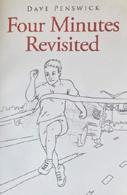
A clever, dynamic, and remarkable take on werewolf lore.
PRELUDES & APOCRYPHA: VOL. 1
on helping a talented track star, Donovan, break the record (set by a young Turner himself) at the upcoming Vintage Mile race. Turner’s past catches up to him when his former high school best friend, Lance, returns to Galt. Now a successful investment banker (in between jobs in the midst of the financial crisis), Lance dangles an “investment opportunity” in front of Kim, a real estate agent—an opportunity that may prove riskier than it first seems. Turner still resents Lance for winning the track scholarship that Turner had so desperately wanted back in high school before he blew out his knee during a race. As Lance begins joining Turner at track practice, the old rivalry instincts kick in as the two men compete for something more personal. But a tragic accident forces Turner to finally reconcile his past regrets, even as his relationship with Kim begins breaking down amidst their inability to conceive and he learns that Donovan has been silently struggling with an increasingly volatile home life. Turner decides that the only way for him to truly let go of his past demons is to compete one more time in the Vintage Mile.
Penswick excels at conveying Turner’s inner monologues and musings (of which there are many) with an endearing warmth that readers will likely sympathize with, even as they disagree with some of his choices. Turner’s long held grudge—believing that Lance “stole” his scholarship from him (although Turner’s injury cost him the prize)—can prove particularly frustrating, but it accurately represents a common failing of many former athletes (and people in general) who blame others for their own lost opportunities. The novel’s long and winding sentences demand readers’ utmost attention, but just when the thread of “he said,” “she said” extends until it’s difficult to remember who’s speaking in the first place, the author hits readers with startlingly astute observations of human nature: “All that time I’d been in Manhattan because it’s the centre of everything. But lately I’ve started thinking it might be like the eye of the storm, where nothing happens.
Nothing real. Maybe real life happens out on the periphery, where there’s all the wind and mess.” Penswick explores not only the competitive world of high school sports, but also larger themes of physical abuse, infertility, infidelity, and trauma. While the love triangle aspect of the plot leaves something to be desired (mainly due to a conclusion that is likely to strike readers as a bit too tidy), it’s Turner’s struggle to move on from his past—and the insidious hold it still has on his present—that ultimately makes this such an engaging read. Fans of both deep character studies and sports fiction will find much to enjoy.
An insightful (if sometimes meandering) look at how the ripples of the past can unwittingly shape our future.
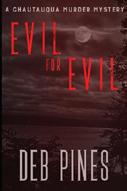
Pines, Deb | Self (236 pp.) | $19.95 paper June 5, 2023 | 9798396720060
Murder comes to upstate New York’s peaceful Chautauqua Institution in Pines’ mystery novel.
Mimi Goldman, Chautauquan Daily reporter and celebrated local amateur sleuth, helps the Chautauqua classic book club host, Harriet Diner, clean up after a lively meeting. At Harriet’s request, Mimi goes upstairs to speak with the young, beautiful Emmy Diner, the recently widowed wife of Harriet’s elder son, Roger. Much to her horror, Mimi discovers Emmy lying on her bed—dead. Mimi notices a small spot of blood on Emmy’s arm, raising the possibility of murder: It’s time for the author’s dynamic duo—60-something Mimi and her 90-year-old sidekick, Sylvia Pritchard—to don their detective caps. Before her death, Emmy hosted a popular podcast, Murders in Our Backyard, in which she hunted down clues to cold cases, with special focus on the 1996 disappearance of Jenny
Esposito, a young college student who went missing after a dorm party. Is the guilty party trying to sabotage Emmy’s Esposito investigation? Or is there another secret someone is protecting? As it turns out, almost everybody involved is hiding something, and there are plenty of potential suspects for readers to ponder. This is Pines’ 10th volume in her Chautauqua Mystery series, and she expertly sets the contrast between the Institution’s serene, artistic, and intellectual aura against the brutality of murder, displaying a well-honed ironic touch. Although the investigation unfolds at a leisurely pace, without much tension, the plotline is intriguing, with enough twists (including a final big surprise) to keep things moving. The author captures enough of the everyday Chautauqua atmosphere, with detours through the lectures, concerts, and religious gatherings to make even newcomers to the series feel right at home at the retreat (“Around Mimi, some kids were enjoying ice cream cones. Others were chasing each other around the main fountain’s rim or splashing in the water spraying into its basin from the mouths of ceramic fish”). Sharply limned dialogue continues to build the series’ well-developed characters—plus, there are those reliably delicious cocktails whipped up by Mimi’s husband, Walt.
Another enjoyable beach read from an author who knows her turf.
Poitevin, Pedro | Penteract Press (84 pp.) $14.00 paper | Aug. 12, 2023

Poitevin’s first English-language poetry collection explores such diverse matters as life in New England, academia, and OpenAI/GPT-4.
“October
leaves / pile up like scattered drafts of some design” the author writes in “Raking” as fall sets in, “aching on this
byway to December...” Even so, he still has more in life to conquer, finishing the job with “my feet still two good inches off the ground.” The moodiness of academic life intrudes, as Poitevin, a mathematics professor, is annoyed by a shared office, pesky students, and Red Sox chatter in “Nostalgia for Quieter Times”; he longs for the halcyon days of grad school at the University of Illinois: “I miss your silence as mine rages, / beloved Alma Mater.” The poet writes with playful curiosity about philosophy and its relationship to his discipline, responding to Borges in “Divertimentum Orinthologicum” (“I start to prove that He does not exist, / but N being hyperfinite, I desist”). Hyperlocal concerns meet the great beyond in “Take-Out,” in which a mistaken employee thinks she has seen the speaker’s late father order lemongrass tofu (“I pondered / that lemony but sweet juxtaposition: / myself and my dead father’s apparition”). In “Beneath the Bedroom Skylight” Poitevin writes of looking to the heavens with his partner: “We peek / beyond Andromeda and dream a wolf / gazes at us with quasar-eyes and loops…” The poet writes beautifully of his Marblehead, Massachusetts stomping grounds, and his verses about landscapes and family churn with the energy of an unrelentingly curious and feeling soul. By contrast, he ponders artificial intelligence in “GPT-4 Responds to a Detractor,” in which the AI program derides the “arctic soul” of its human critic. Technical poetic innovation animates this collection; one poem is made up entirely of three-letter airport codes, another is about a cat genome, and a group of palindromes provides a brief, passing fancy. The careful way that he pulls meaning from the place
he is in, and the family he has there, is in evidence throughout and makes this a cohesive and inspiring collection. An impressive, eye-catching poetry collection unafraid to experiment and take risks.
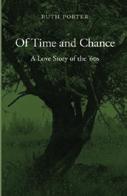
A relationship between a college girl staying on a Vermont farm and a local boy poised to serve in the Vietnam War has life-altering consequences in Porter’s novel.
On June 5, 1967, Andy Keyes is intent on milking a cow on his family’s farm in West Severance, Vermont. He turns to face “the most beautiful girl he had ever seen” standing in the doorway. She wants to buy milk; he tells her that she can purchase bottled milk up at the farmhouse. The girl, perhaps flirting, asks, “Will you teach me how to milk?” but then flees. Soon, Andy and the girl meet again, and the novel unfolds to convey their growing romance as seen through the perspectives of the young lovers (and that of Andy’s grandmother, Nellie). Andy prepares to graduate from high school and considers enlisting to fight in Vietnam; he will soon get drafted anyway, when he turns 18. The girl (her birth name is Cynthia but she calls herself Crystal) is visiting for the summer at a nearby farm owned by her older sister and
husband, who have a new baby. She waits, ambivalently, to begin her next year of college. Crystal almost runs off with a guitar-strumming male guest staying at her sister’s commune-like farm to experience the Summer of Love in San Francisco. However, Andy (and the camp he builds for the couple in the woods to give them some privacy) proves to be the greater attraction. The young couple struggle with their individual concerns and differing views; by summer’s end, Andy makes a dramatic life decision that most, if not all, of the novel’s characters ultimately understand and support.
The Vermont-based author has crafted a compelling and nuanced novel about an impactful, transitional summer for characters both young and old. She effectively sketches the uncertain aspects of the young lovers’ relationship, including several scenes of the couple just missing each other at their meet-up camp and experiencing doubts and inner turmoil. Porter also deftly weaves in a subplot regarding the wise, weary, and still hard-working Nellie’s shifting perspective about the war and growing fears about her declining health and imminent mortality. The novel’s New England rural setting is also well-captured: Crystal experiences a “magical walk in the forest at night” and learns that making hay bales, milking a cow, and camp cooking are not as simple and easy as they initially seem. Porter builds enjoyable, suspense-building tension into the narrative: Andy, sneaking off to his camp, dangerously intersects with his pro-war father’s mission to shoot deer coming up to the farm and his charming, snooping younger sister’s eagerness to learn how to shoot as well. Andy’s major move at the end of the novel comes as a bit of a surprise, but Porter provides sufficient underpinning for it with a shock-to-thesystem episode at a funeral and Andy’s persistent expressions of yearning and love for Crystal. While the hazy outlook for this romance’s future by novel’s end may disappoint some, the conclusion lends the novel more power and verisimilitude in its presentation of a memorable, if fleeting, moment in time.
A beautifully realized depiction of young love, rural life, and the ideological struggles of the era.
OF TIME AND CHANCE
A beautifully realized depiction of young love, rural life, and the ideological struggles of the era.

Powell, Juliette & Art Kleiner | BerrettKoehler Publishers (240 pp.) | $22.95 paper Aug. 15, 2023 | 9781523004195
Powell and Kleiner reflect on the moral dilemmas posed by the rise of artificial intelligence in this nonfiction work.
The authors (of AI advisory firm Kleiner Powell International) observe that the recent proliferation of popular apps driven by artificial intelligence (AI), like ChatGPT, have provoked urgent debate about the moral ramifications of new AI technology. They assert that these issues will only become more important and complex as more people take up residence in a “data-centric world,” and that they require systematic frameworks to understand and resolve them. Powell and Kleiner focus on what they call “Triple-A” systems, which are “algorithmic, autonomous, and automated,” and, as “sociotechnical” systems, “depend just as much on human and social elements as on the technology.” To understand these systems, the authors convincingly argue for the integration of four very different and often conflicting perspectives: that of the engineer, who tends to focus on customer satisfaction and solutions to highly technical problems; that of the social justice activist, concerned with morally satisfying all stakeholders, especially the disenfranchised; that of the corporate leader, narrowly interested in the accumulation of profit; and that of the governmental leader, driven by the satisfaction of national interests (as well as partisan political gain). Powell and Kleiner take the reader on an edifying tour of seven key principles, including risk, transparency, and
the protection of personal data rights. They combine scientific rigor with philosophic depth to probe the issue at the heart of the AI debate: the human impact of a technology increasingly liberated from human superintendence. “The core of the AI dilemma is not the ability of machines to learn. It is the ability of humans to learn to manage the growing abilities of these new systems. To gain real control, instead of illusory control, we need to raise our own awareness and ability first.” For the reader in search of a single-volume introduction to these vexing issues, one could do no better.
A fascinating and meticulous consideration of one of the central issues of our time.

Reed, Thomas | Beaufort Books (368 pp.) $17.95 paper | Sept. 19, 2023 9780825310263
Family members learn more about themselves and each other on a global journey in Reed’s novel. At the heart of this moving work is a family matriarch, 75-year-old Lucinda Billings Maynard “Cinny” Posey. Though she is loath to admit it, Cinny has begun a slow slide into Parkinson’s disease. She’s hellbent against the concept of assisted living but is giving into assisted dying: She convinces her resistant adult children, Grace and Brian, to help her get moved into hospice care, where her plan is to starve herself to death.
During her lengthy decline, Cinny scrawls page after page, finally stuffing these papers into seven envelopes and giving them to Grace as death descends. Her wish is to have her family take a trip around the world to scatter her ashes and those of her late English professor husband, Frank. Embarking on this journey are Grace, her husband, Jack, and their daughter, 24-year-old Chelsea; they are joined by bisexual Brian, his new bride, Ella, and her 16-year-old daughter, Sage. At each stop along the way, Cinny’s notes shed clarity on her relationship with Frank, helping Grace, Brian, and the rest to better understand their family’s dynamic. By the time the whirlwind pilgrimage ends, they are all more secure in their relationships with each other. The author successfully mines his personal history, including his background in academics and international travel, lending authenticity to this engaging narrative. The story is fast-paced, giving the reader the feel of the family’s rapid travel through Asia and Europe over three short weeks. The novel truly thrives thanks to its cast, beginning with Cinny, a child of Woodstock and a character with a capital C (Grace marvels, “She looks ten years older, but there’s so much of the old Mom there. Laughing. Joking. Giving me shit. I don’t have a clue how she manages to keep it up”) whose dying wish is to improve the lives of her twins, Grace and Brian, who have been clashing since sharing the womb. The result is a bracing novel in which an extended family actually returns re-energized from an exhausting voyage. This upbeat story triumphs thanks to its veracity and memorable characters.
This upbeat story triumphs thanks to its veracity and memorable characters.
POCKETFUL OF POSEYS
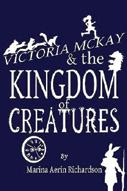
Richardson, Marina Aerin | Many Realms Media (274 pp.) | $14.99 paper | July 7, 2023
9798889929864
Richardson tells a tale of a youngster in a realm of magical creatures in this debut children’s fantasy novel.
Victoria McKay is a happy 4-yearold only child until her sister, Ashley, is born, which changes her world. On the way to the hospital to meet her new sibling, Victoria hears wind chimes and sees an unusual creature. She tries to follow it, but her father quickly puts her in a taxi. At the hospital, she hears the chimes again. The creature reappears and slips Victoria an odorous piece of paper that reads, in part: “We are unknown to mankind, except for a lucky few who have been granted a wish. You are now one of those lucky people.” It’s from something called the High Magical Council. Years later, Victoria, now 11, is angry at her sister for breaking a beloved picture frame, thus ruining an image of her adored grandfather. She shouts, “I wish you’d never been born!”—and the wish is mysteriously granted: Ashley ceases to exist, and only Victoria knows that Ashley ever existed. Feeling guilty, she searches for information on the High Magical Council until she finds The Tome of Hidden Creatures, which describes all the creatures of the magical world, including a “lawfur,” the wish giver. Determined to undo her wish, Victoria figures out how to get to Scotland and the Black Wood of
Rannoch, where her adventures begin with the help of Emma, a strange furry creature called a cardenere. Richardson crafts a vivid, detailed and creative imaginary world in these pages: “Buildings large and small either jutted into the air or clung to the ground…Some were built from mildly odd metals painted in eye-dazzling colours, while others looked to be made of mushroom or tree bark.” Richardson uses a “Dear Reader” framing device as an effective tool to have Victoria share her personal revelations, which further draws the reader into the story. One lesson they learn is that sibling rivals still have great love for each other. The uncredited illustrations are creative black-and-white sketches of imaginary creatures that support the text nicely. A cliffhanger ending will have readers looking for Richardson’s next book. A worthy and engaging fantasy tale.
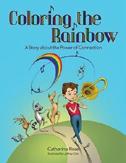
Rose, Catherine | Illus. by Jeffrey Dale Beaver’s Pond Press (32 pp.) | $24.95 Aug. 8, 2023 | 9781643436371
An old man asks a little boy to imagine kids creating the colors of the rainbow in Rose’s picture book. The pair sit together on a park bench under a tree, and the man tells a story about another boy and his trombone. The child happily plays alone, but one day, a sweet, high-pitched sound wafts through his window, melding with his low notes
and creating a new sound. The boy, inspired, takes his trombone out into his brownstone-lined neighborhood. First, he meets a girl with a piccolo. As they play music together, neighborhood children join in with a bagpipe, French horns, guitars, and a clarinet. Dale’s colorful illustrations show diverse kids with various skin tones playing in harmony, including a girl in a wheelchair with a Korean janggu drum. As they enter a park, their notes magically create different colored ribbons that rise to form a rainbow. The narration is arranged in evenly metered ABCB rhyming quatrains, and the singsong effect evokes the story’s musical theme. Rose introduces the metaphor of different instruments’ sounds representing each child’s voice early on: “This beautiful voice, / a new instrument’s sound, / moved the boy to declare: / ‘Every voice must be found!’” However, the central story stands well on its own without the framing of the old man’s retelling. A well-told tale of the magic of making music.
Roth, Michael | Illus. by Zoe Ranucci
Orc Bard Press (32 pp.) | $16.95
April 14, 2023 | 9798987111406
River the dog becomes a big sister, but siblinghood is not all it’s cracked up to be in Roth’s picture book.
River loves to play with her caretakers, but humans don’t run on a dog’s schedule; she gets lonely sometimes when the two of them are busy. “Mom” and “Dad” come up with a solution: acquiring a new puppy, Willow, to be River’s sister. River is excited—that is, until she sees Willow eating all the food and tearing up toys that don’t belong to her. River decides a better option is befriending one of the other animals in the neighborhood, like Basanti, the bunny, Kameko, the cat, or even Rahma, the llama. The author offers emerging

An educator-friendly picture book as playful and loving as the dogs it portrays.
RIVER’S NEW FRIEND
readers a fun and dynamic introduction to accepting a new sibling into the family in this debut picture book. Roth’s use of strong verbs, like, “Run! Chase! Pounce!” and “Hop! Hop! Hide!” brings energy to the story and provides a good entry point for educators constructing lessons on parts of speech. Ranucci’s full-color illustrations are richly expressive, with River’s emotions (including sadness and anger) coming through clearly with a touch of humor (especially when River imagines Willow to be a monster). An educator-friendly picture book as playful and loving as the dogs it portrays.
Kirkus Star
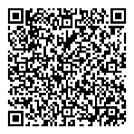

Sanders, Shelly | HarperCollins (400 pp.) $26.99 | May 3, 2022 | 9780063247895
A Jewish family torn apart by Nazi and Soviet persecution struggles to reconnect in this historical novel. Sanders’ tale braids together two different timelines. One, set in the mid-1970s, follows Sarah Byrne, a 24-year-old market researcher in Chicago who wants to find out more information about her mother Ilana’s mysterious past after her sudden death. To that end, Sarah approaches her maternal grandmother, Miriam—a prickly, suspicious elderly woman who initially refuses to talk to her, but grudgingly relents as Sarah plies her with home-cooked meals. Intertwining chapters follow the ordeal of Miriam and her Jewish family—husband Max, a prosperous dentist; young Ilana; and toddler son, Monya—in the Latvian capital of Riga during World War II. When the Soviets invade Latvia in 1940, the family’s house, money, and belongings are confiscated; things worsen a year later, when the Germans conquer
the country. After a horrific tragedy, Miriam makes the wrenching decision to give Ilana and Monya away to her Lutheran maid, Gutte, who will conceal their Jewish identities and raise them as gentiles. Miriam endures intense horrors during the Holocaust, surviving due to her own grit, luck, and the occasional kindness of strangers. In the ’70s timeline, Sarah travels to the Soviet republic of Latvia to try to track down a family member; she has an unlikely romance but also experiences totalitarian terror herself when the KGB targets her. Sanders’ novel vividly recreates the nerve-wracking fear and carnage of wartime Riga, as well as the city’s feeling of grim paranoia during the late Soviet period. Her evocative prose reveals nuances of character in mundane domestic details (“Her grandmother dug through the meat loaf with her fork as if she were looking for buried treasure, or poison”) and bears witness to atrocities in a manner that’s all the more moving for its restraint and realism, as in a passage set just before a synagogue is burned: “The rabbi…began chanting the Shema in Hebrew, traditional last words for Jews, in a loud, unwavering voice. He walked into the synagogue. The doors clanged shut behind him.” The result is a searching exploration of how much is lost during tragedies, even by those who live on. A gripping historical saga that skillfully addresses the trauma of the Holocaust.
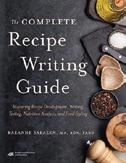
Sarazen, Raeanne | Academy of Nutrition and Dietetics (400 pp.) | $49.99 paper Aug. 31, 2023 | 9780880912006
Sarazen teaches readers to craft perfect recipes in this debut food guide.
There’s a lot more to creating a recipe than jotting a list of ingredients onto a notecard—even if that’s the form in which many of us encountered recipes for the first time. The author’s curiosity about recipes began in the kitchen of her grandmother, Sonia: “I believe that recipes (like my grandmother’s) are meant to be shared,” she writes in her introduction. “For recipes to live on, they must be accurately recorded.” With this book, Sarazen shepherds readers through the recipe-making process, from the earliest stages of development all the way to publishing them for others to use. She discusses how considerations like flavor combinations, aroma, and mouthfeel fit into a successful recipe, as well as issues of nutrition, allergens, and the requirements of various diets. She also shows the reader how to write and edit their recipes, both for ease of use and for descriptive precision (including the types of recipe titles that should be avoided). Sarazen even offers tips on how to style and photograph food, and guidance on making videos to help illustrate the cooking process. The book is, essentially, a recipe for recipes, and as such it embodies all the tenets that
A polished, insightful how-to book for cooks at all levels.
THE COMPLETE RECIPE WRITING GUIDEFor more Indie content, visit Kirkus online.
Sarazen preaches: It’s intuitively (and tastefully) organized, with crystal-clear prose and easy-to-follow how-tos for every possible situation. Here the author walks readers through the process of having their recipes sent to a lab for nutritional analysis: “Each laboratory has its own packing and shipping requirements, but in general, plan to ship the samples overnight or next day in the condition in which they must be to remain edible.” This book will be most helpful for bloggers or food influencers looking to professionalize their recipe game, but anyone interested in setting their recipes down on paper will learn plenty.
A polished, insightful how-to book for cooks at all levels.
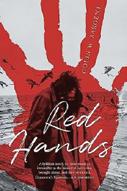
Sargent, Colin W | Barbican Press (312 pp.)
$16.99 paper | Feb. 14, 2023
9781909954397

Sargent’s novel is based upon the life of Iordana
(Dana)
Borila Ceausescu,daughter-in-law of Romanian dictator Nicolae Ceausescu.
Written as a fictionalized memoir composed in the voice of Dana Ceausescu, this narrative is based upon Sargent’s interviews with the beleaguered ex-wife of Valentin Ceausescu, scion of the family that ruled Romania from the late 1960s through the 1980s. The interviews took place in Maine, where Dana and her son, Dani, lived in hiding after Ceausescu was overthrown and executed in the violent revolution of 1989. Born and raised in Bucharest, Dana is the daughter of devoted communists—her father is a high official in the Central Committee, and her mother is a respected newspaper journalist. As such, the teenager has enjoyed a life of privilege. Her parents’ fortunes begin a dramatic decline when Nicolae Ceausescu seizes control of the Central Committee in 1965. In that same year,
Dana meets and begins dating Nicolae’s son, Valentin Ceausescu, much to the displeasure of both families. The couple marries in 1970, and Dana acquires a mother-in-law, Elena, who despises her (“Elena, through her network of Central Committee wives, began a disinformation campaign filled with rumor and innuendo about me that flashed all over the city”). Meanwhile, Nicolae becomes a media darling during the early years of his reign, turning to the West for loans to finance his plans for industrializing Romania (much of this money finds its way into the Ceausescu private coffers). Eventually, crippling debt plunges the country into chaos. Sargent’s novel is both a personal story of deep romantic love and a terrifying historical lesson about life in a police state helmed by a ruthless, cult-of-personality dictator. Always considered an outsider, Dana is nonetheless privy to the Ceausescu family’s extravagances and its unspeakable cruelty. Dozens of daily-life vignettes effectively capture Dana’s moments of joy and heartbreak, and the pervasive fear that extends as the scarcity of food, electricity, and heat grips the country. There’s even a breathless car chase across the border, with celebrity race car driver Catalin Tutunaru at the wheel. Poignant, frightening, packed with historical nuggets—a cautionary tale for contemporary times.
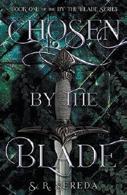
Sereda, S.R. | FriesenPress (282 pp.) $23.99 paper | June 8, 2023 9781039177895
In this fantasy series opener, a student who seeks a scholarly life gets chosen for a dangerous mission.
Orion, 17, has studied at the Academy since he was a child and lost his parents. His best friend, Trey, is training to be a Kunsa, a guardian; his oldest pal, Arianna, is planning to be a priest; and
Orion is preparing to be a “Chronicler,” someone who studies everything in the world. At the end of their time at the Academy, all of the students must try to pull a sword from an obelisk. A victorious student must leave on a quest for the False One. The False One tried to usurp the True God many centuries ago in an epic war and now it is up to the “Chosen One” to vanquish him. All of those selected have failed, and each time, the blade reappears in the stone, waiting for the next warrior. Everyone is surprised when Orion pulls the sword out and he is doubtful of the quest’s purpose as well as scared of dying. As he continues down the path the sword shows him, he enters a forest like the one his parents were killed in. While facing peril, he is rescued by a spirited young woman named Cassi. She’s lived in the forest her whole life but dreams of something more thrilling to fill her days. Now, she wants to join Orion, and he is happy to have the company, but his concerns about the False One make him worry for her safety. Sereda is a masterful storyteller who has crafted an exciting world with depth and complexity. The milieus of the Academy and the farms, forests, and cities beyond are captivating and create wonderful settings for Orion’s intriguing journey. Orion is a striking hero who is relatable in his self-doubt and fear of looming dangers (“He certainly did not feel honored to be chosen. He wondered if anyone else had felt like he did about being ‘the Chosen One.’ Had any of the previous Questers wished they could just put the sword back and pretend this never happened?”). This is a thoroughly enjoyable fantasy adventure with a gut-punch of an ending that will satisfy genre fans.
A fun, rousing quest tale with a compelling hero.
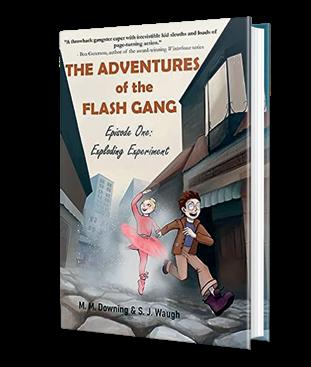
 By Scott Sigler
By Scott Sigler
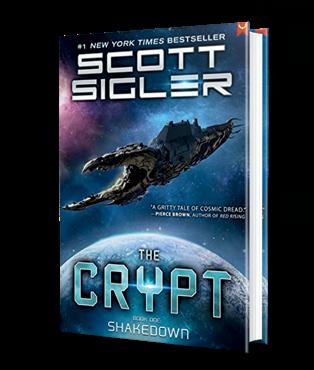 By
By
A work that thoughtfully examines a child’s encounter with the complex natures of people and other creatures. 3


A clear and passionately delivered Christian call to be “God’s true image bearers.”
 By
By

